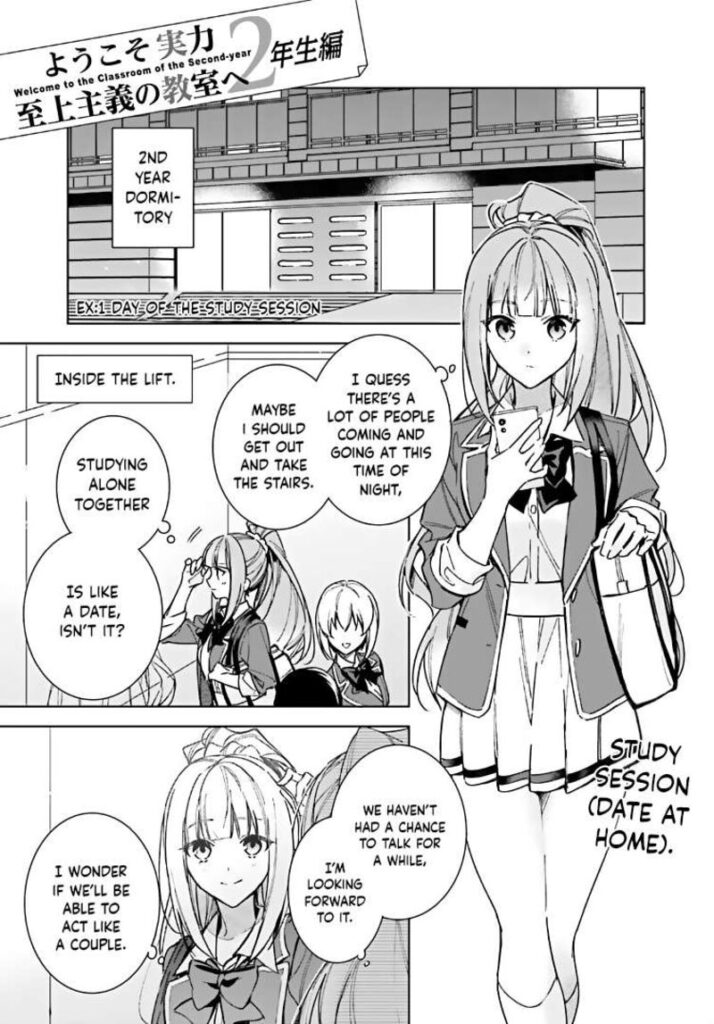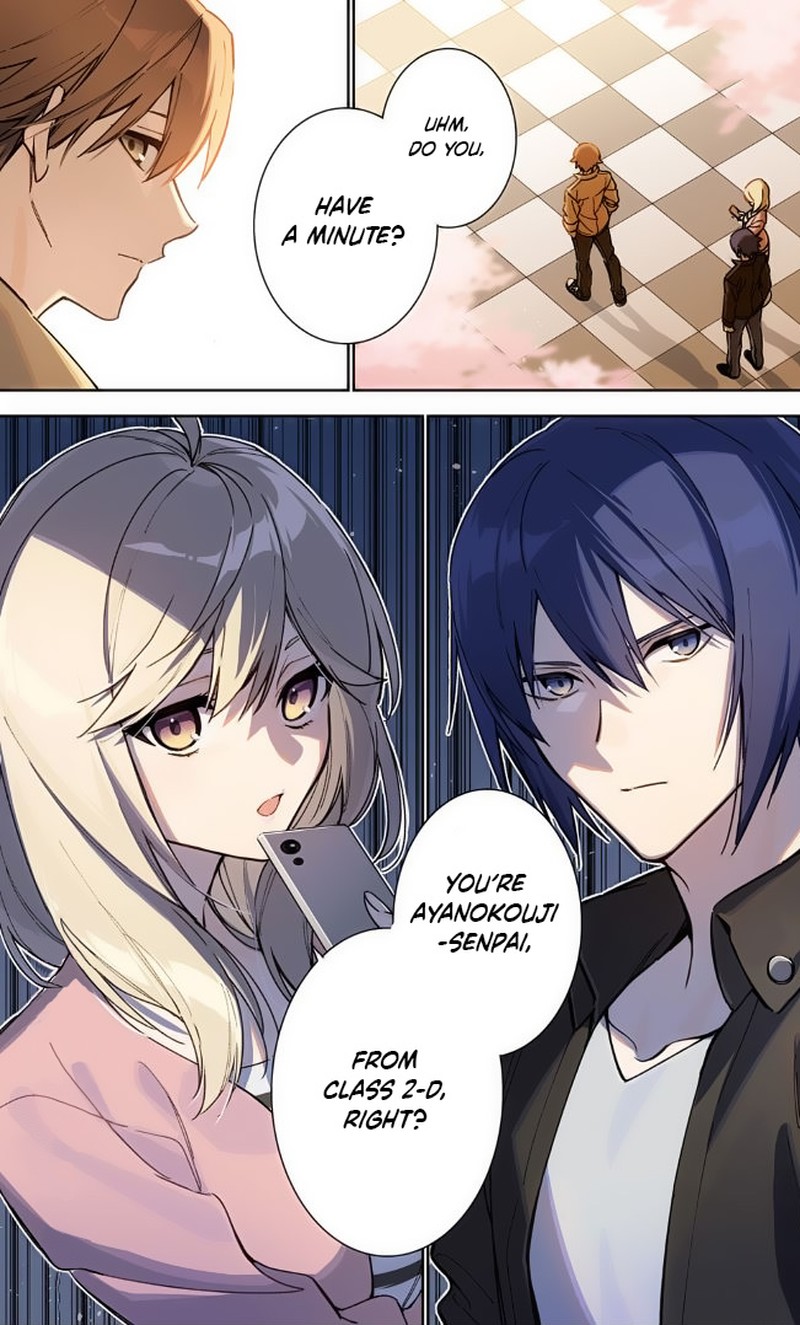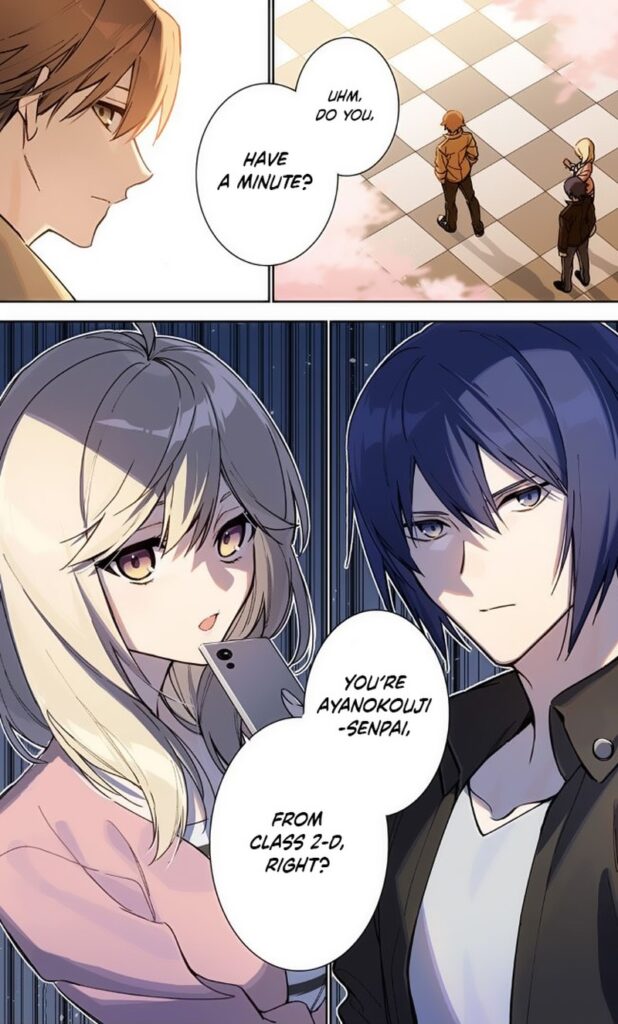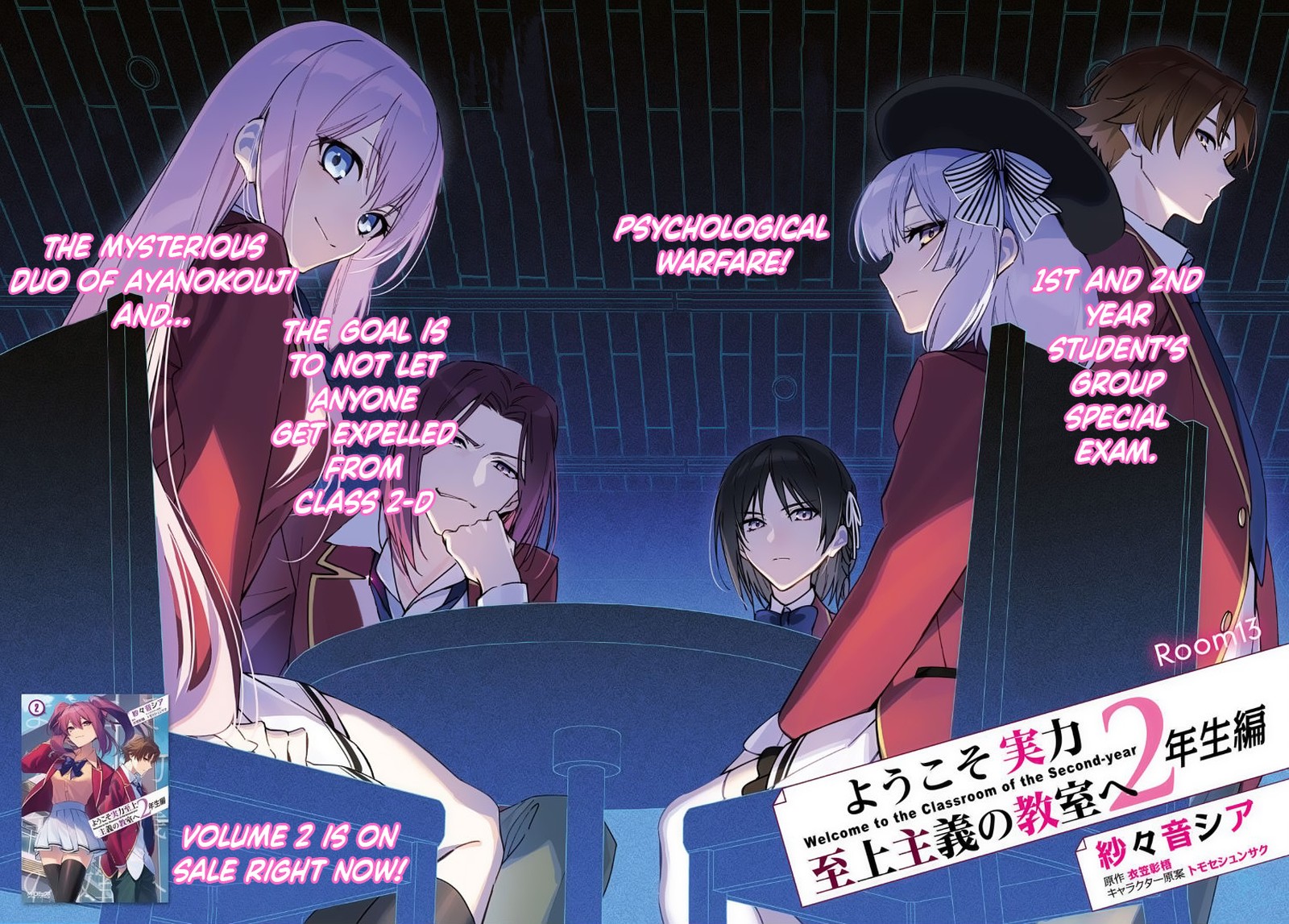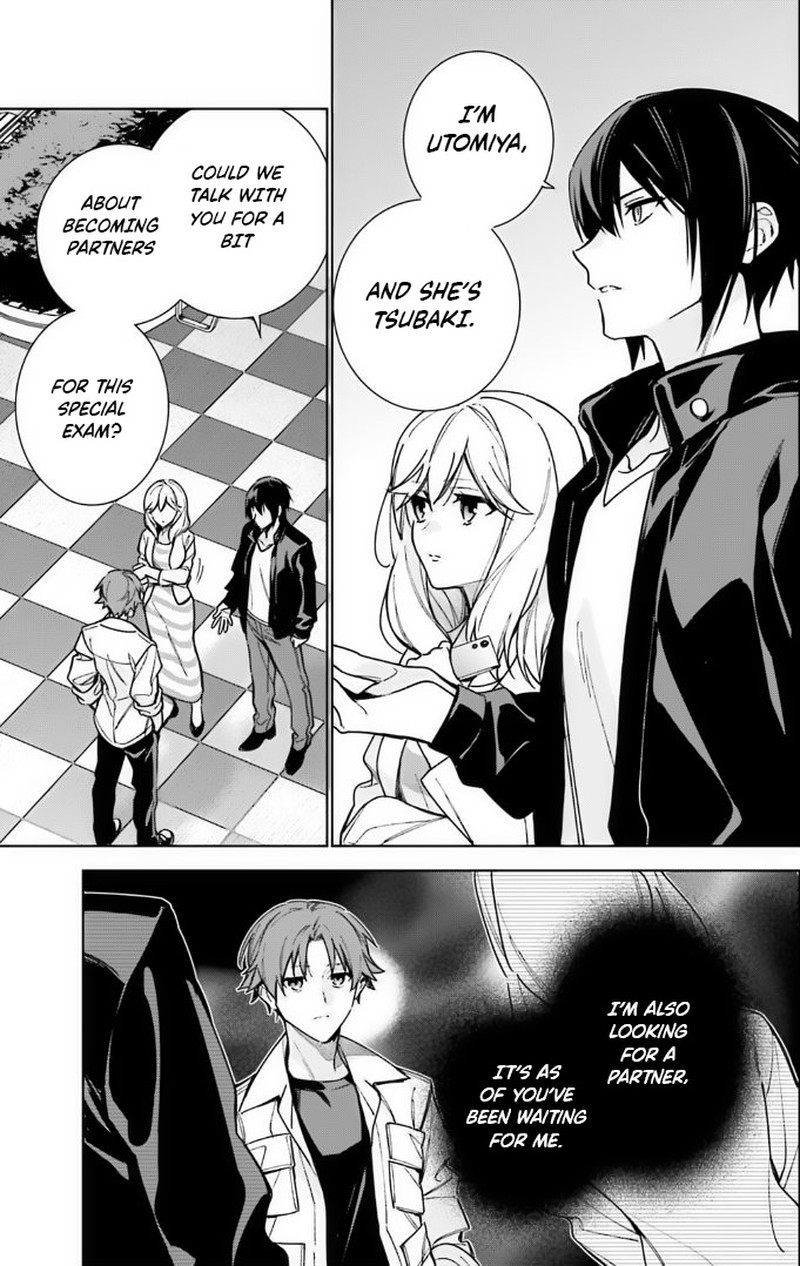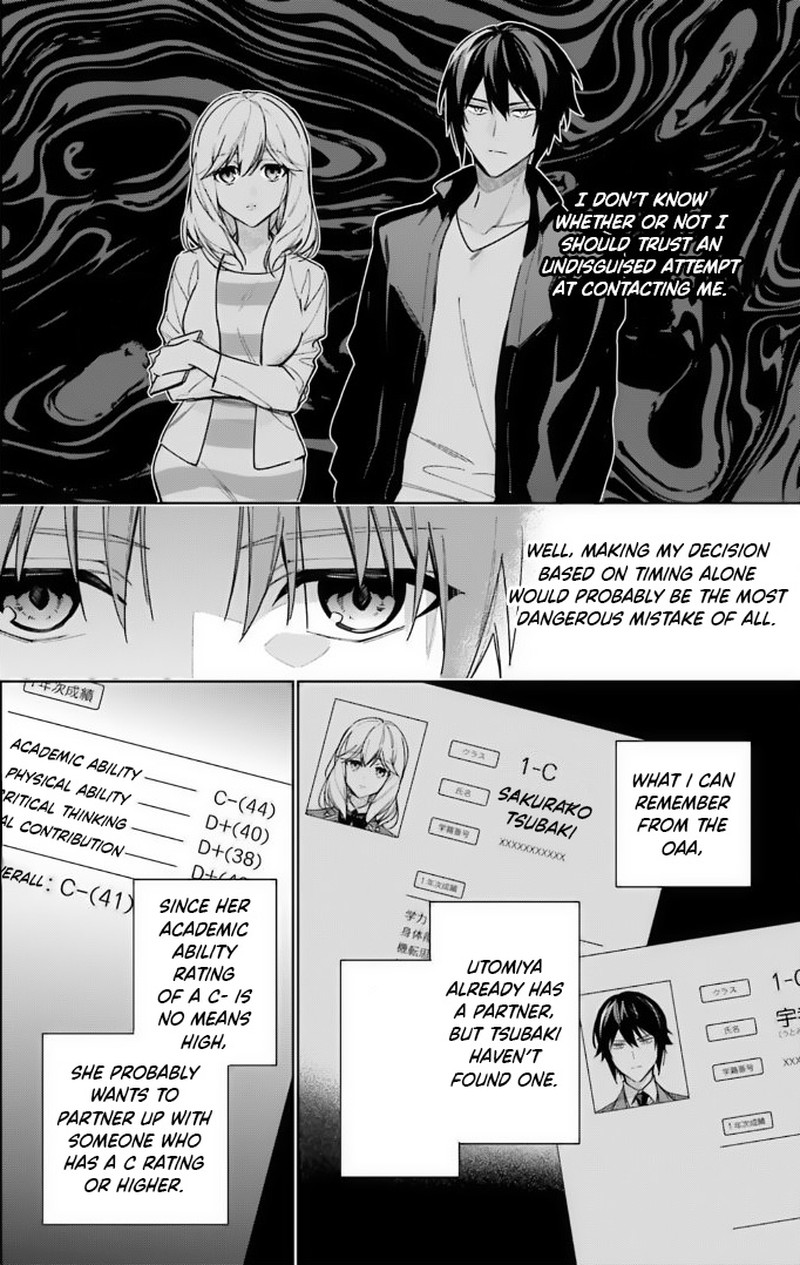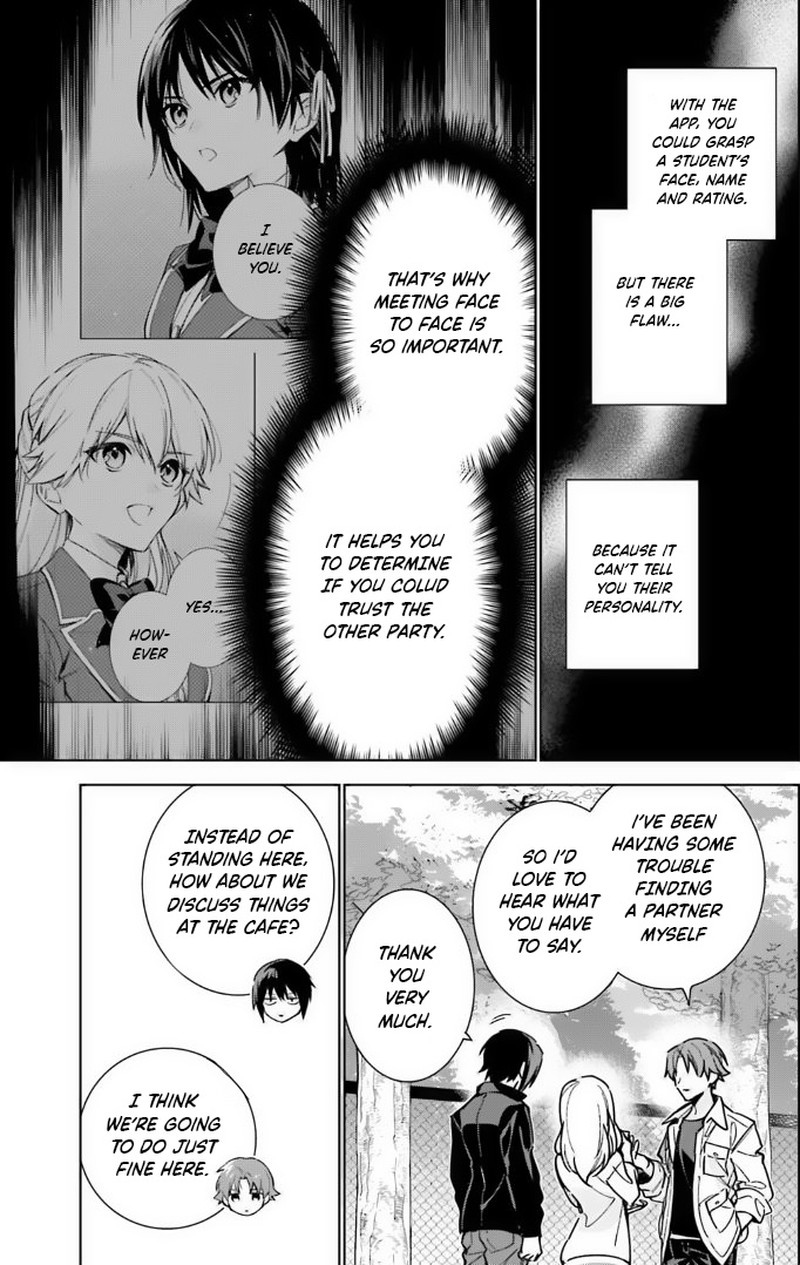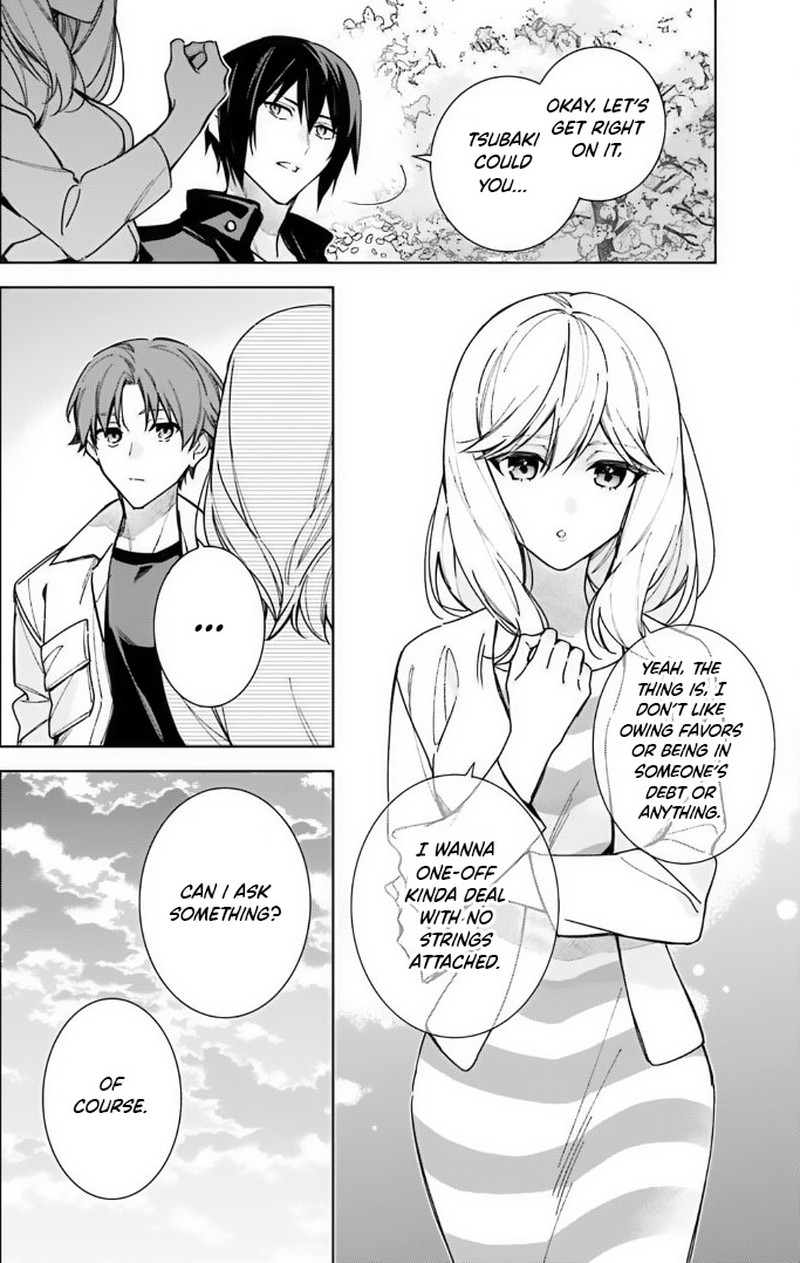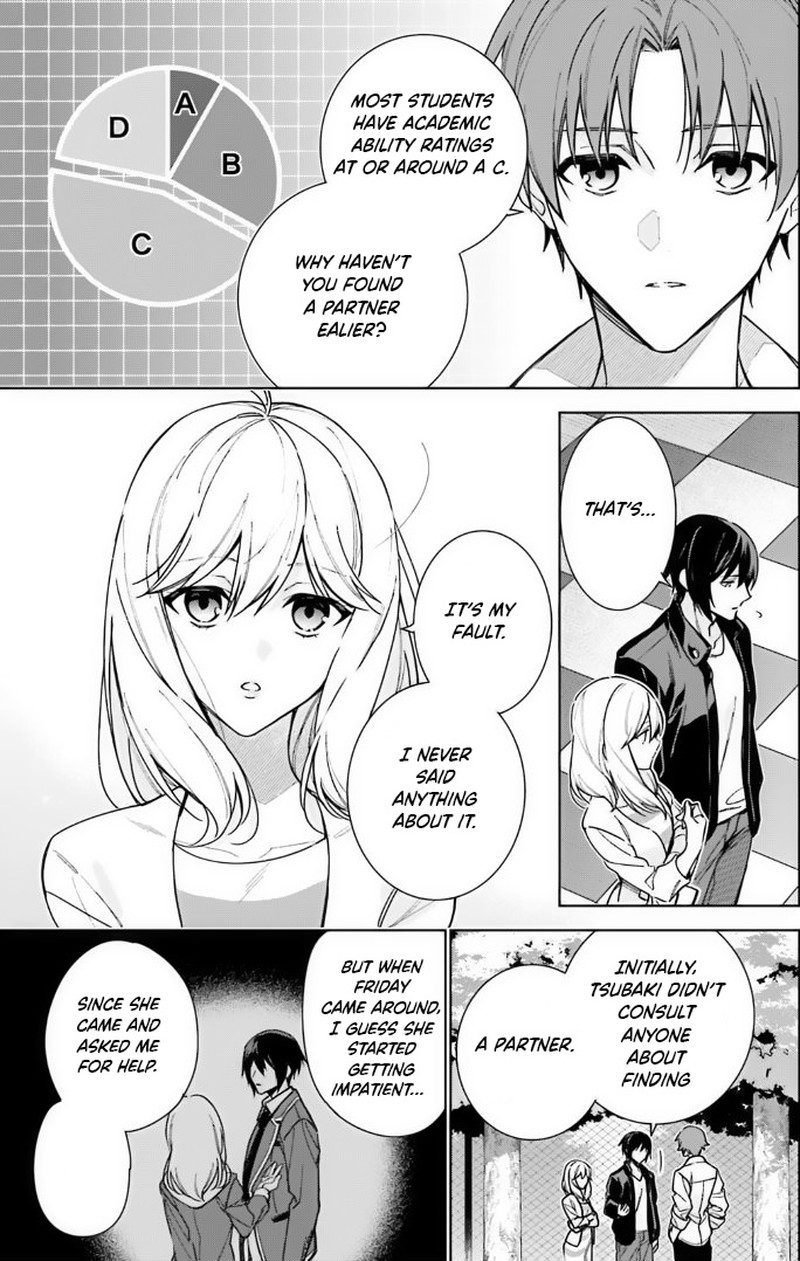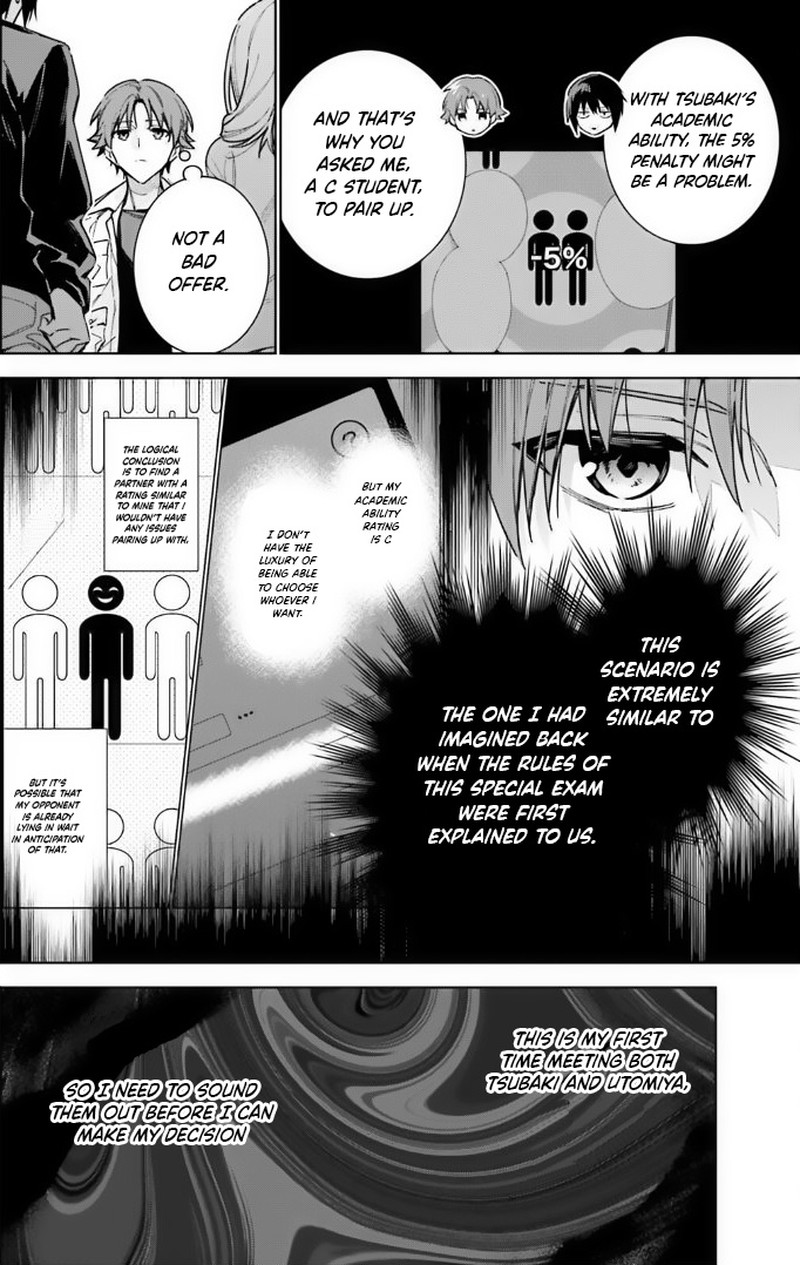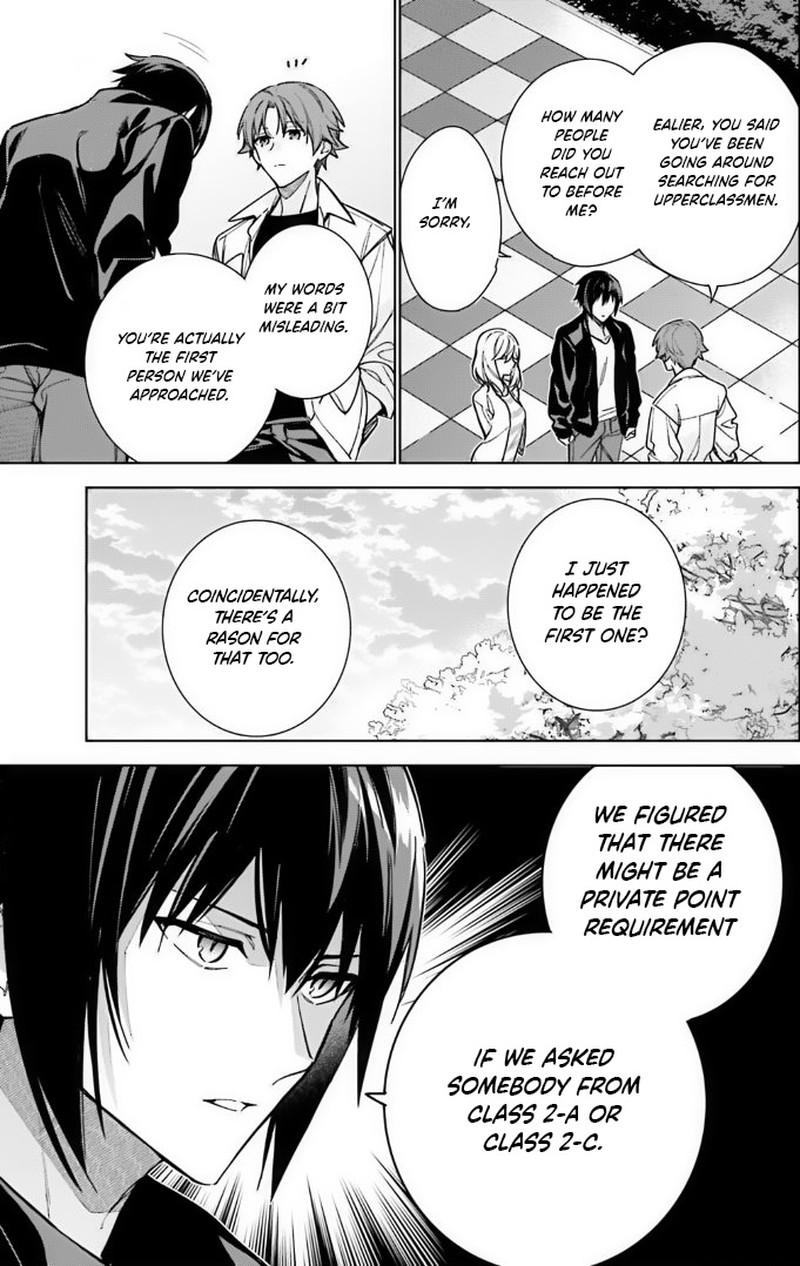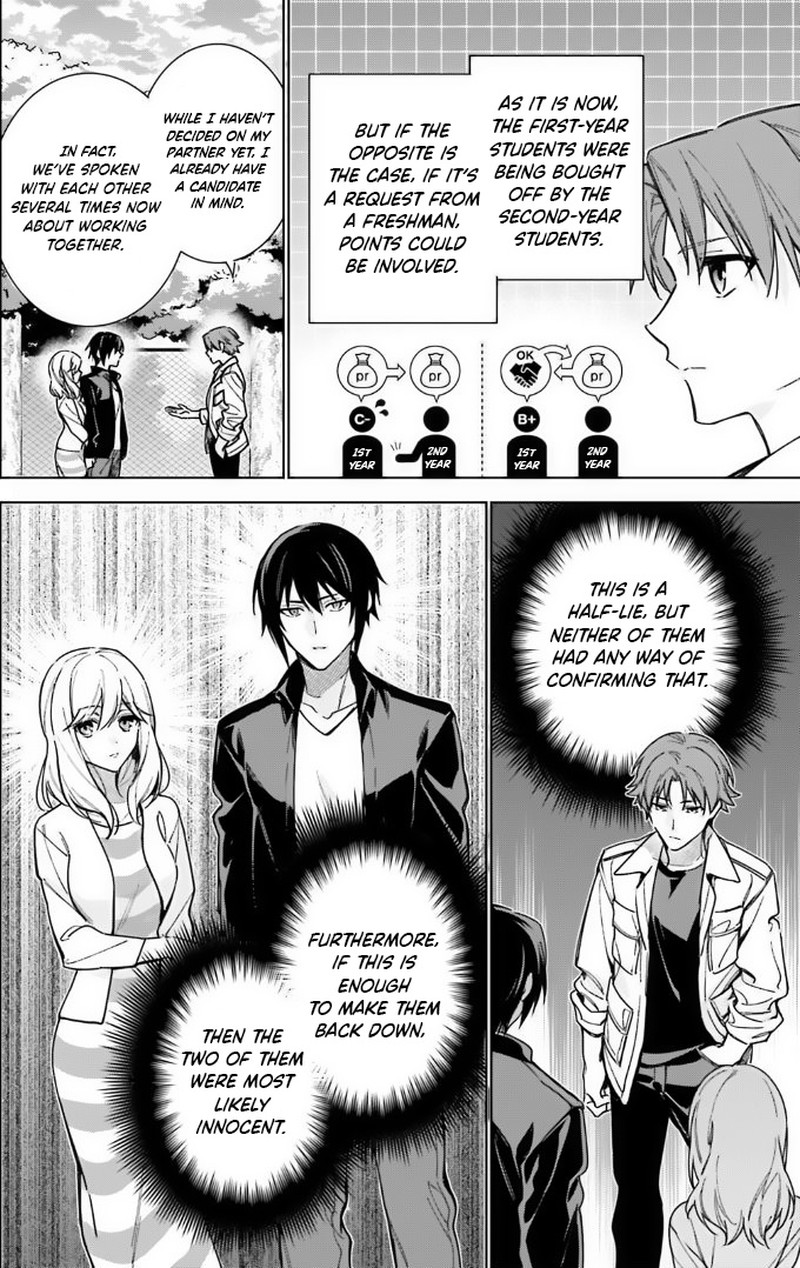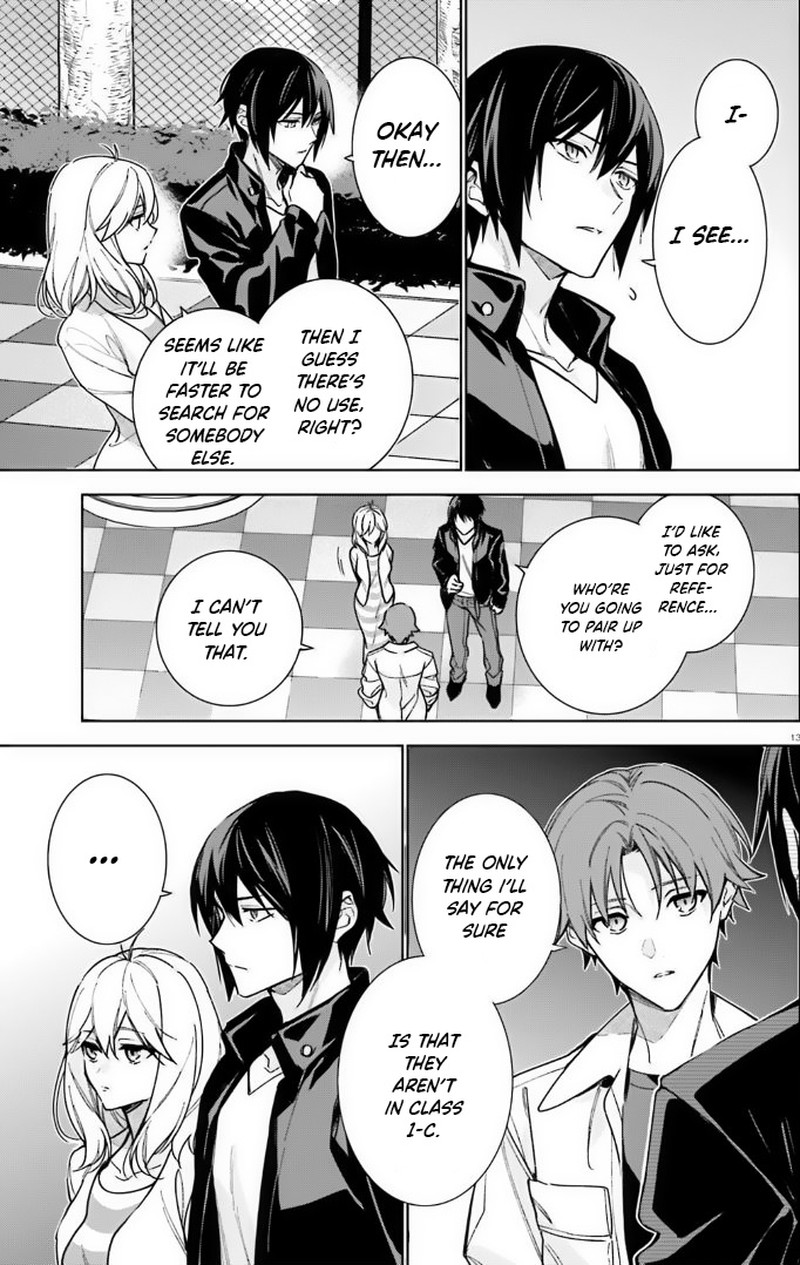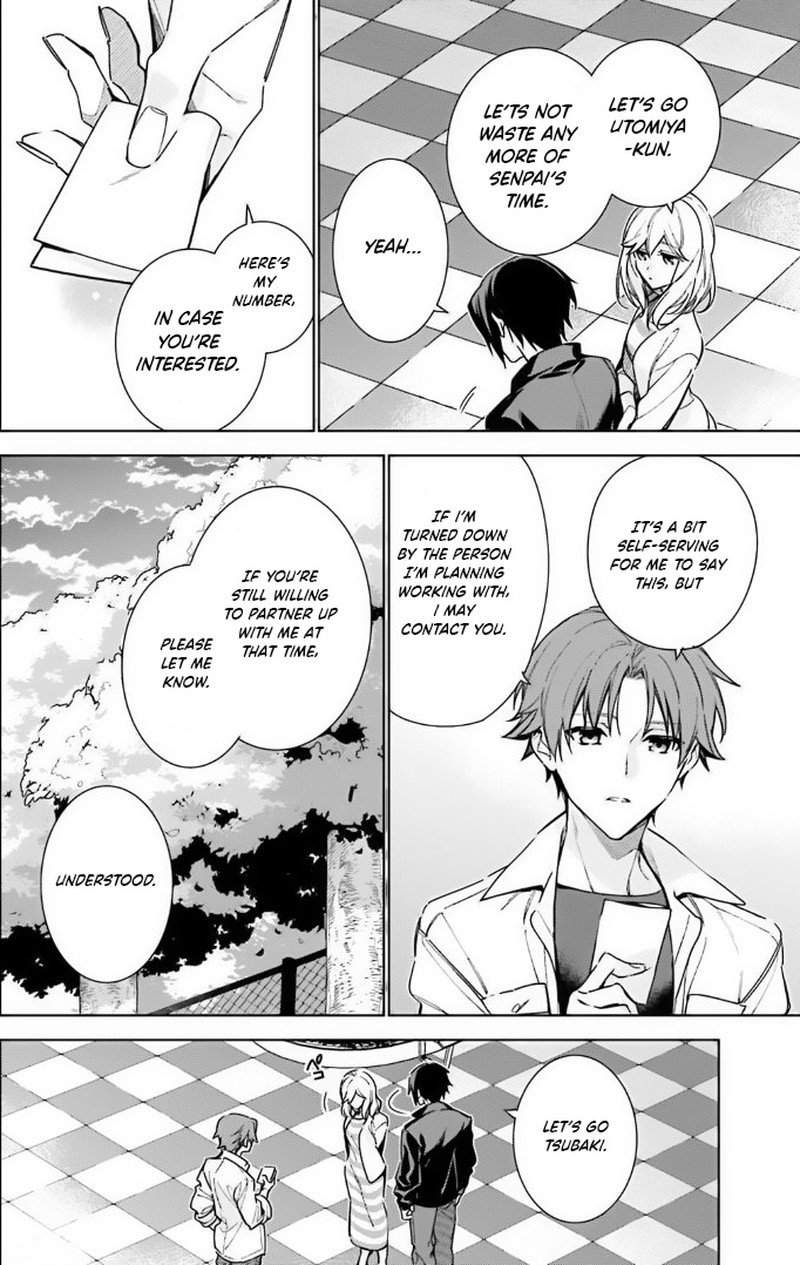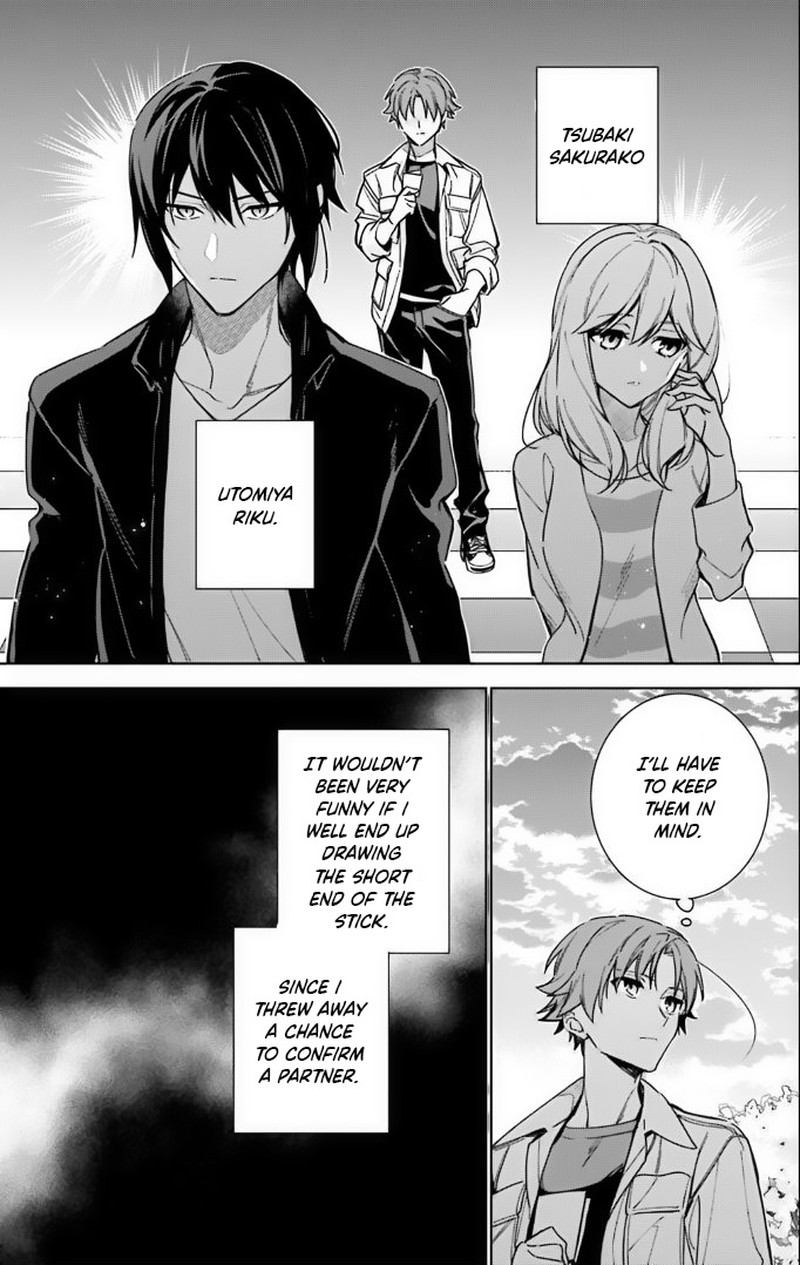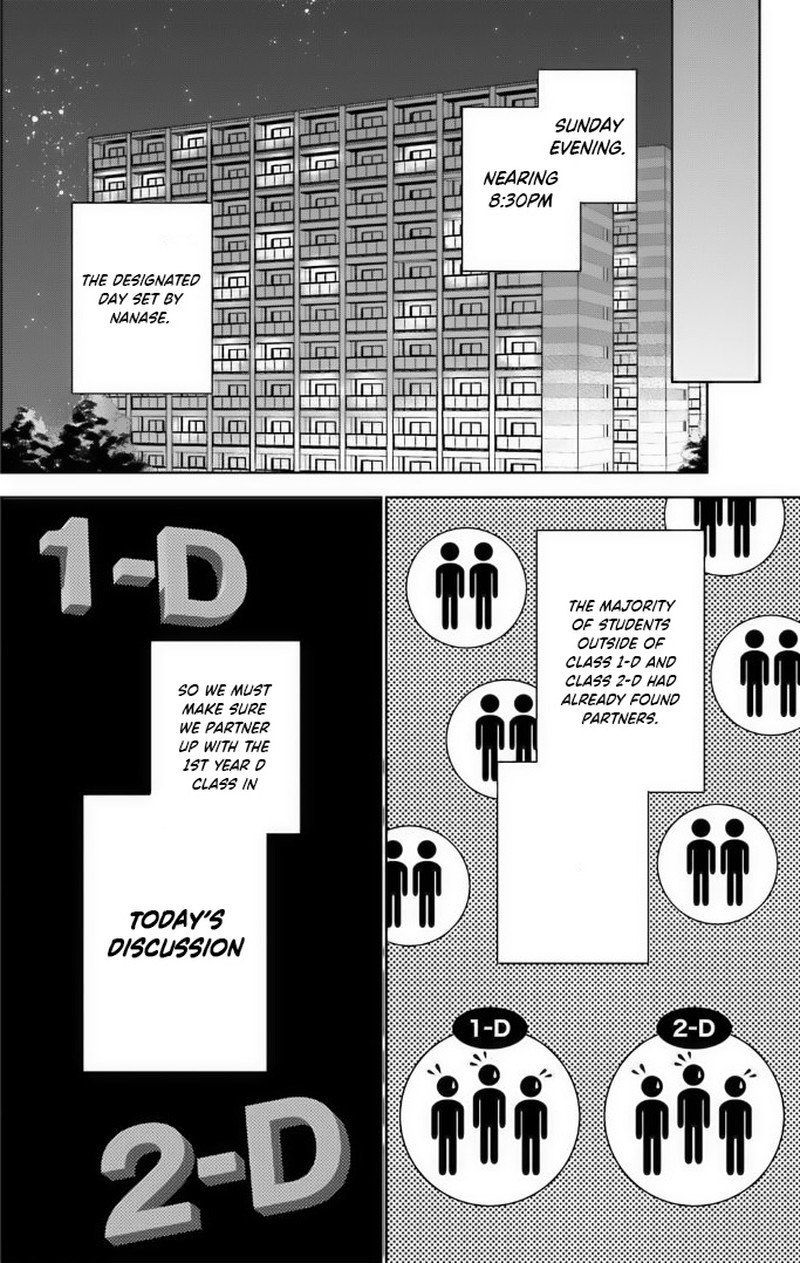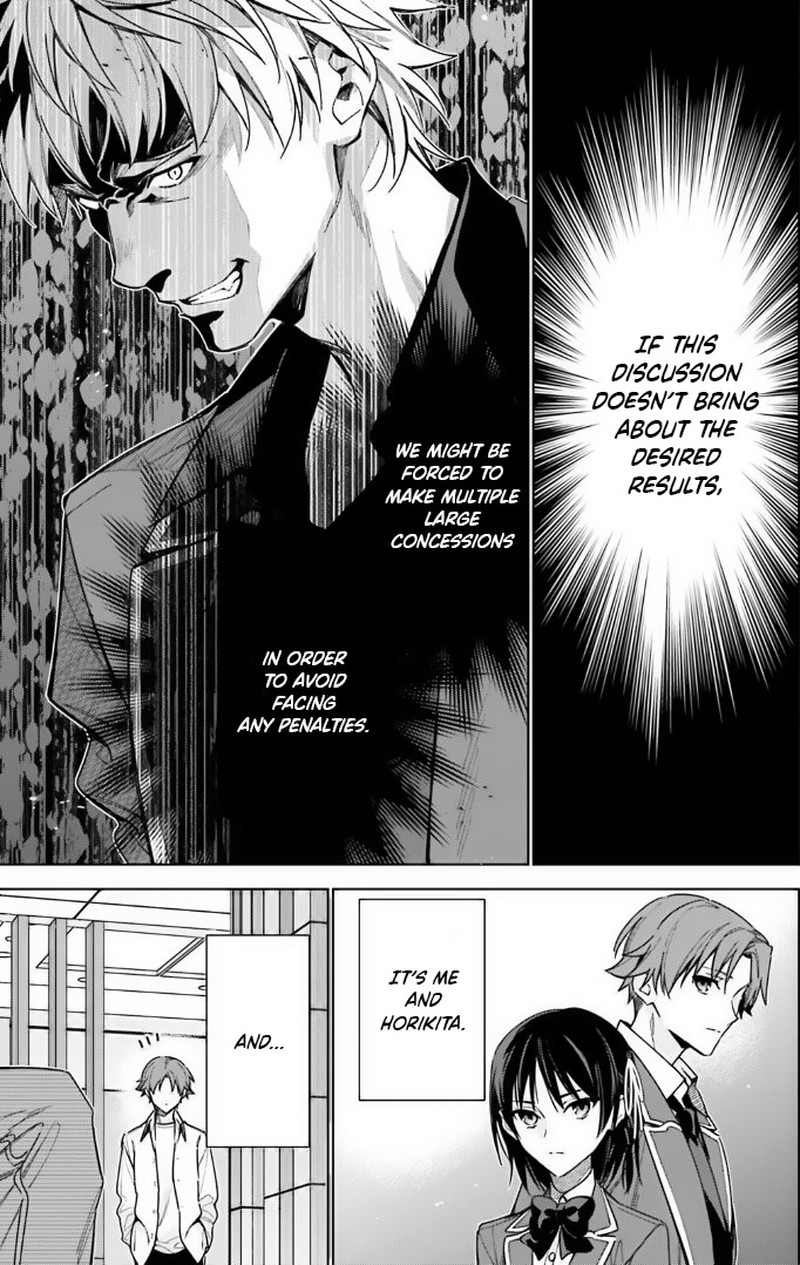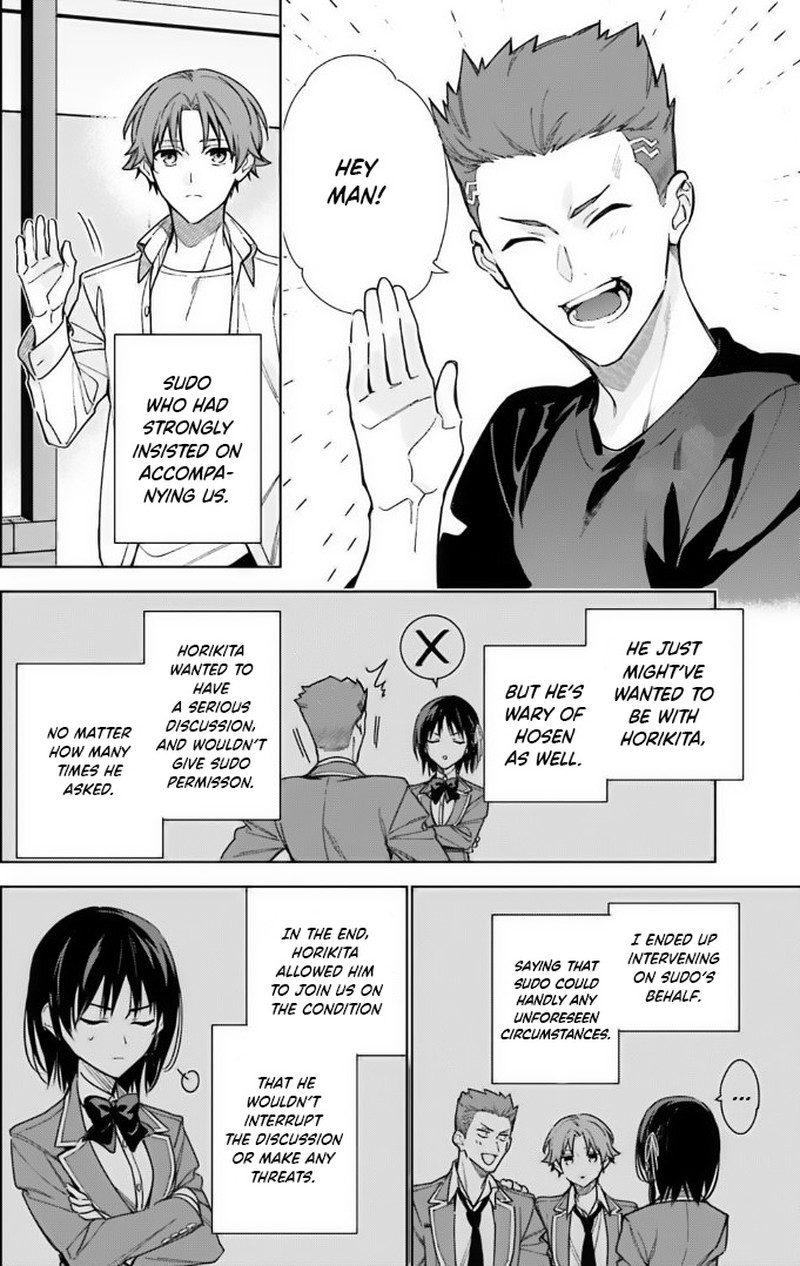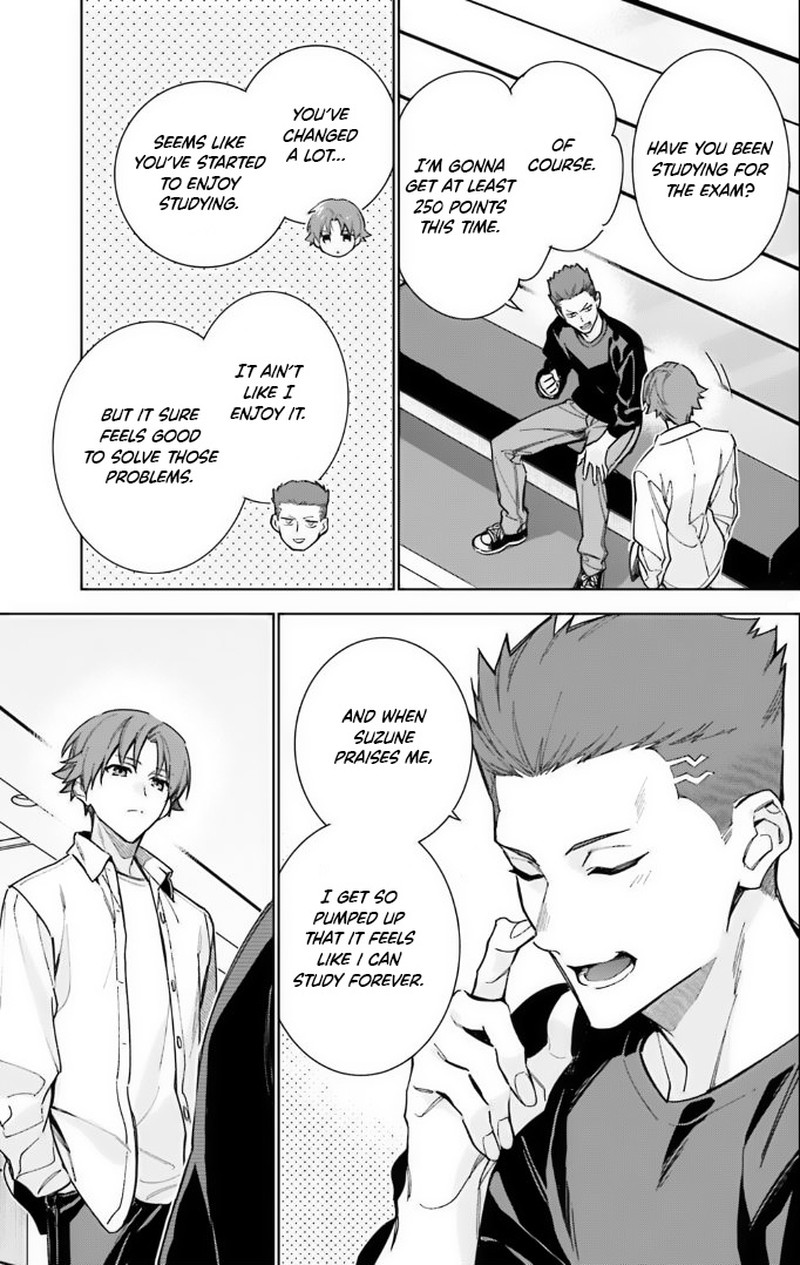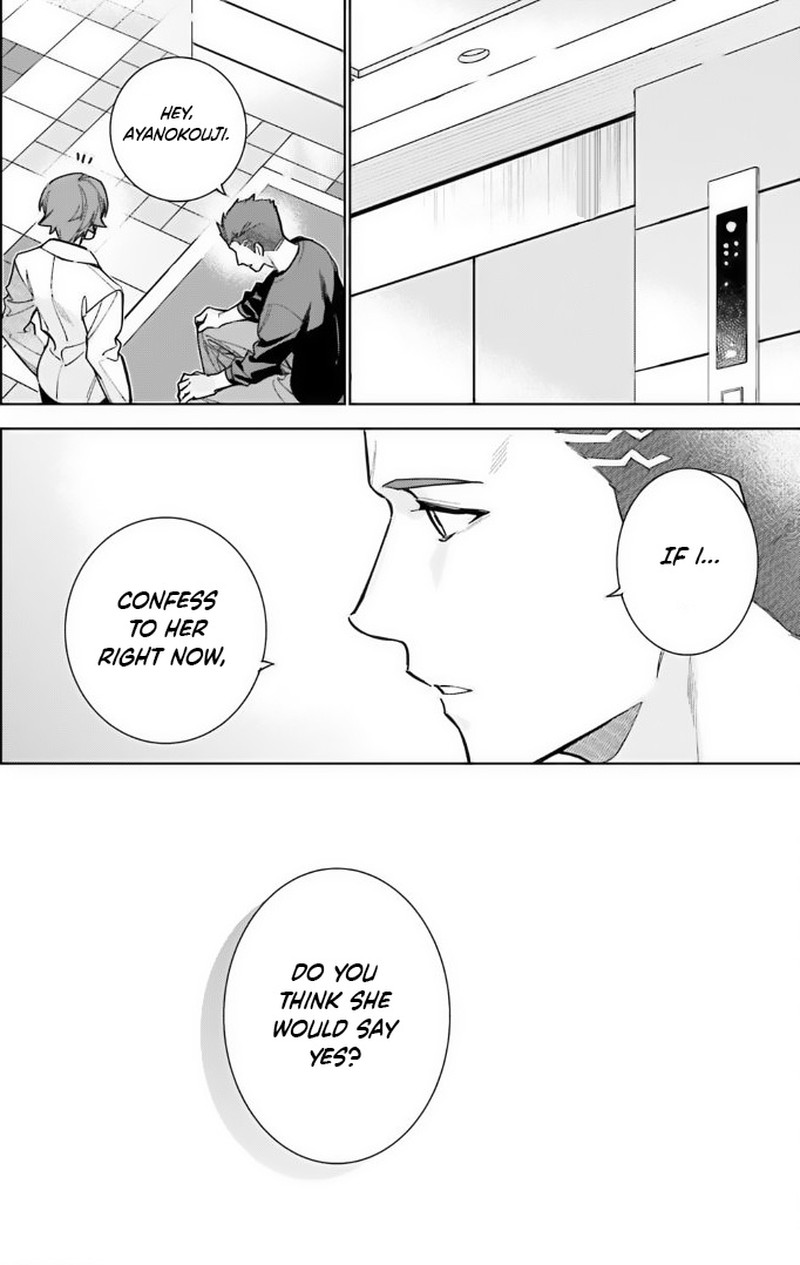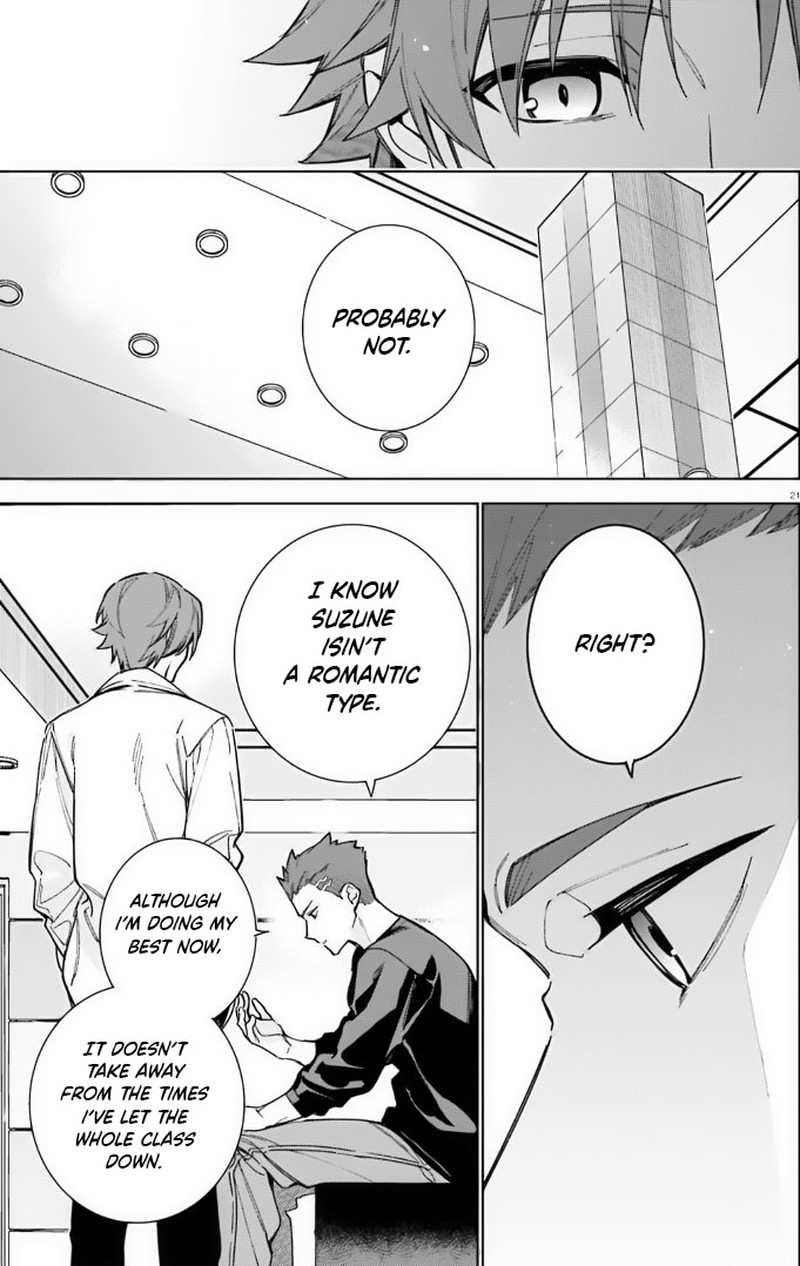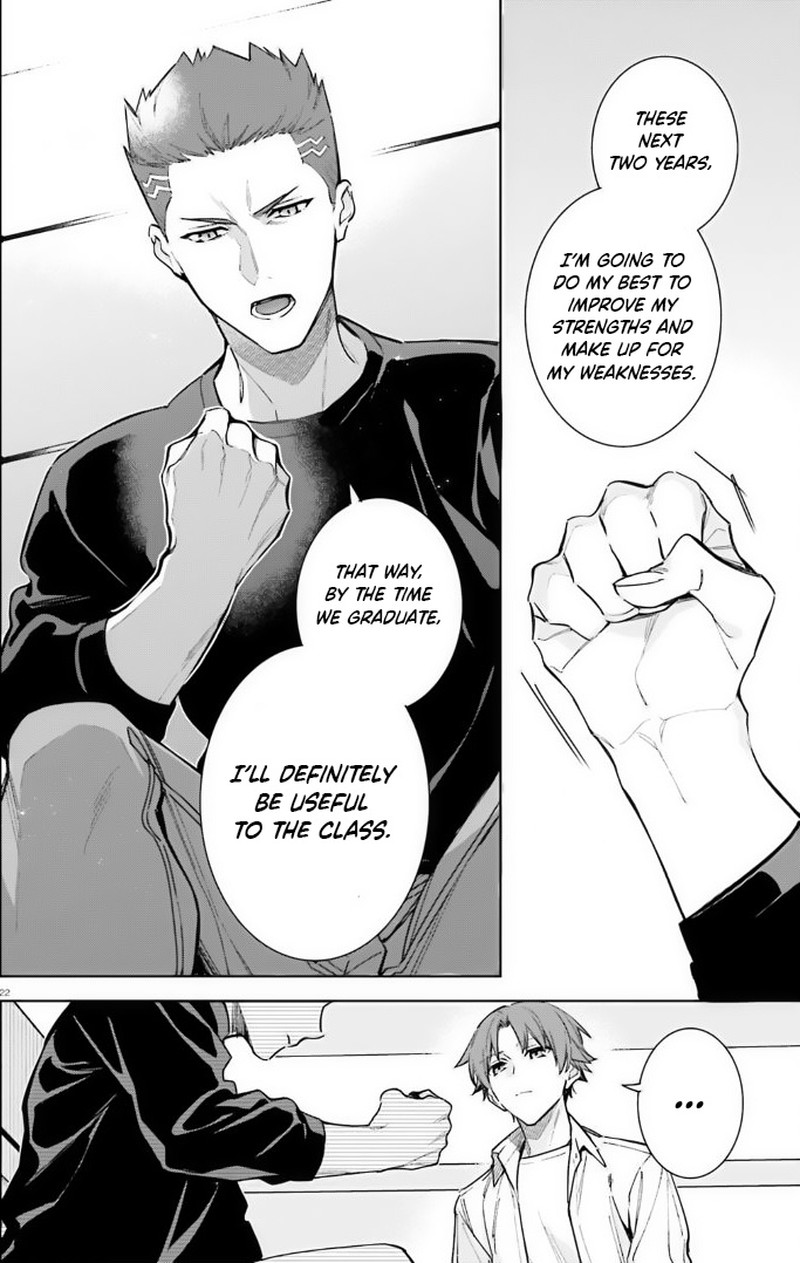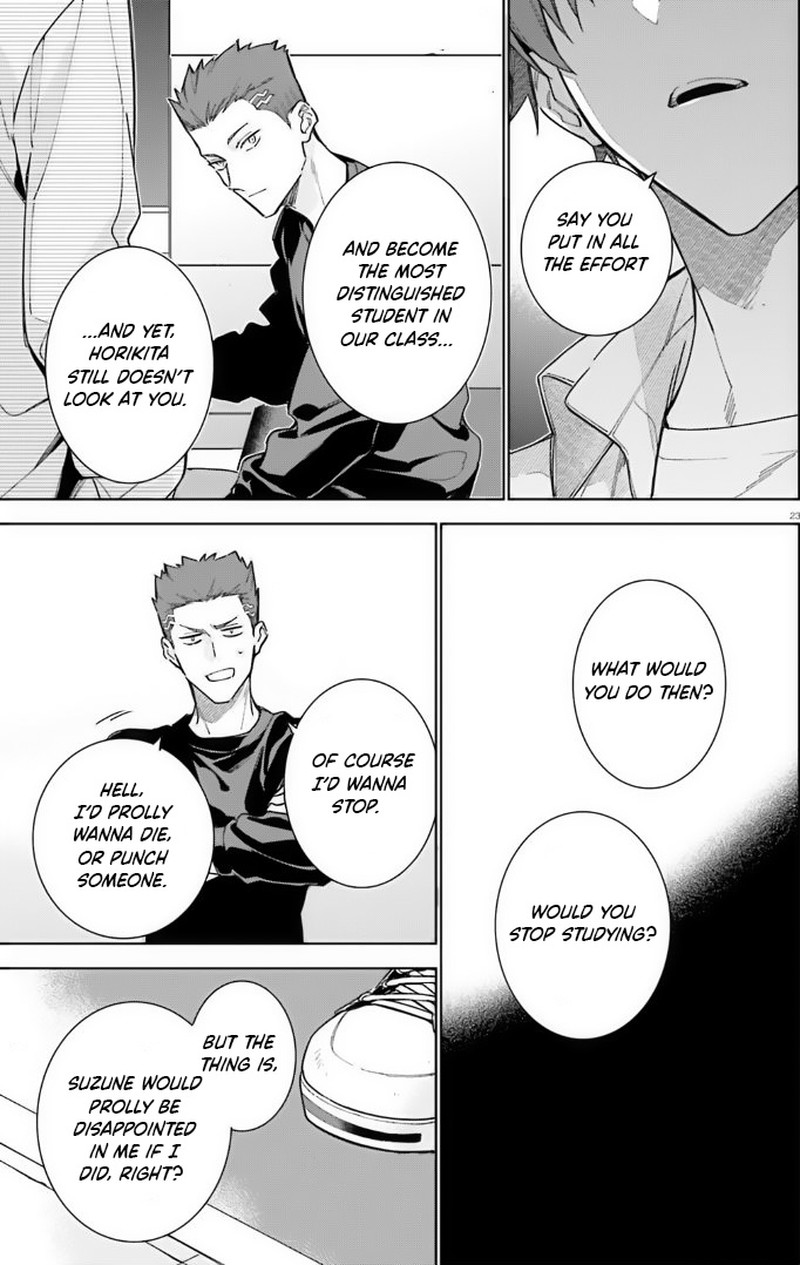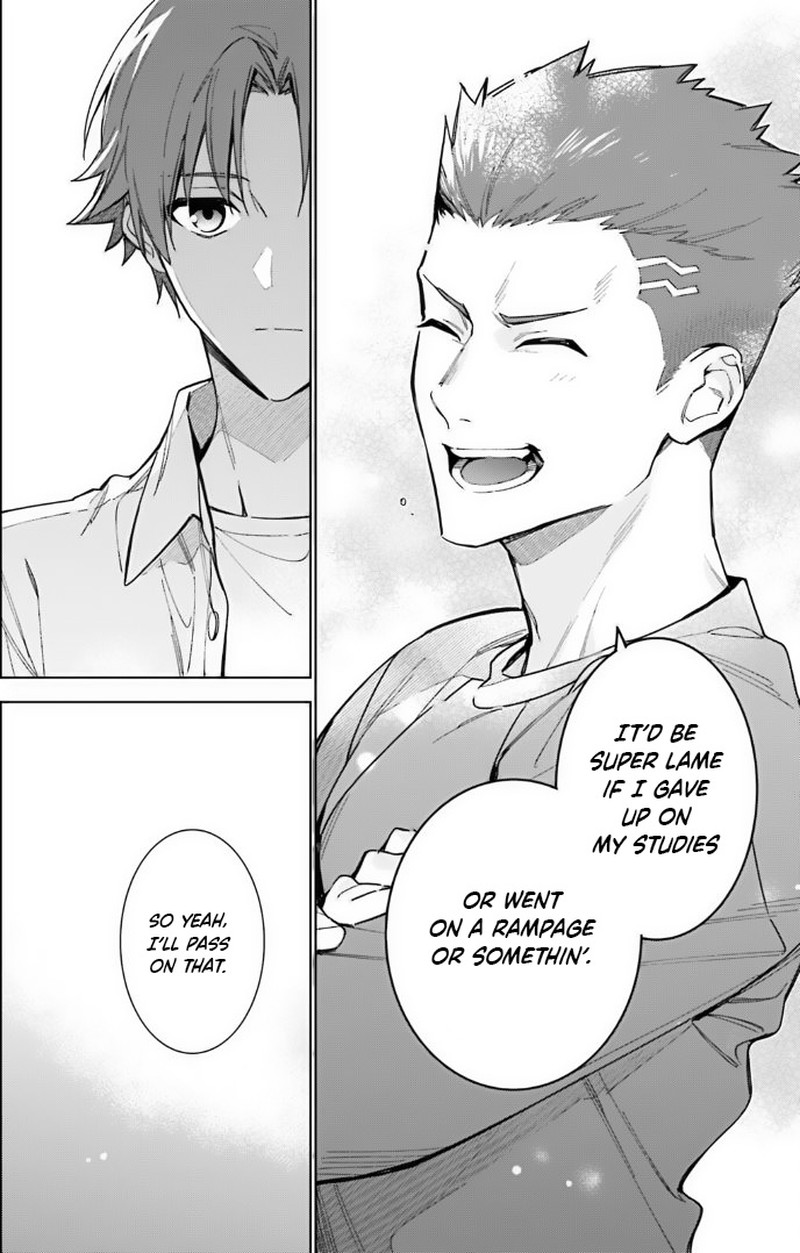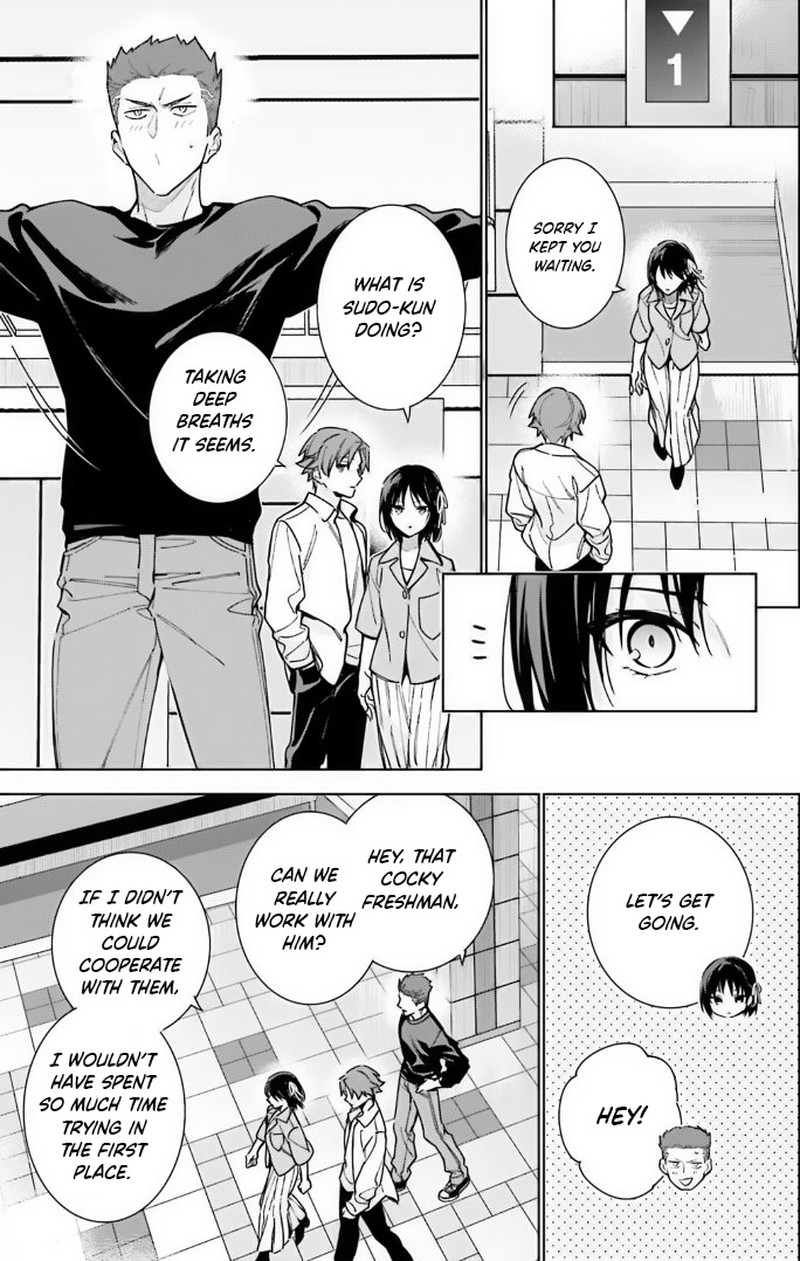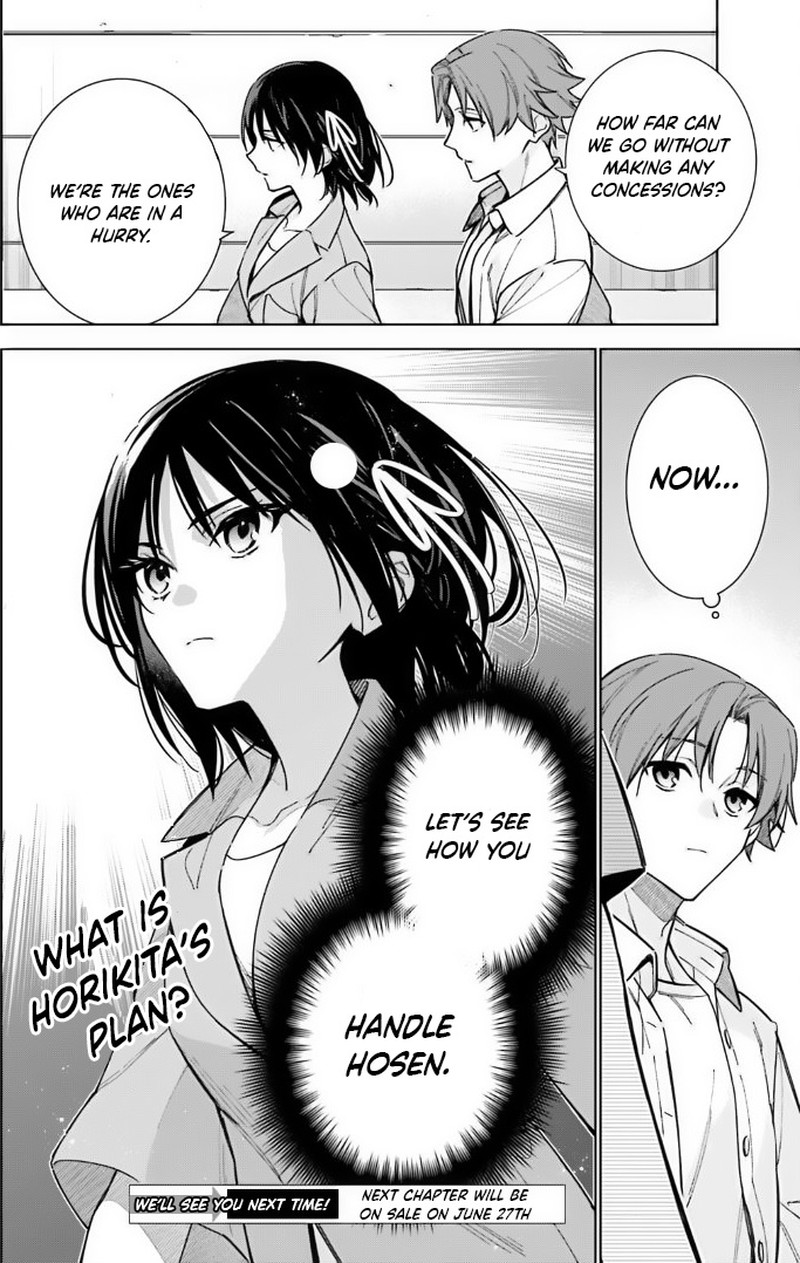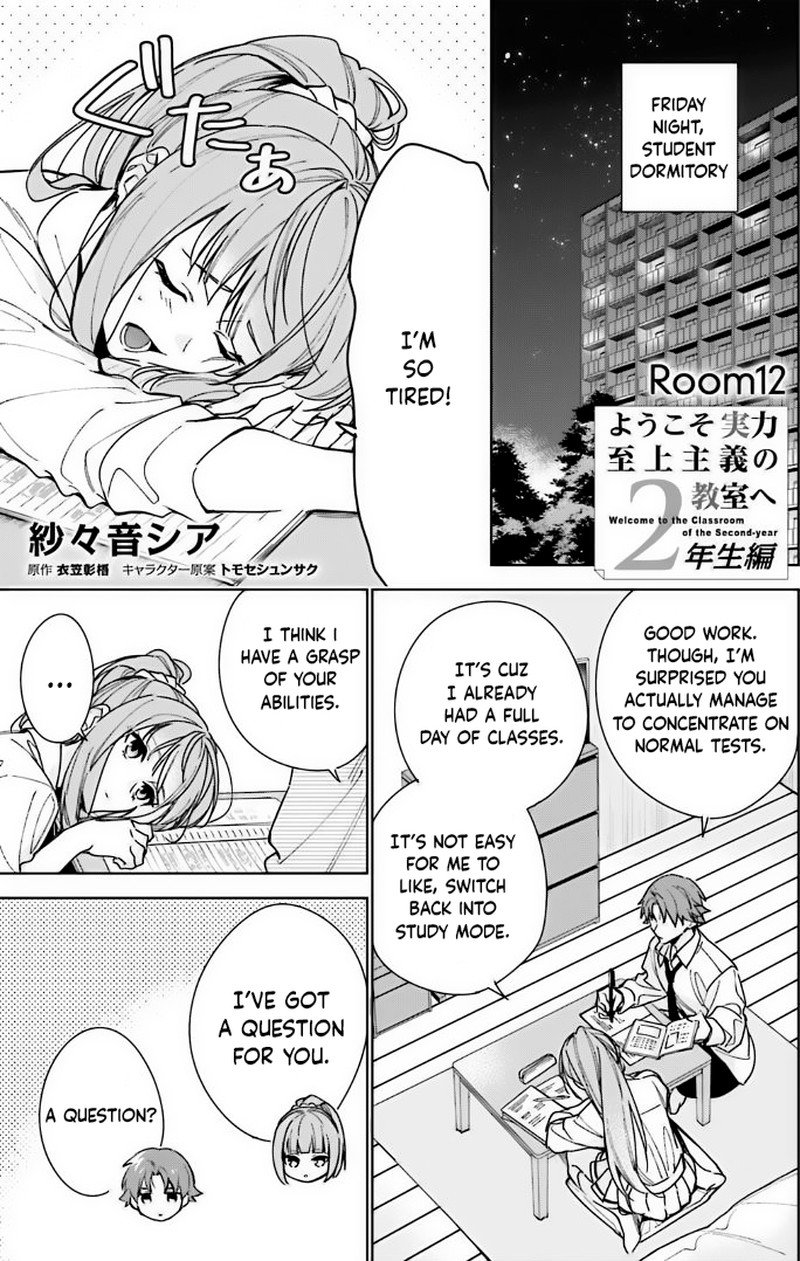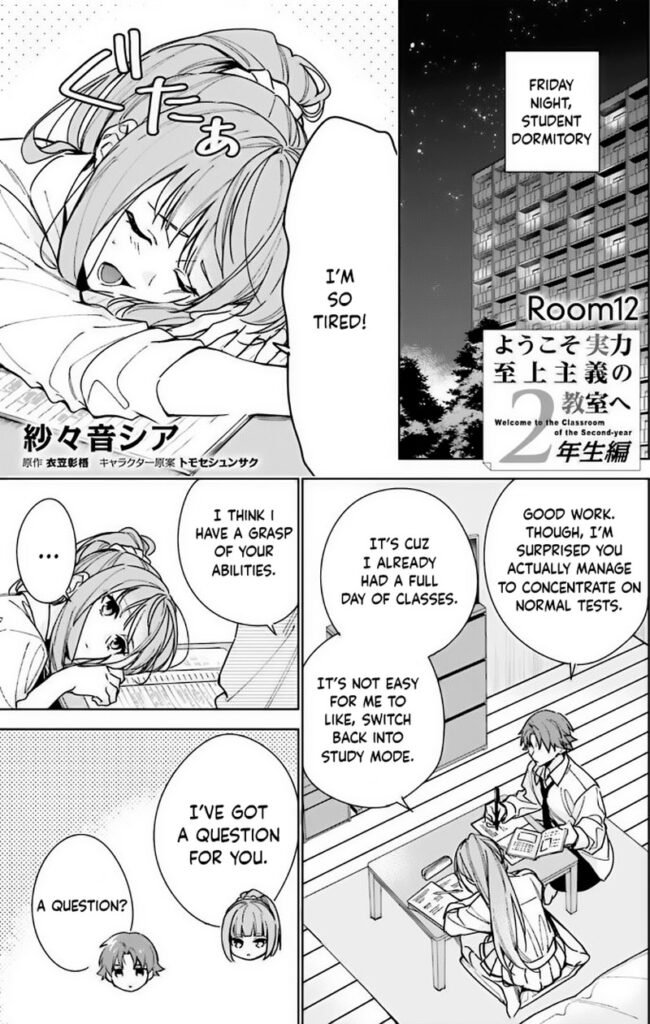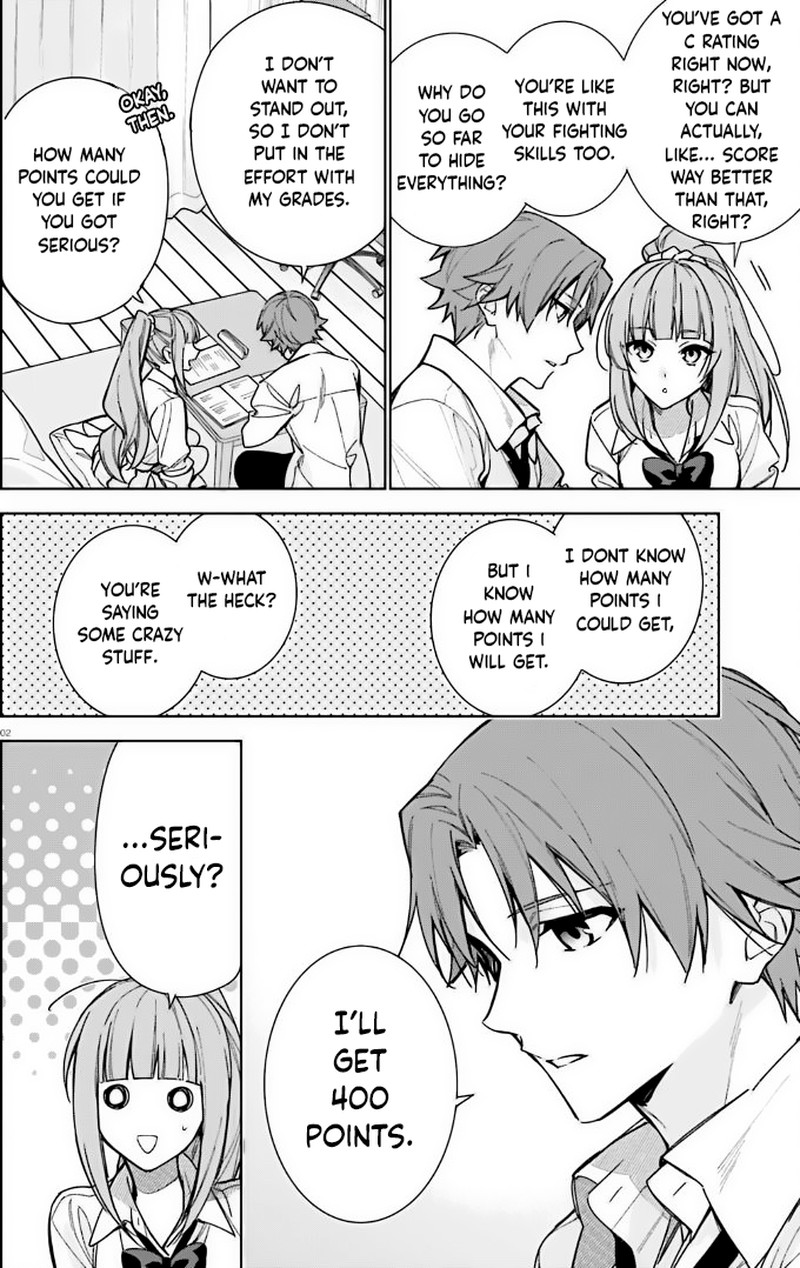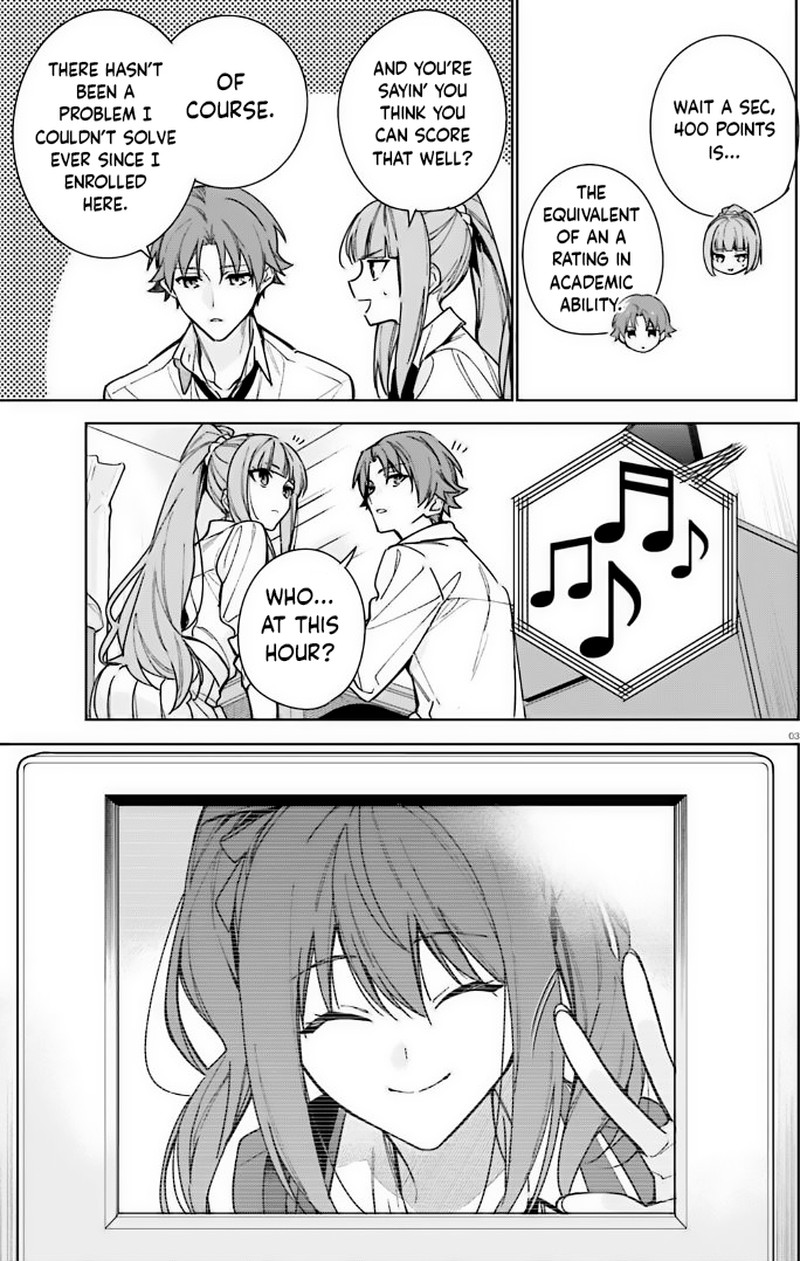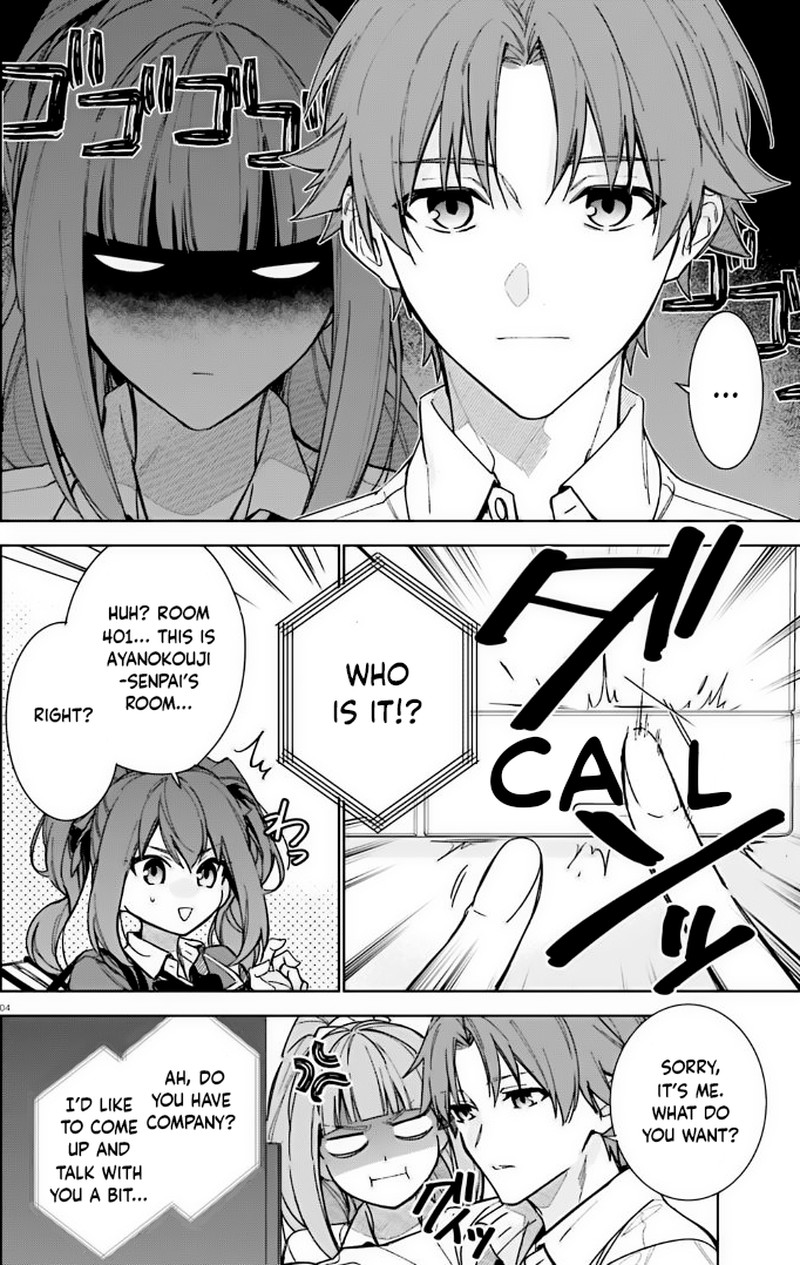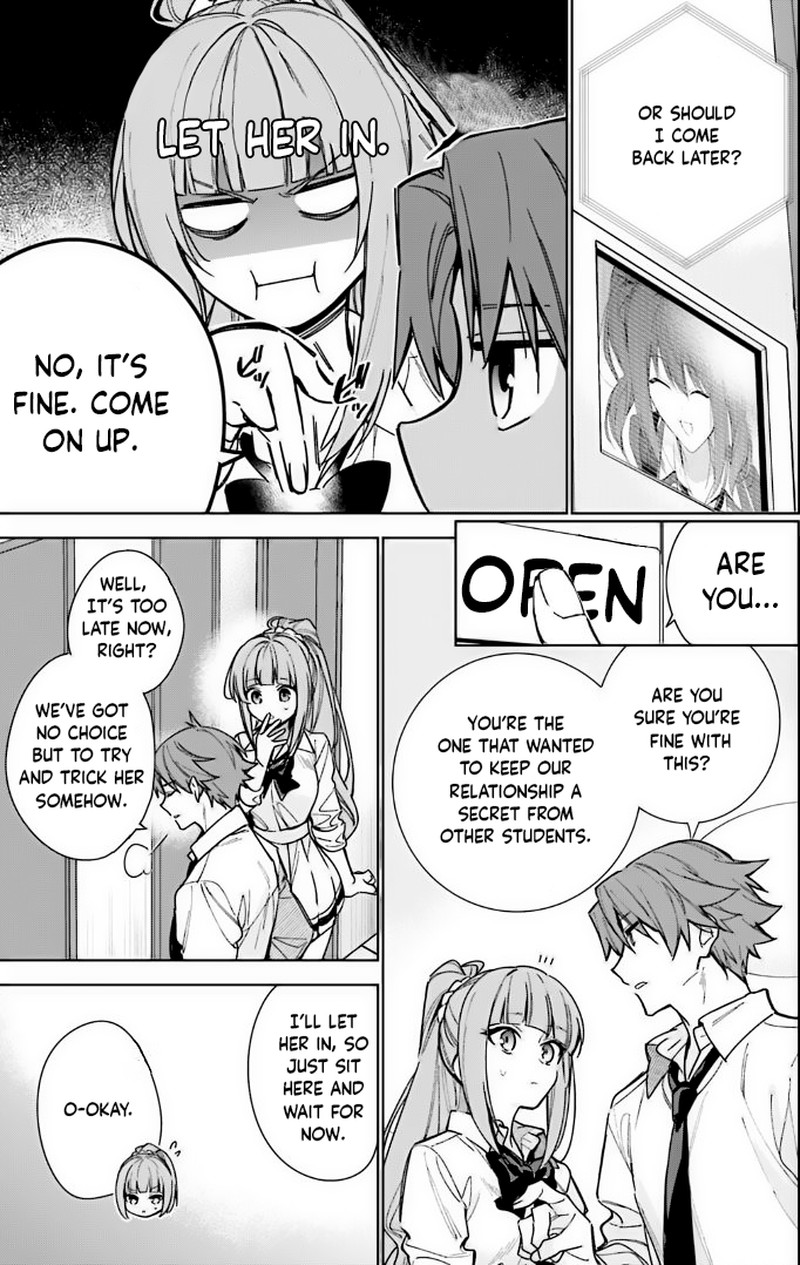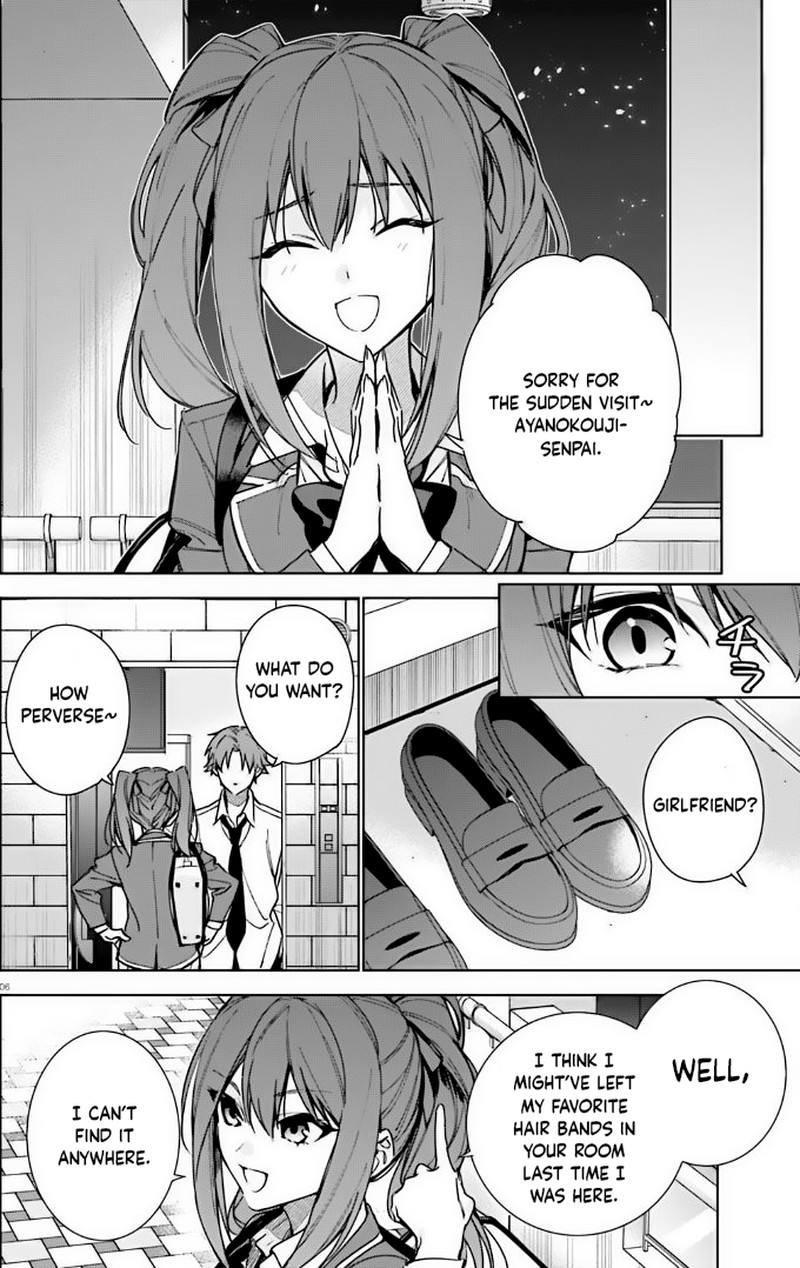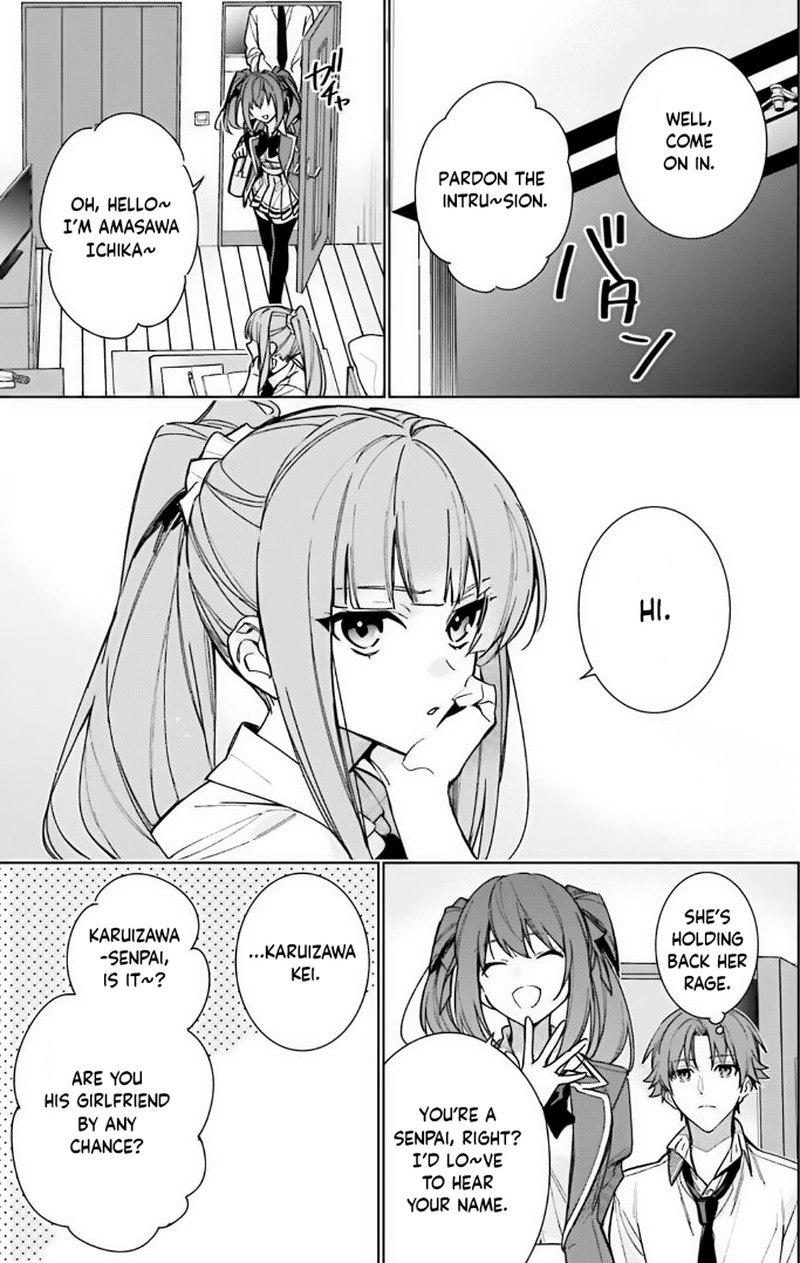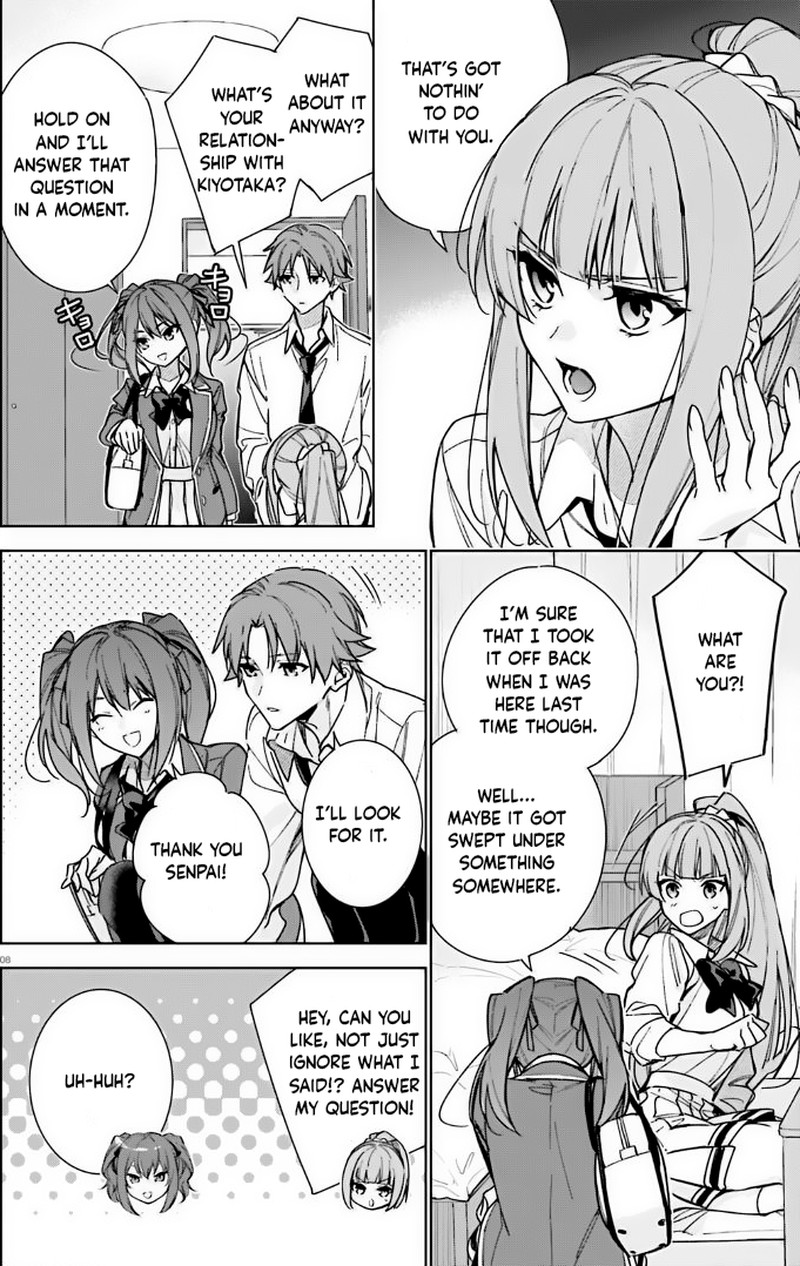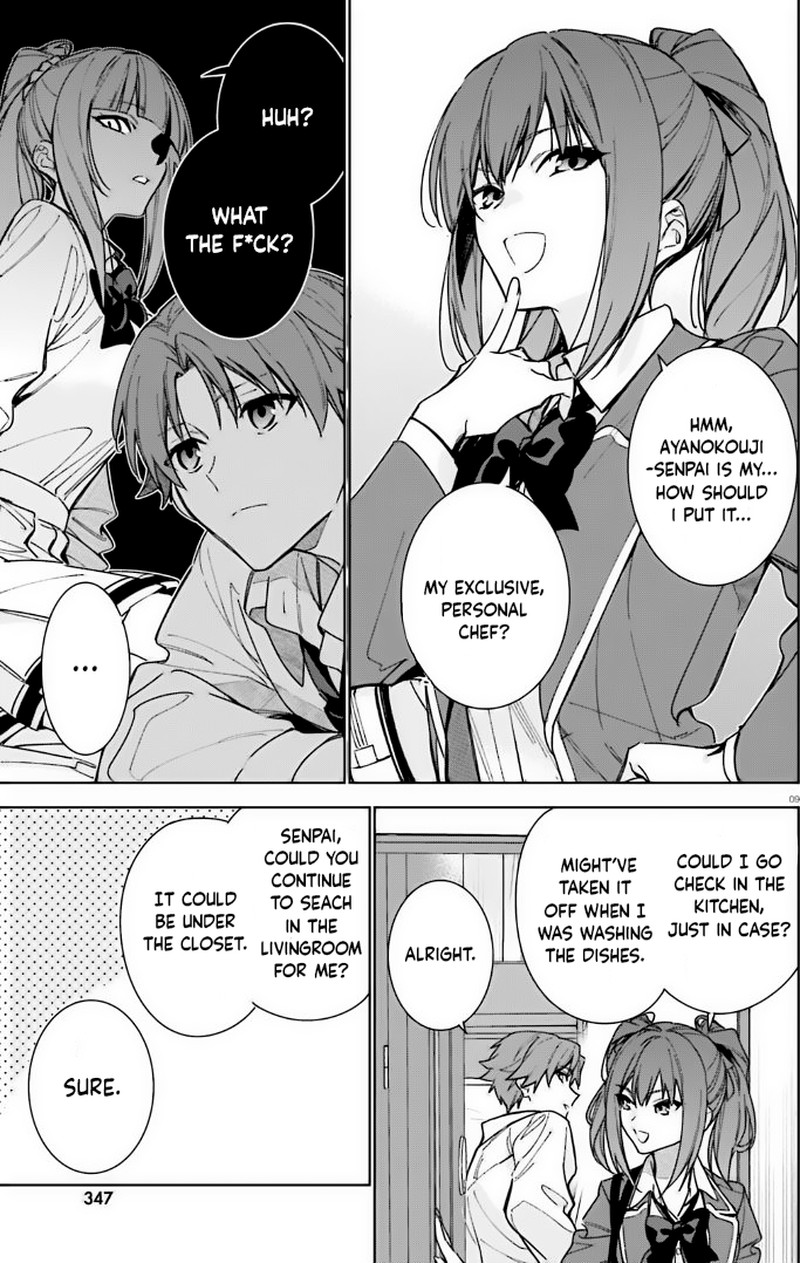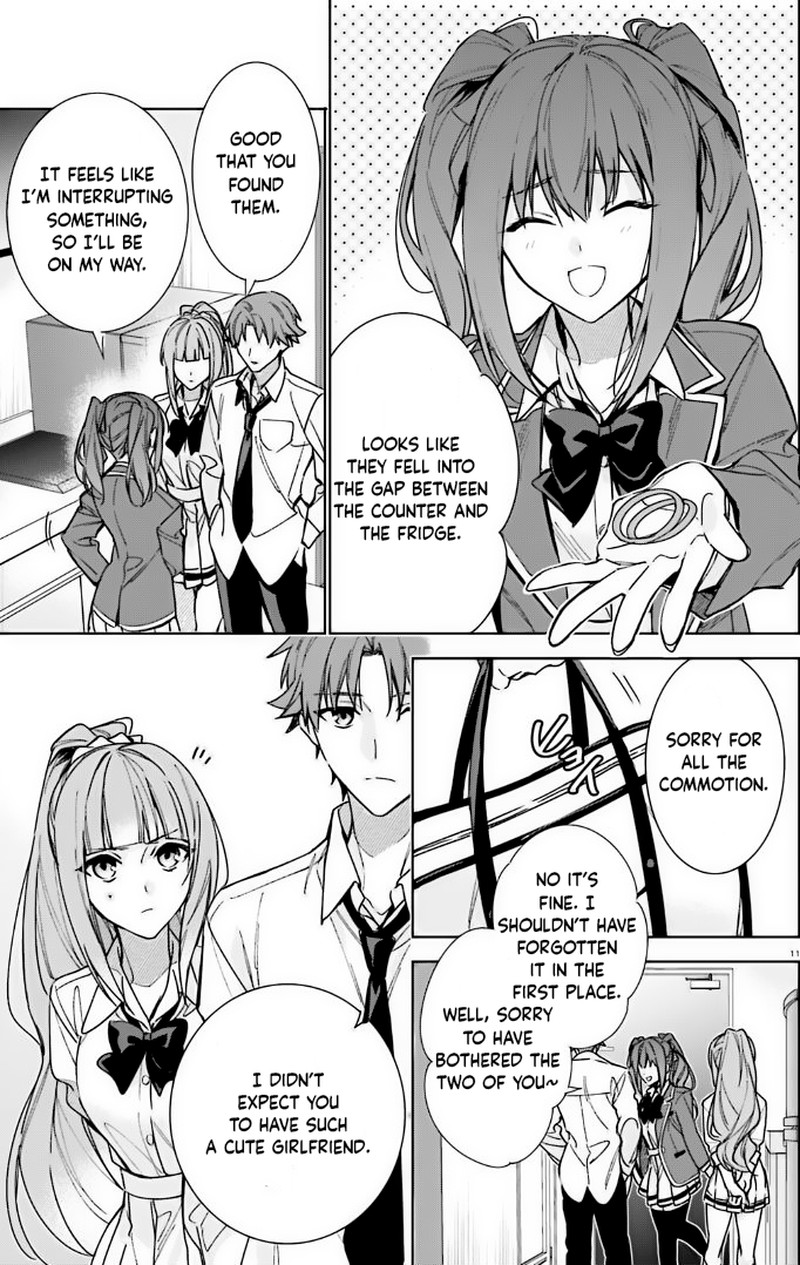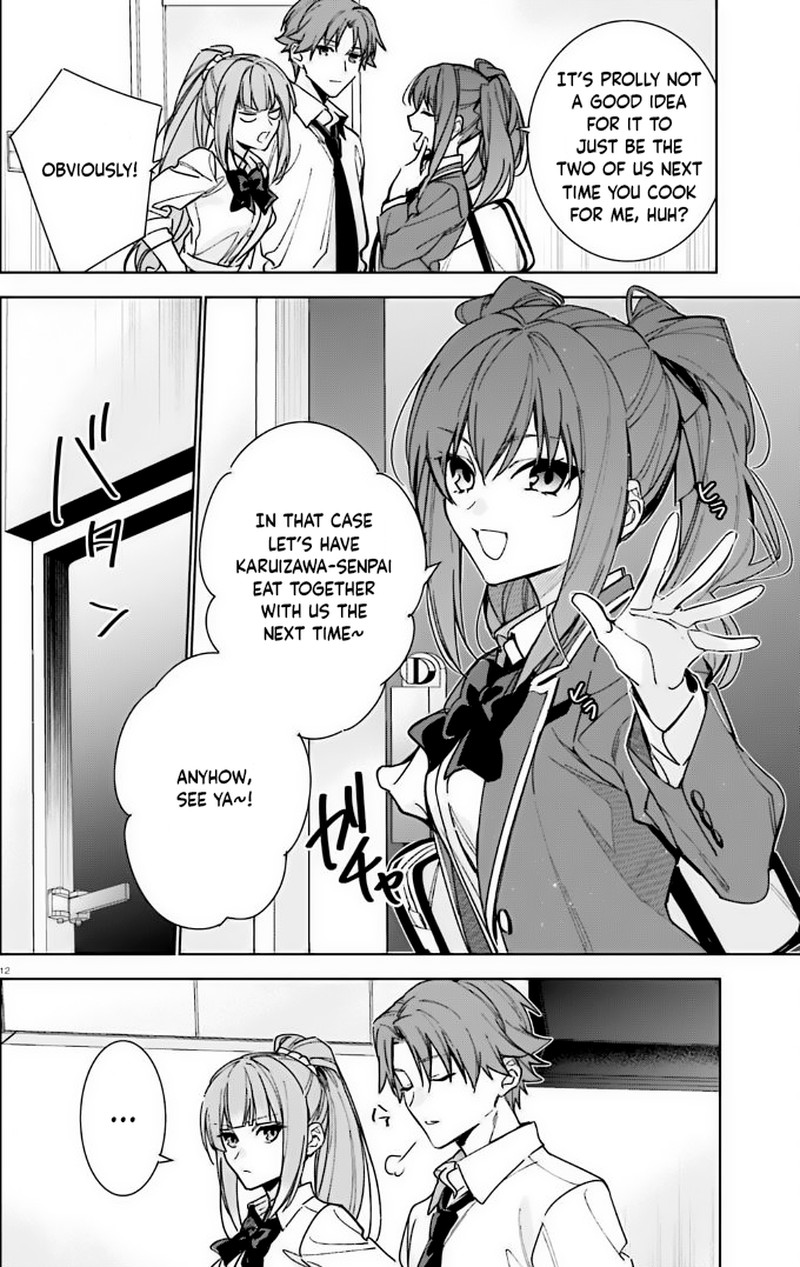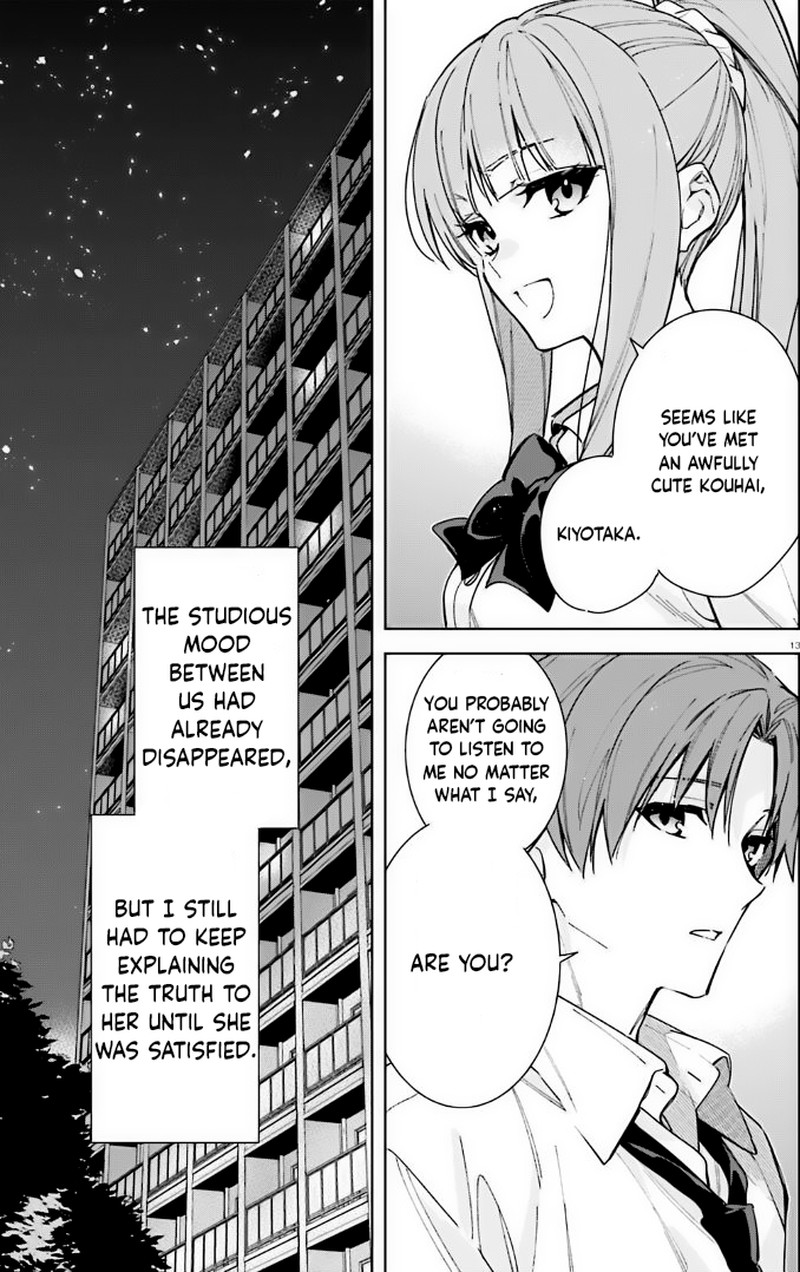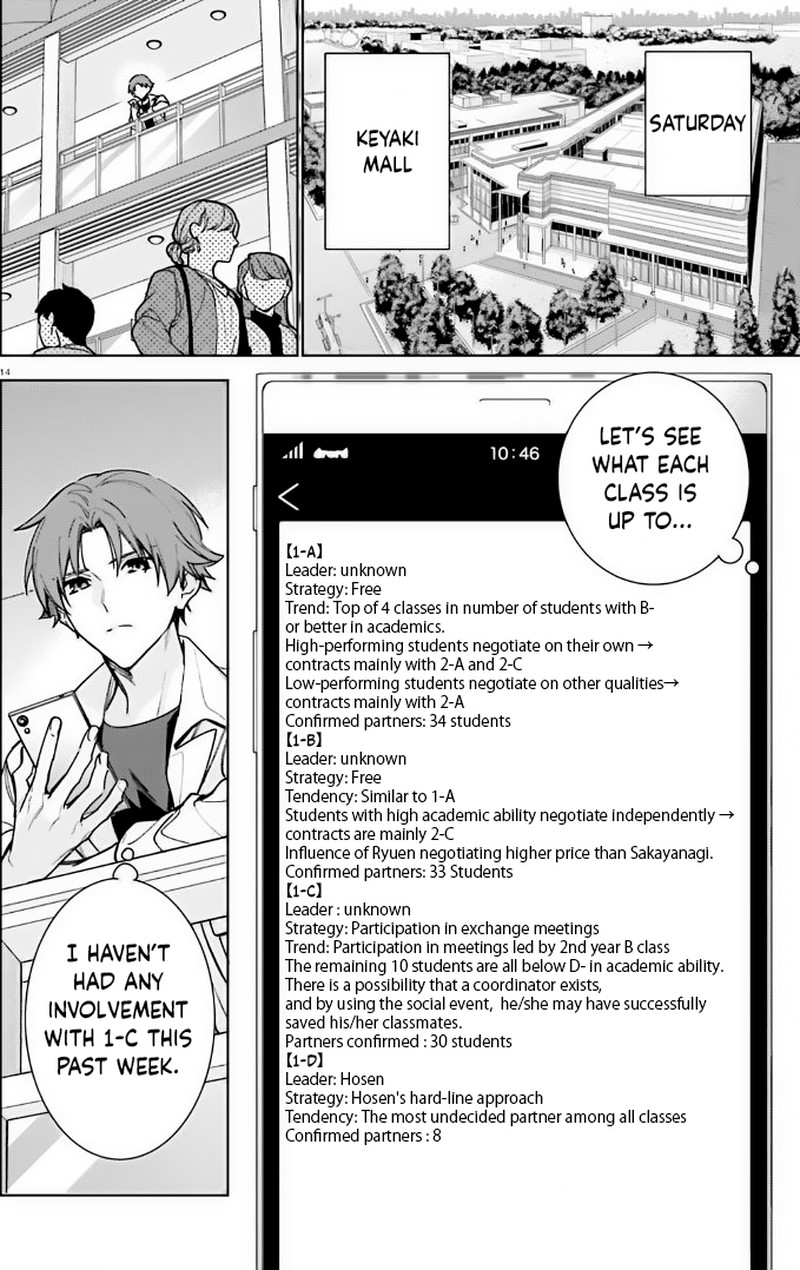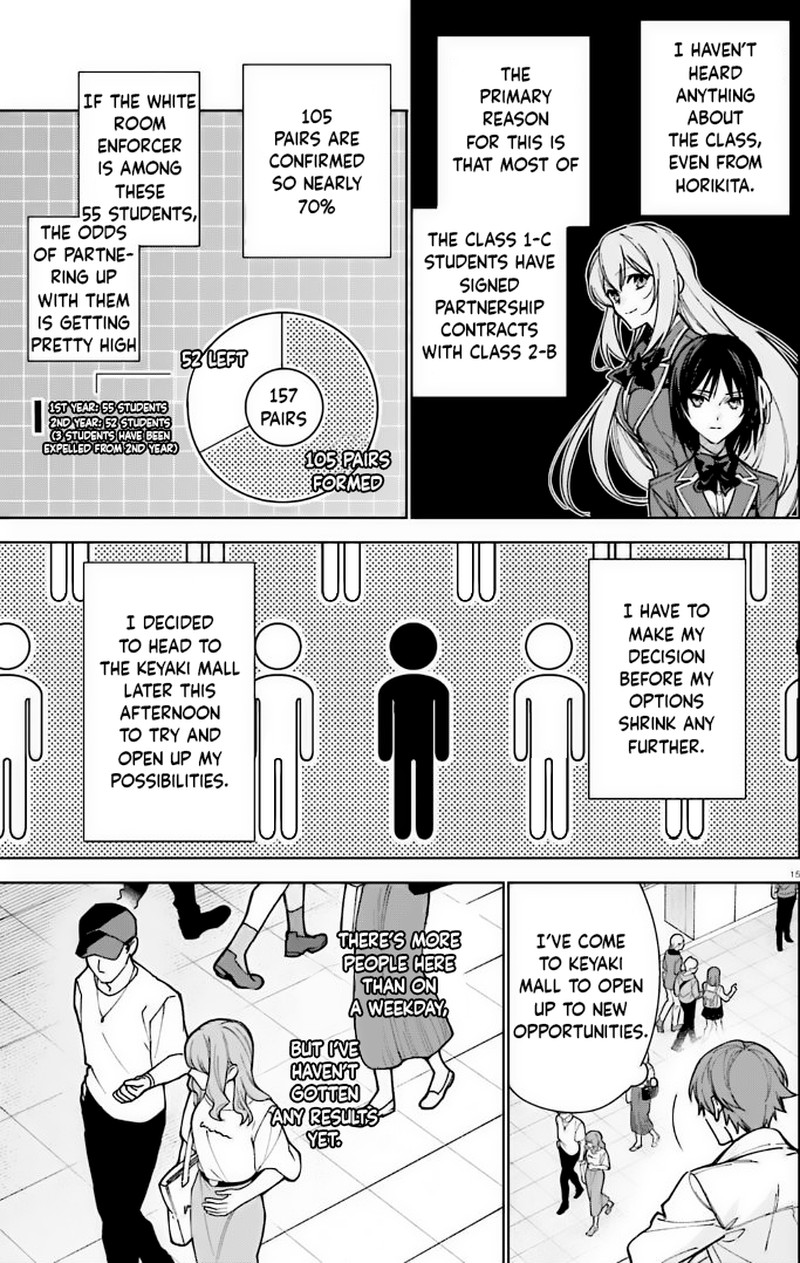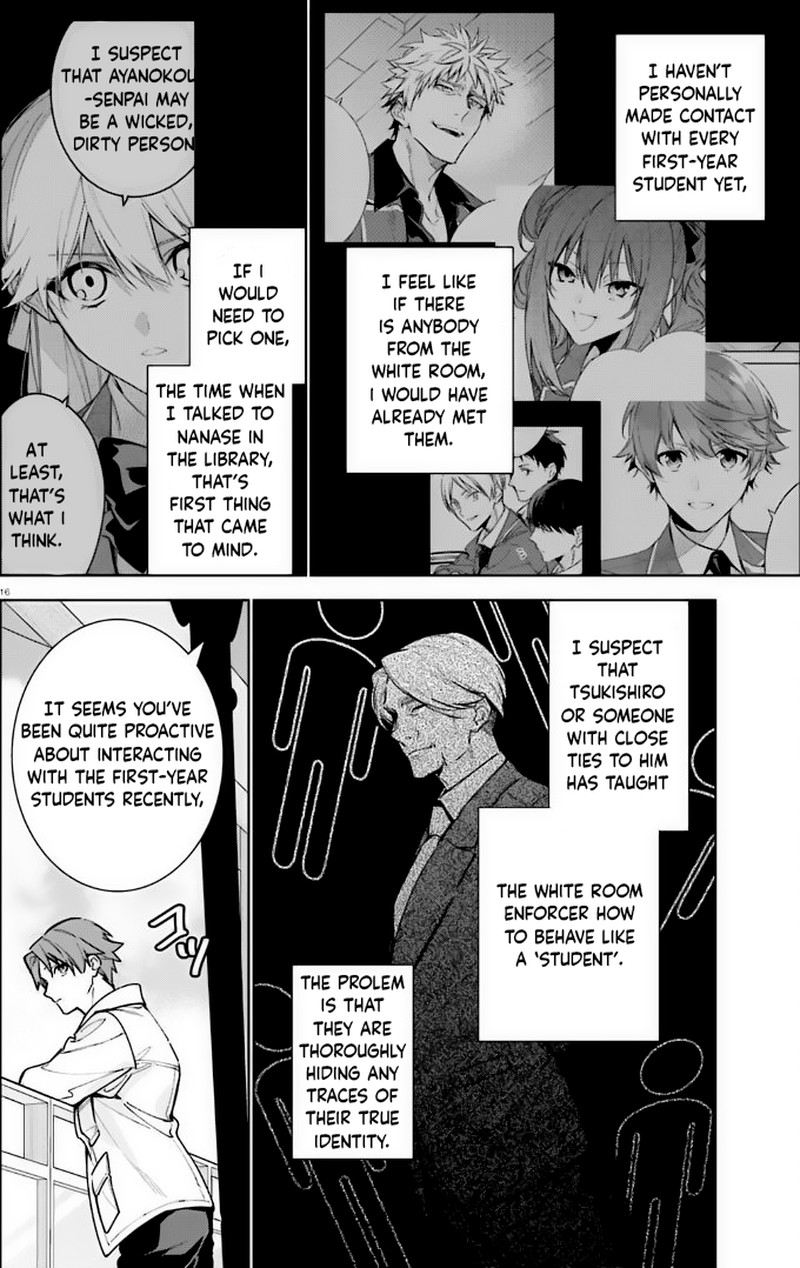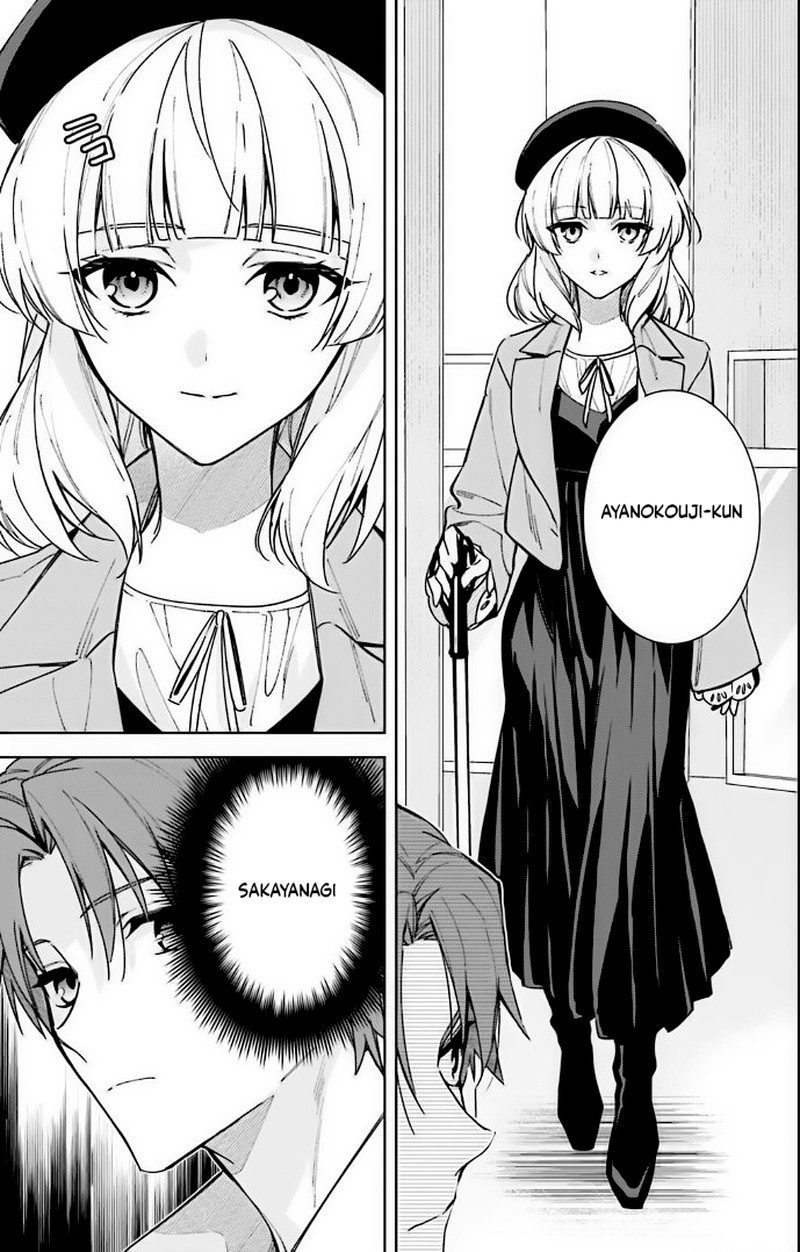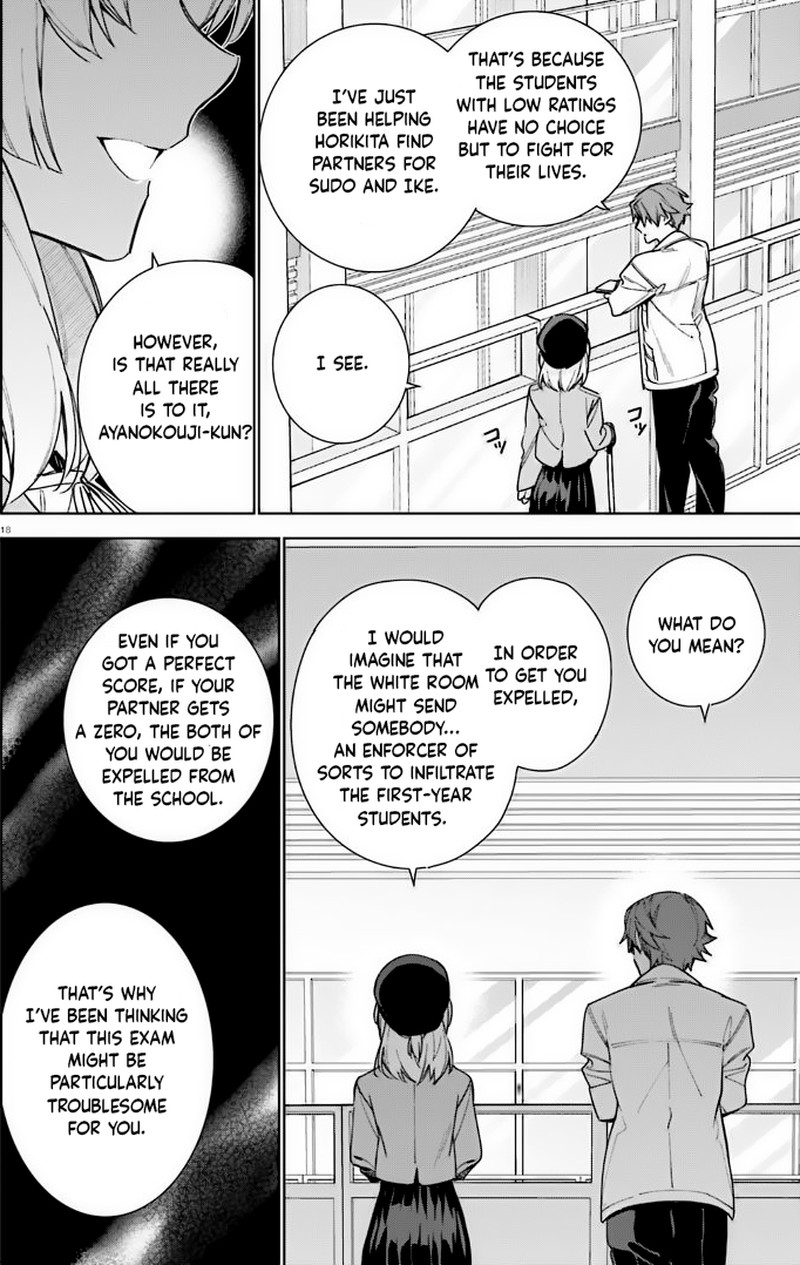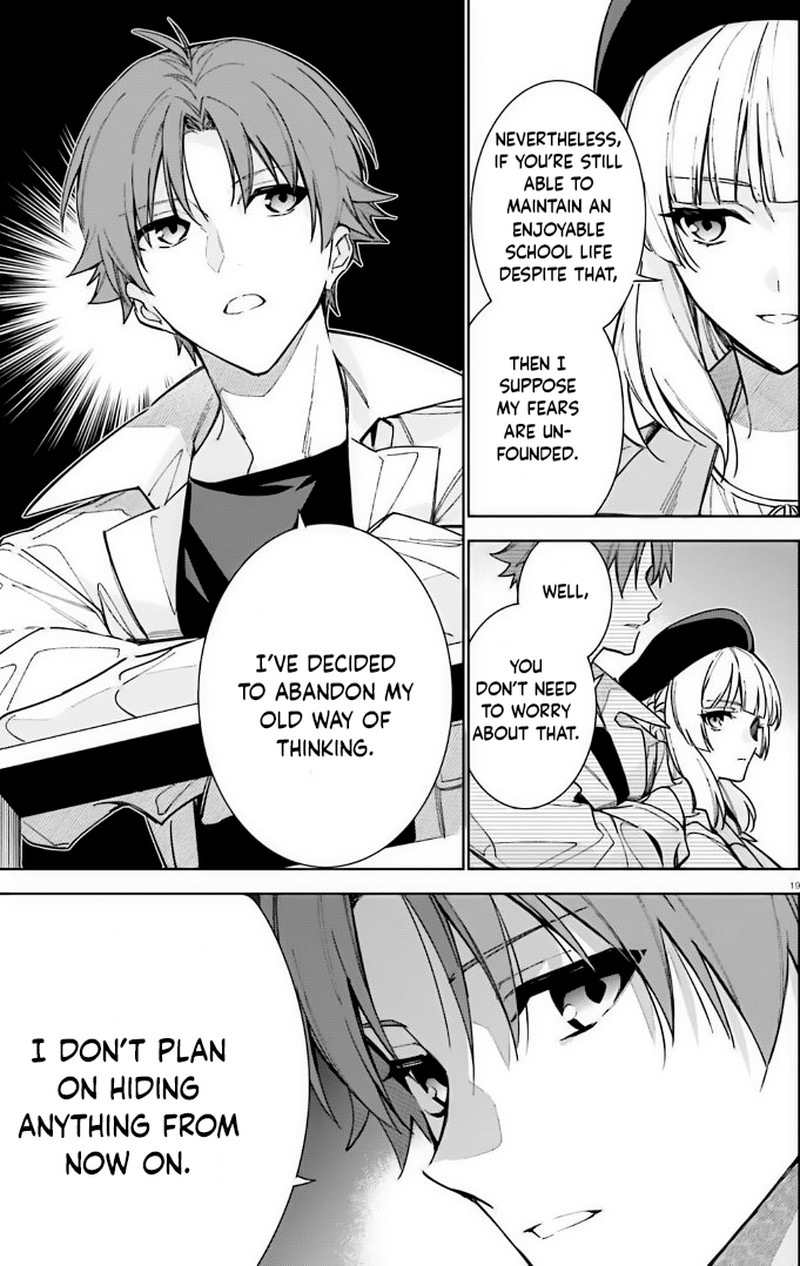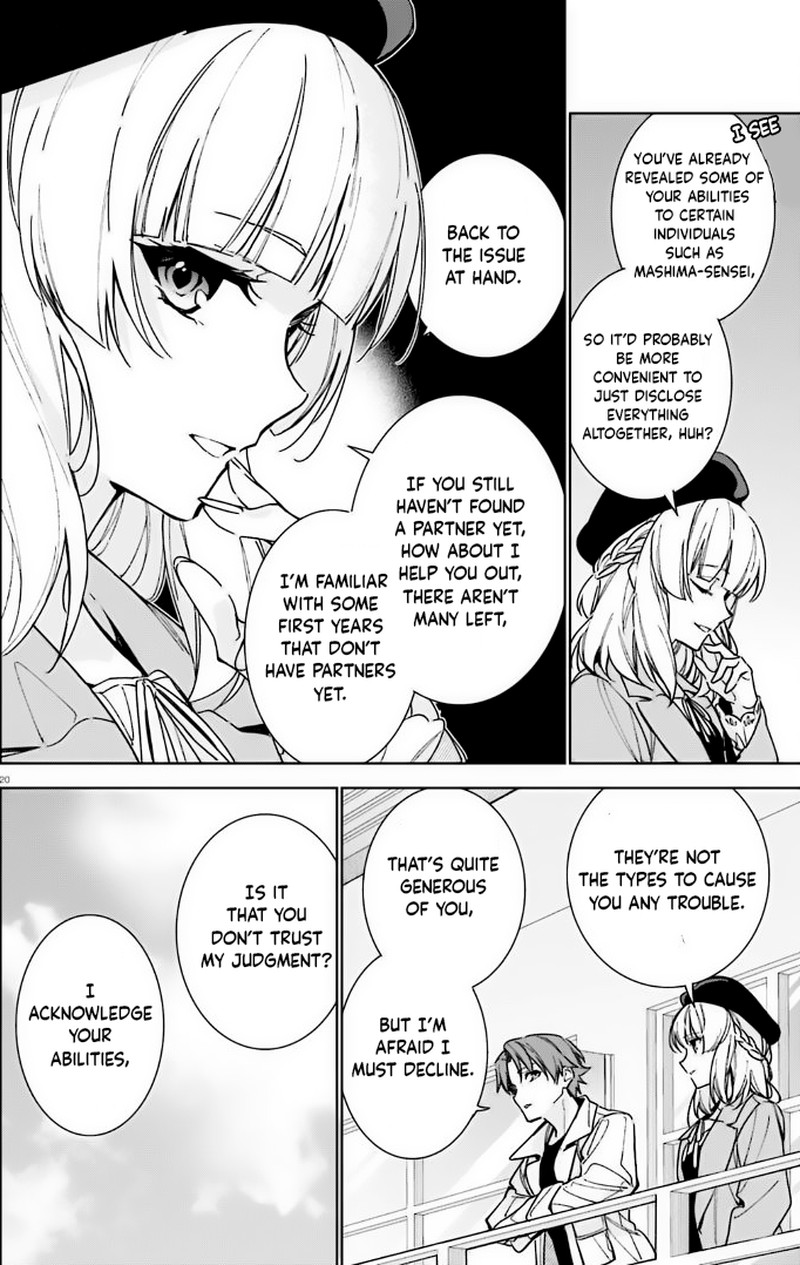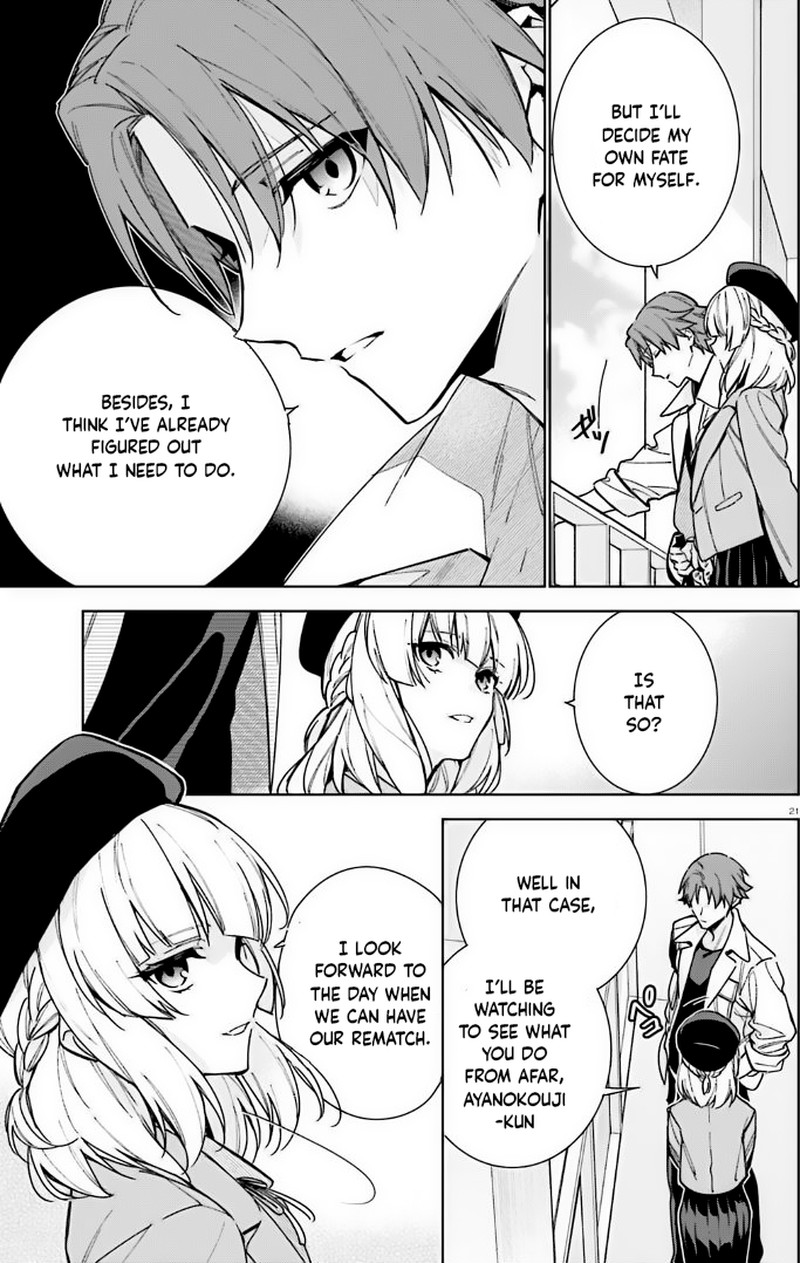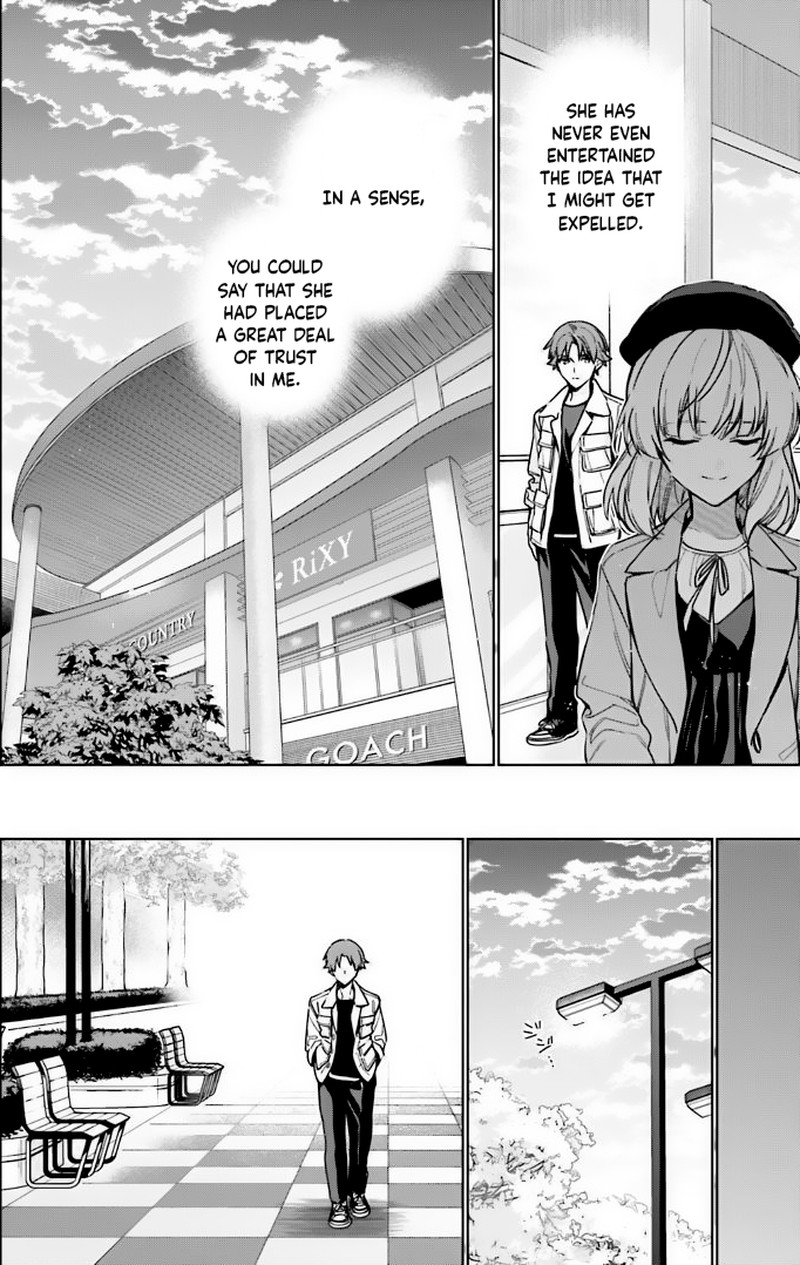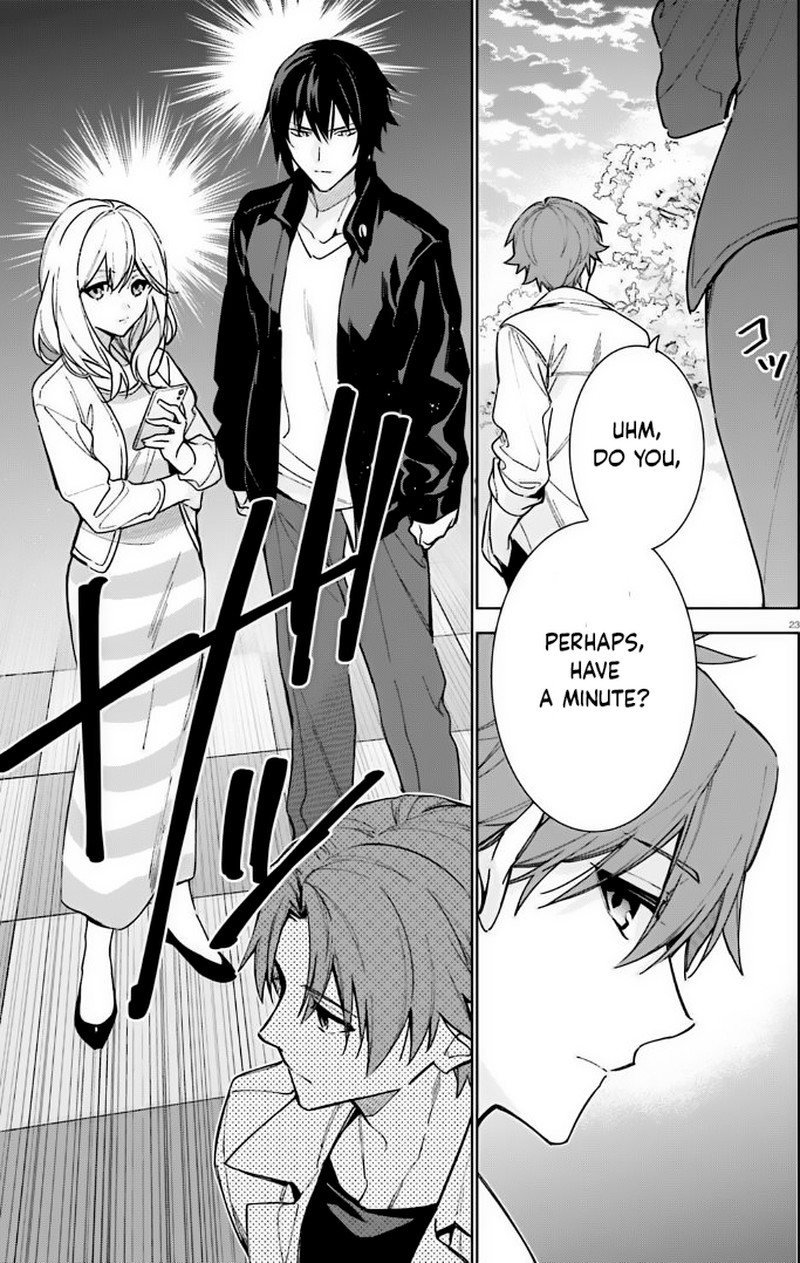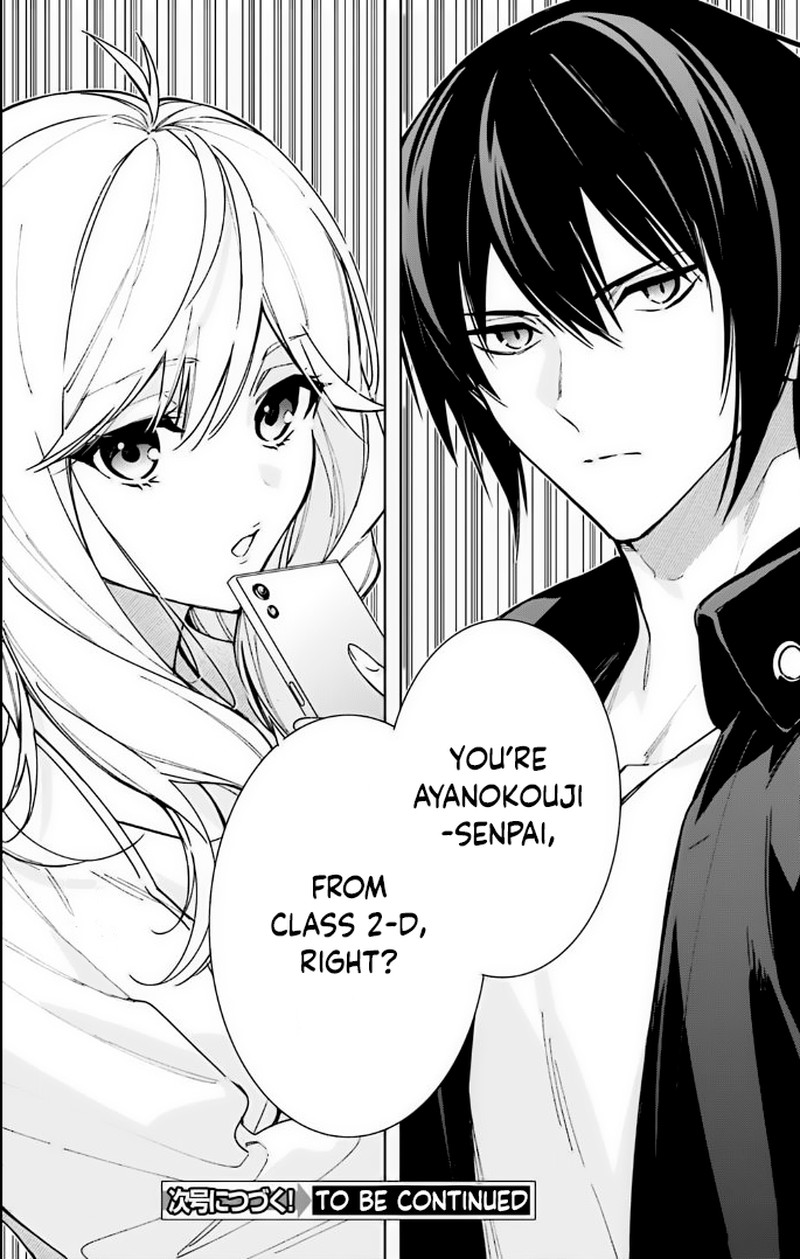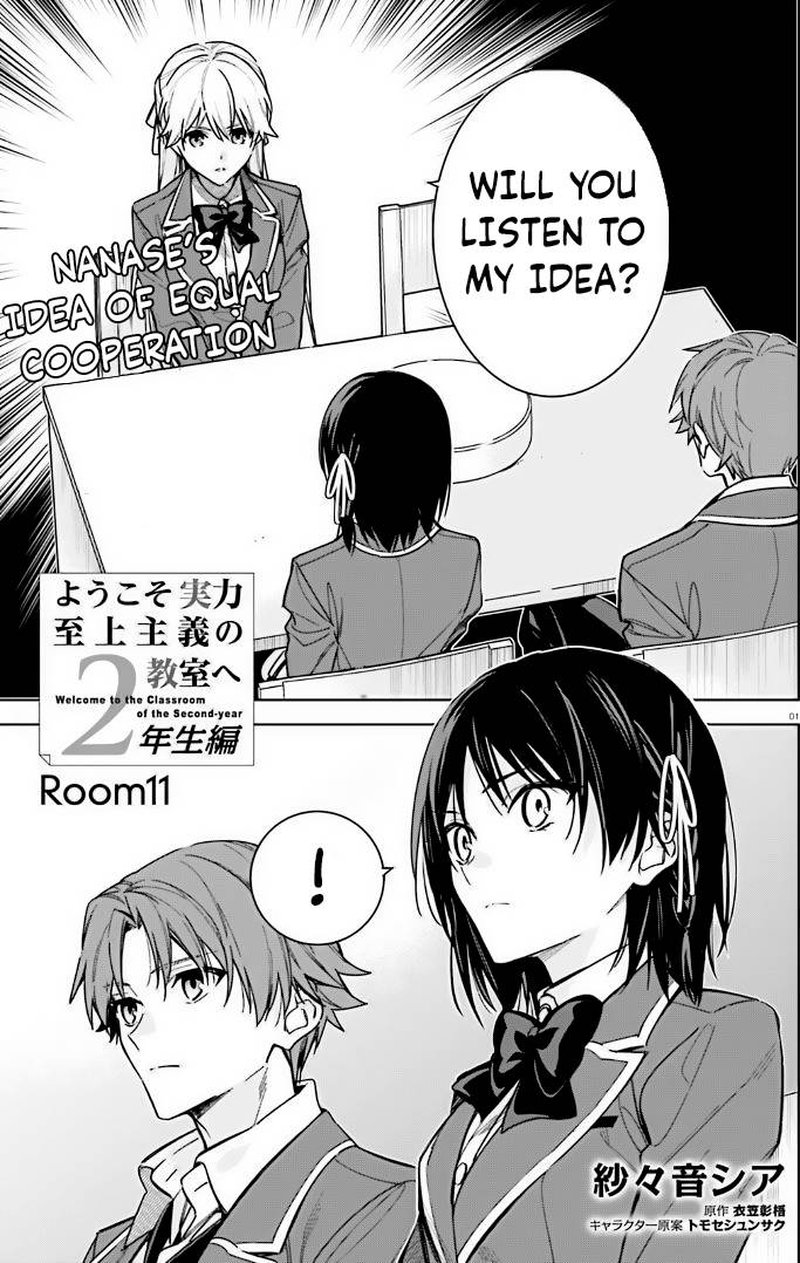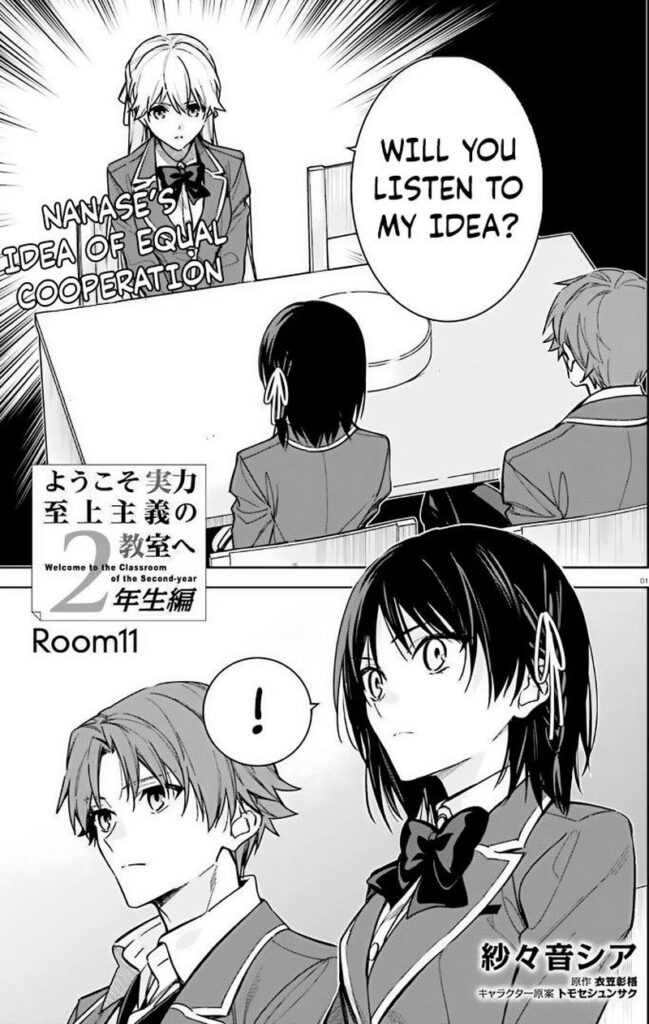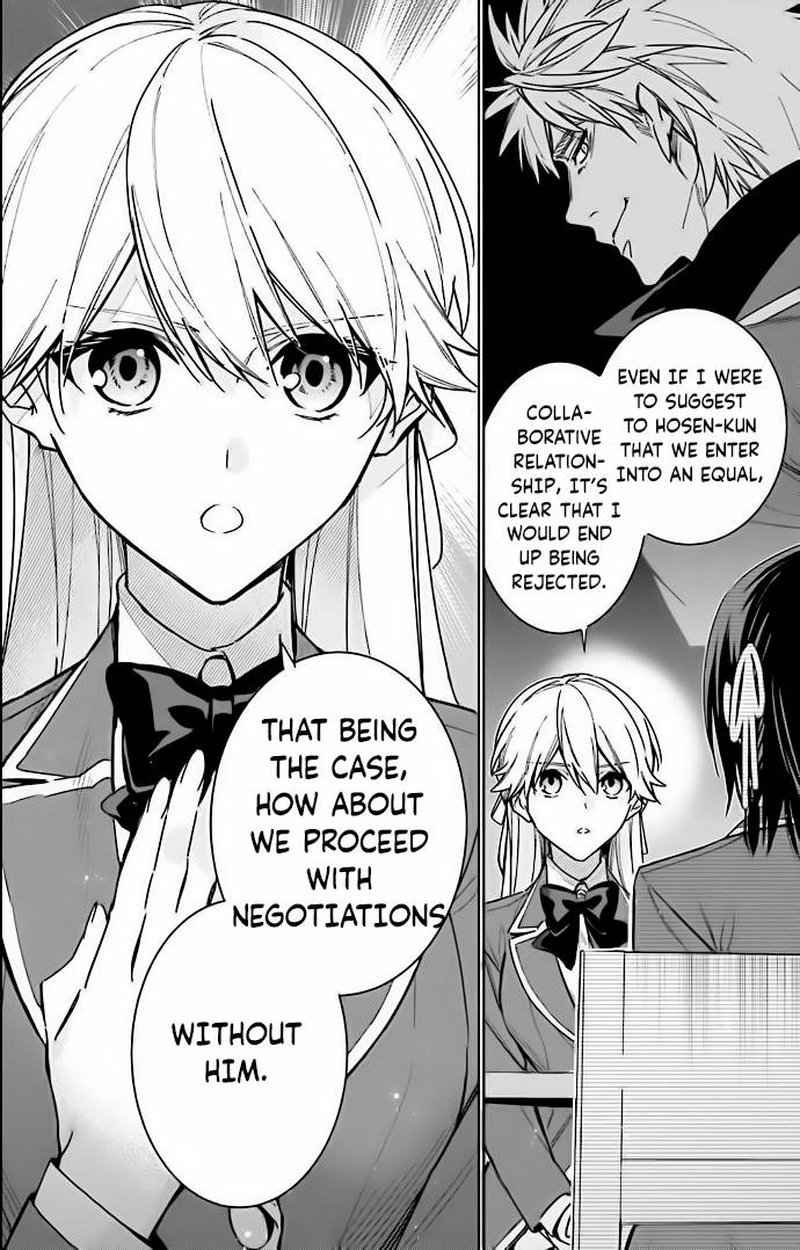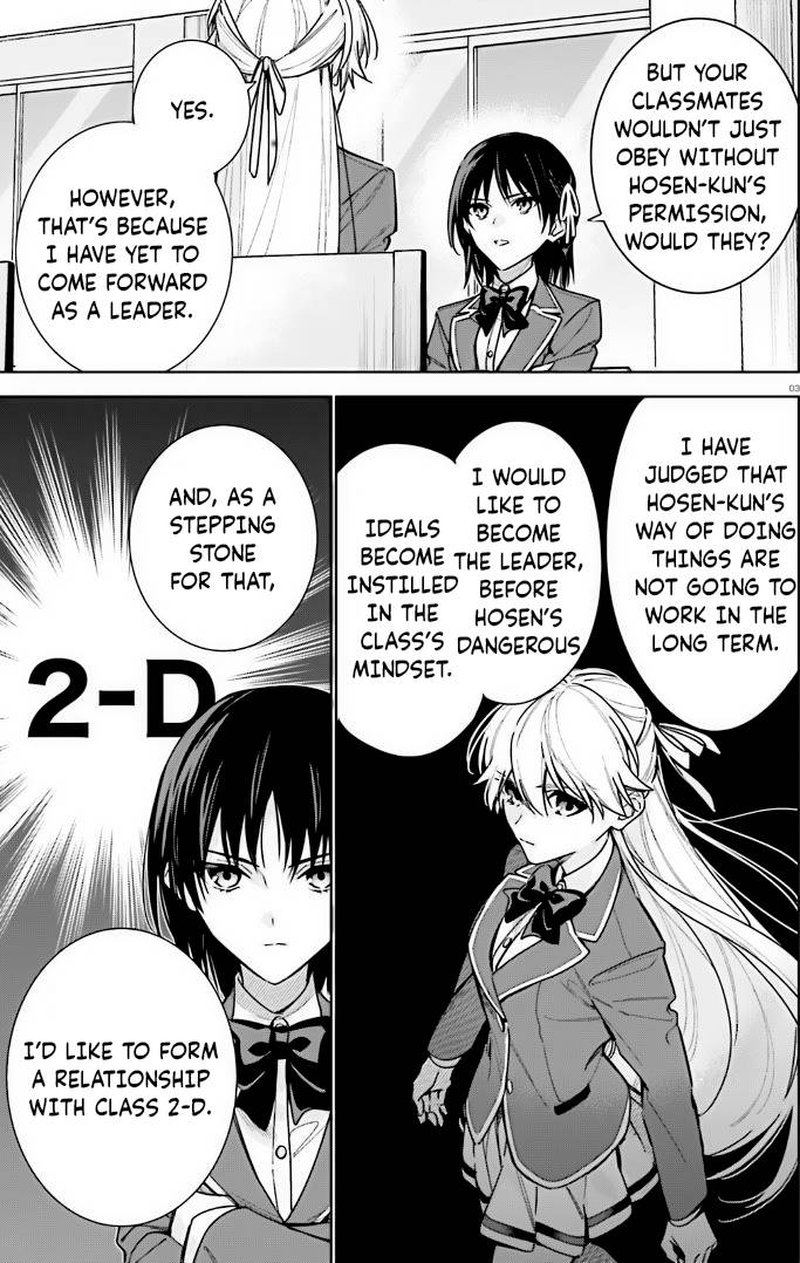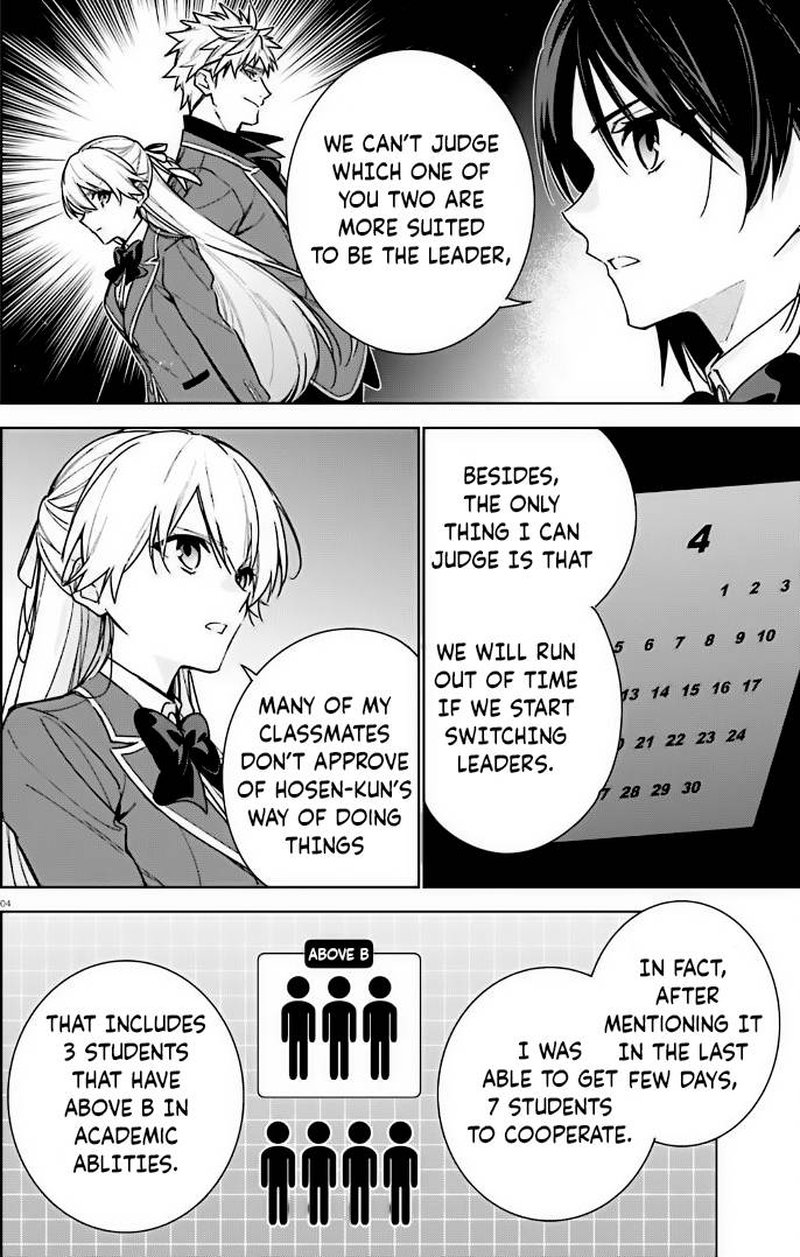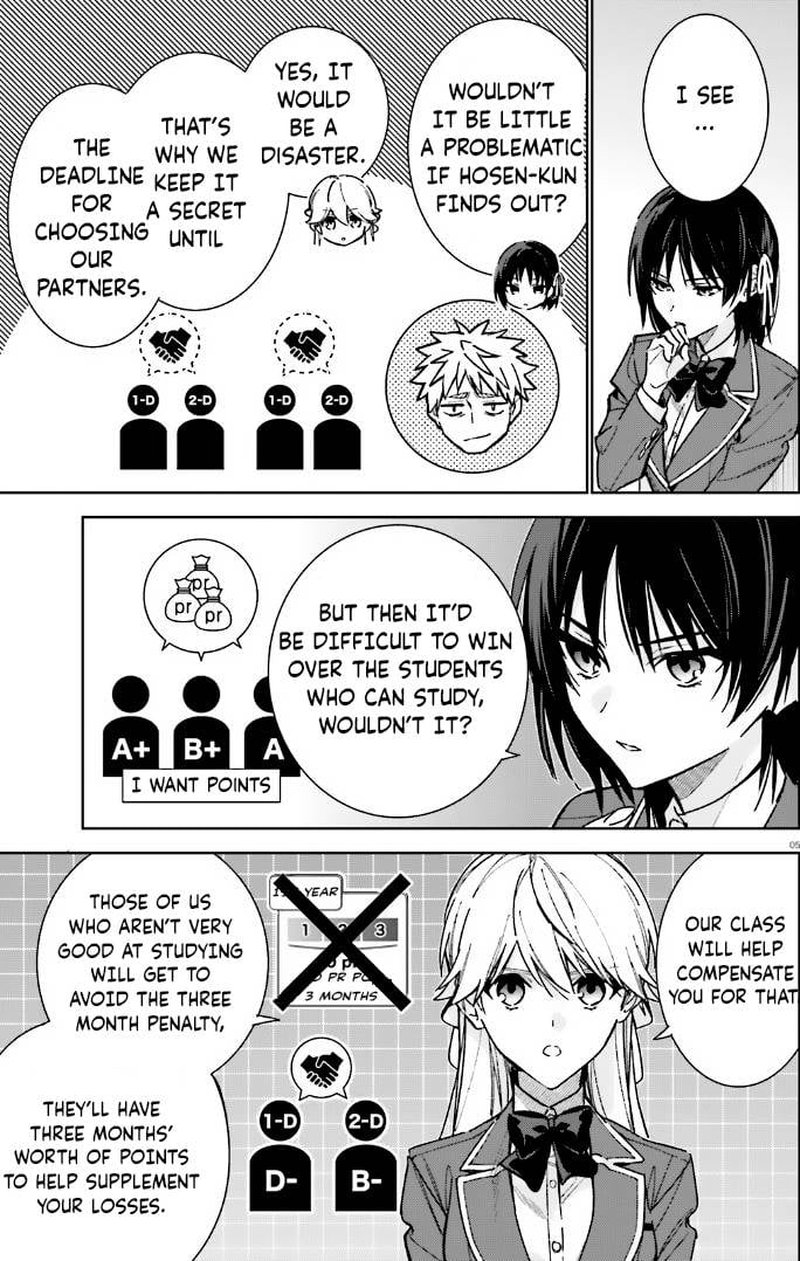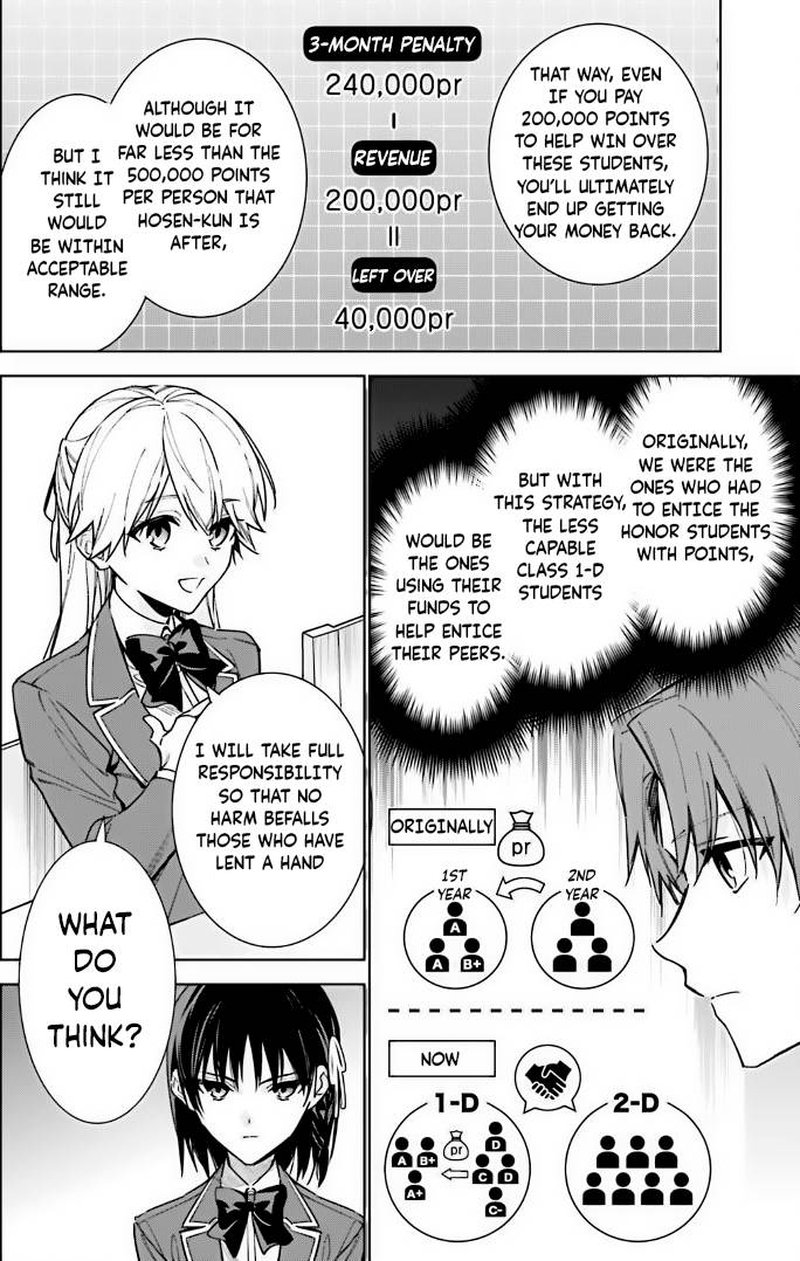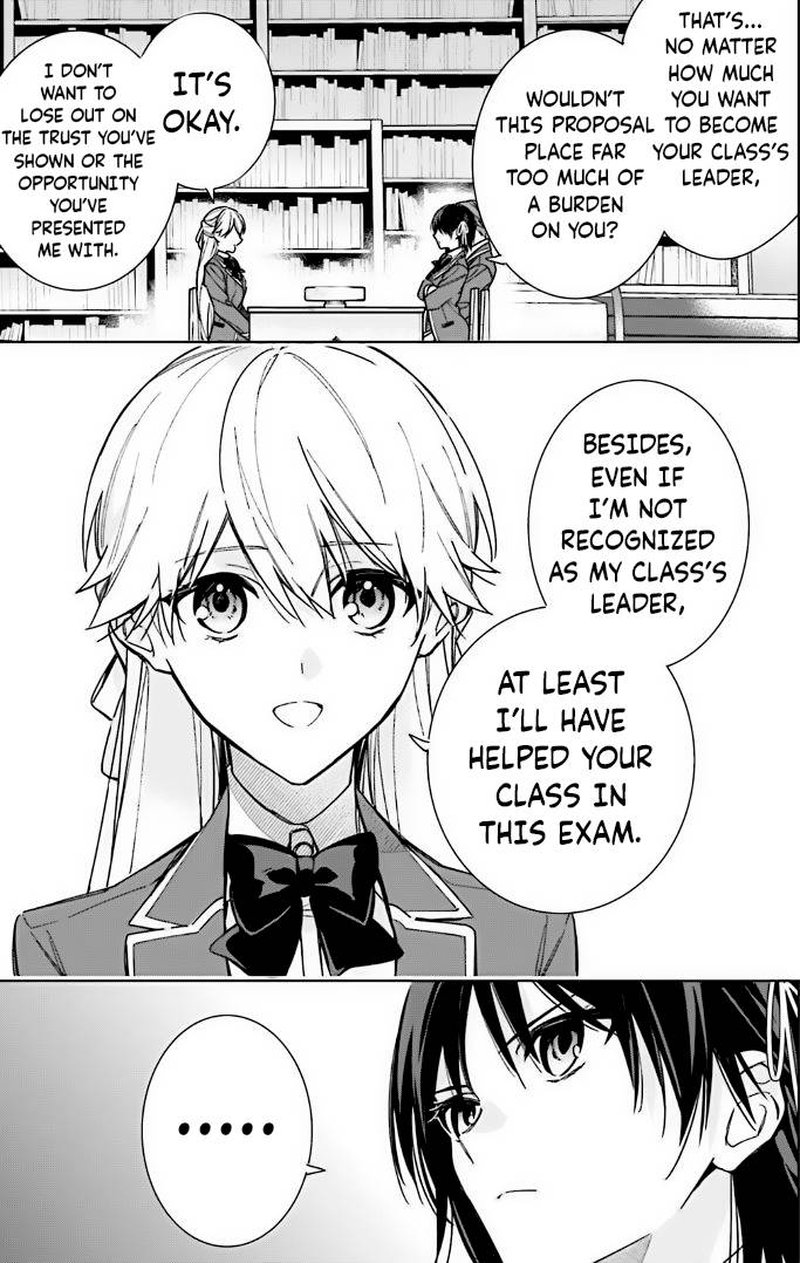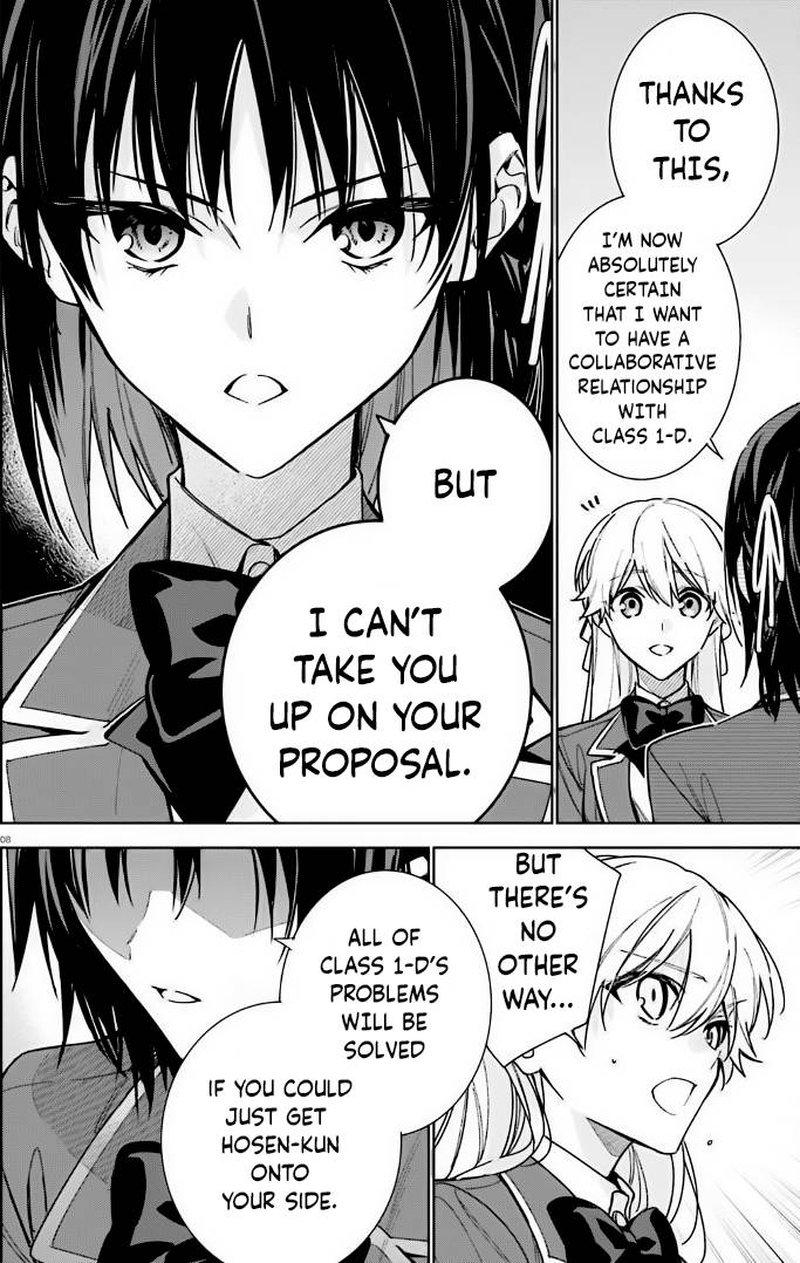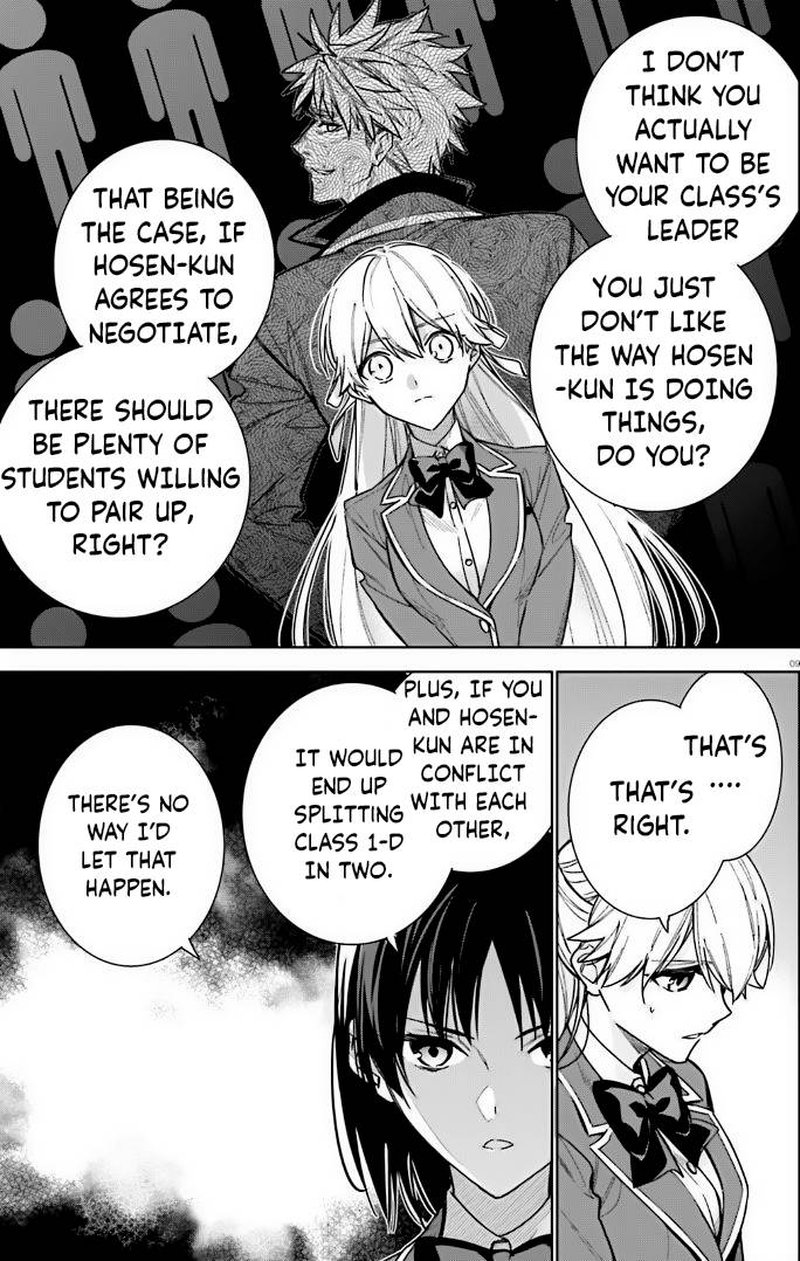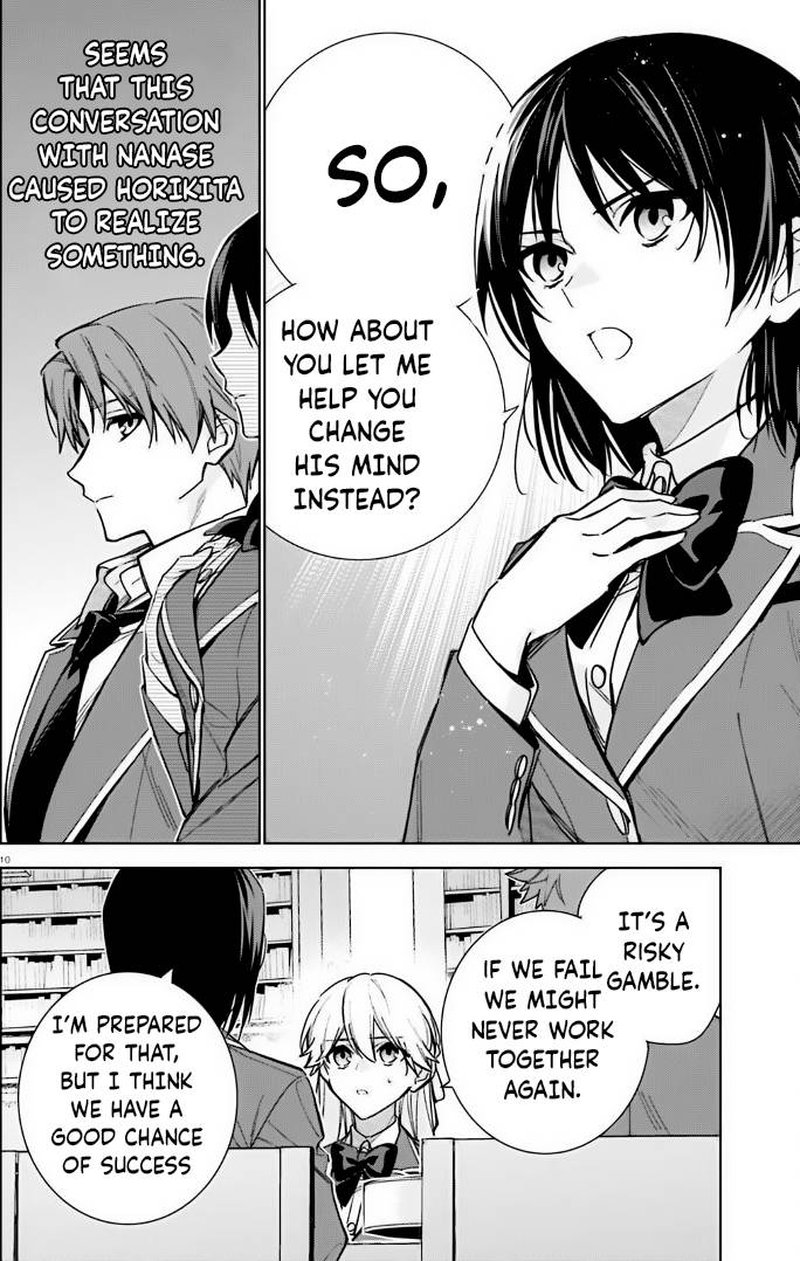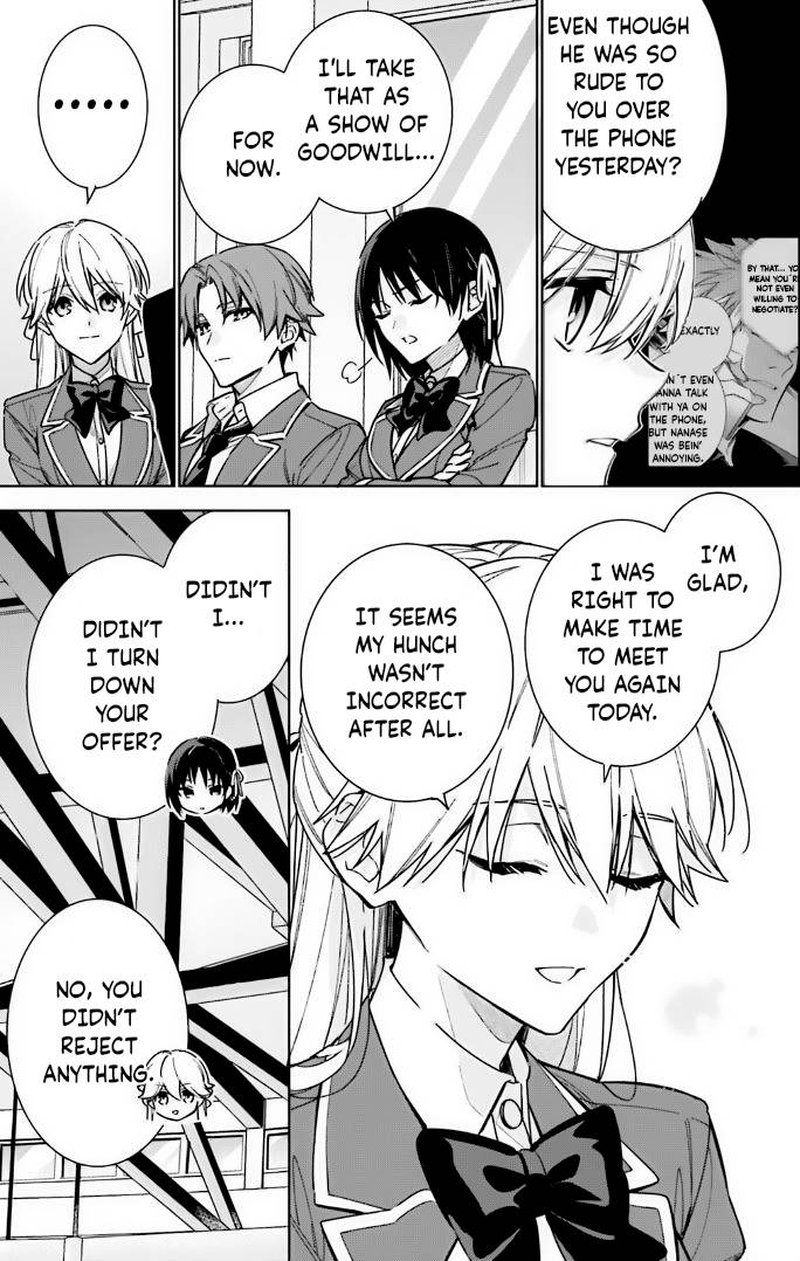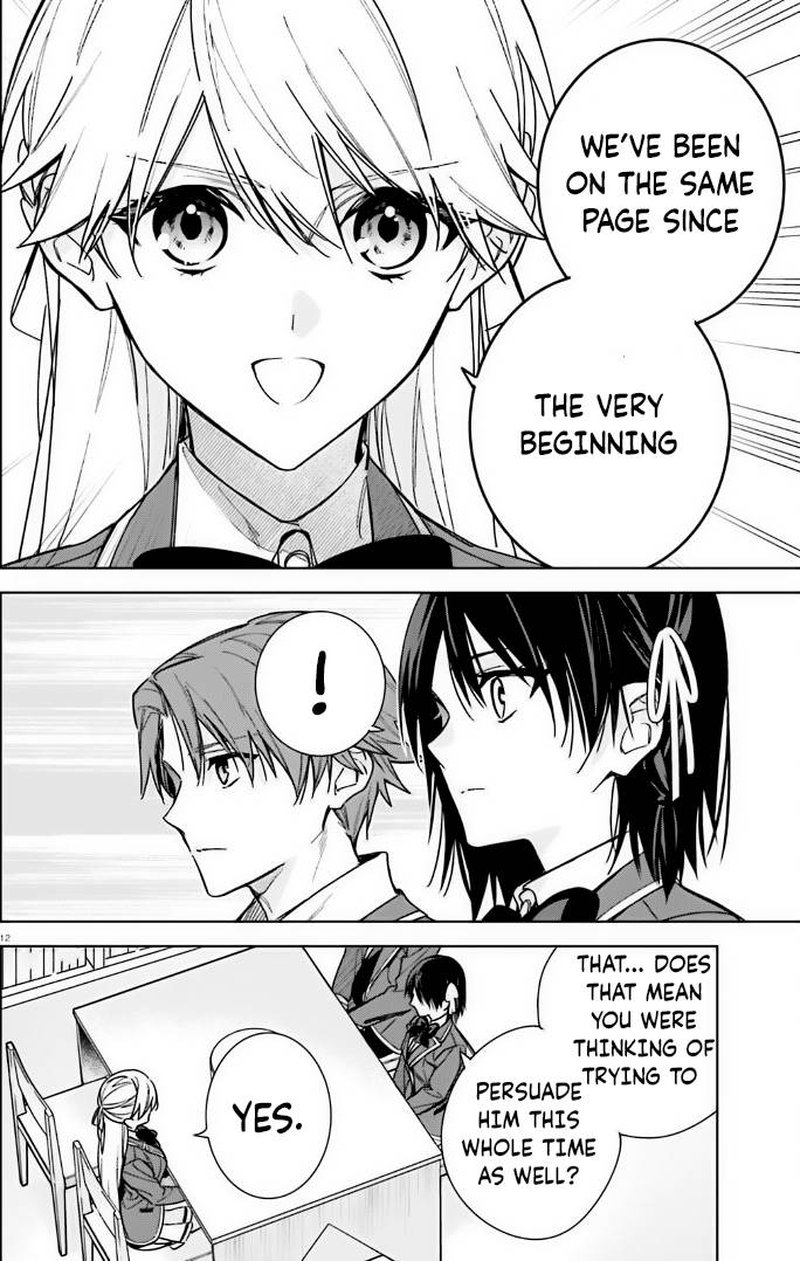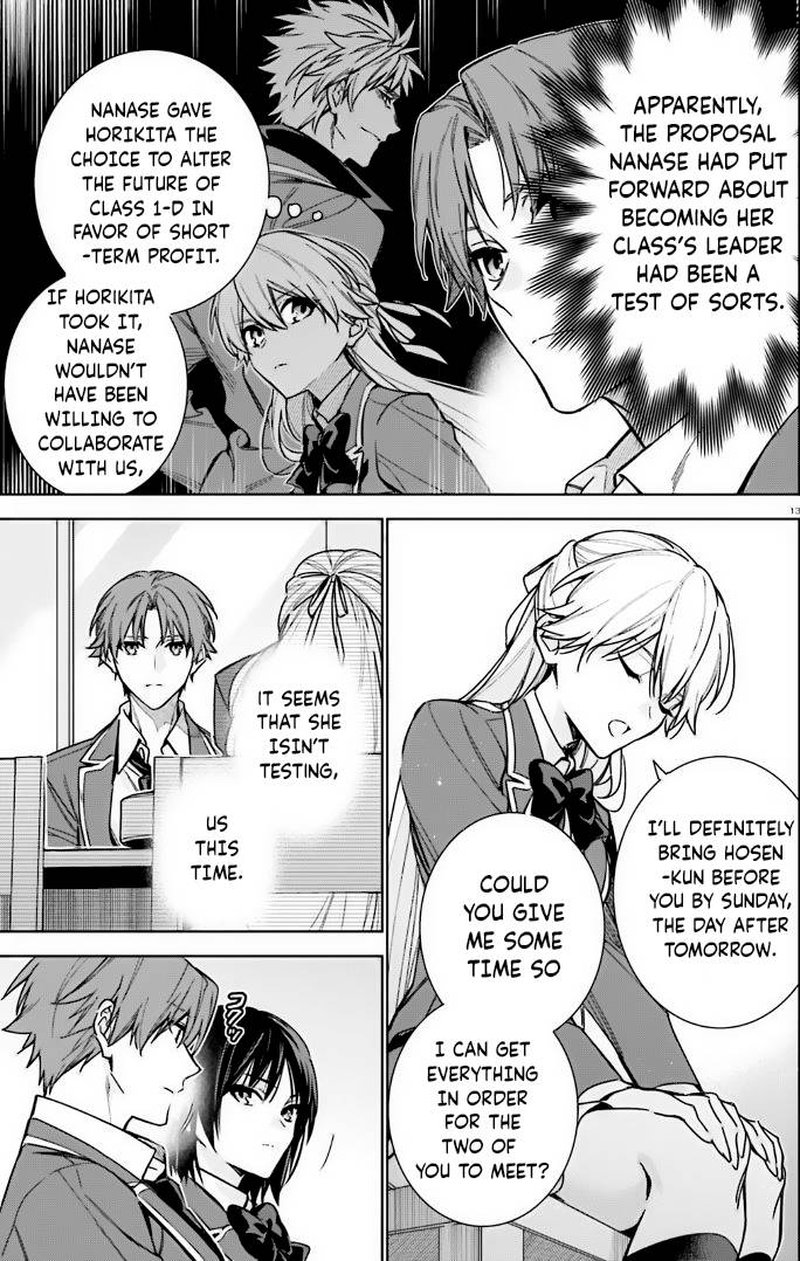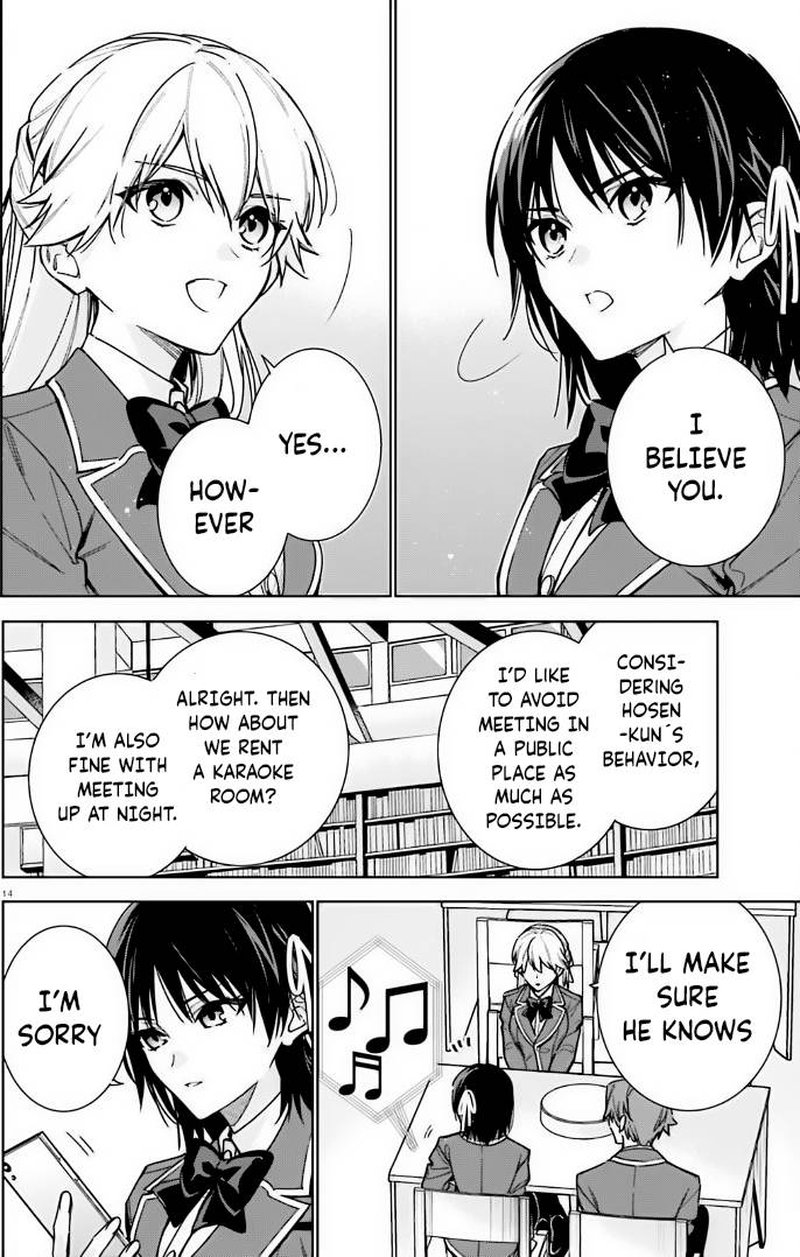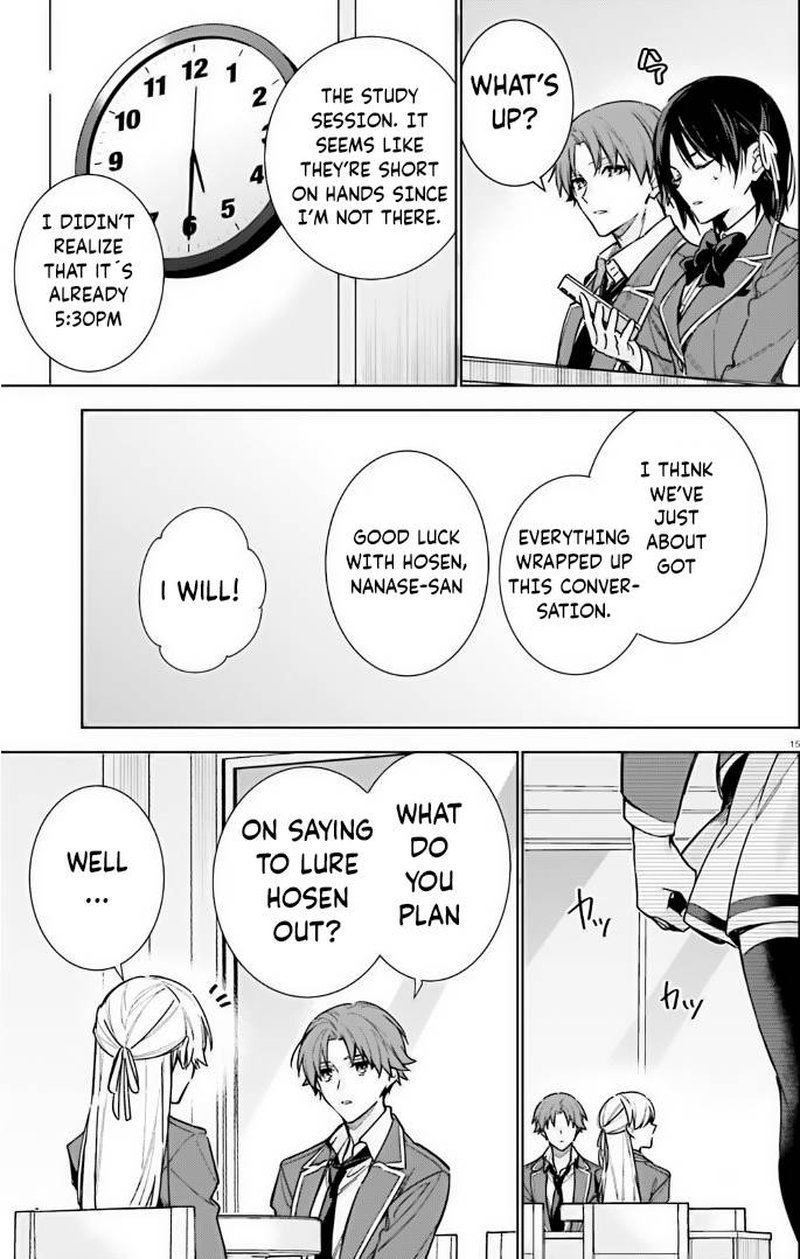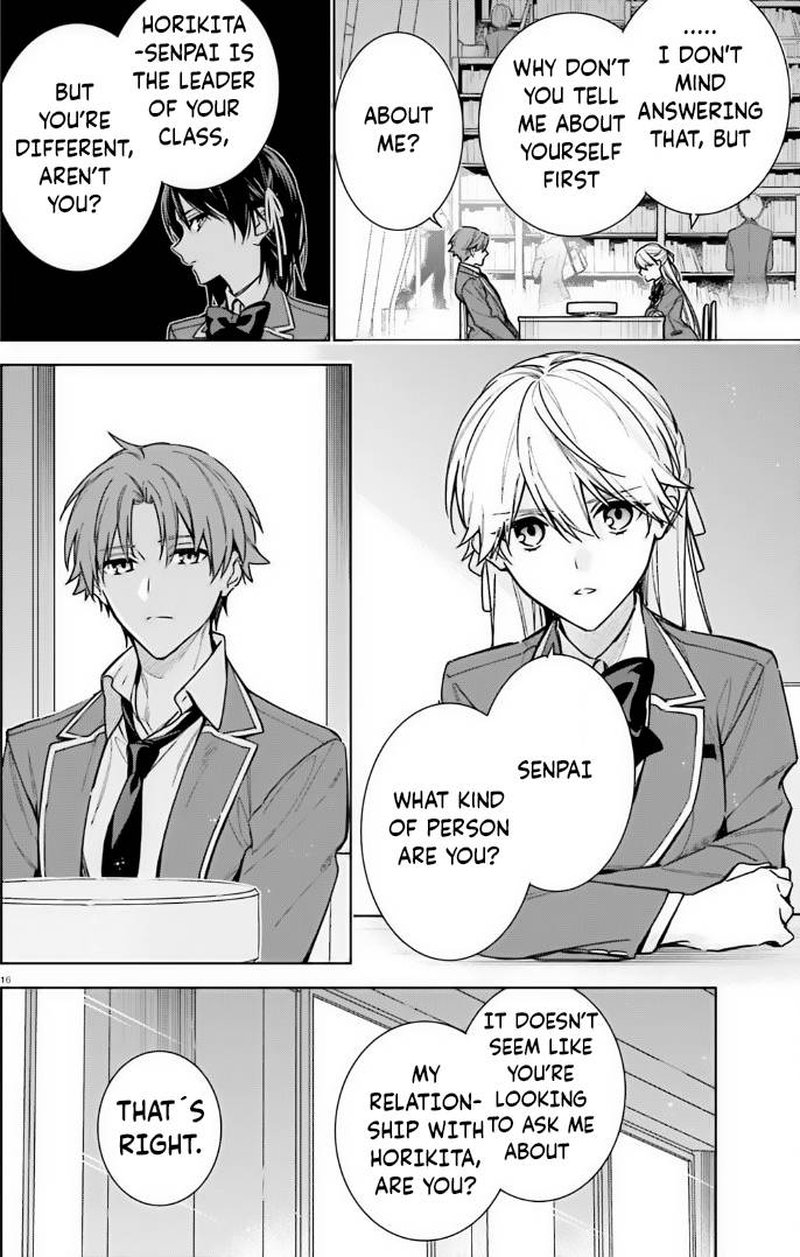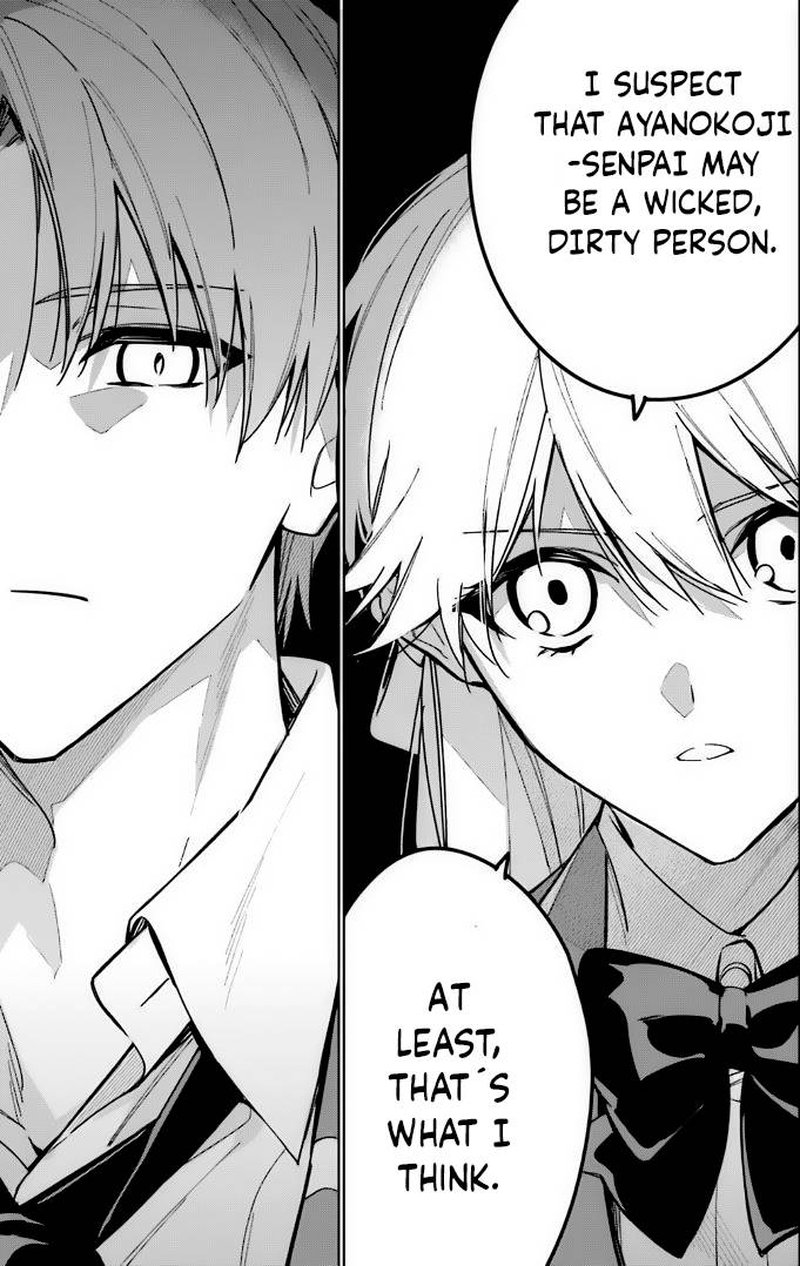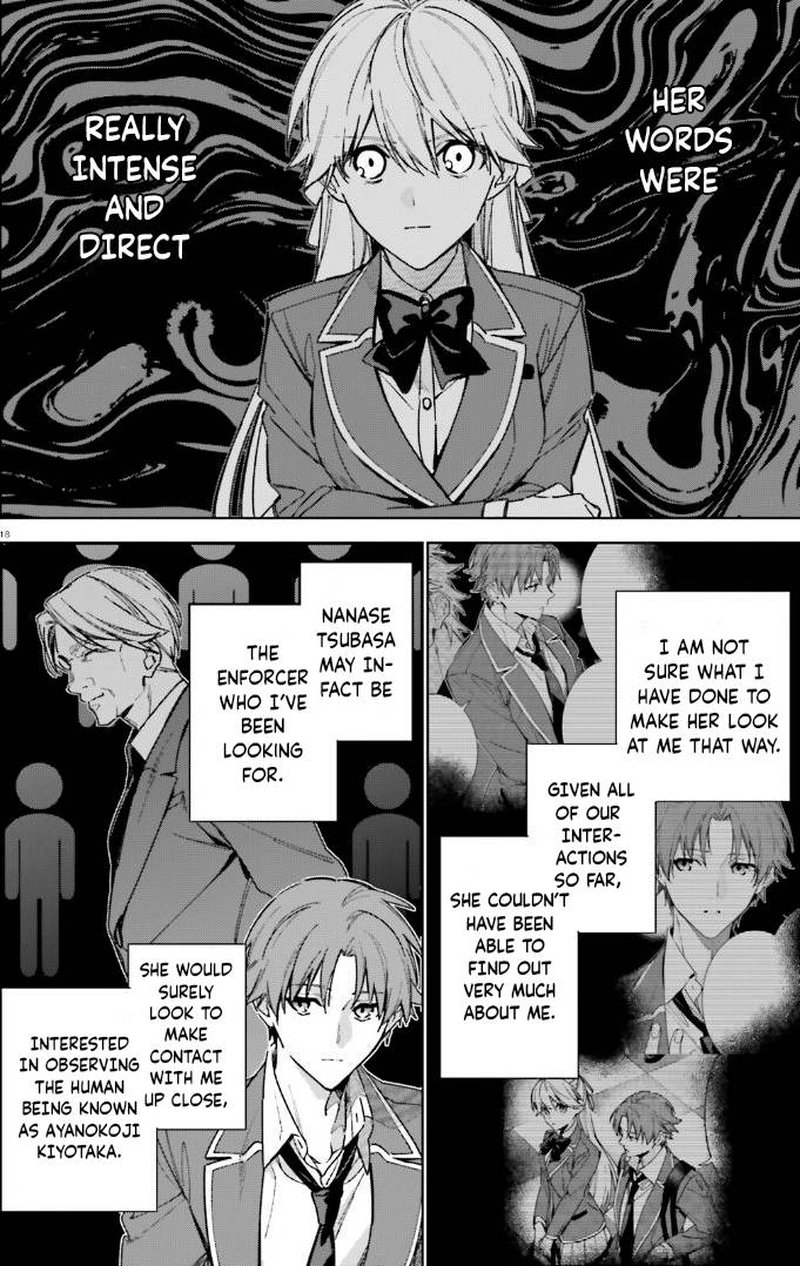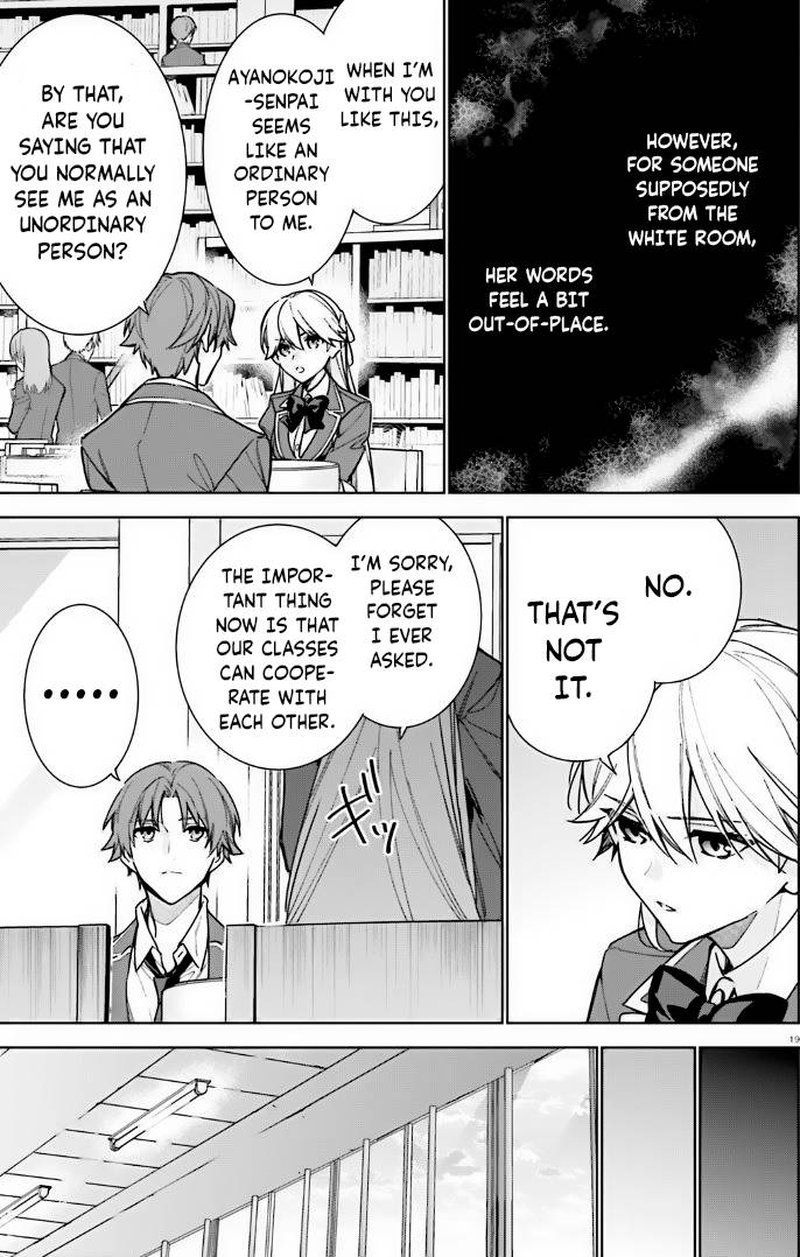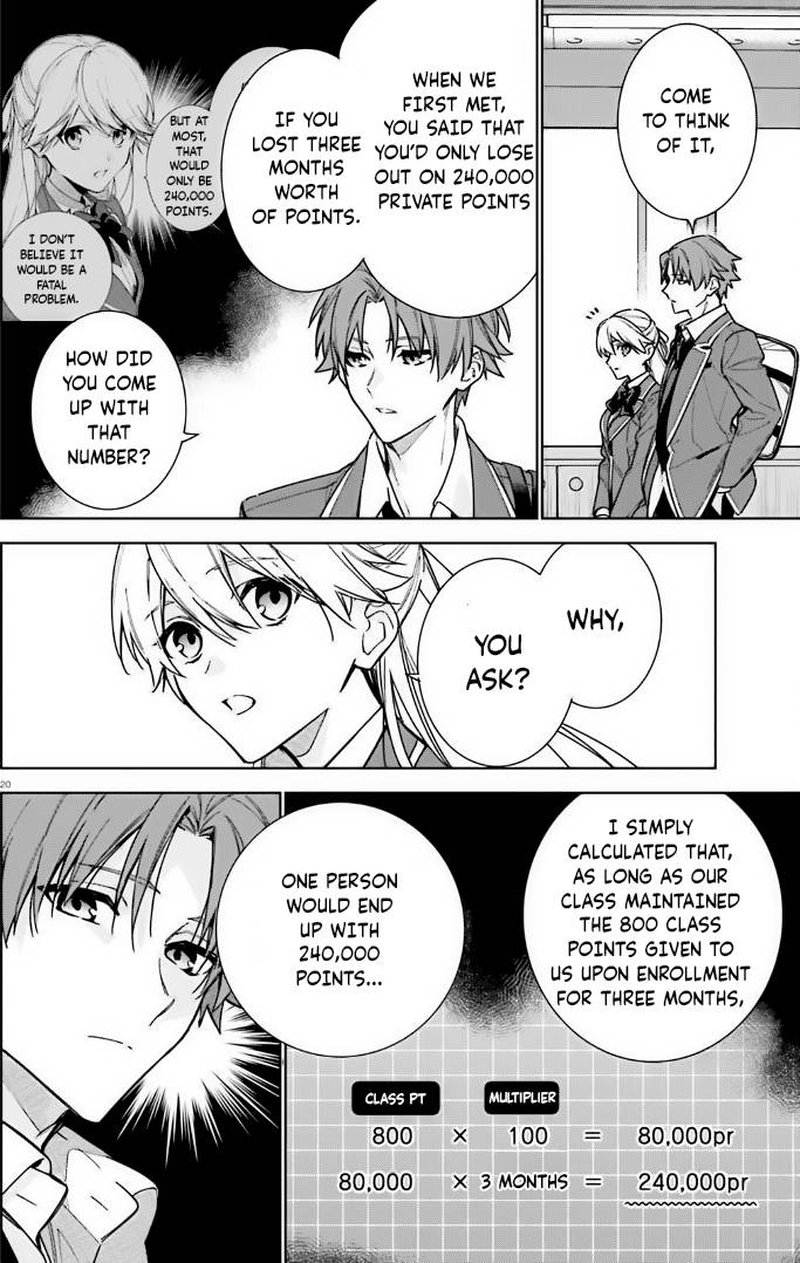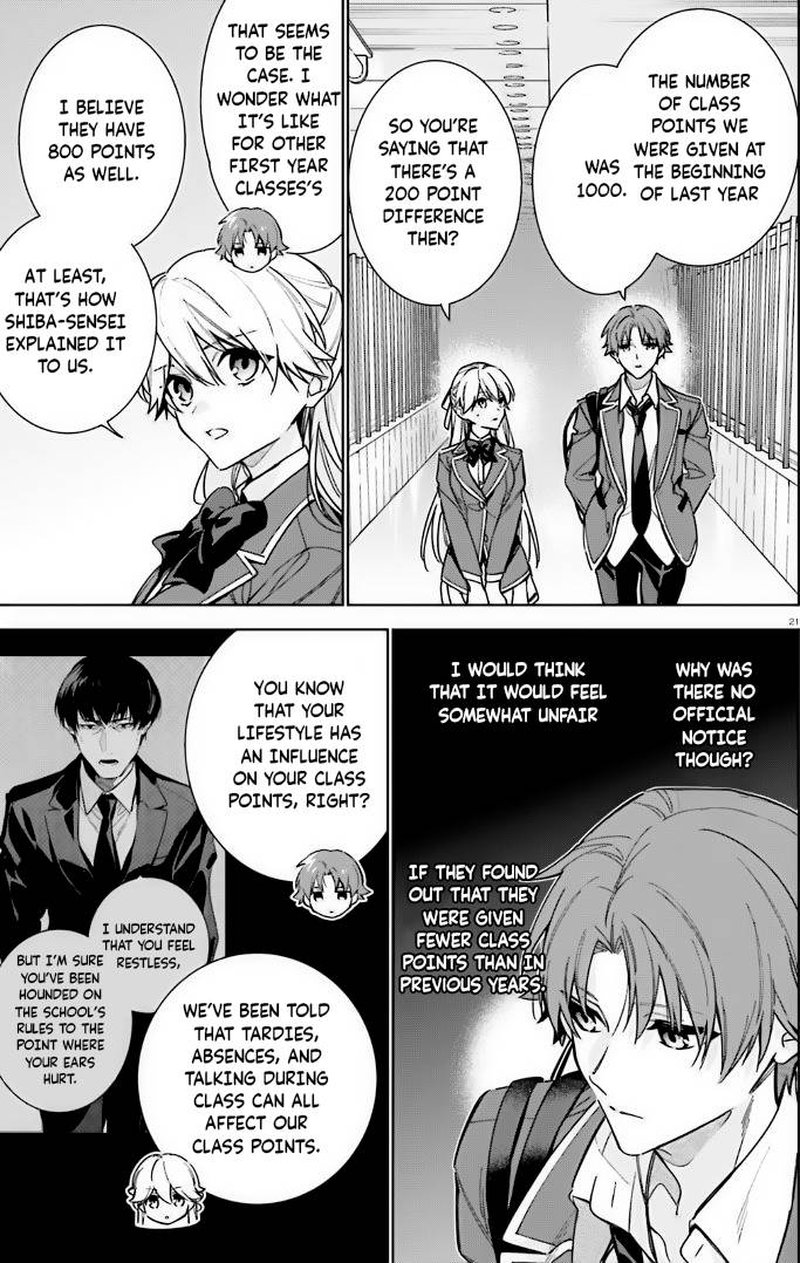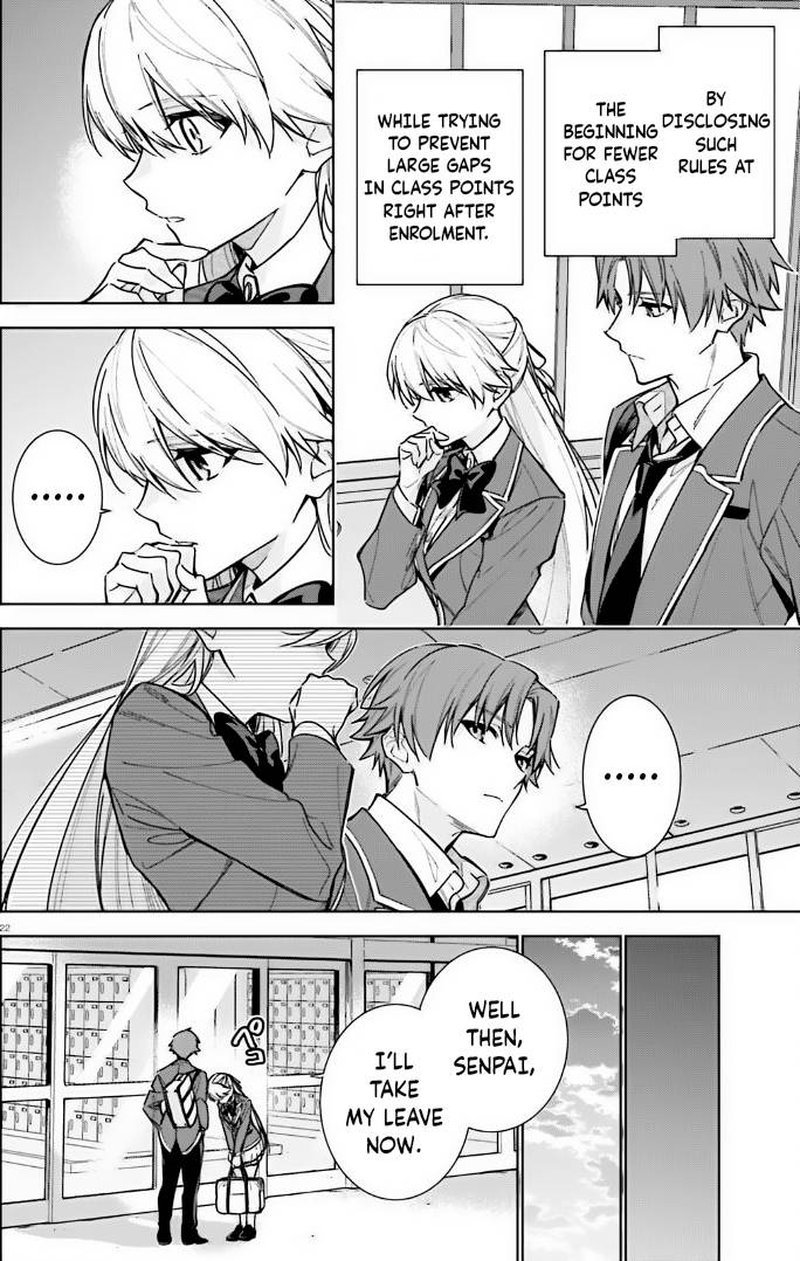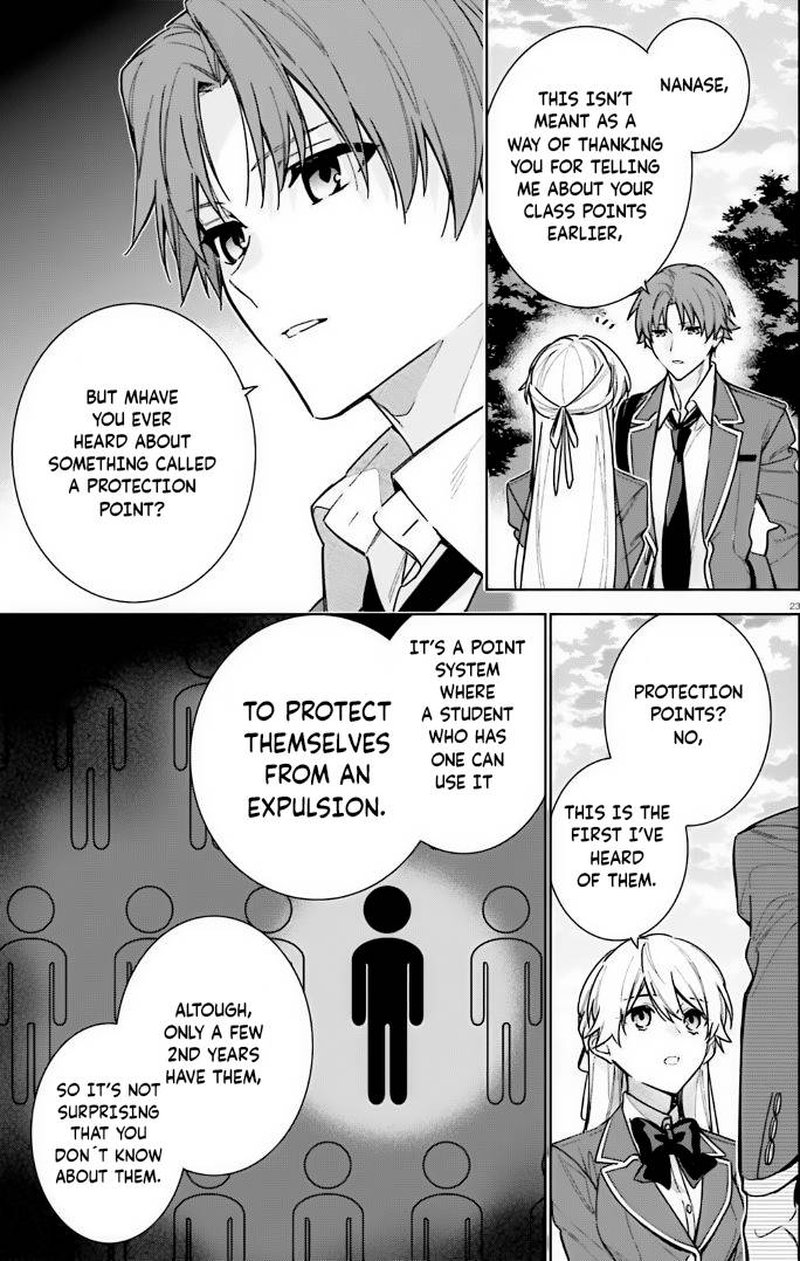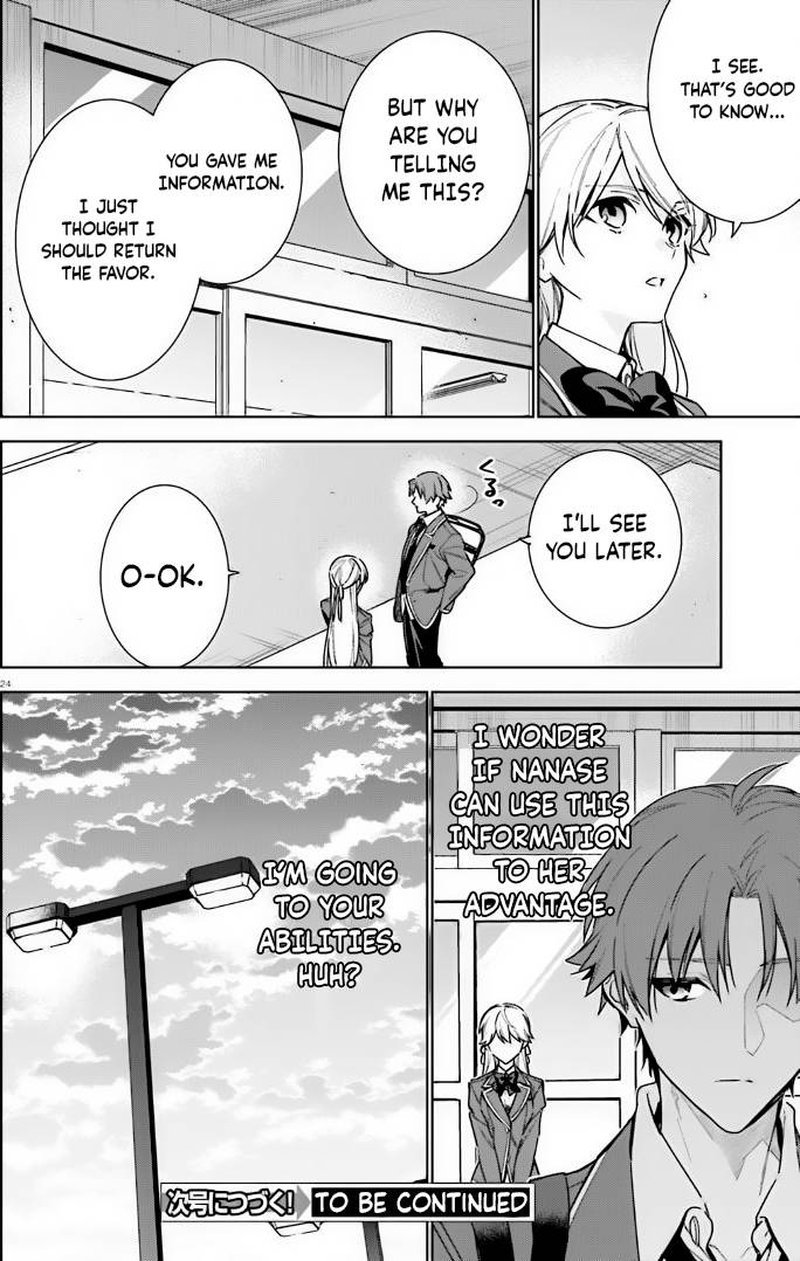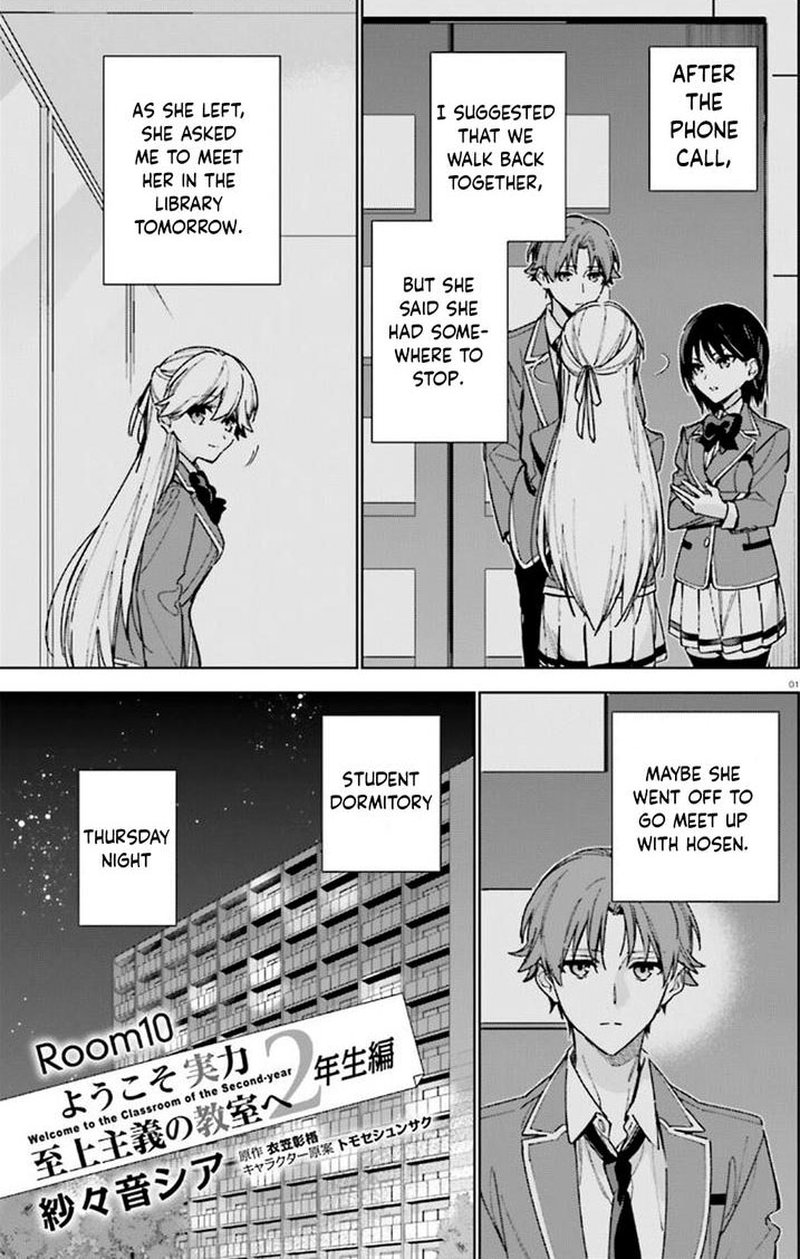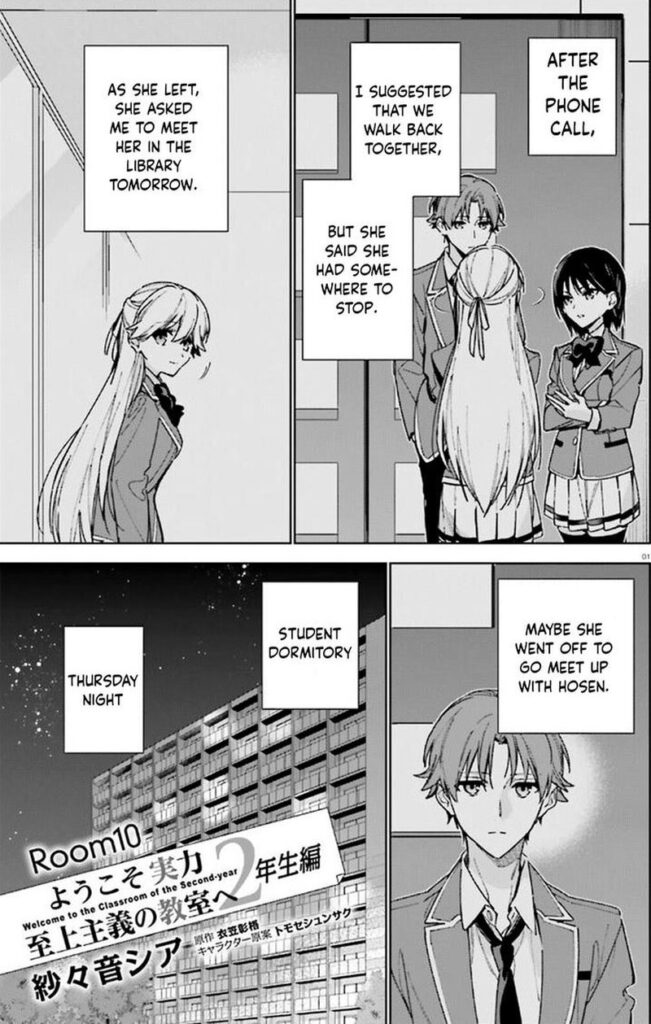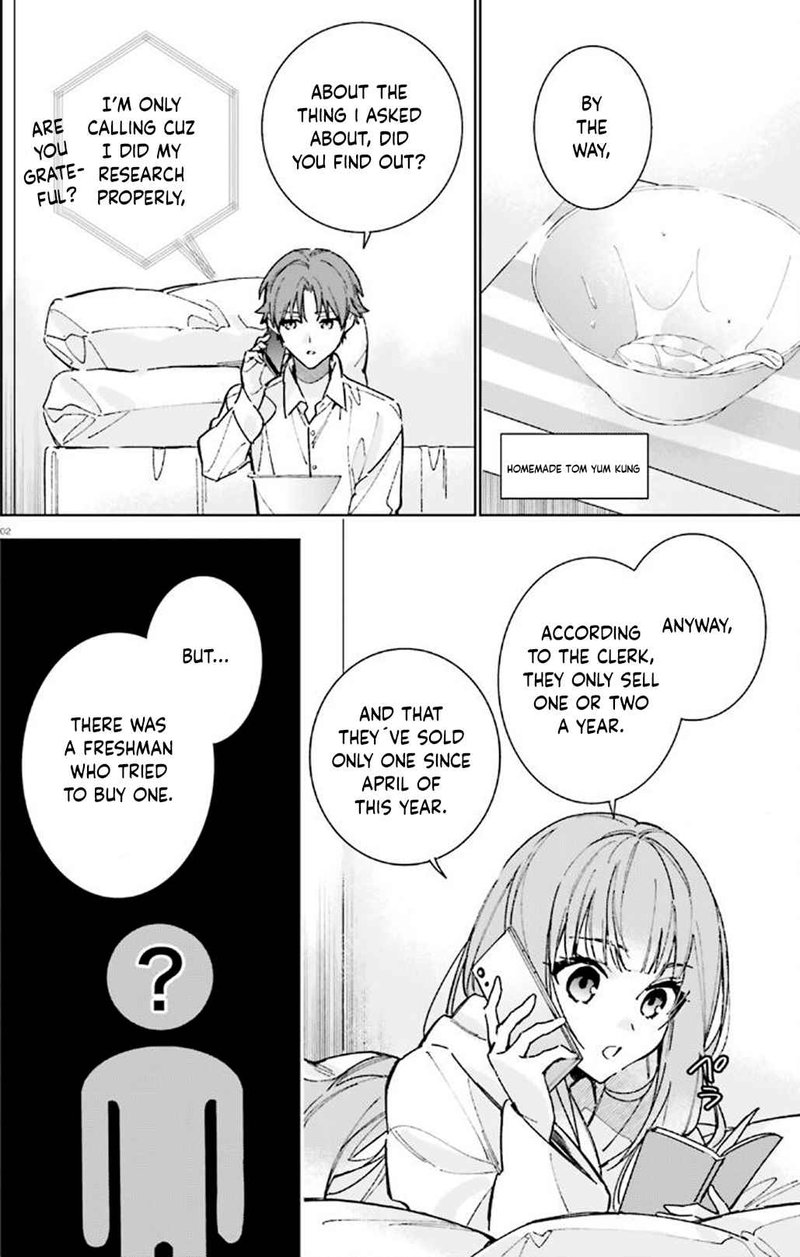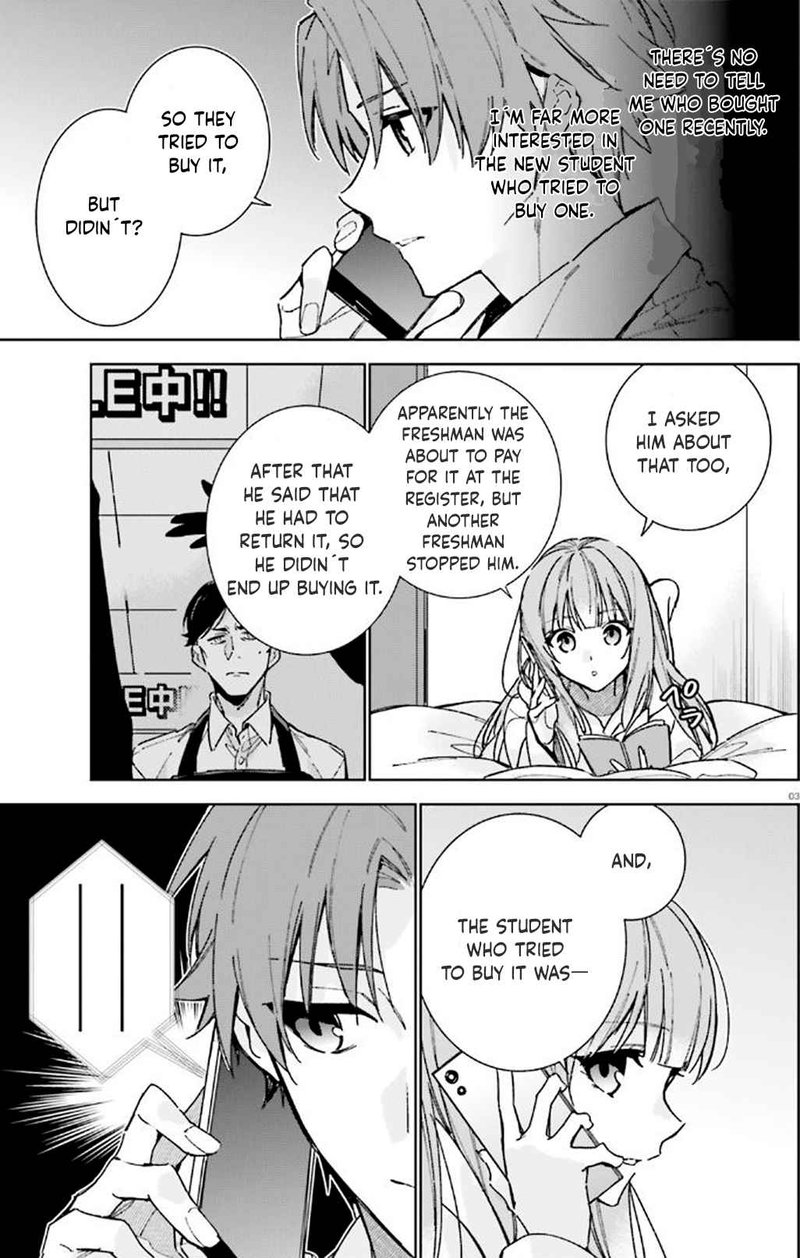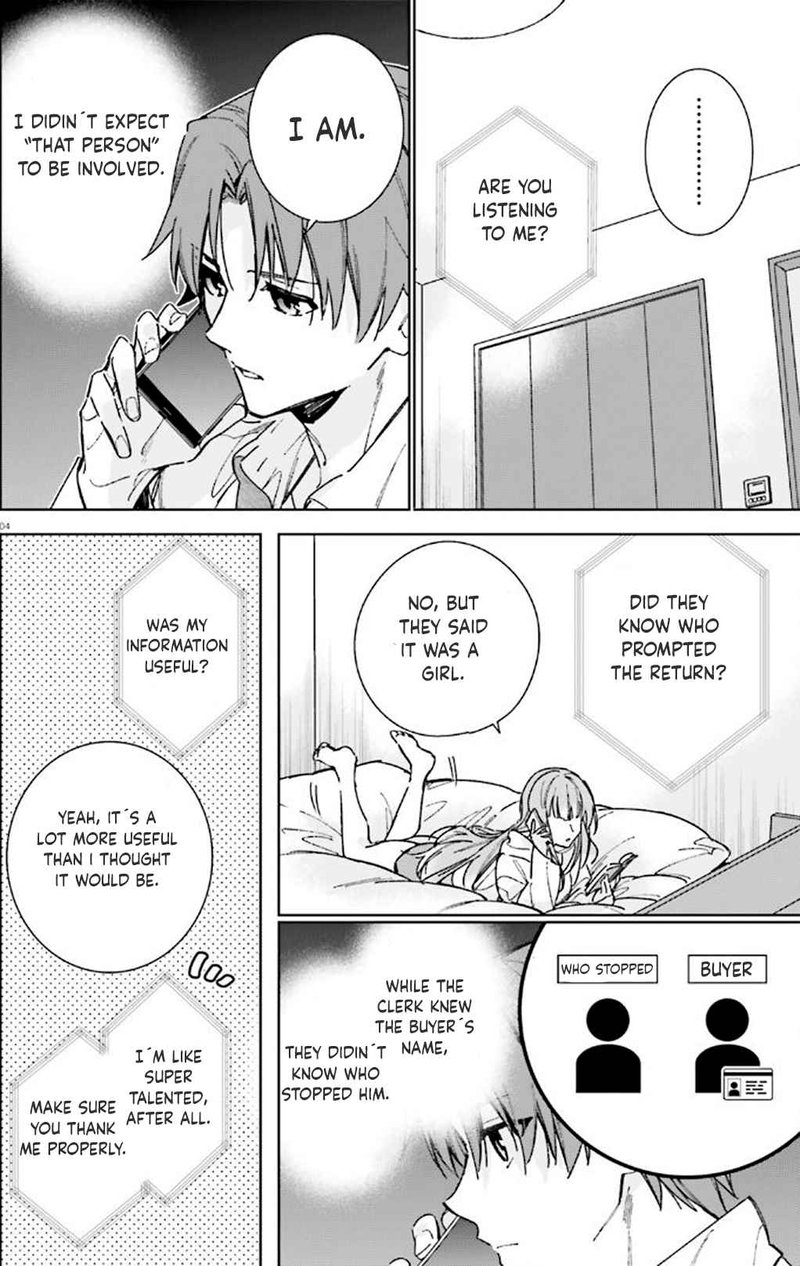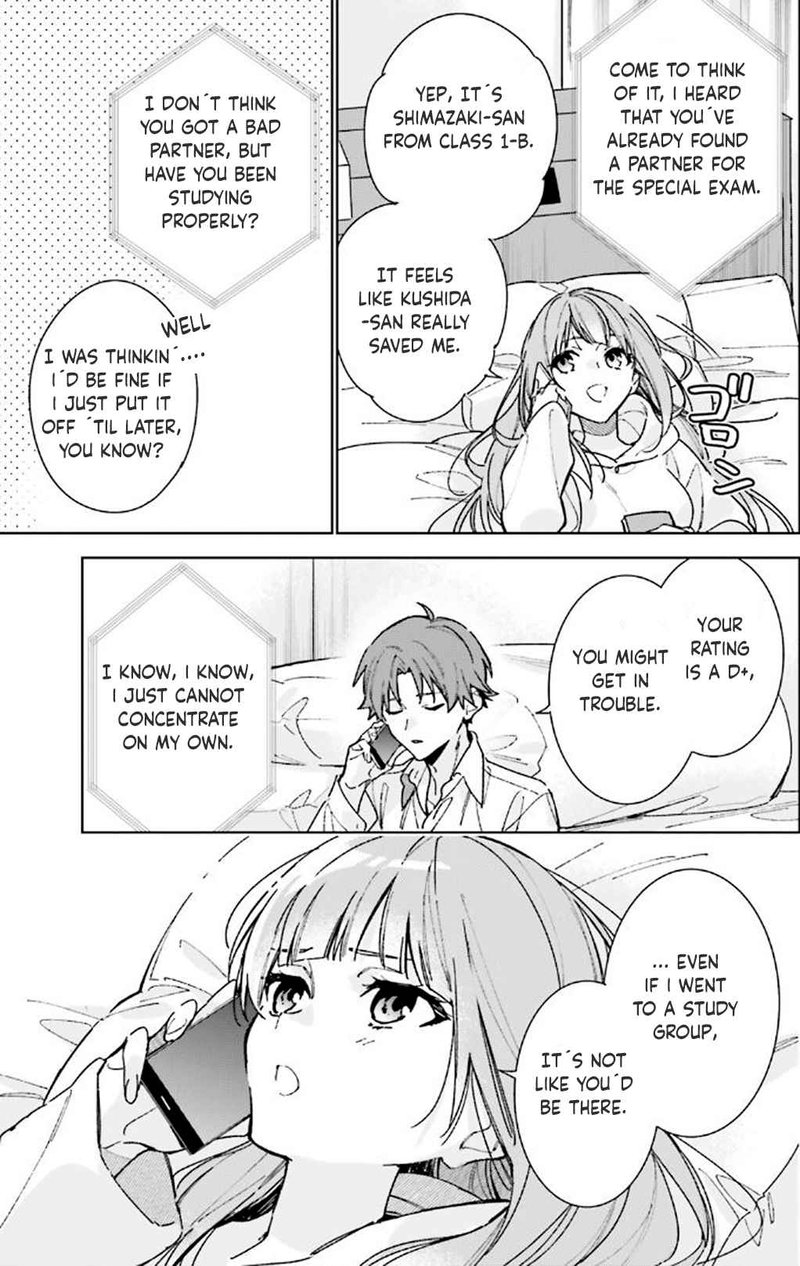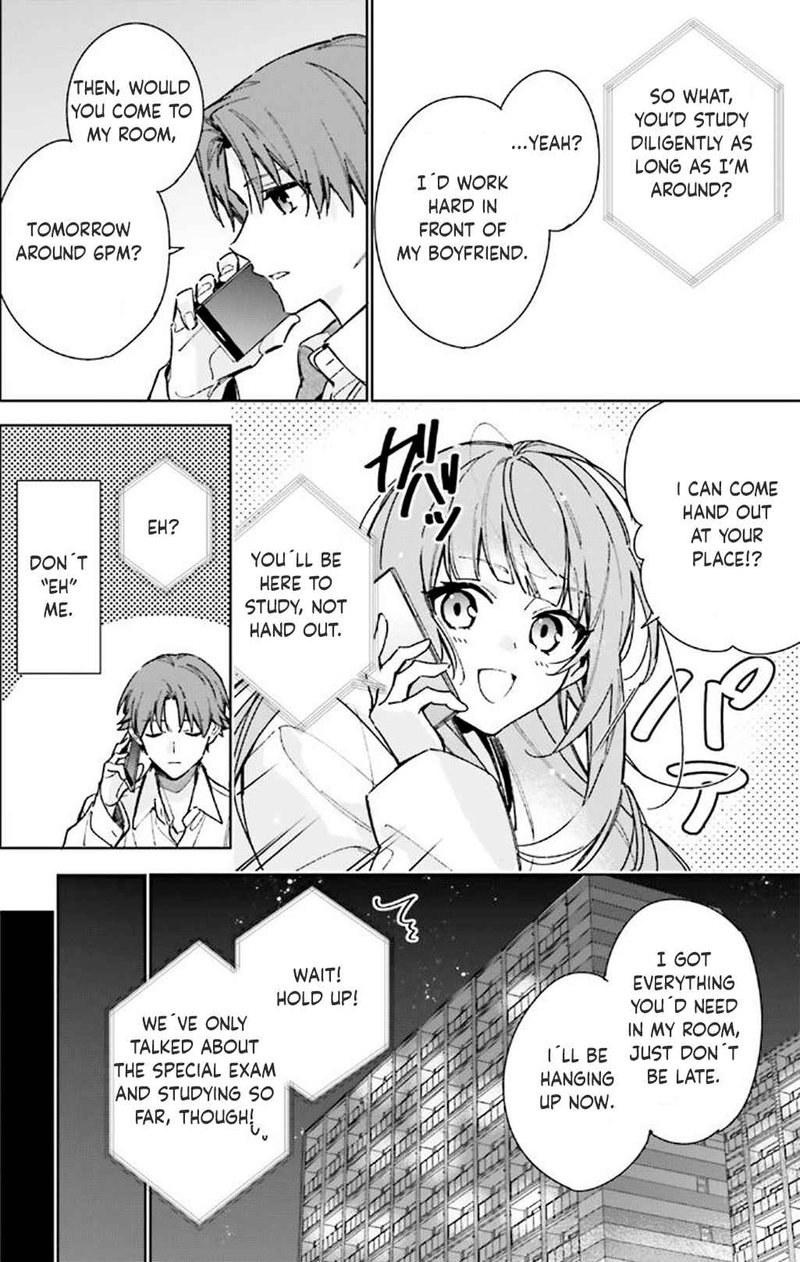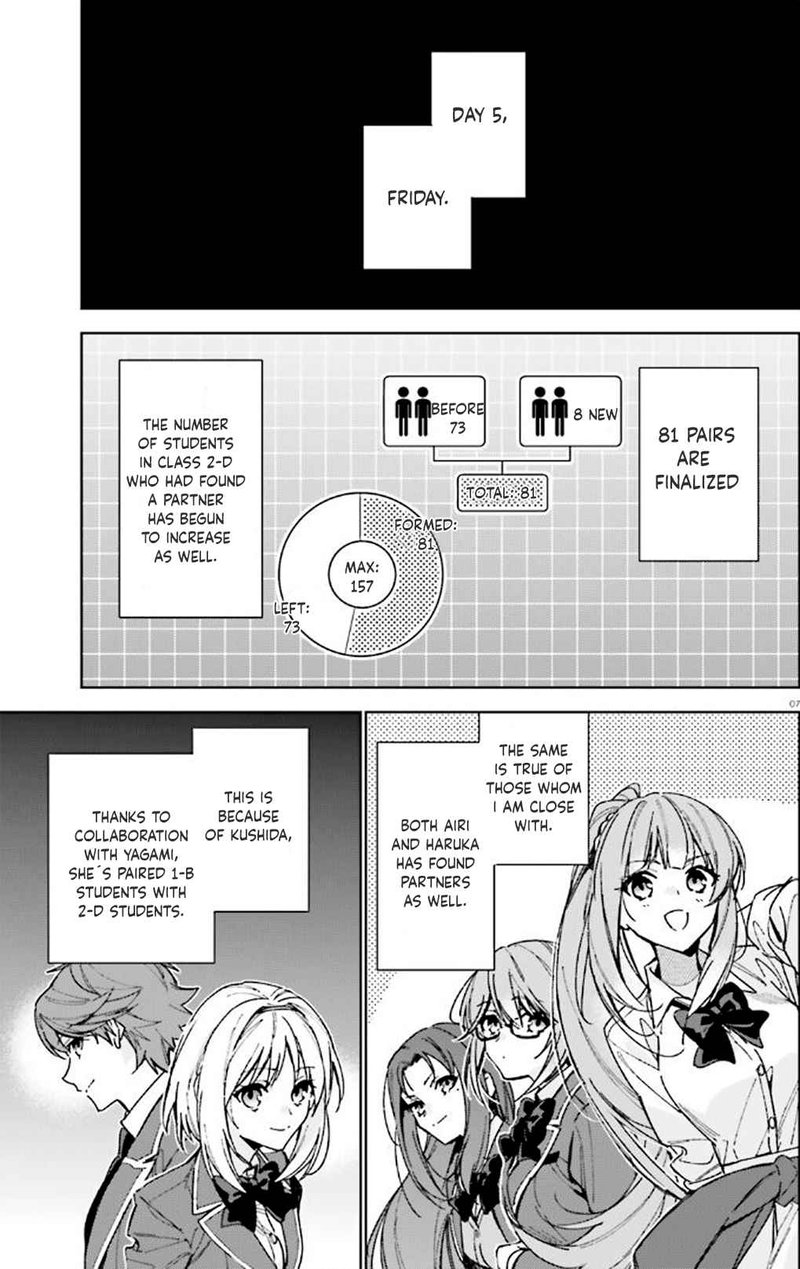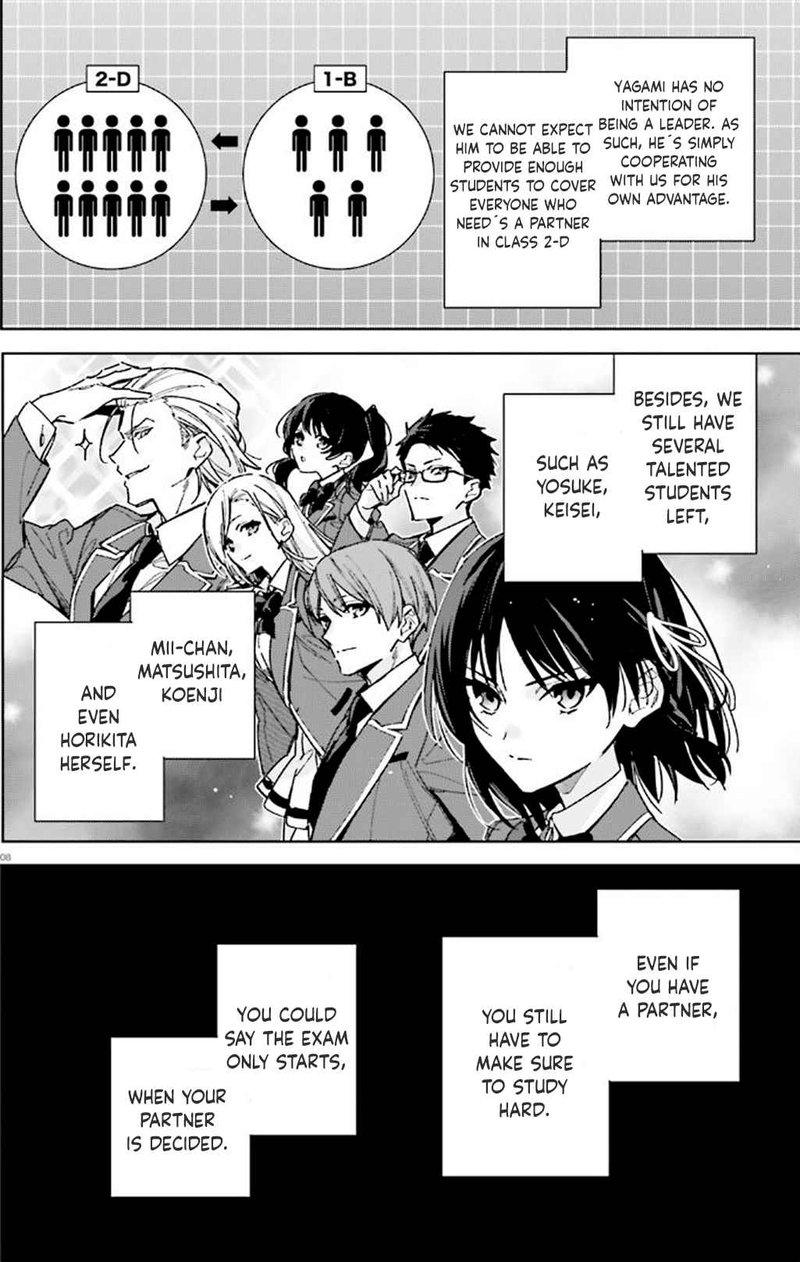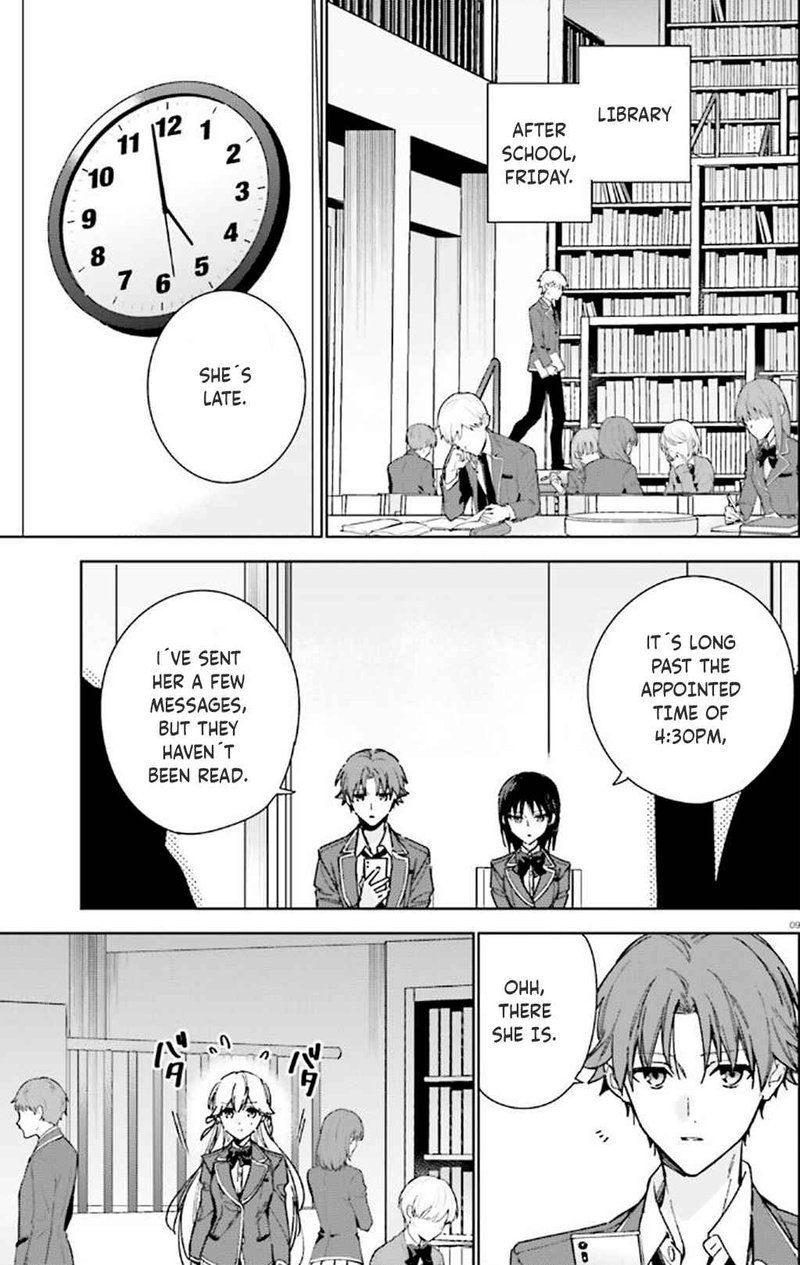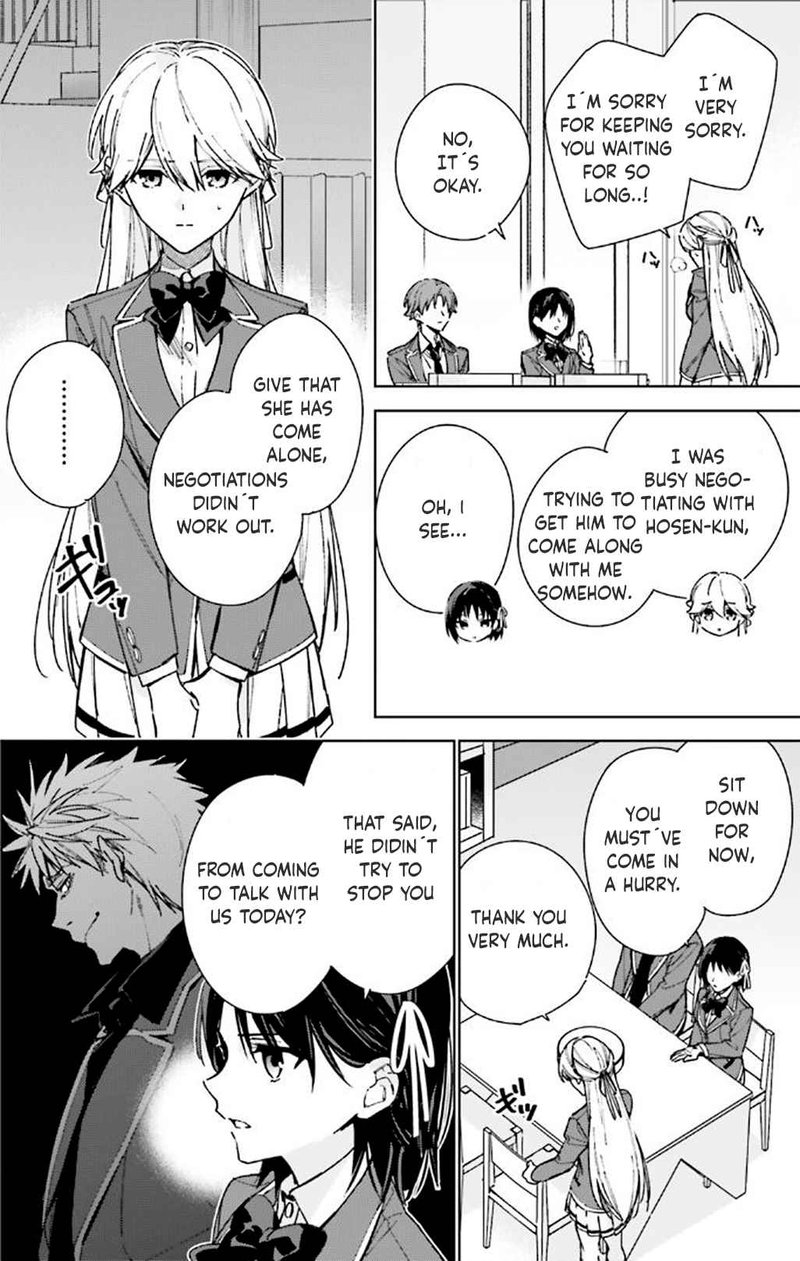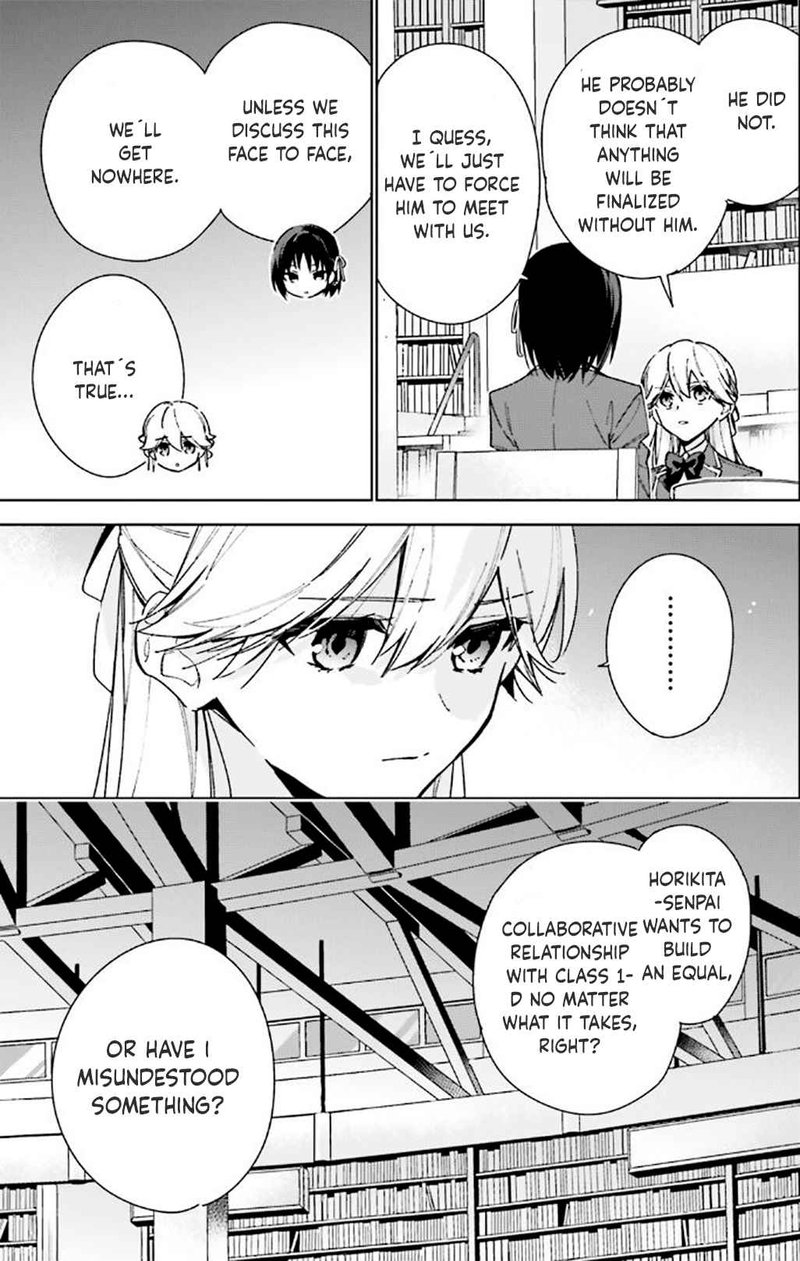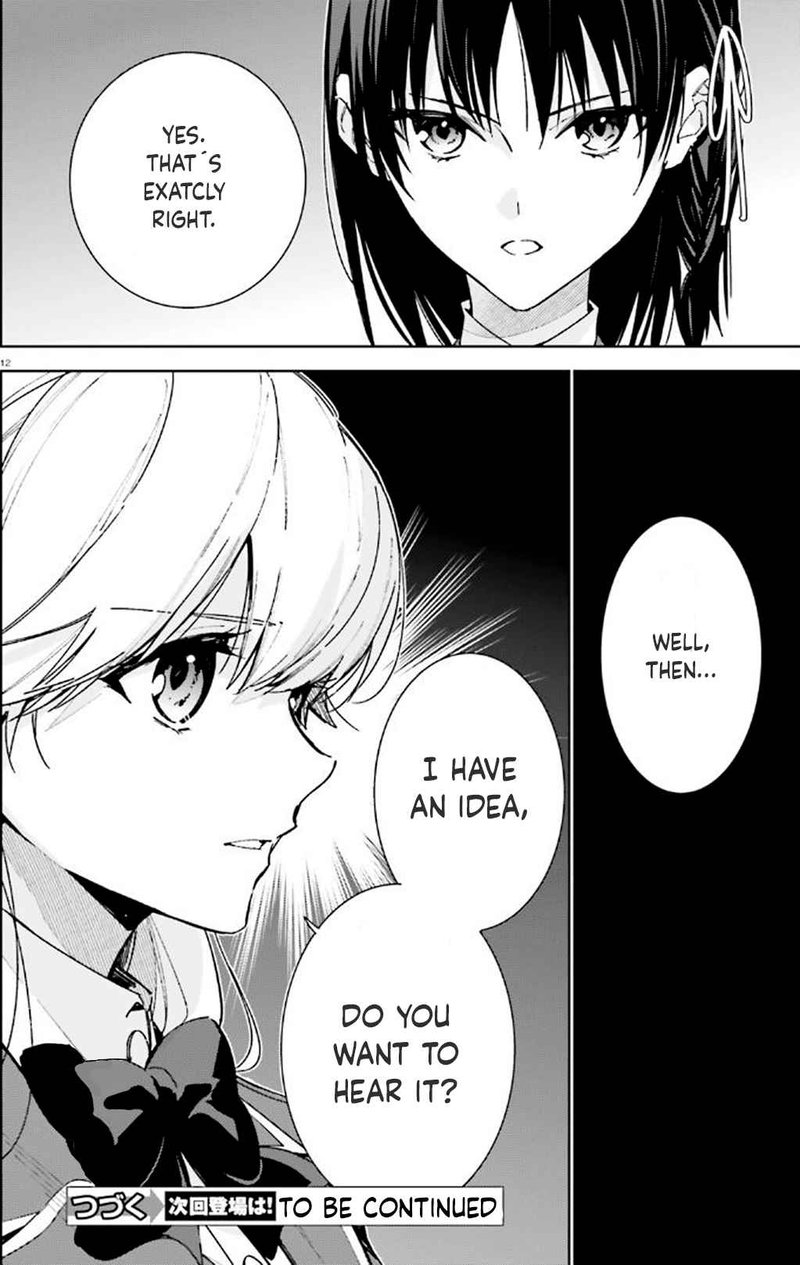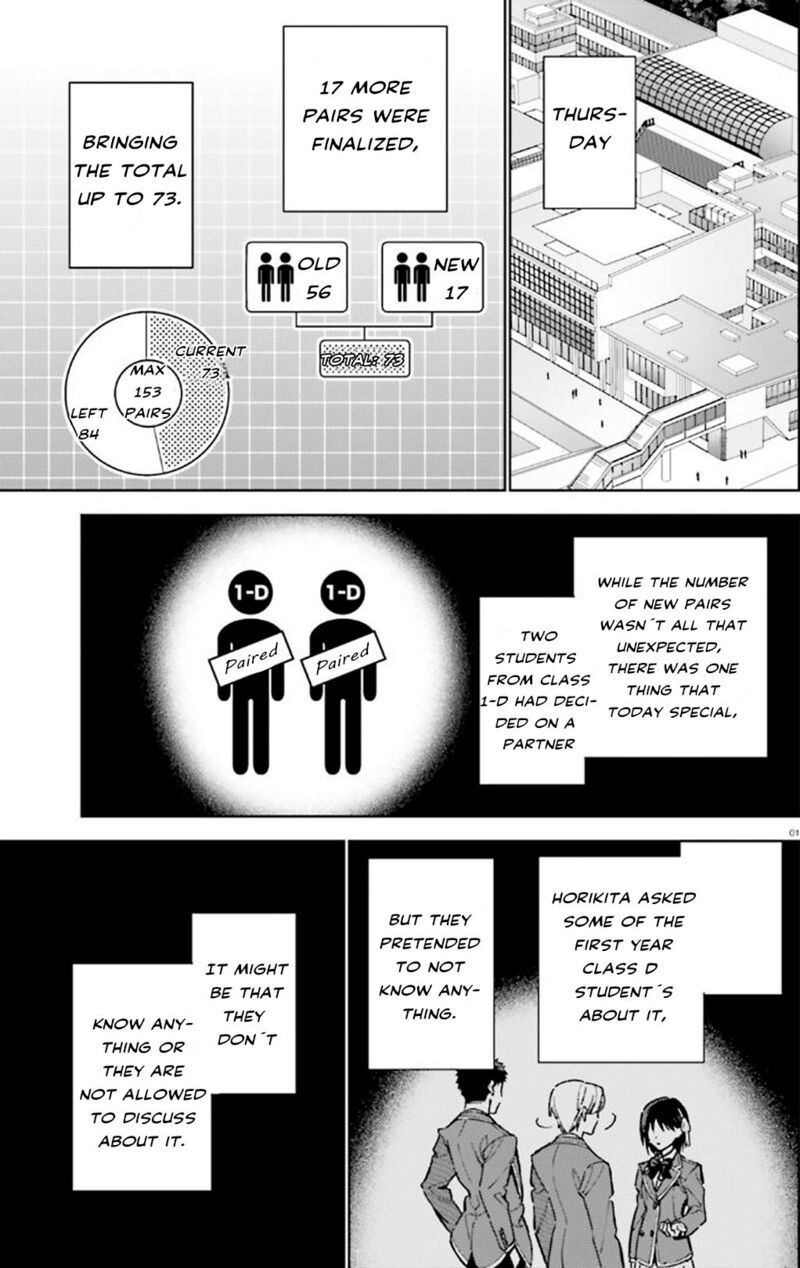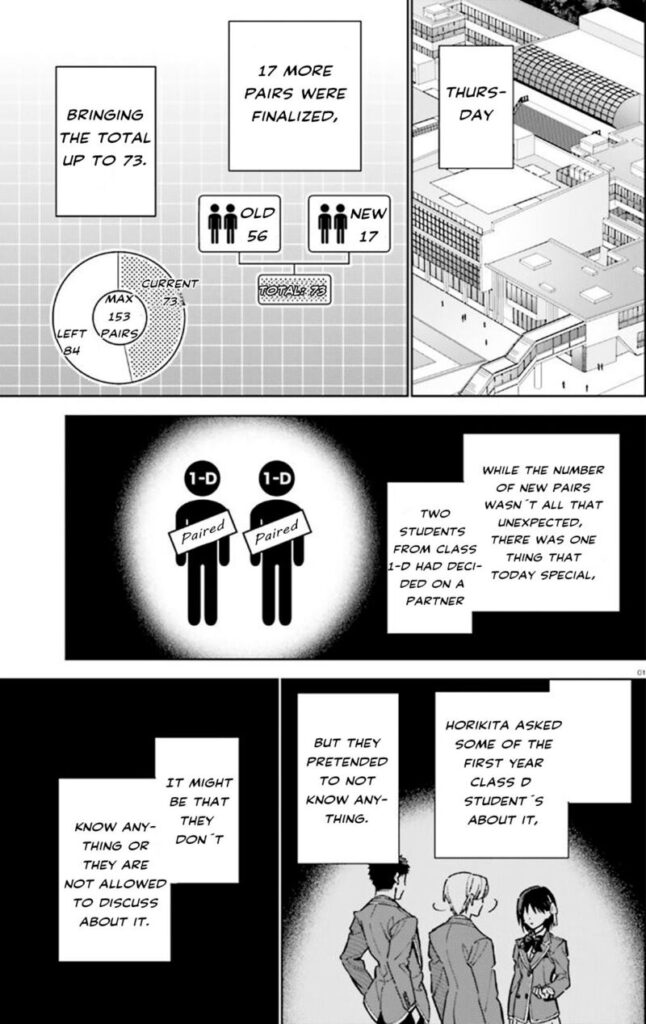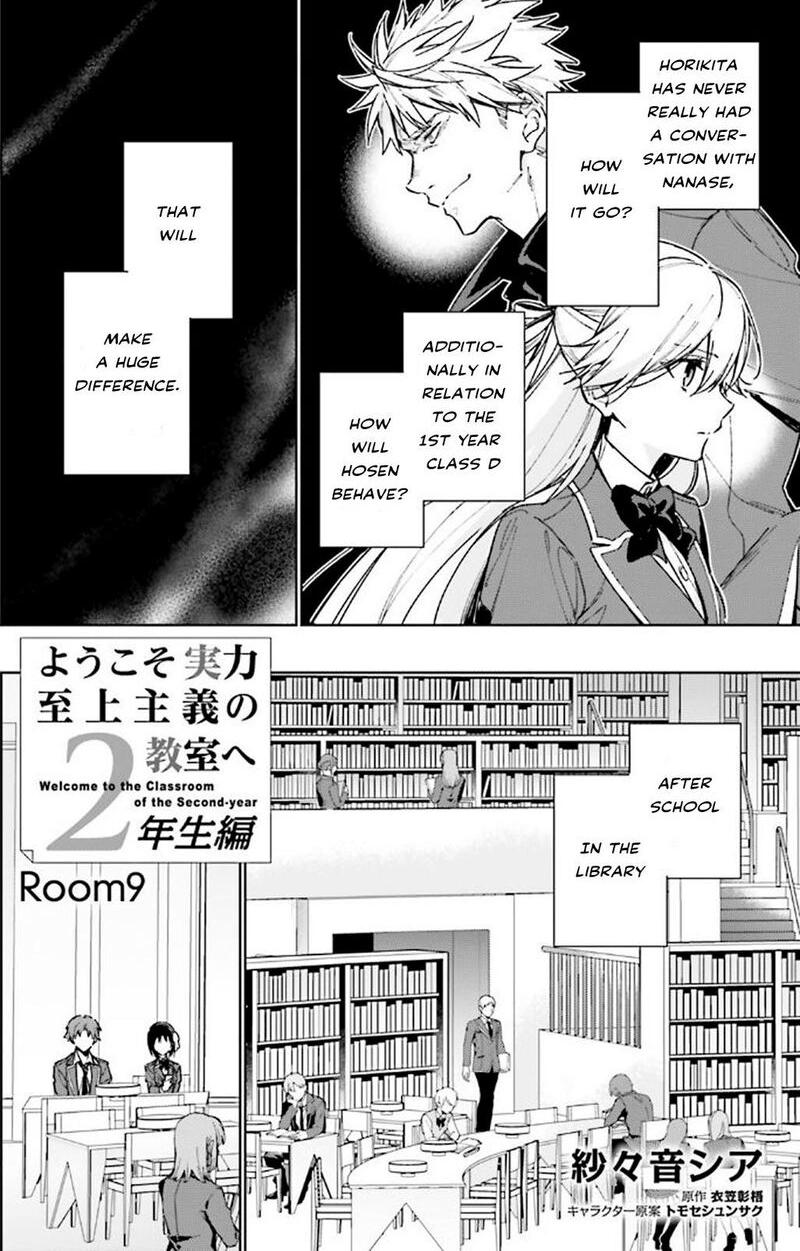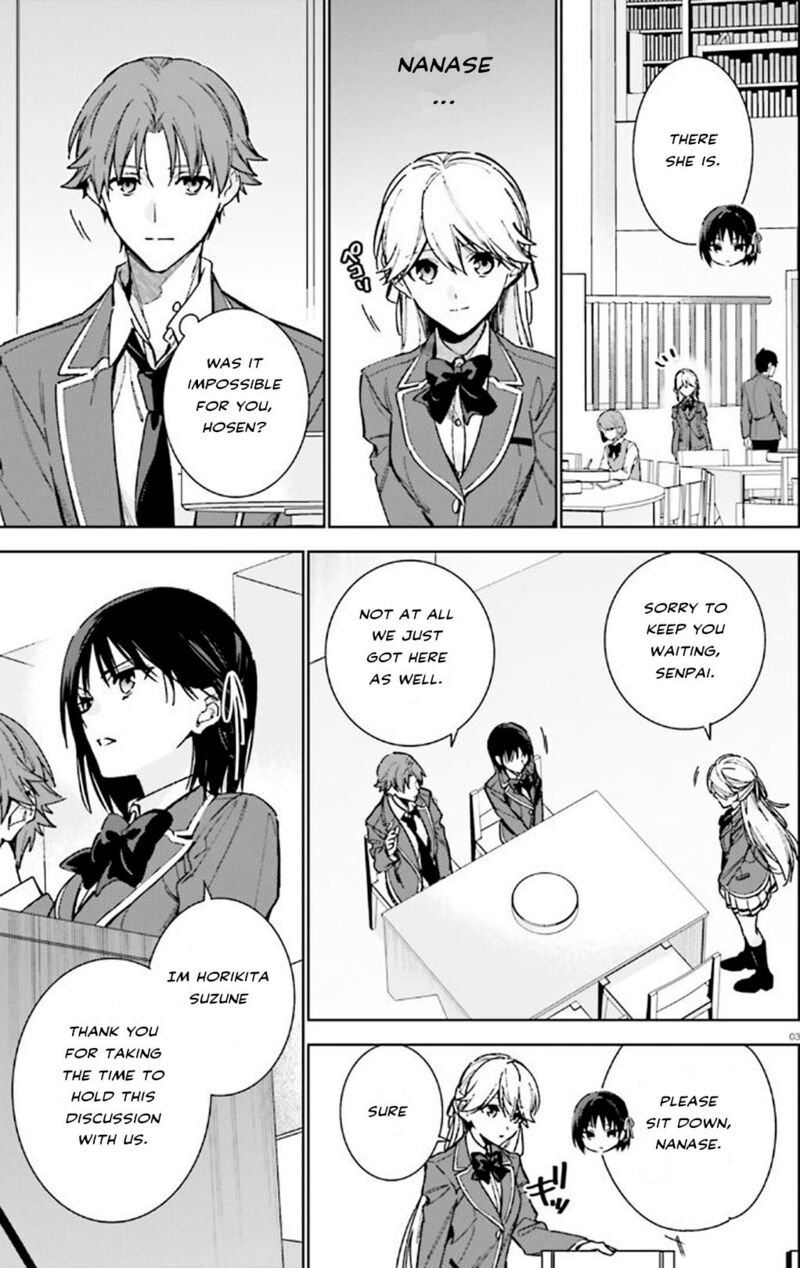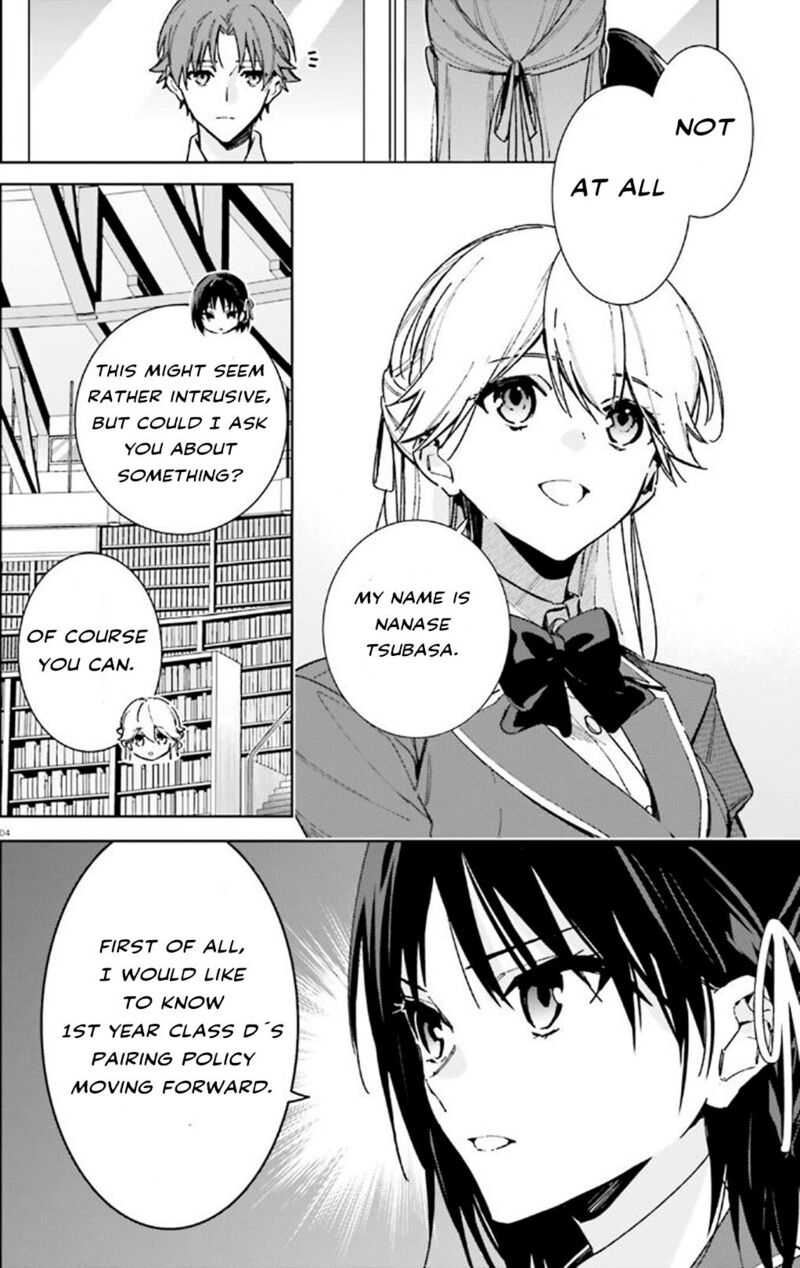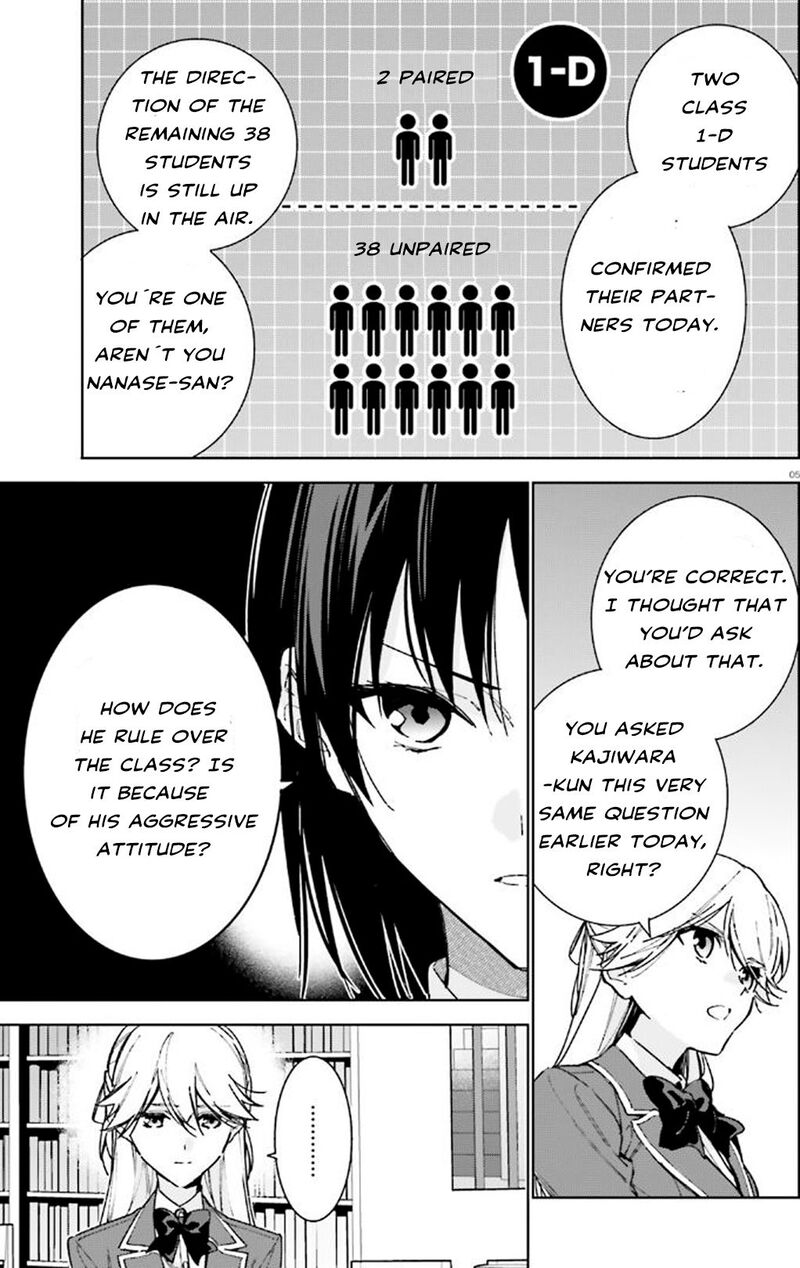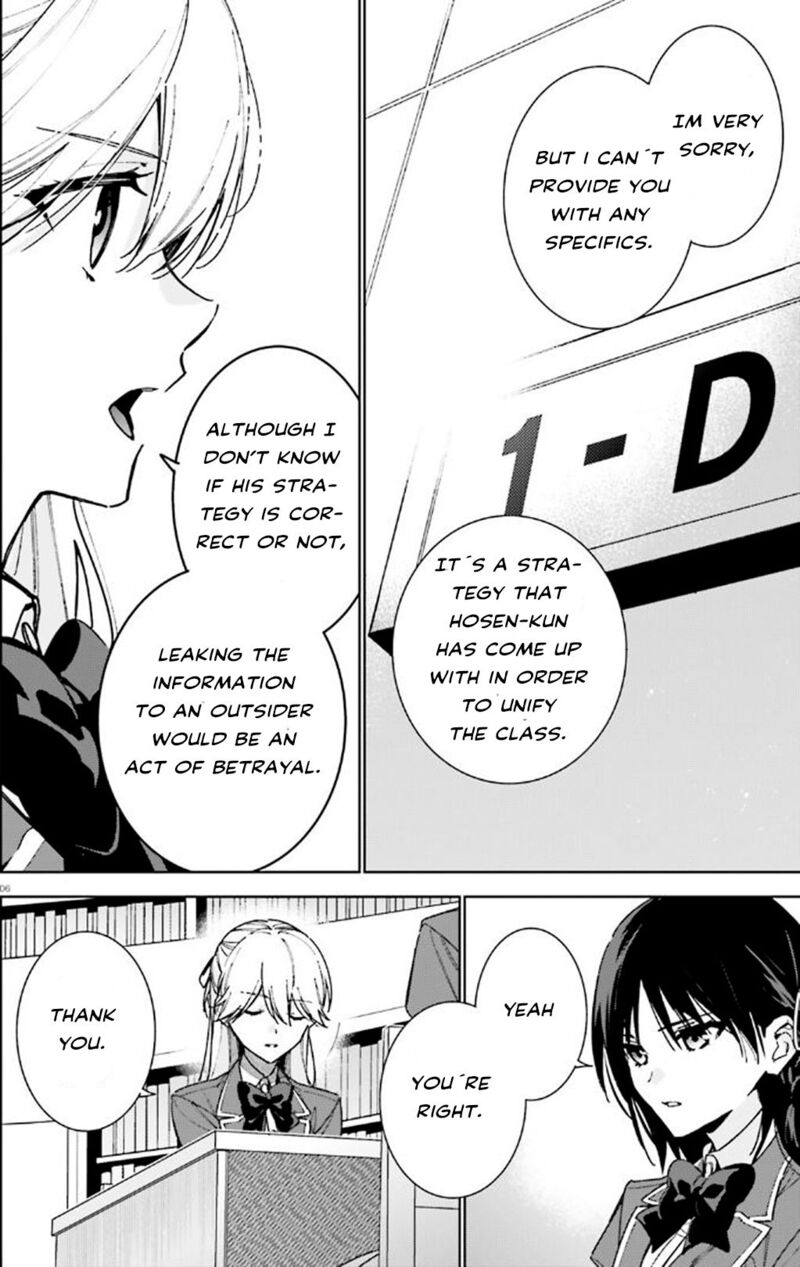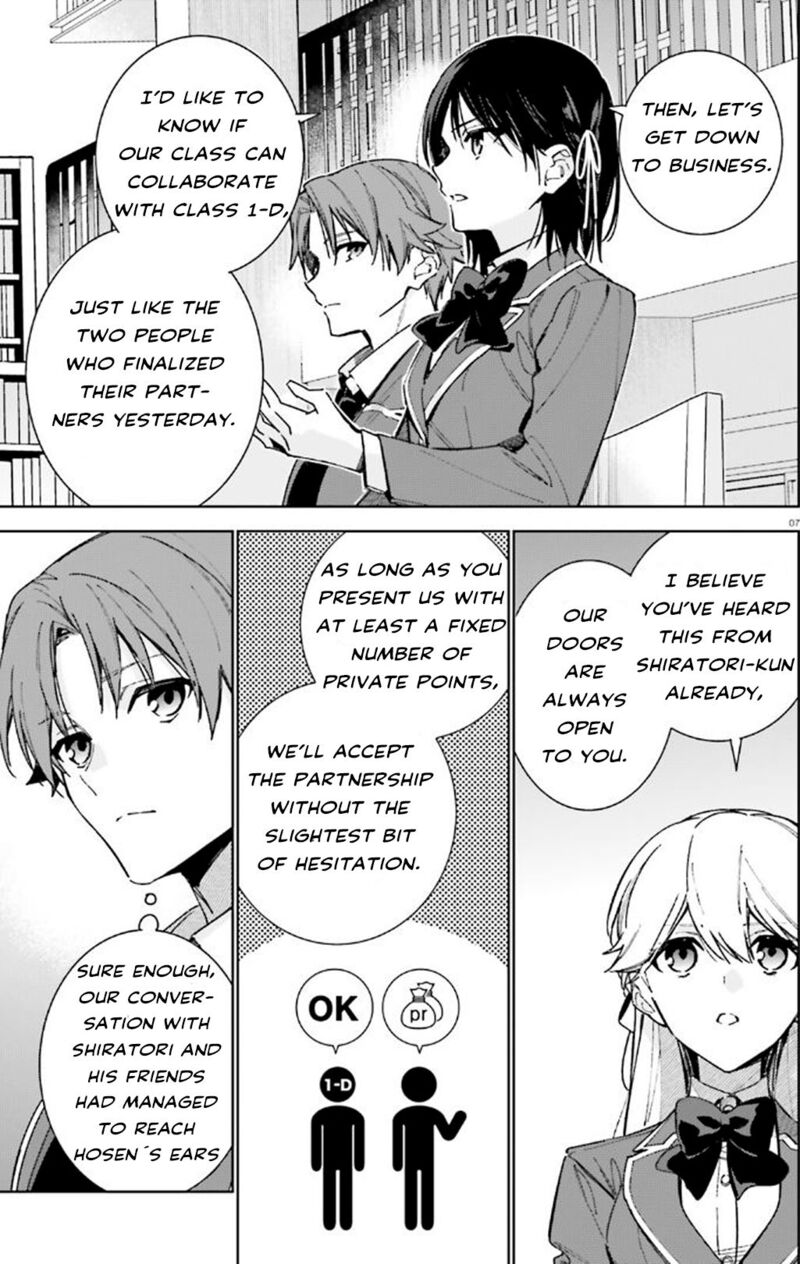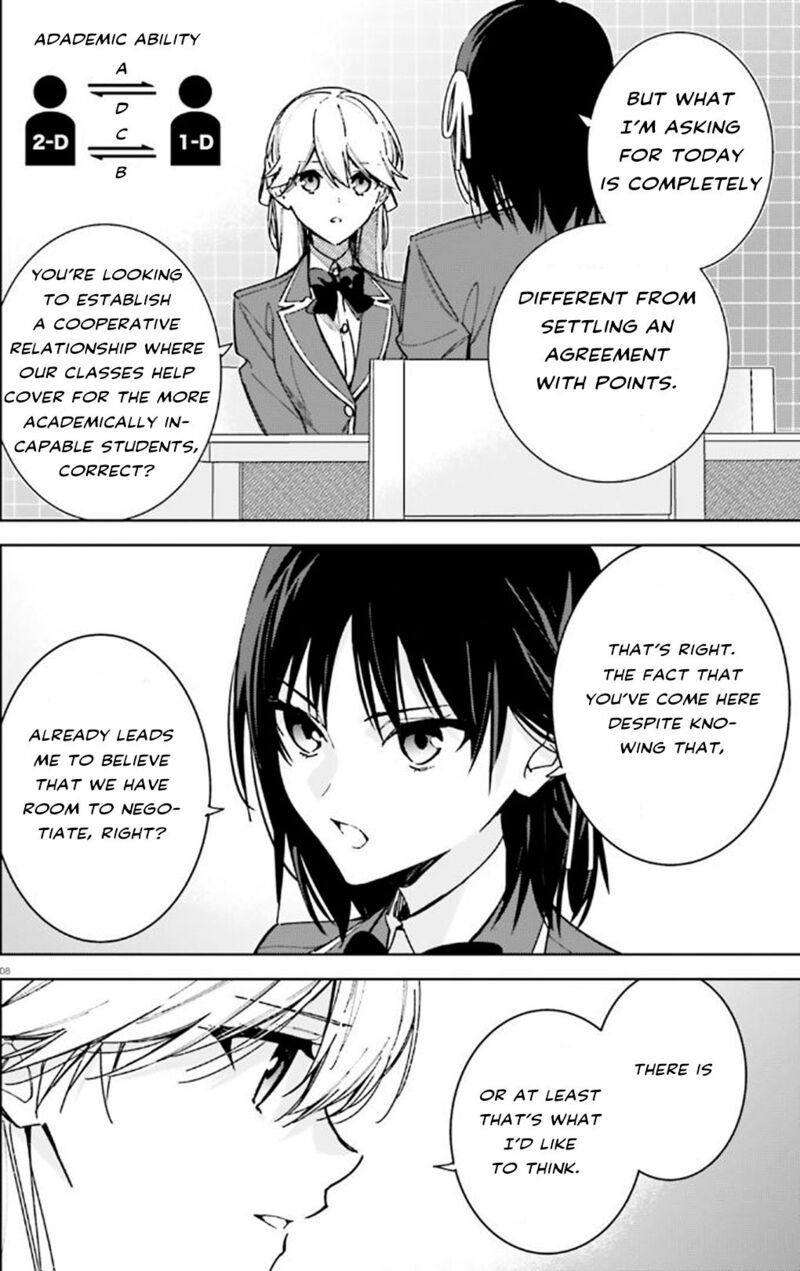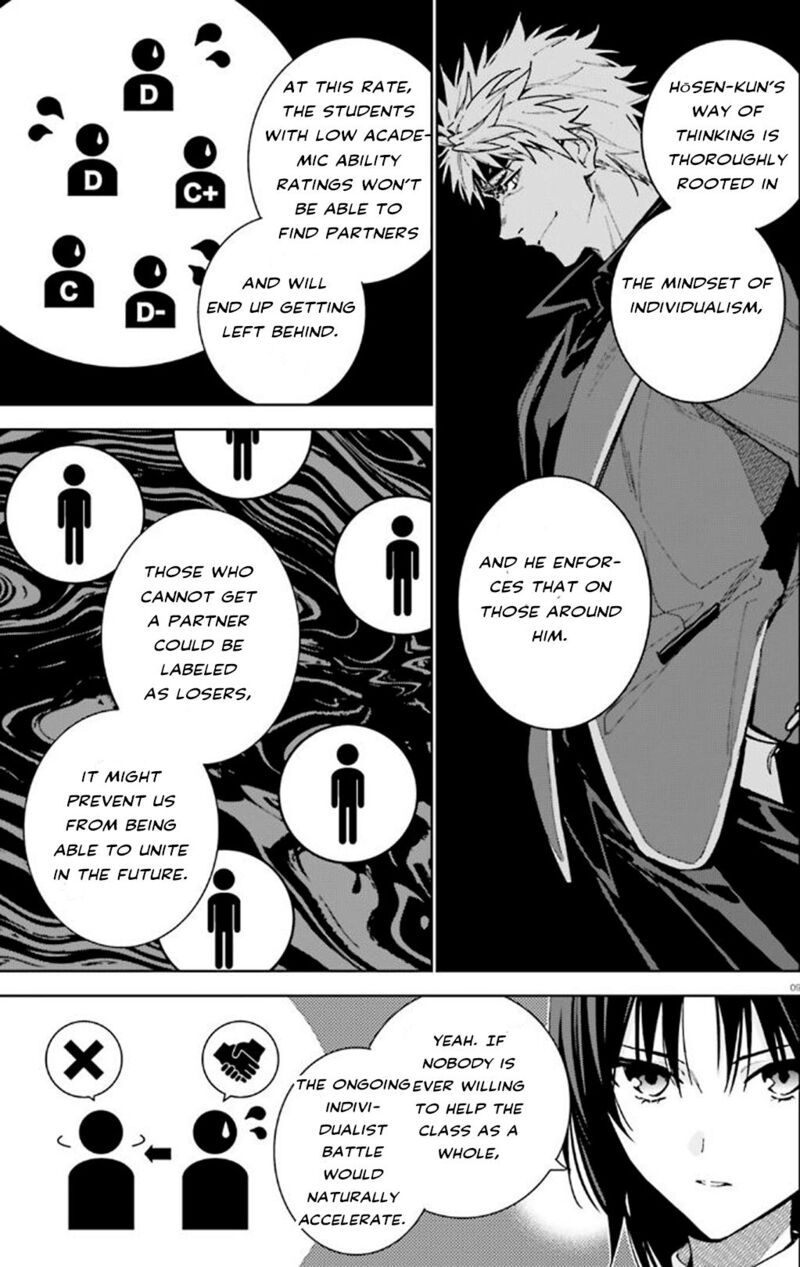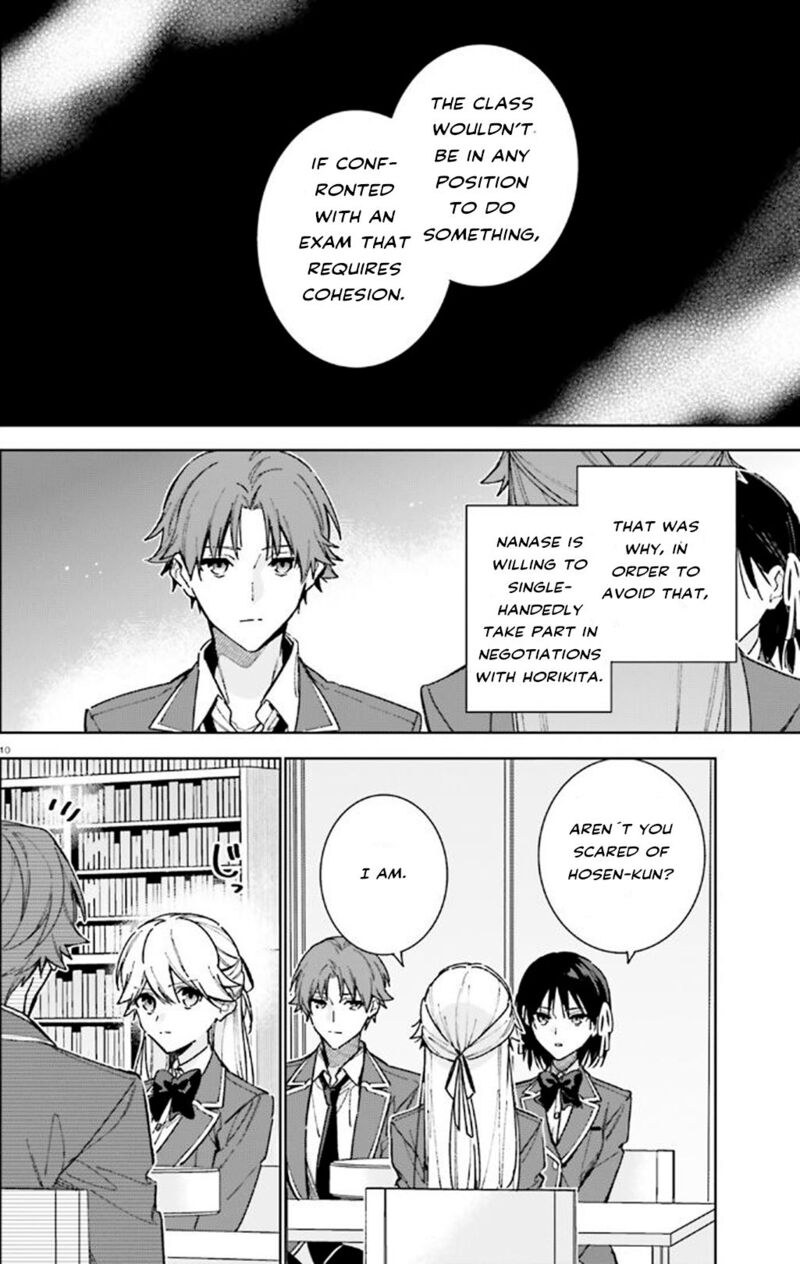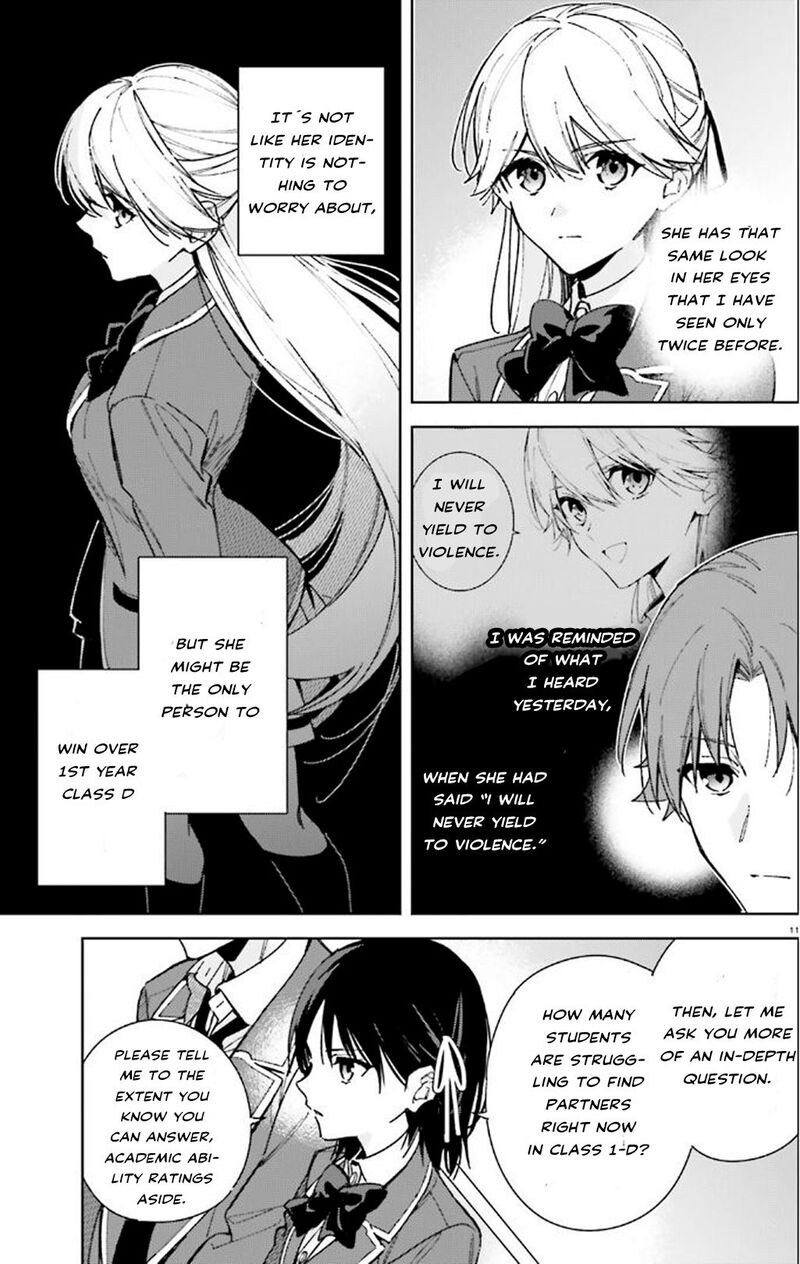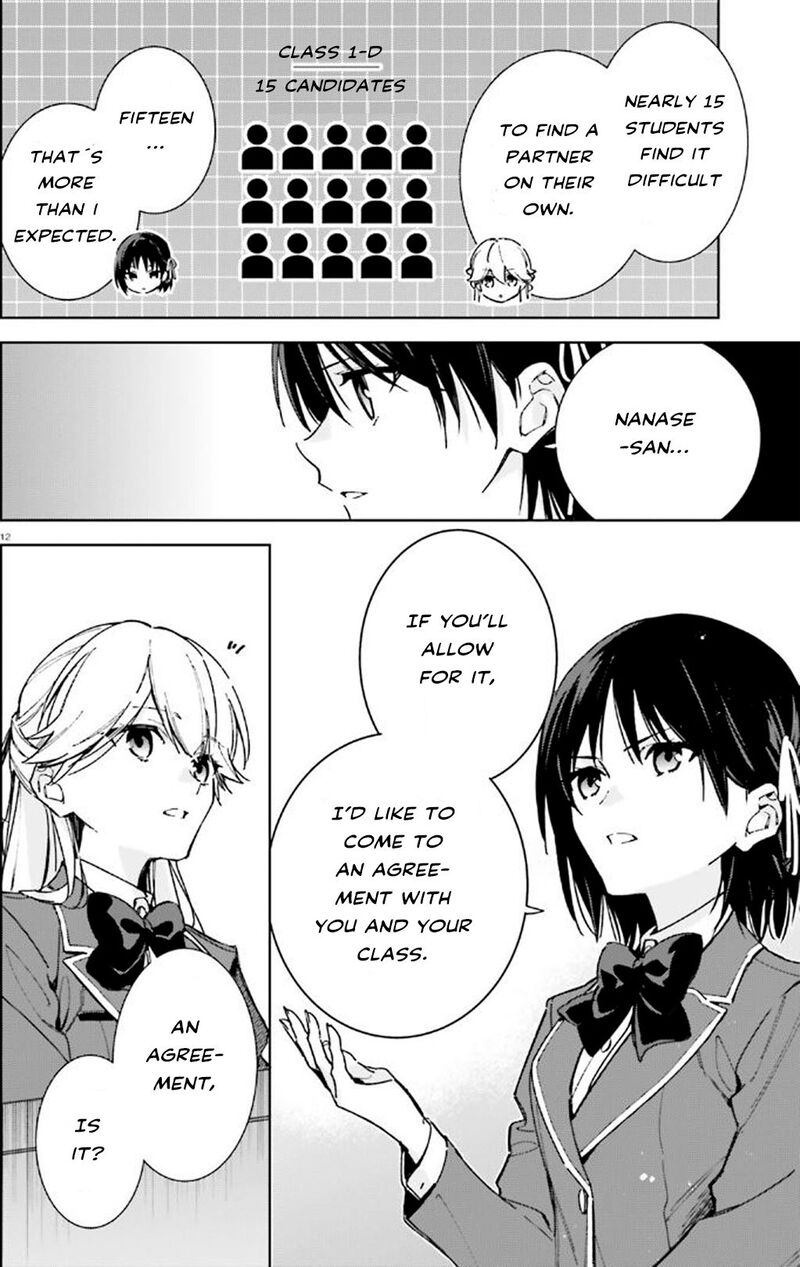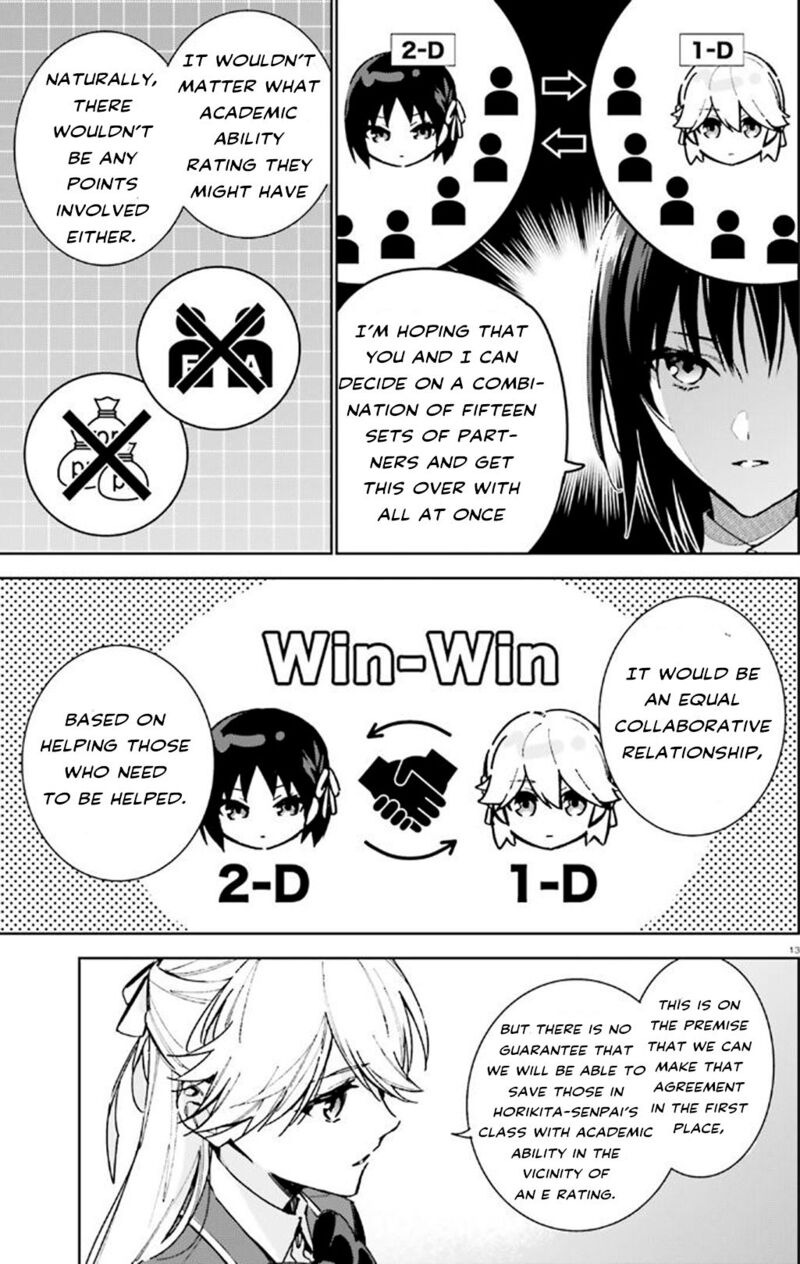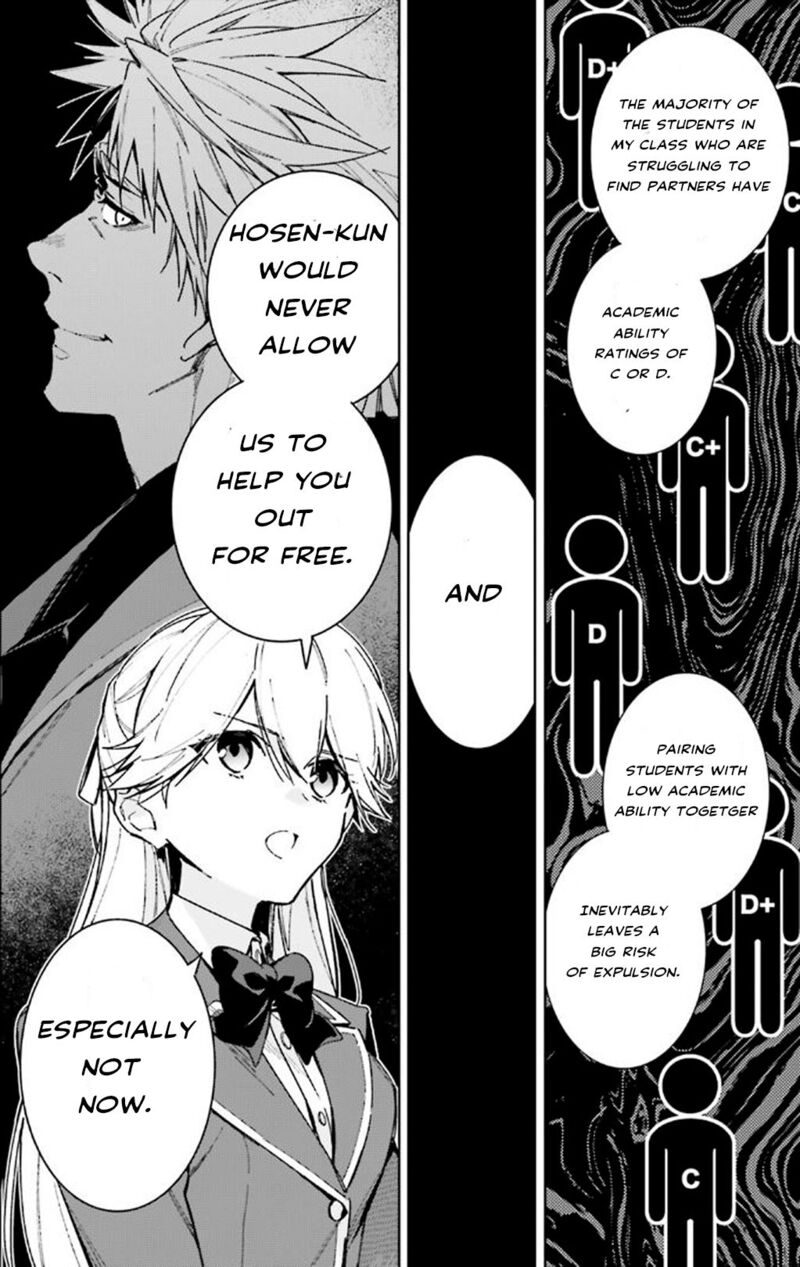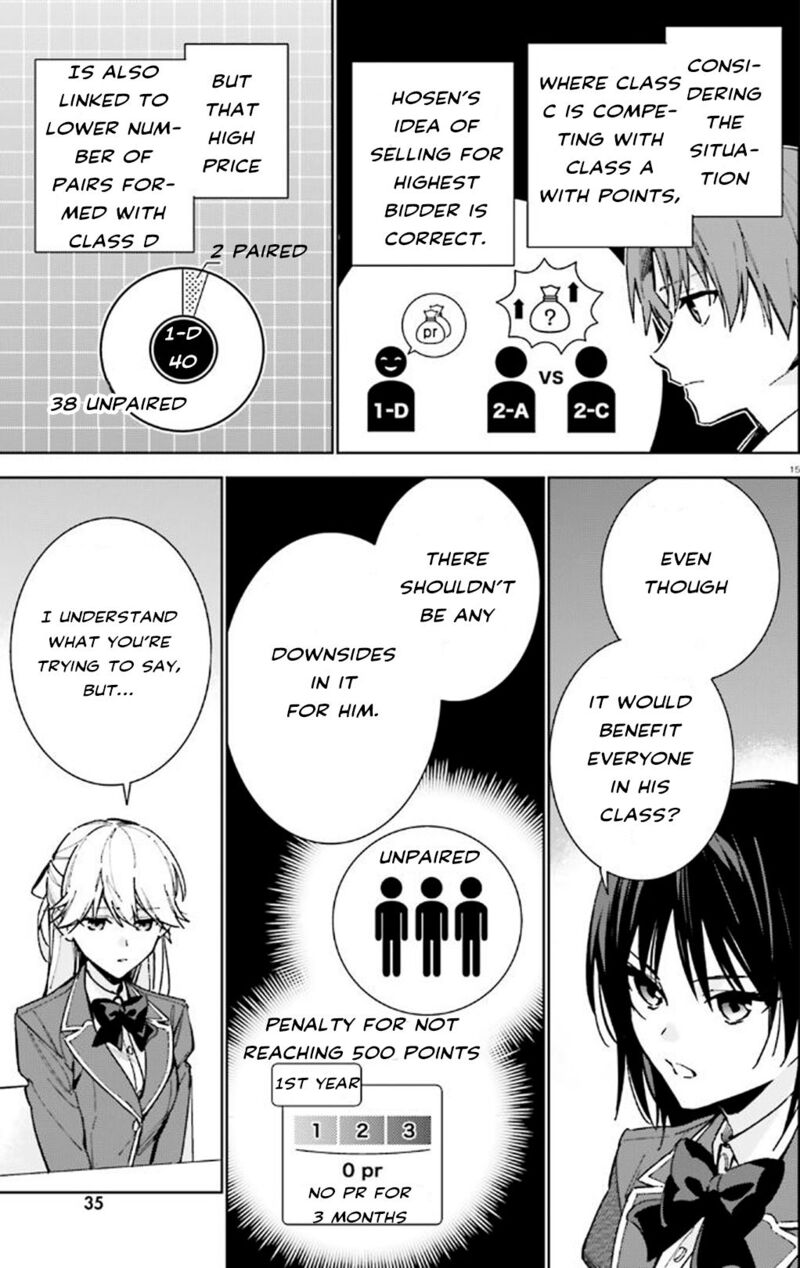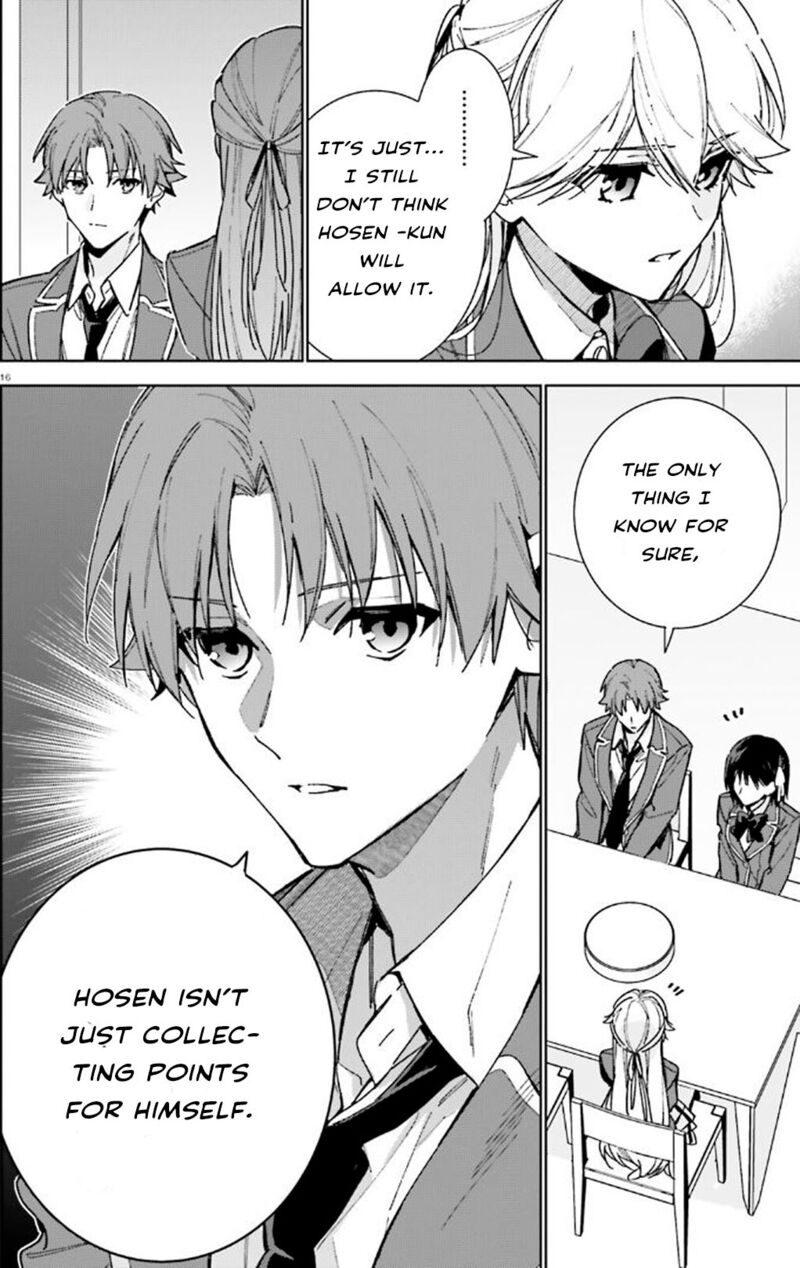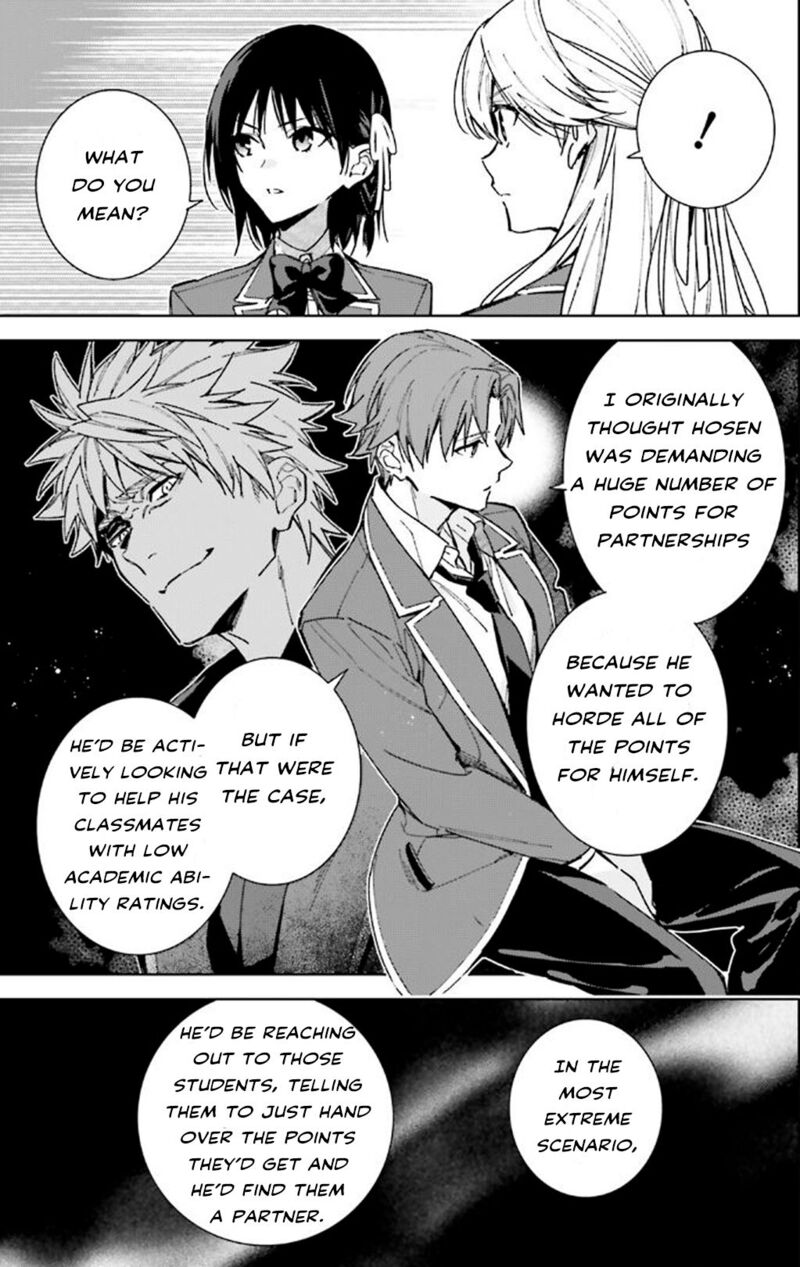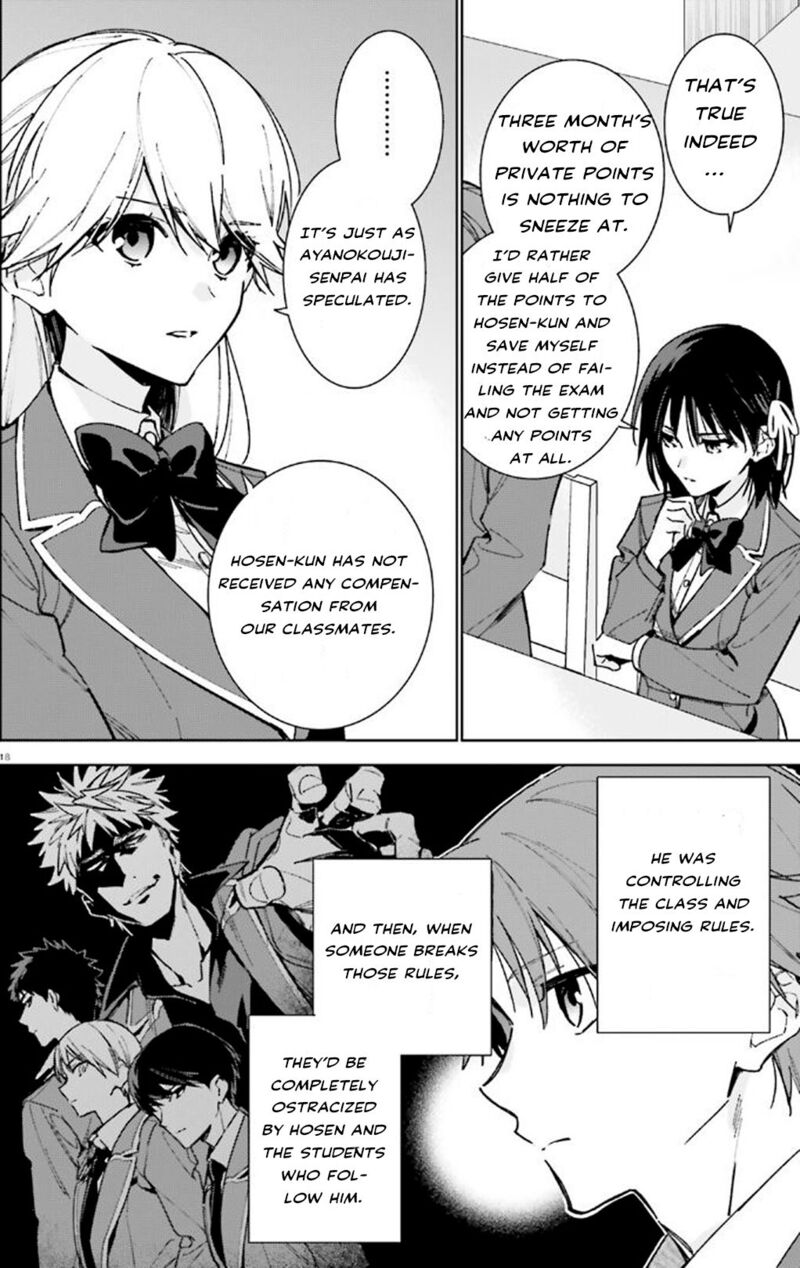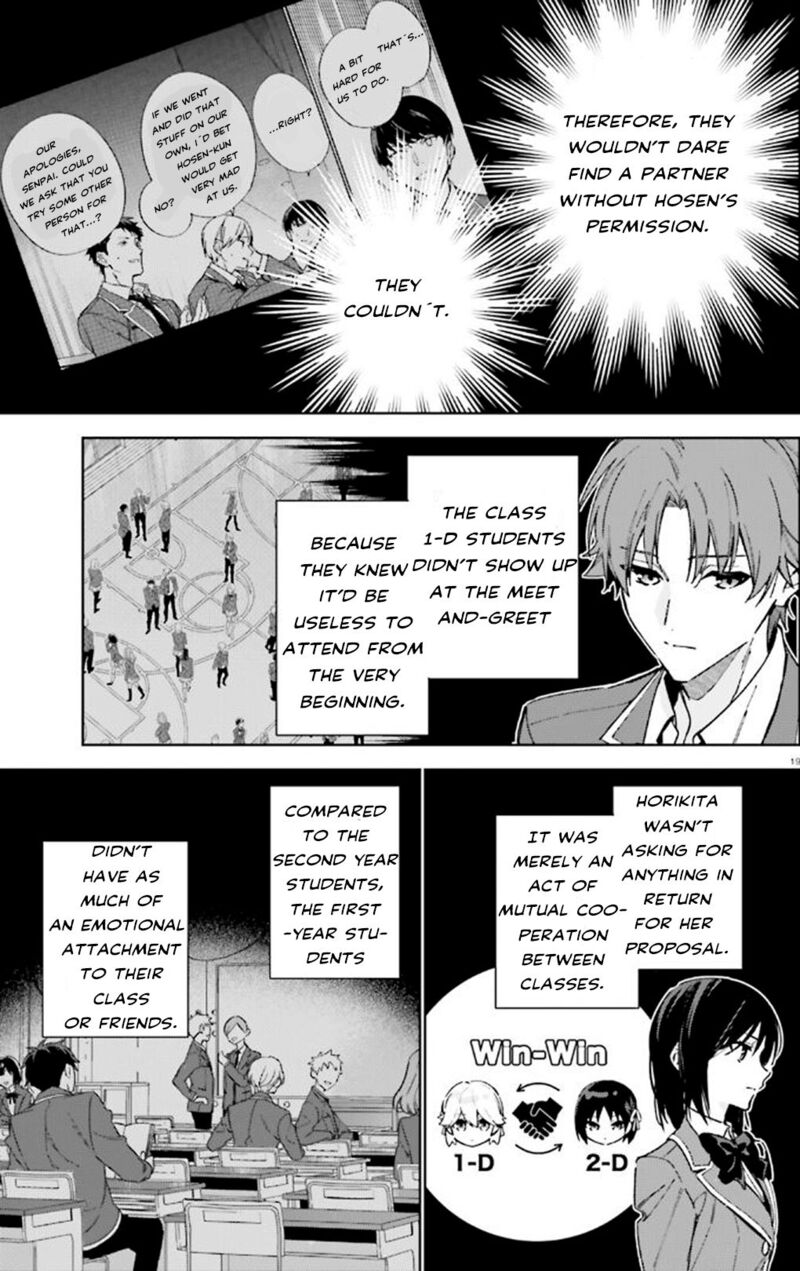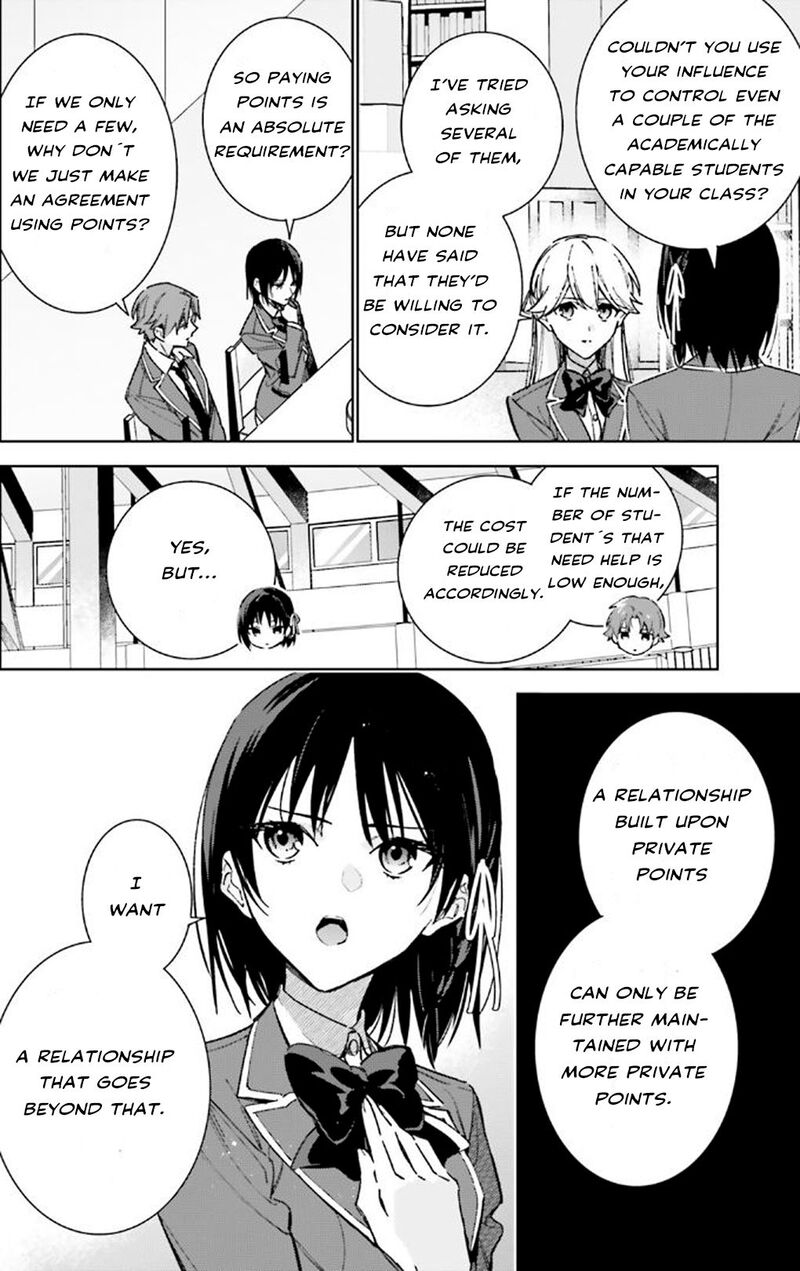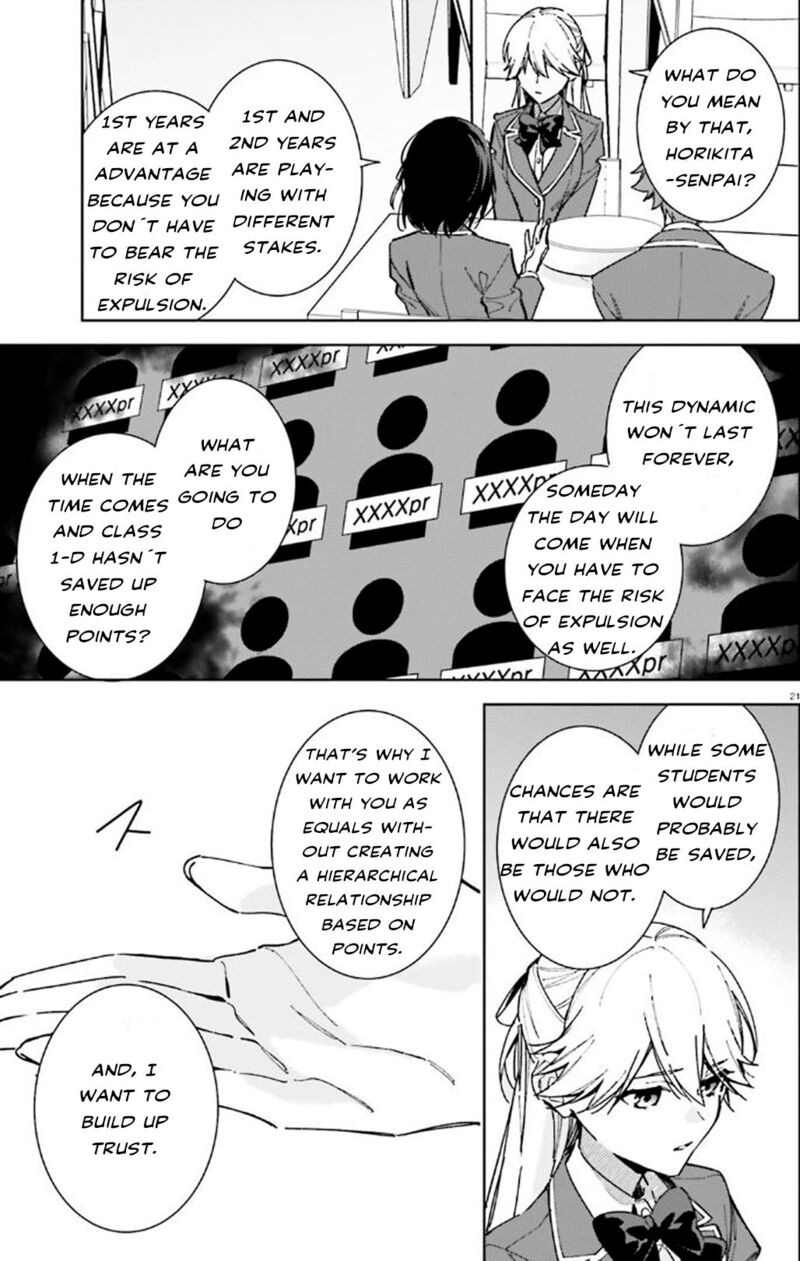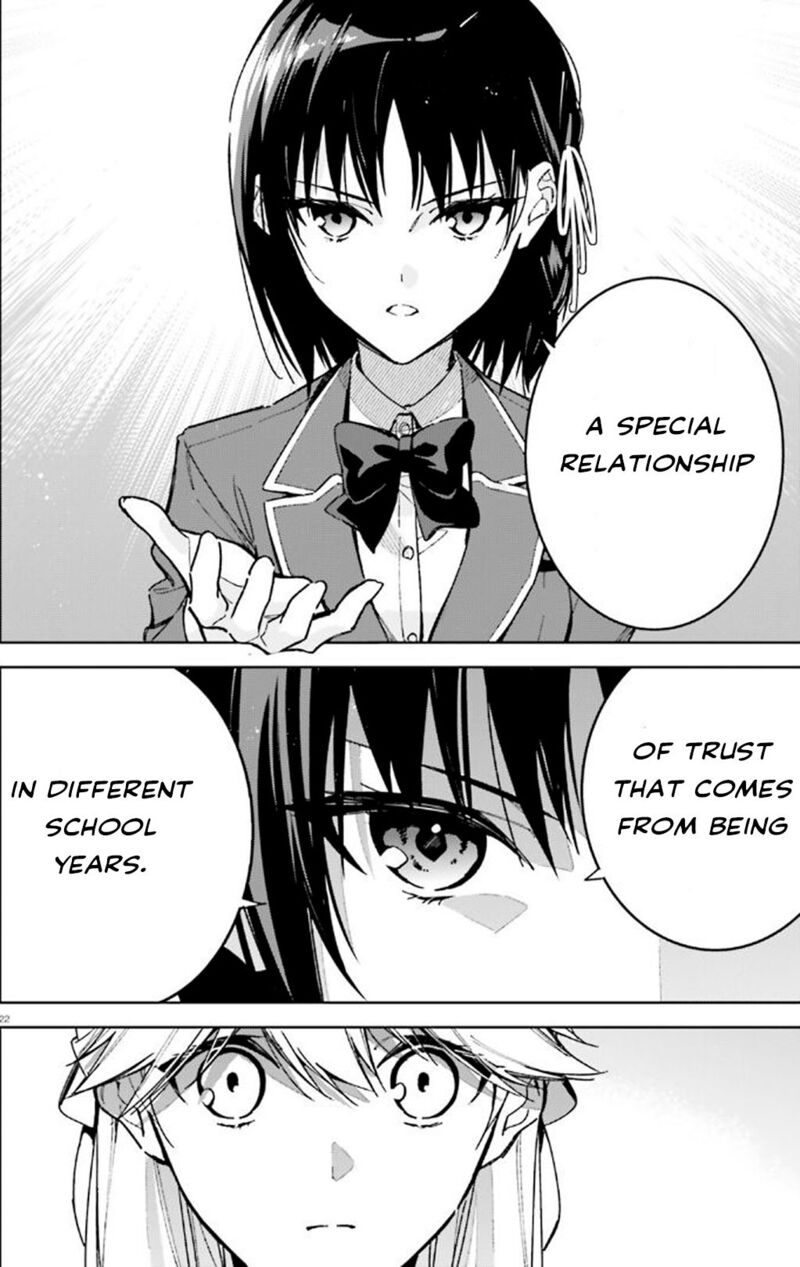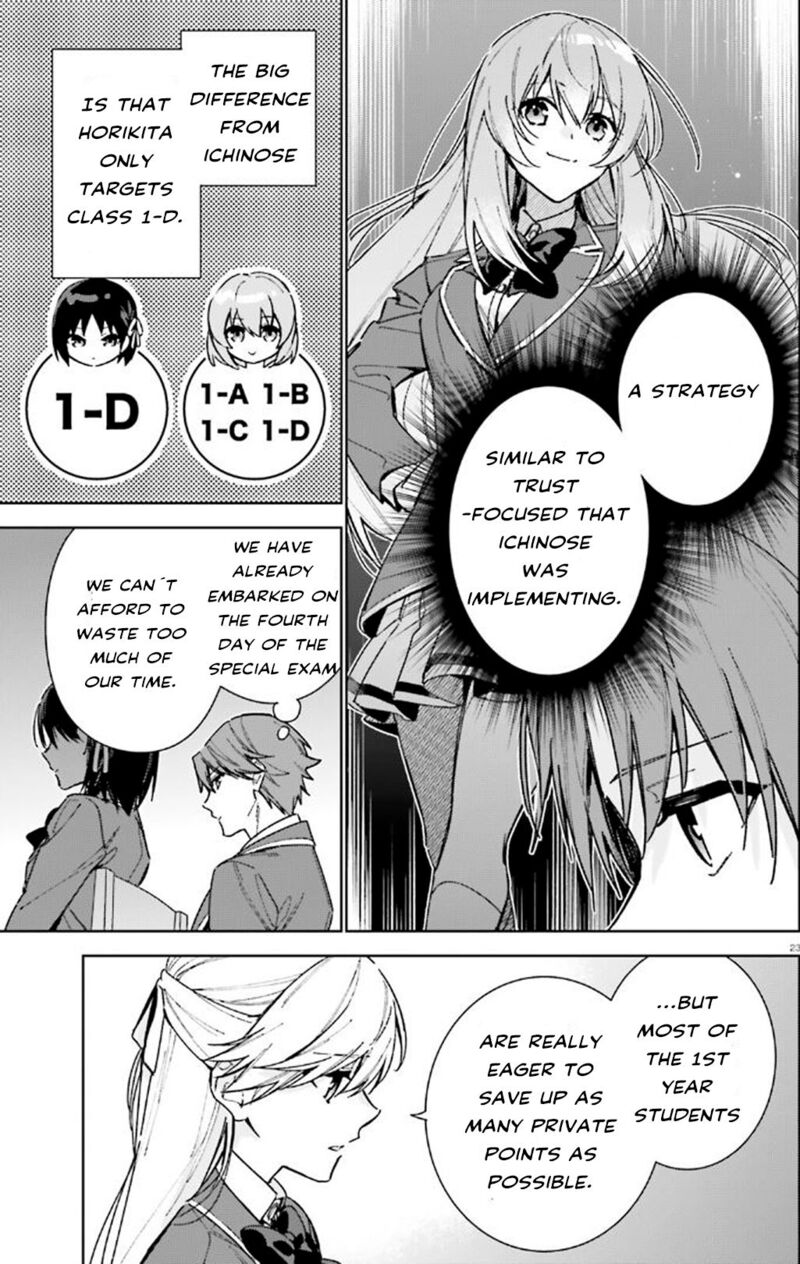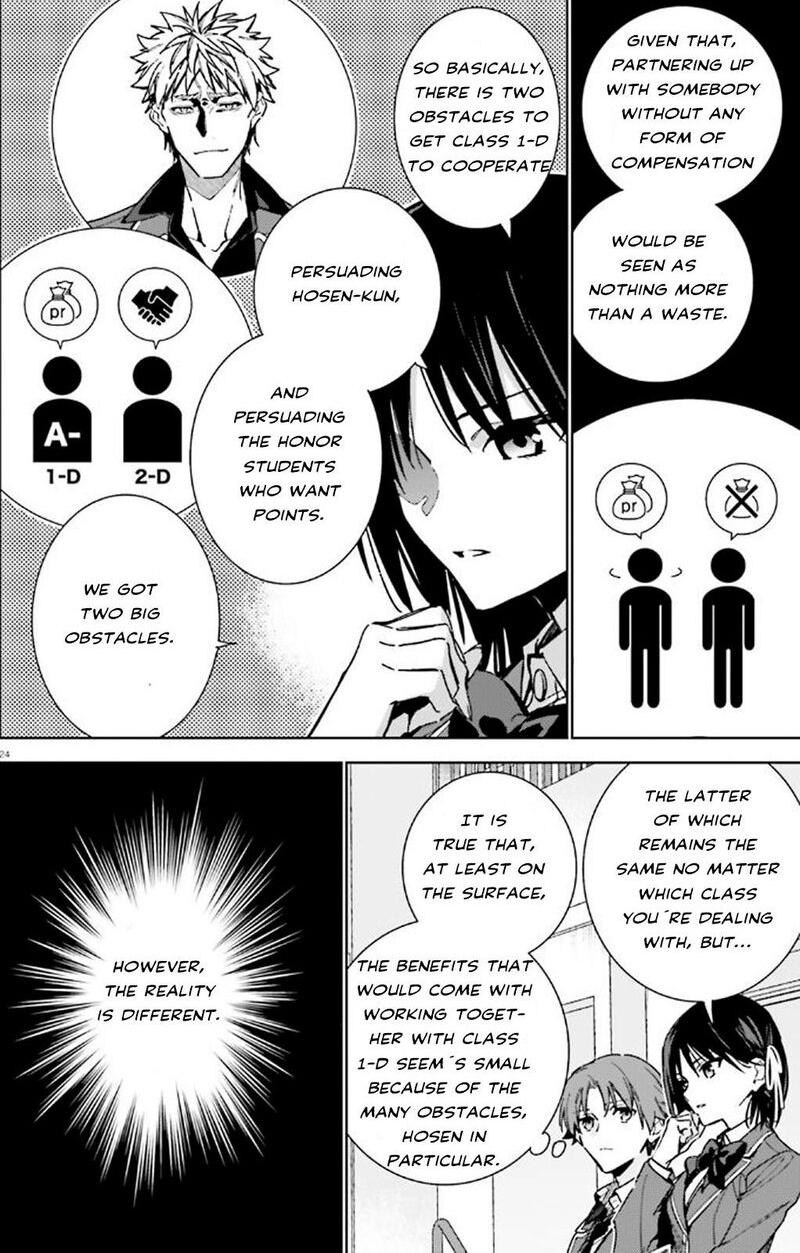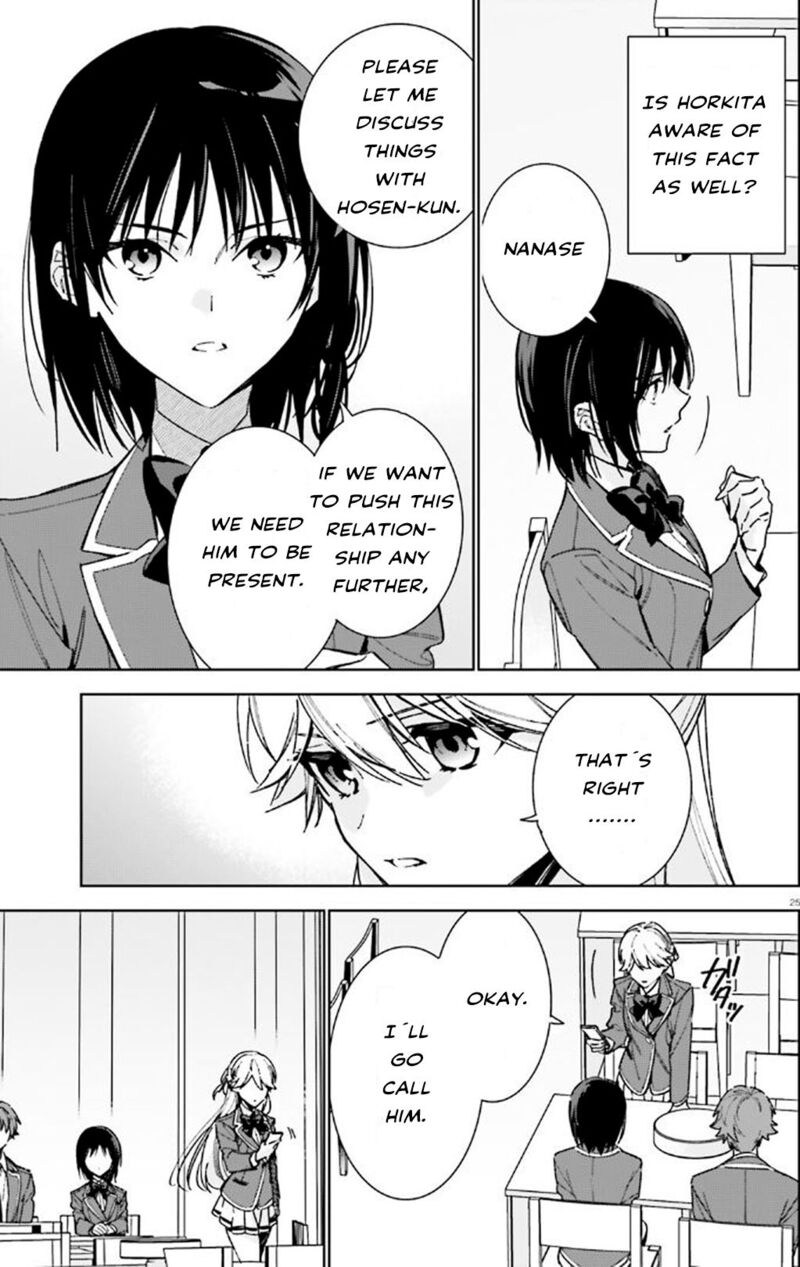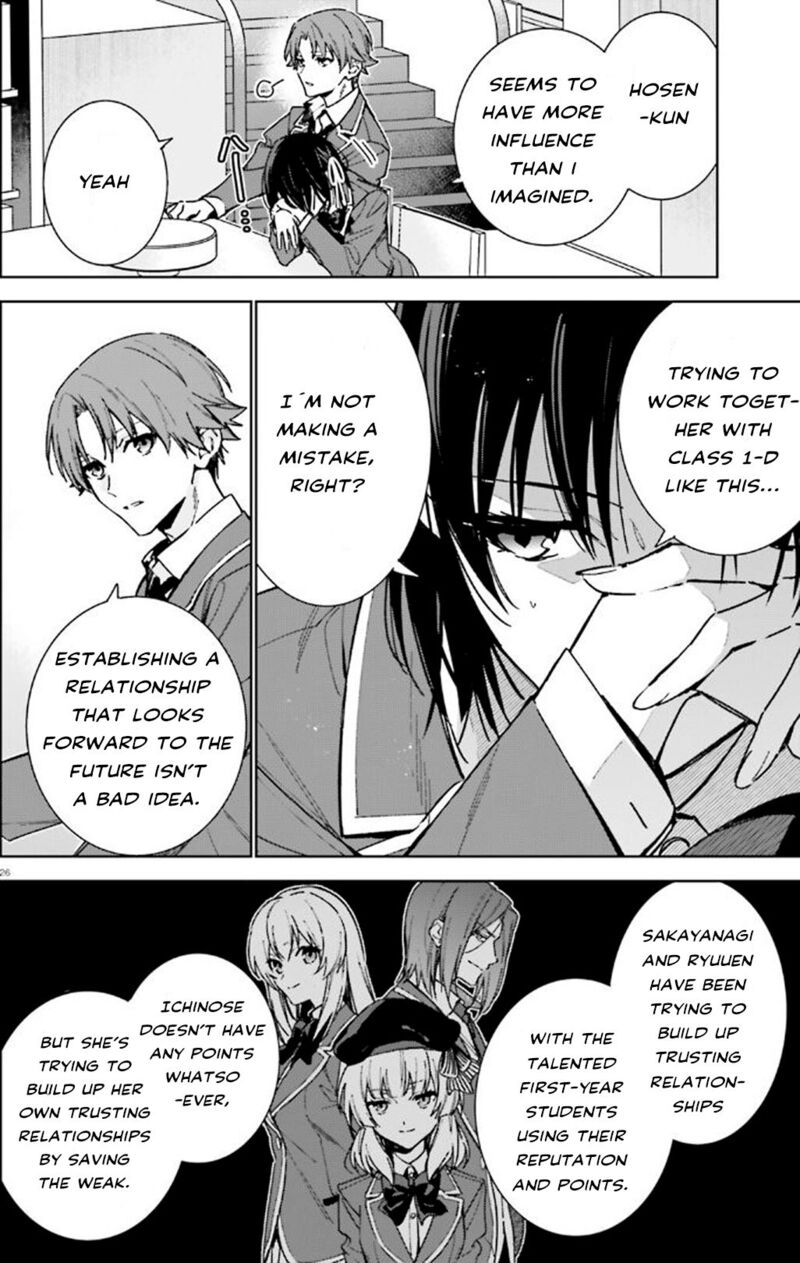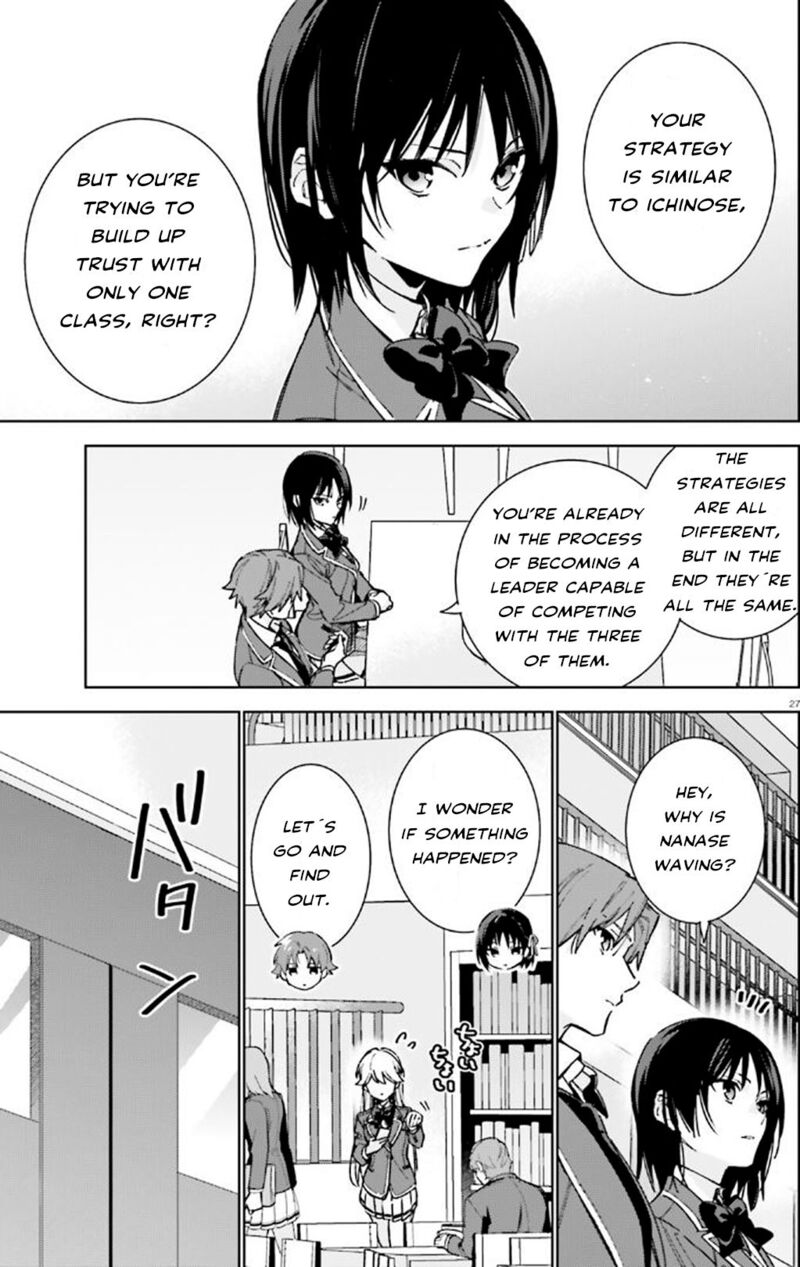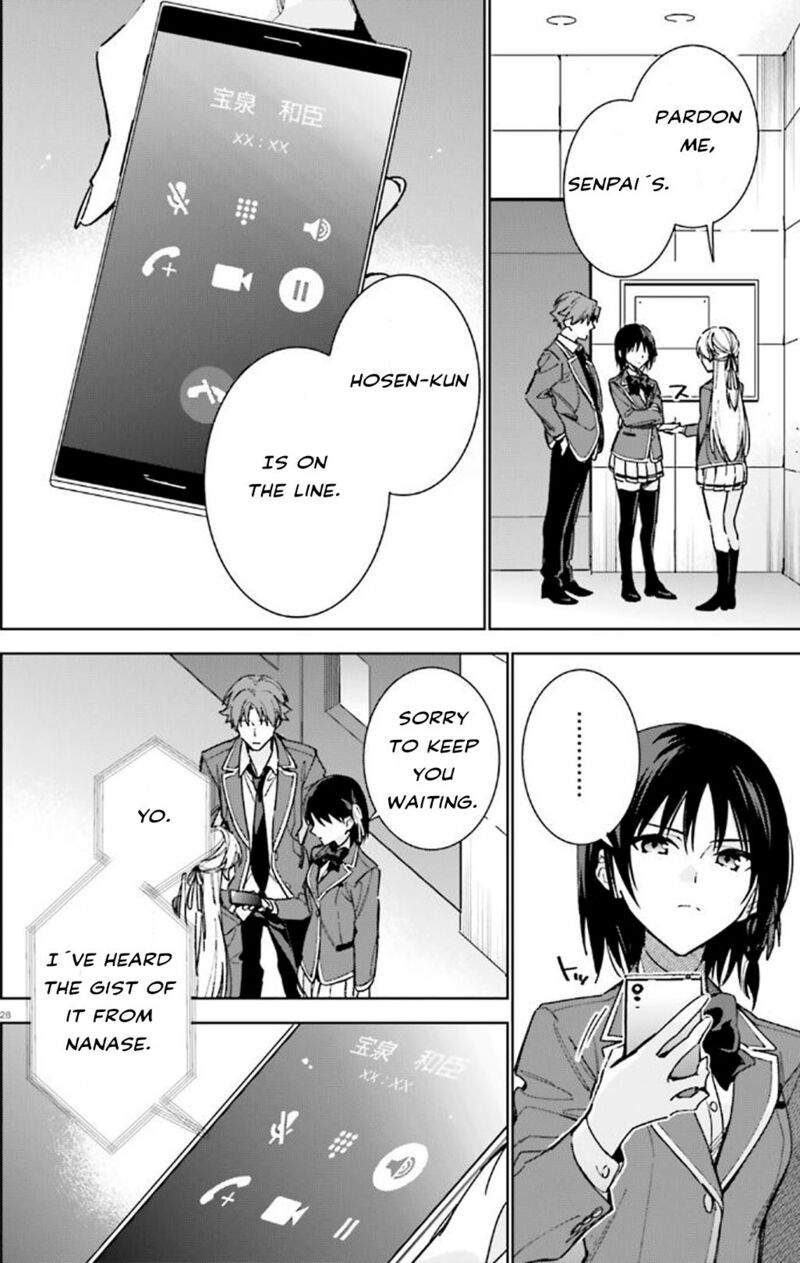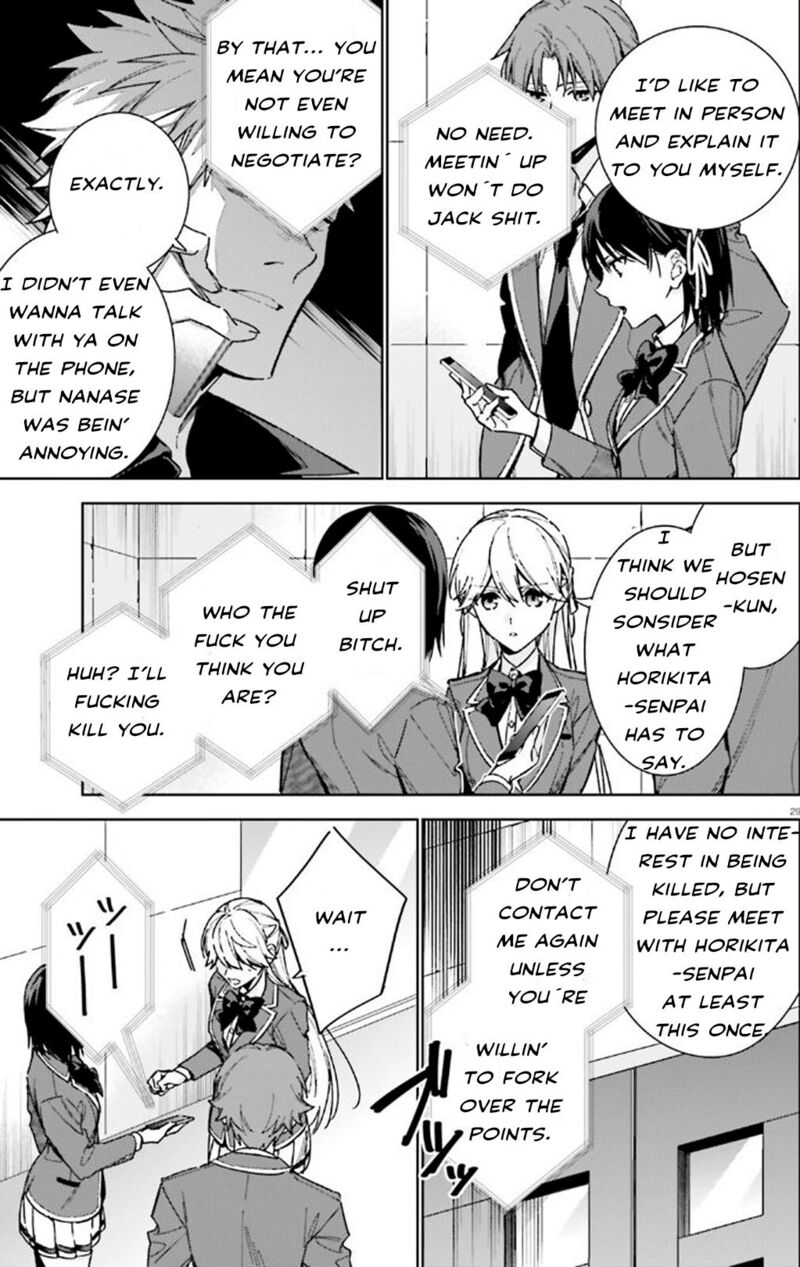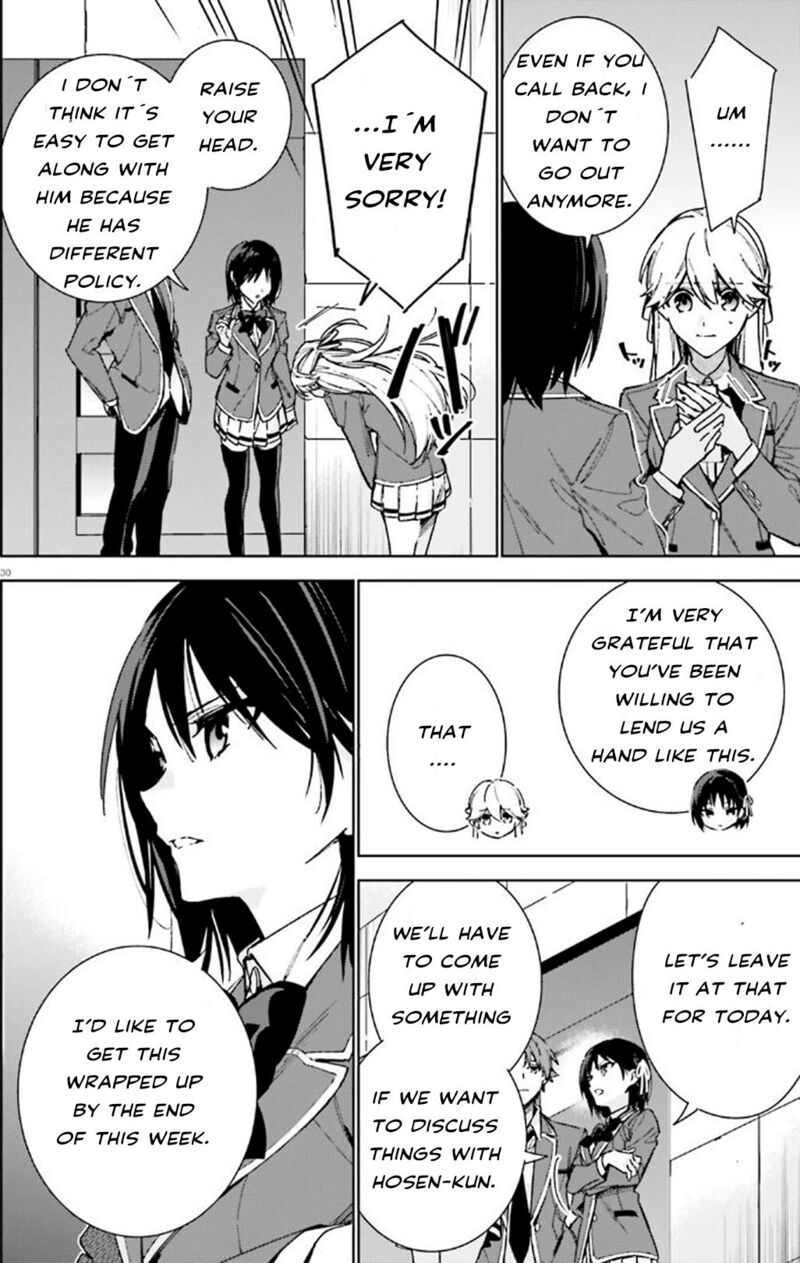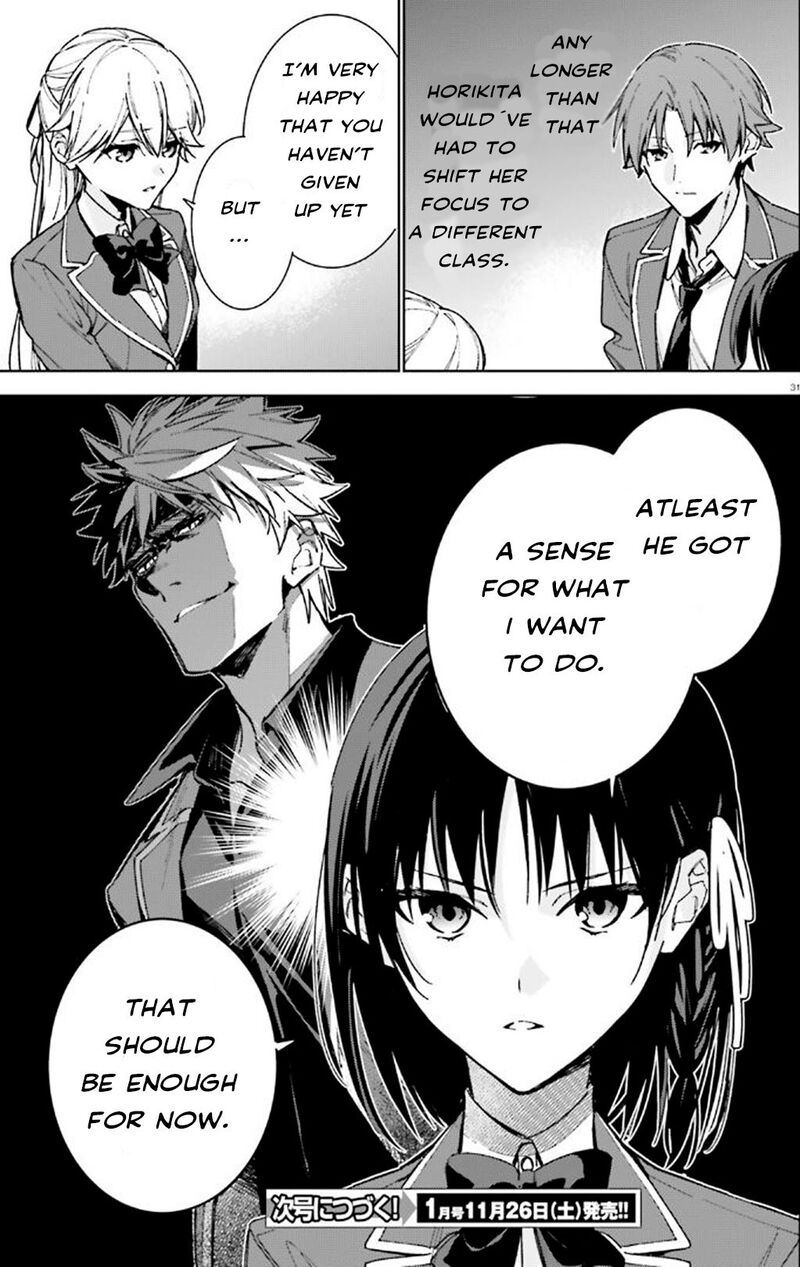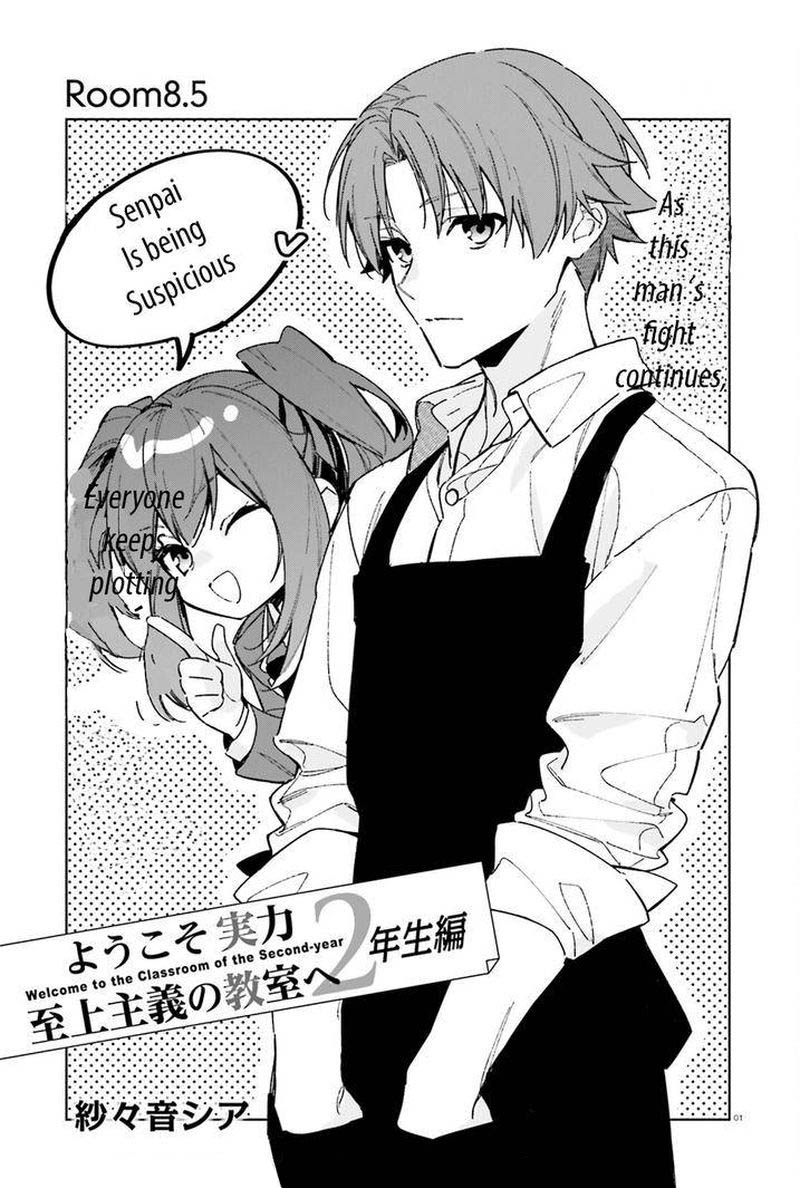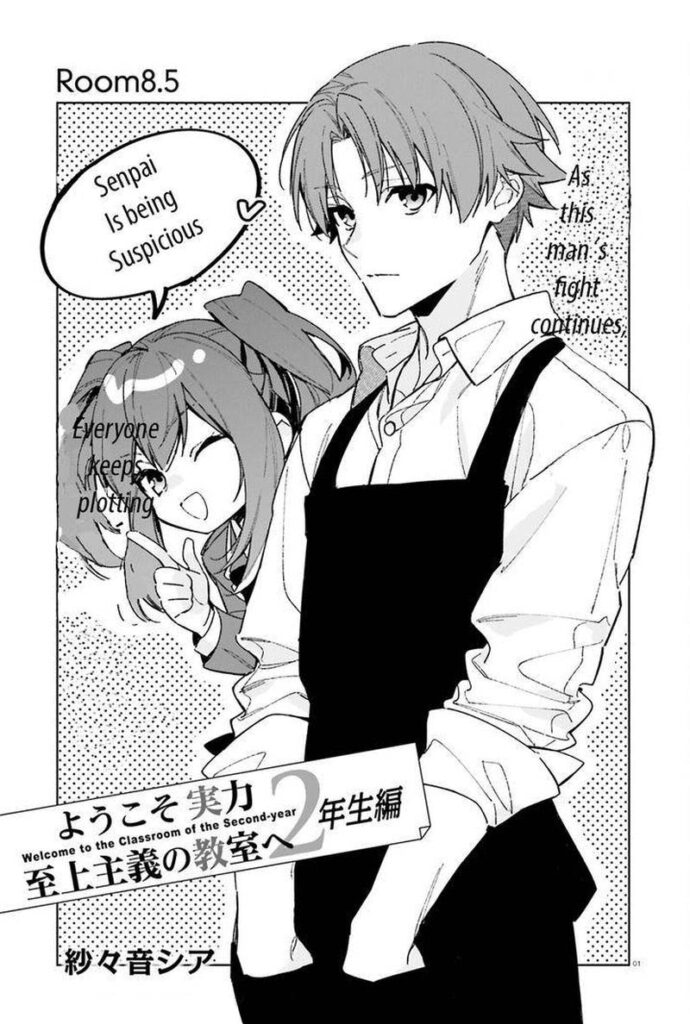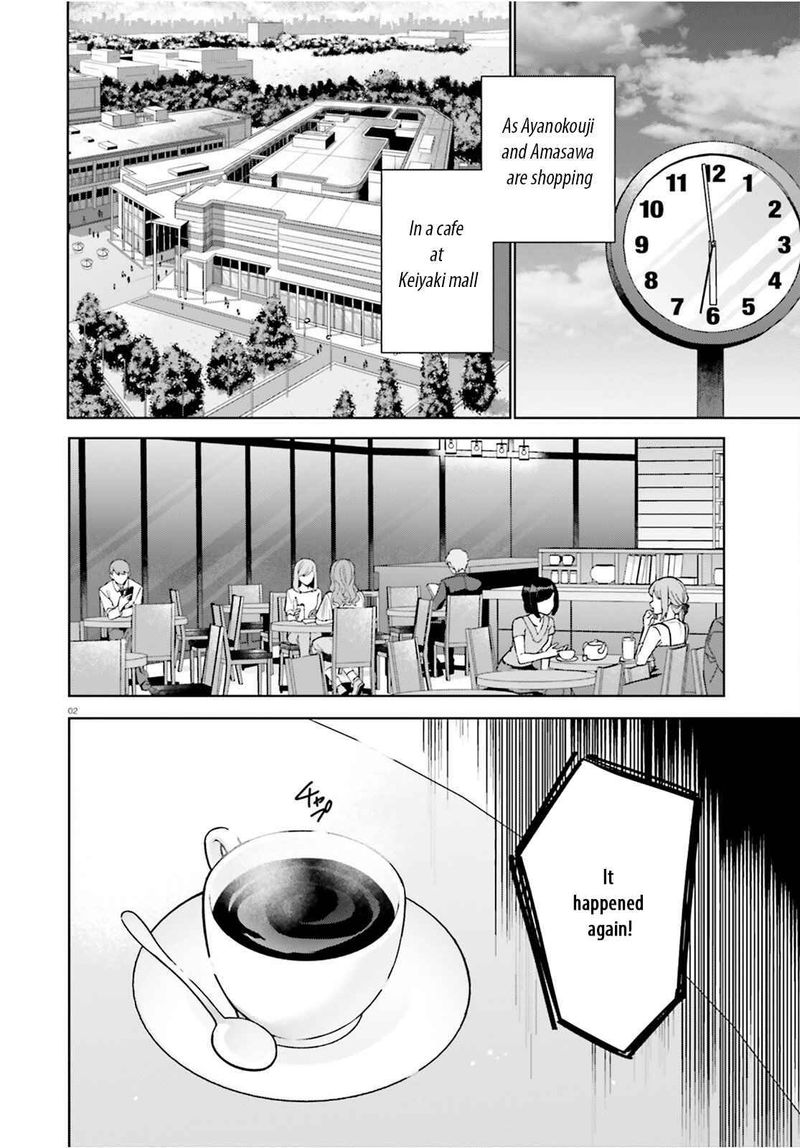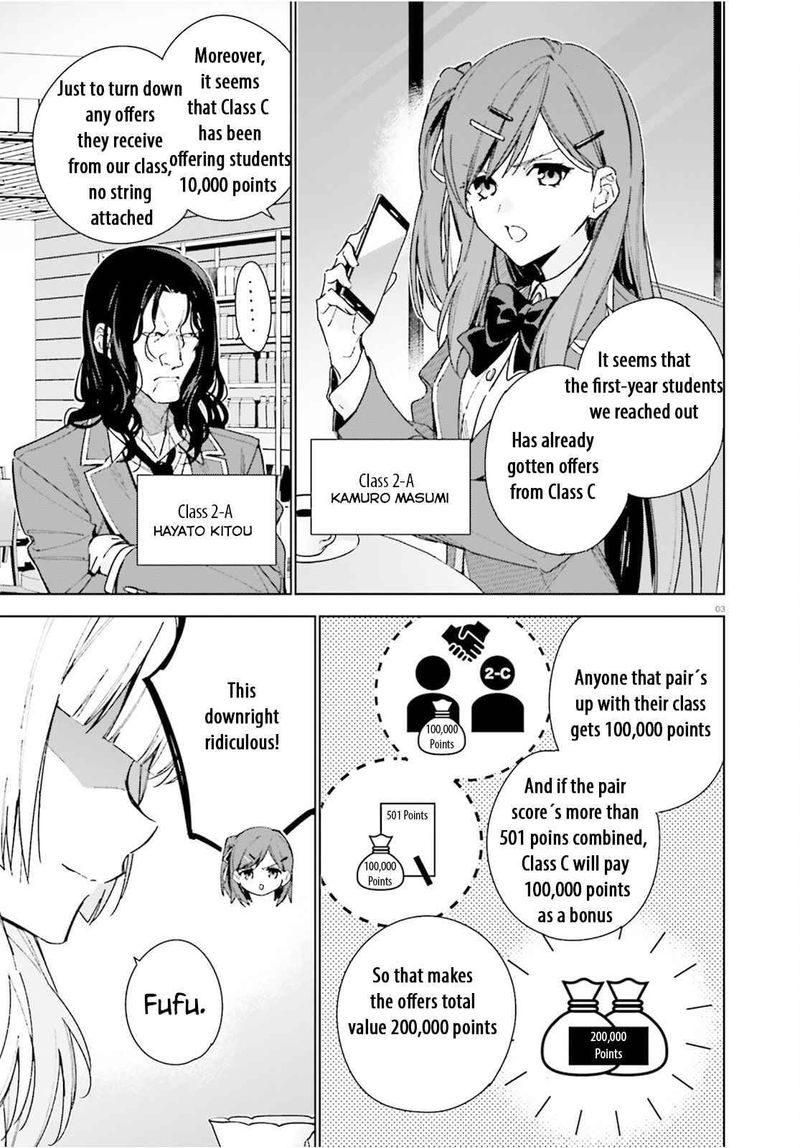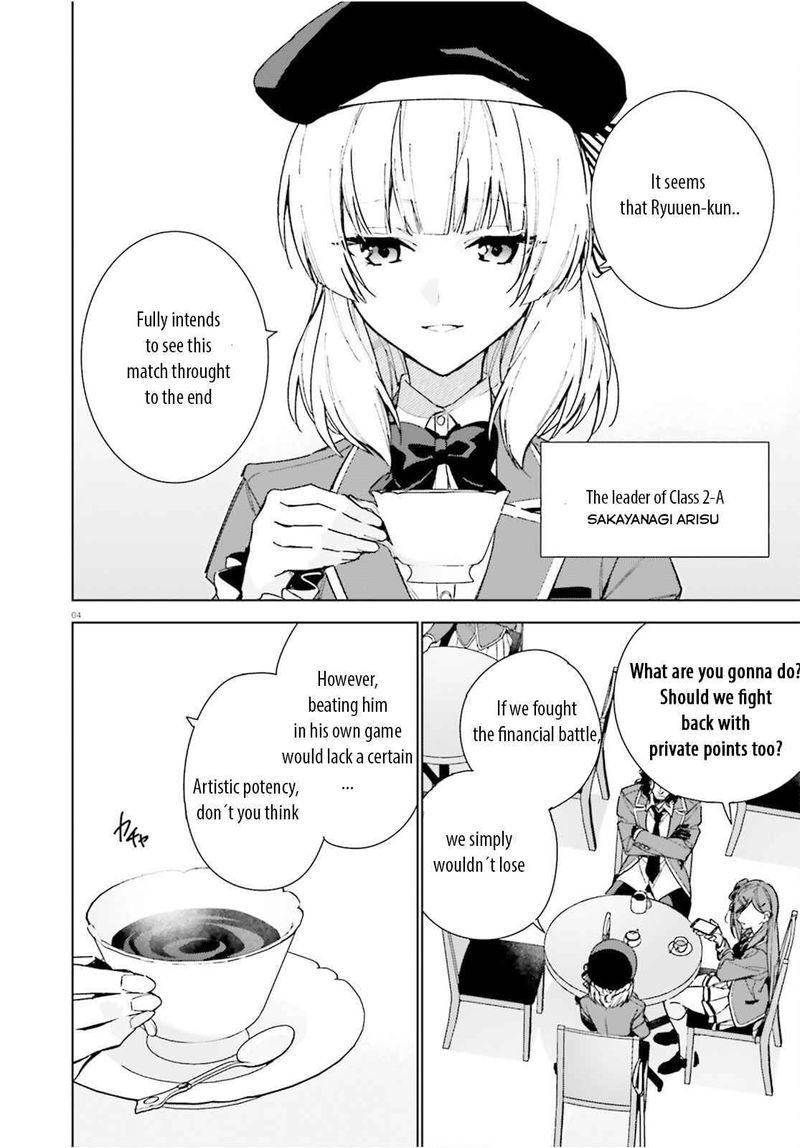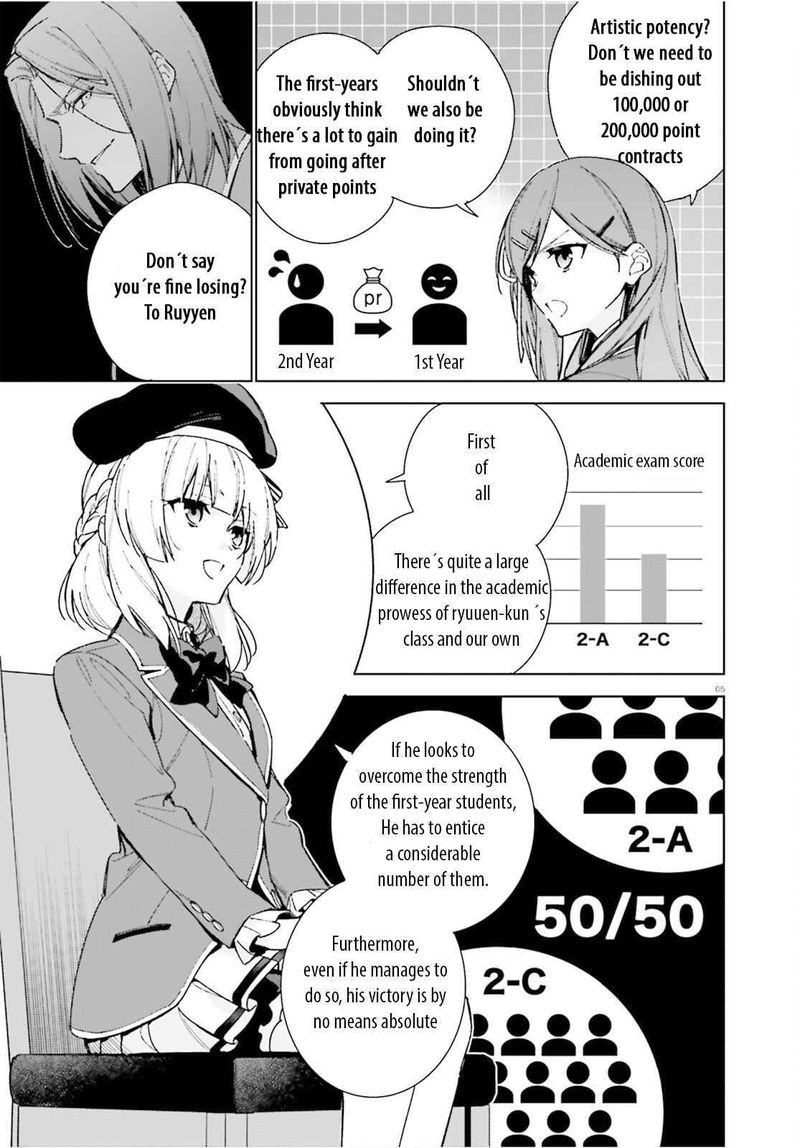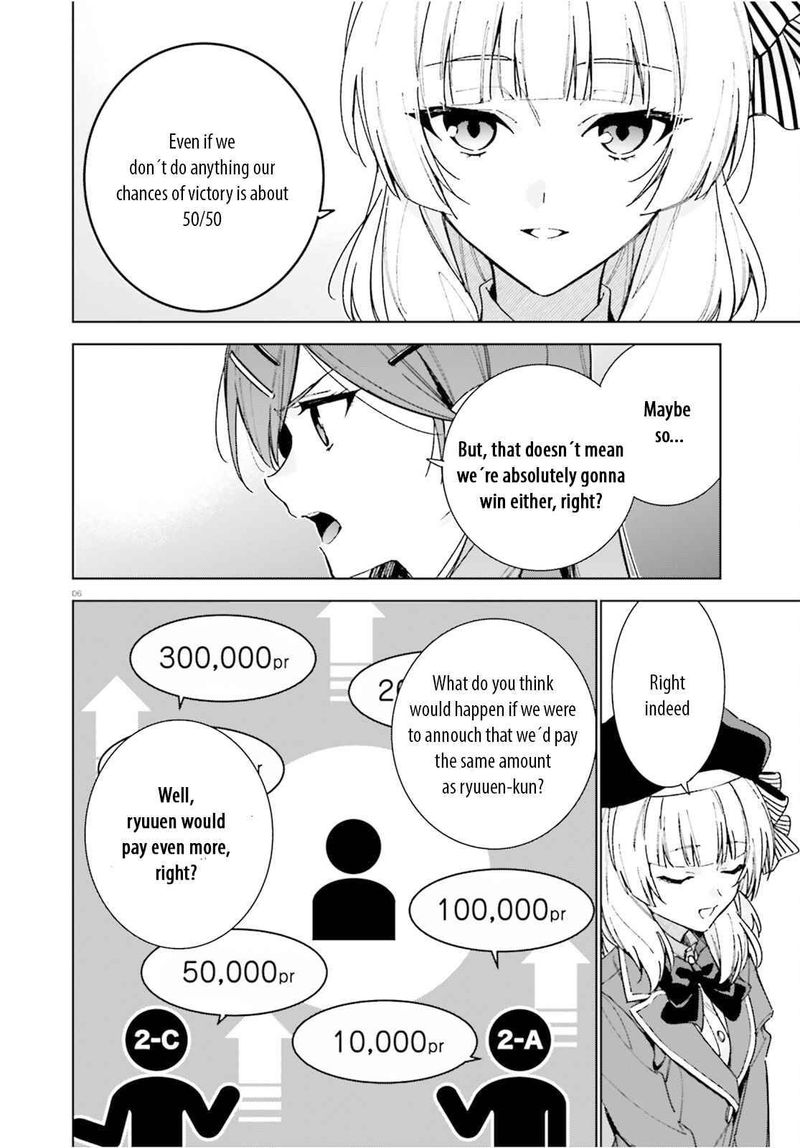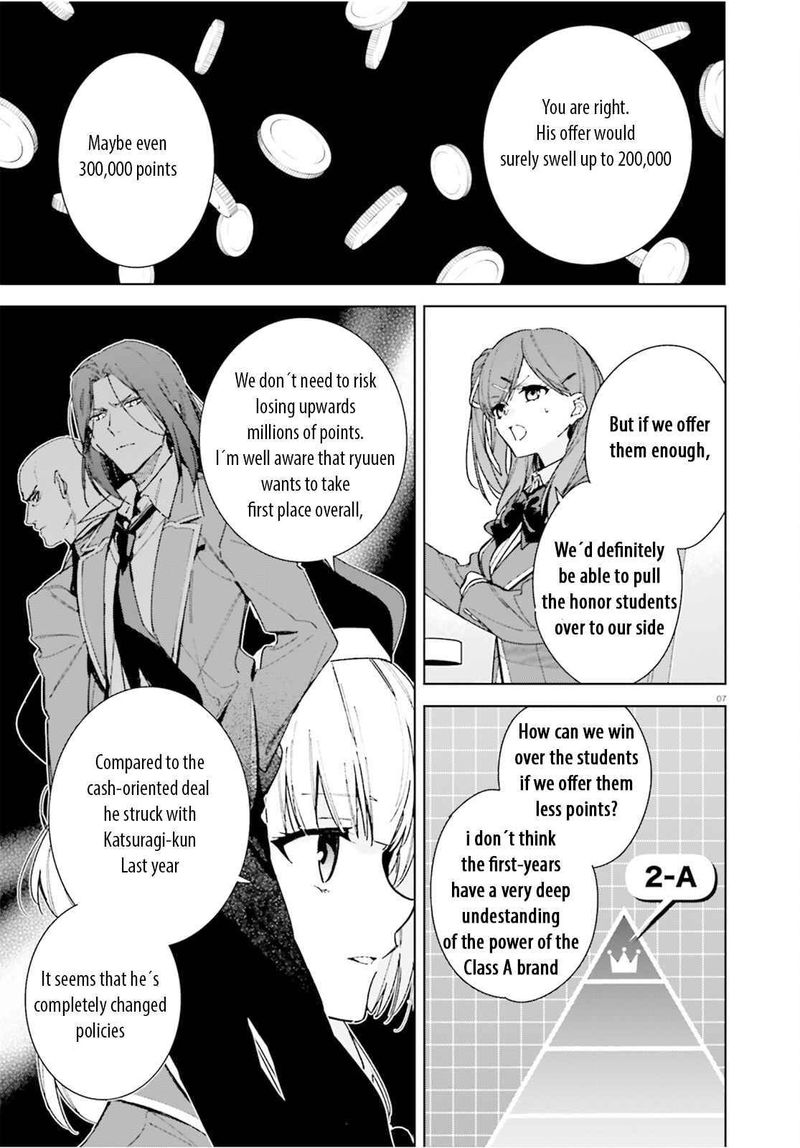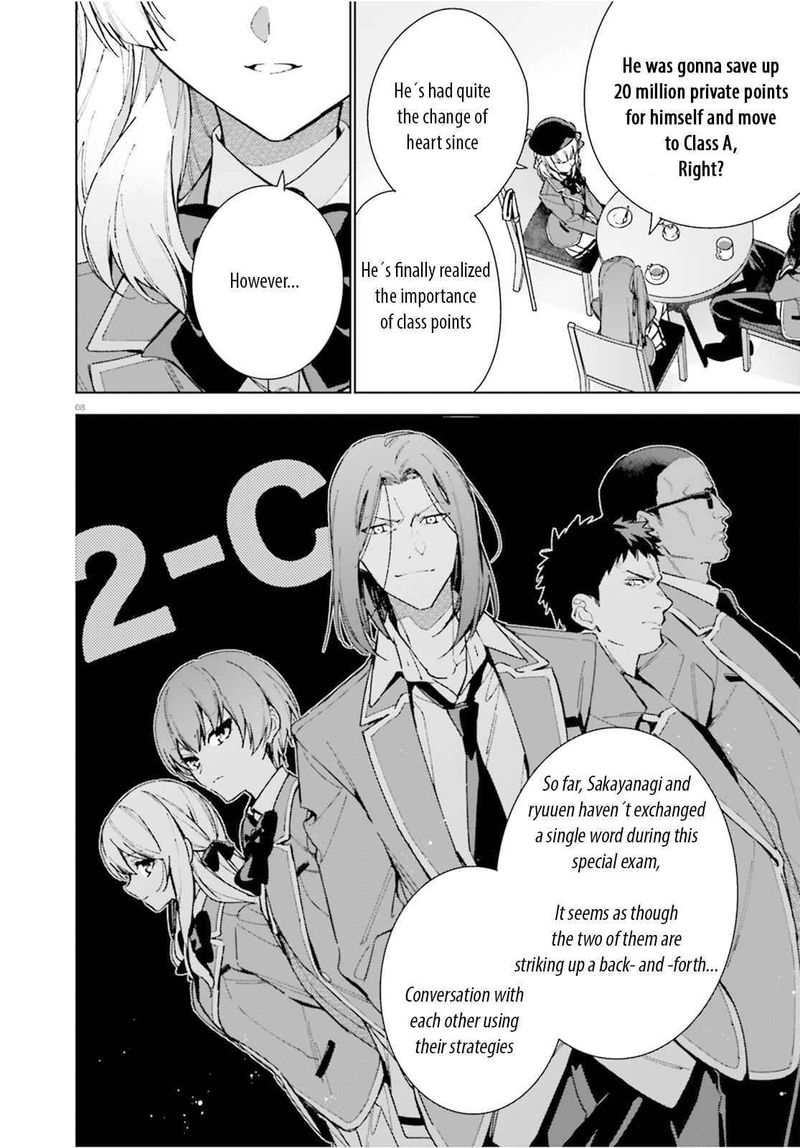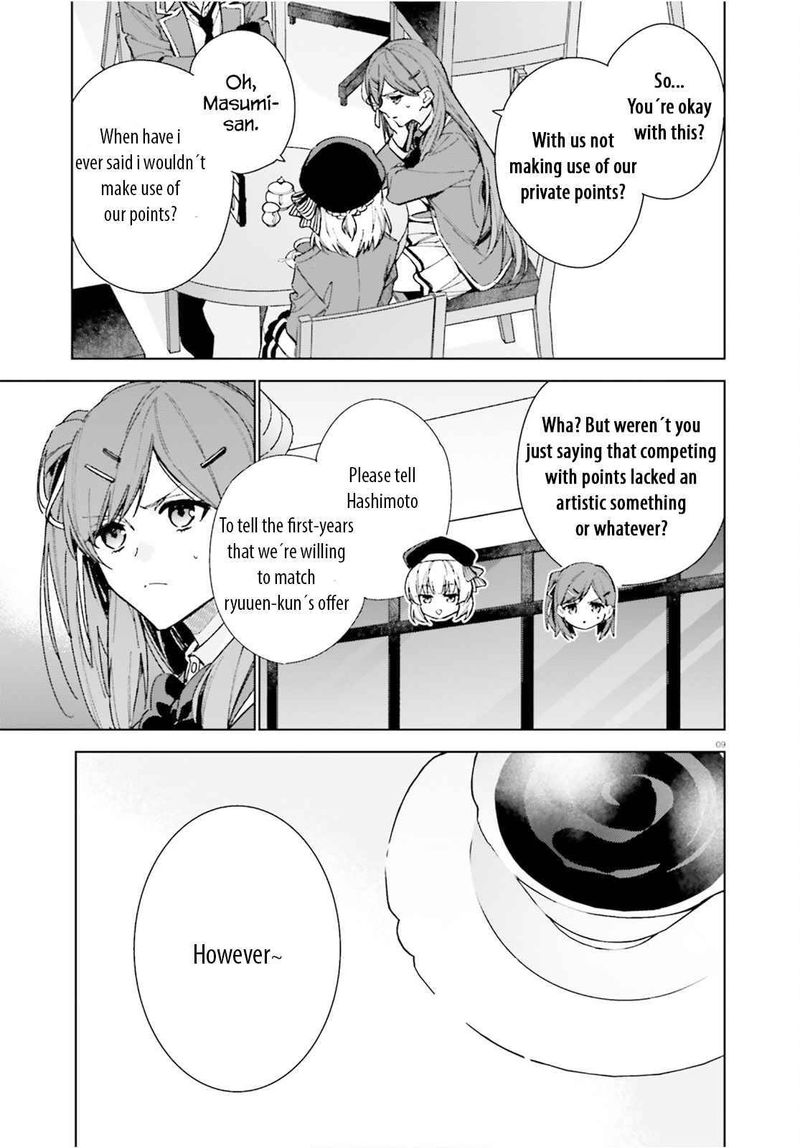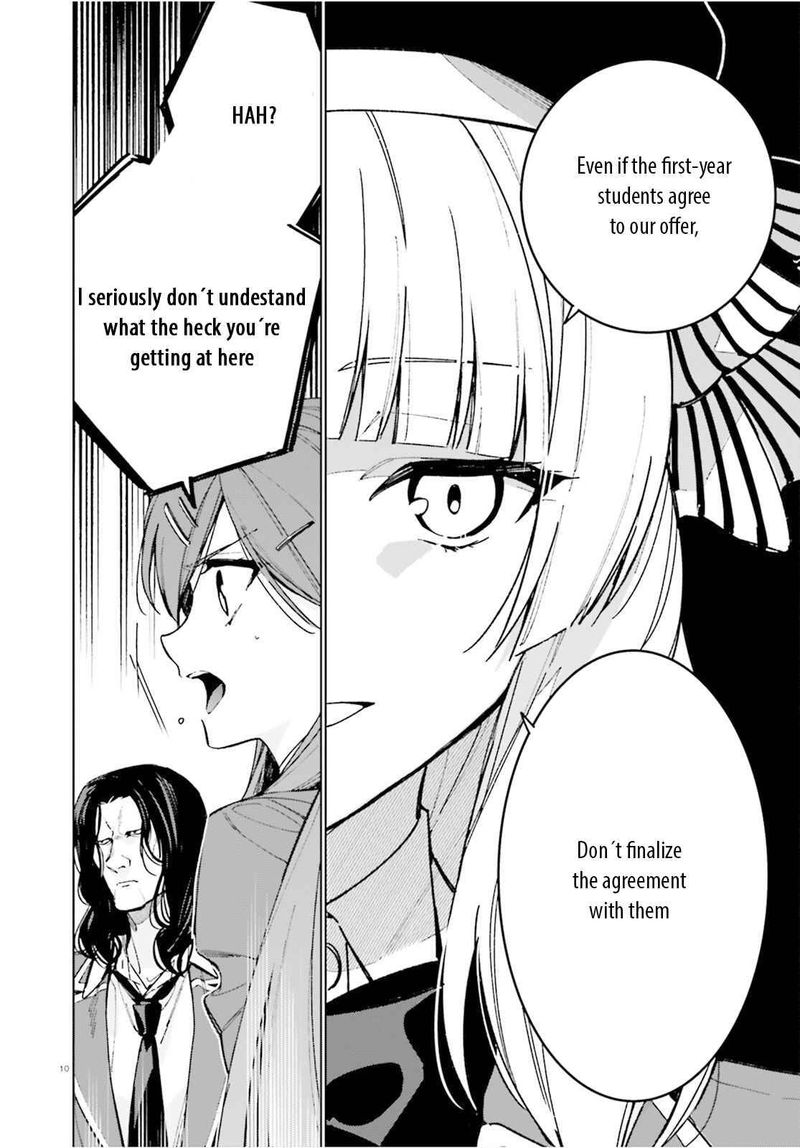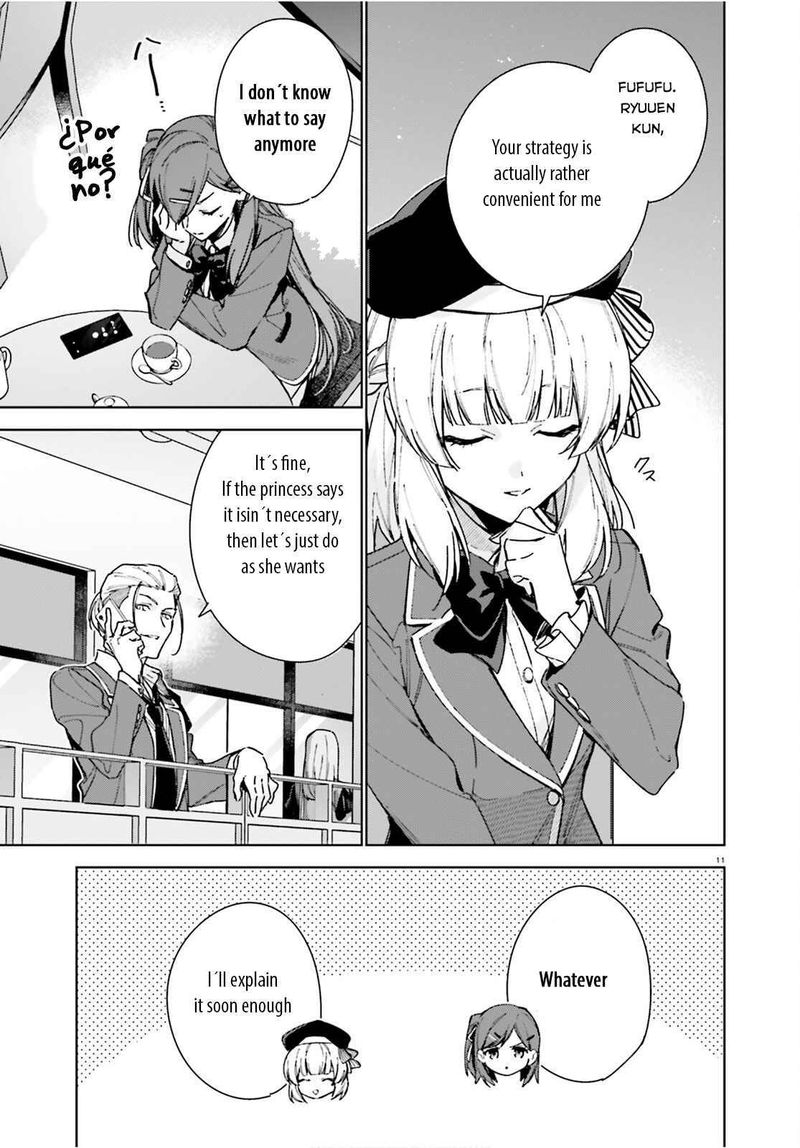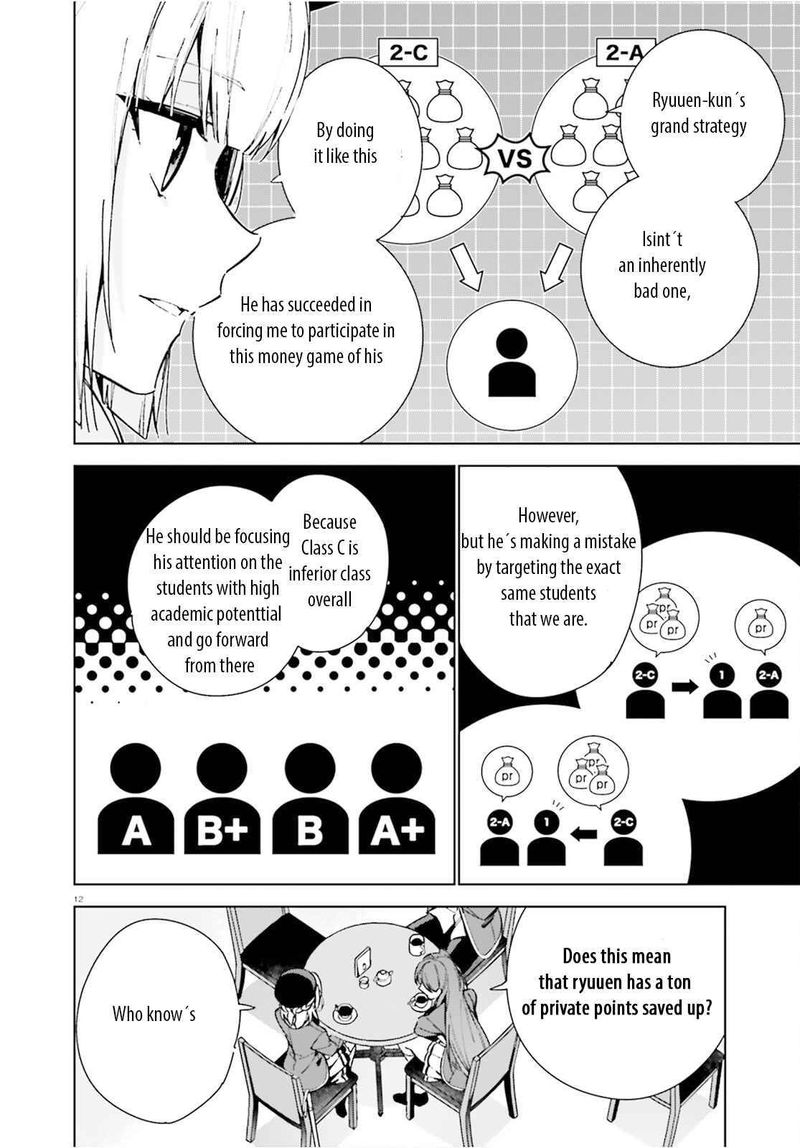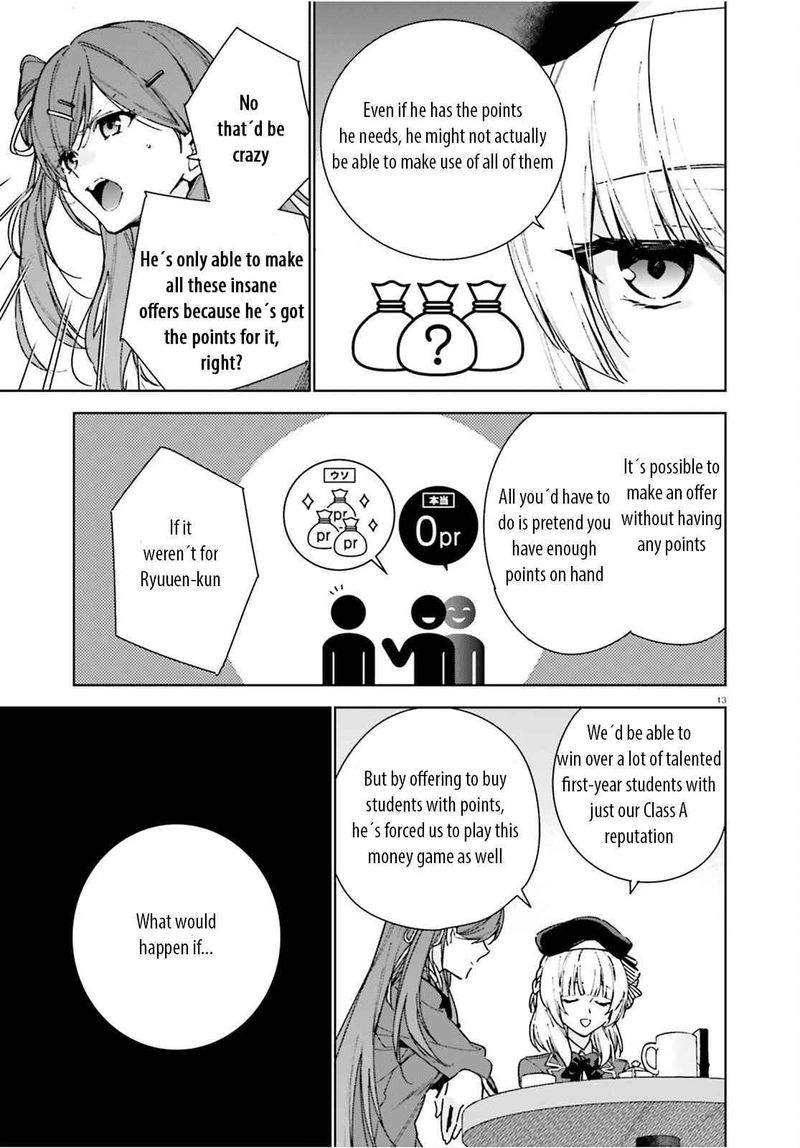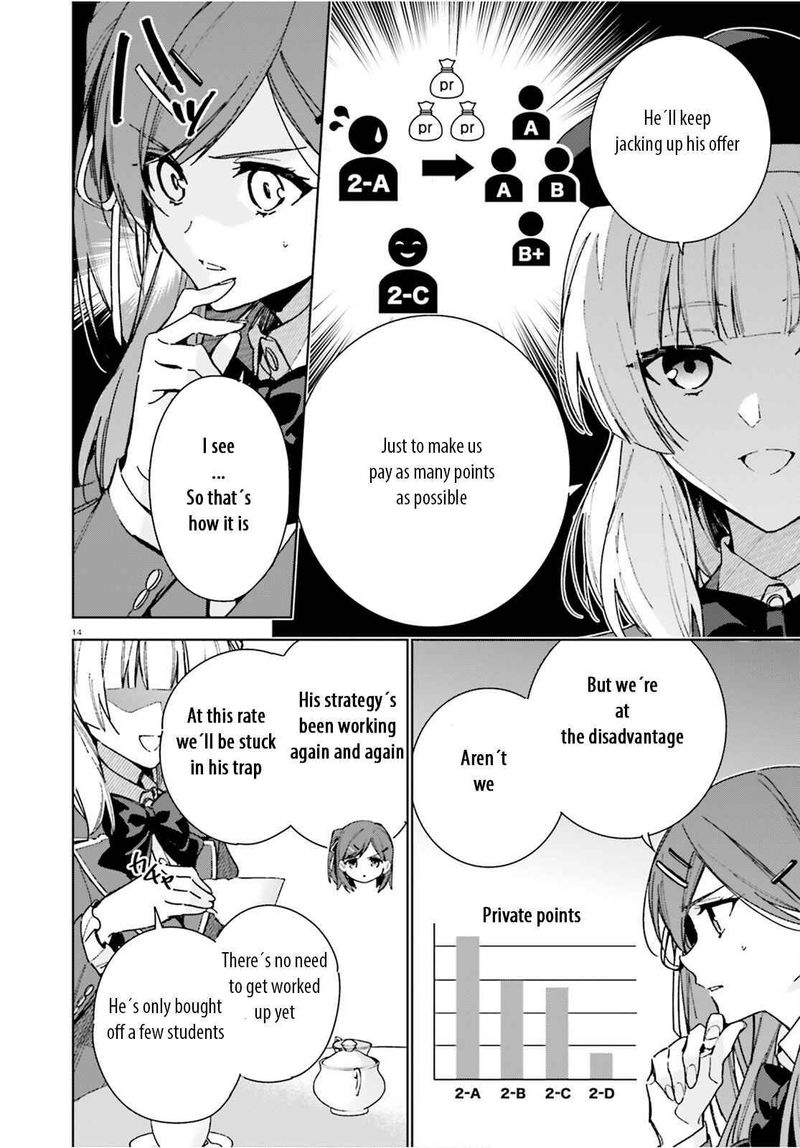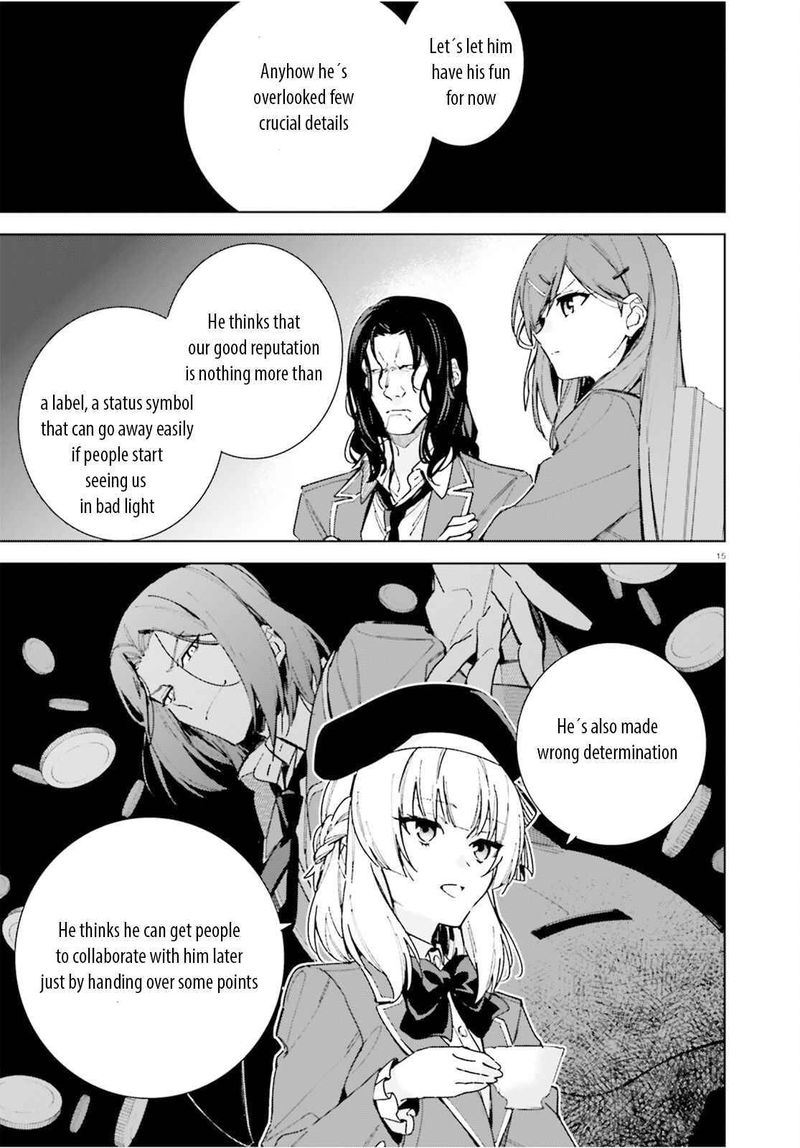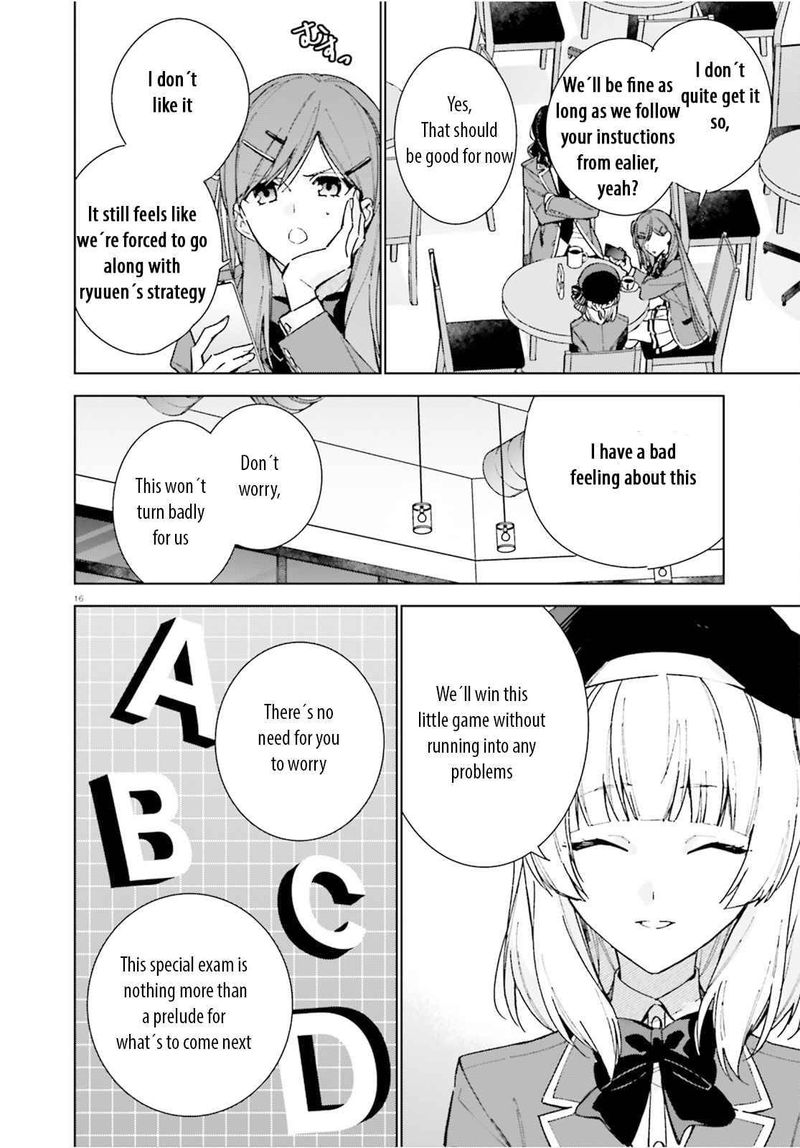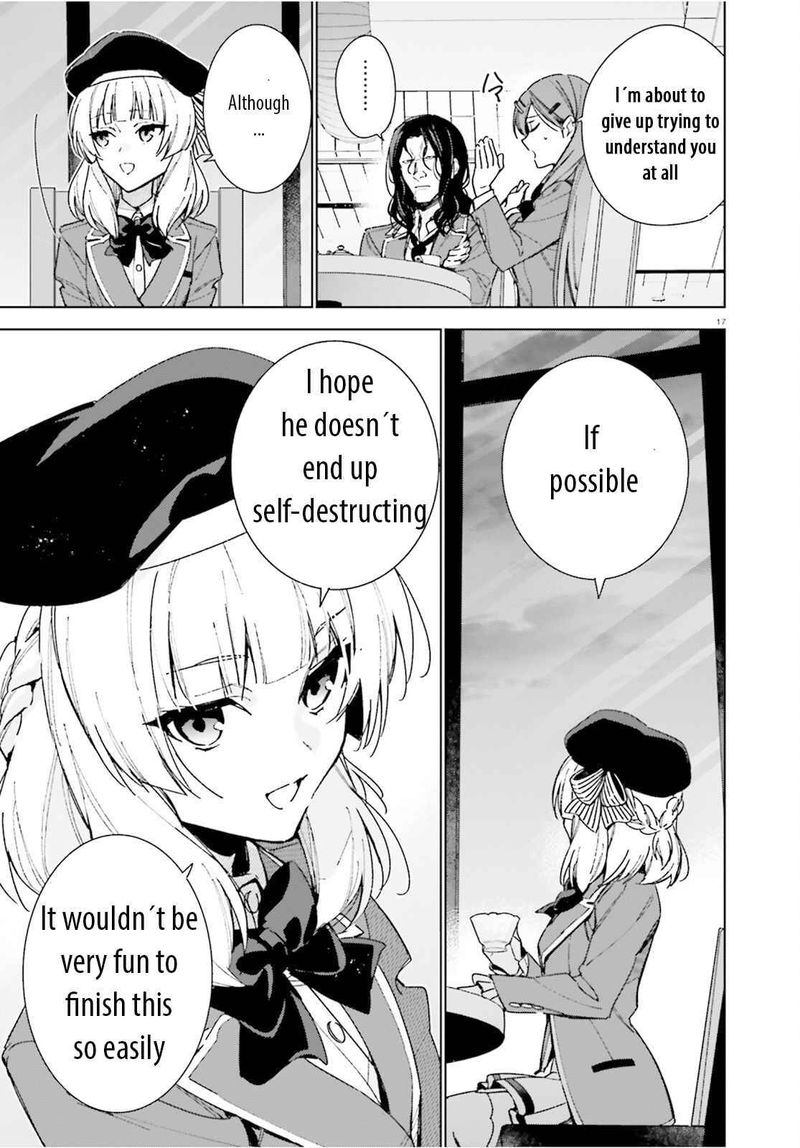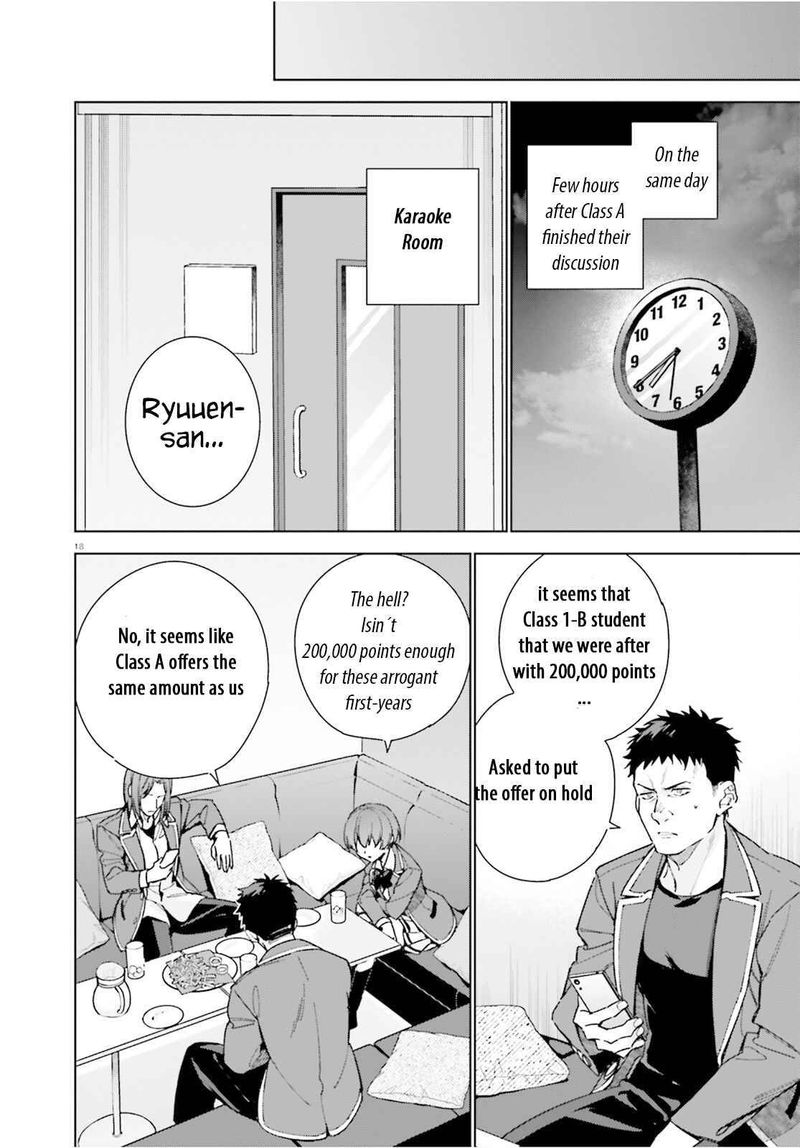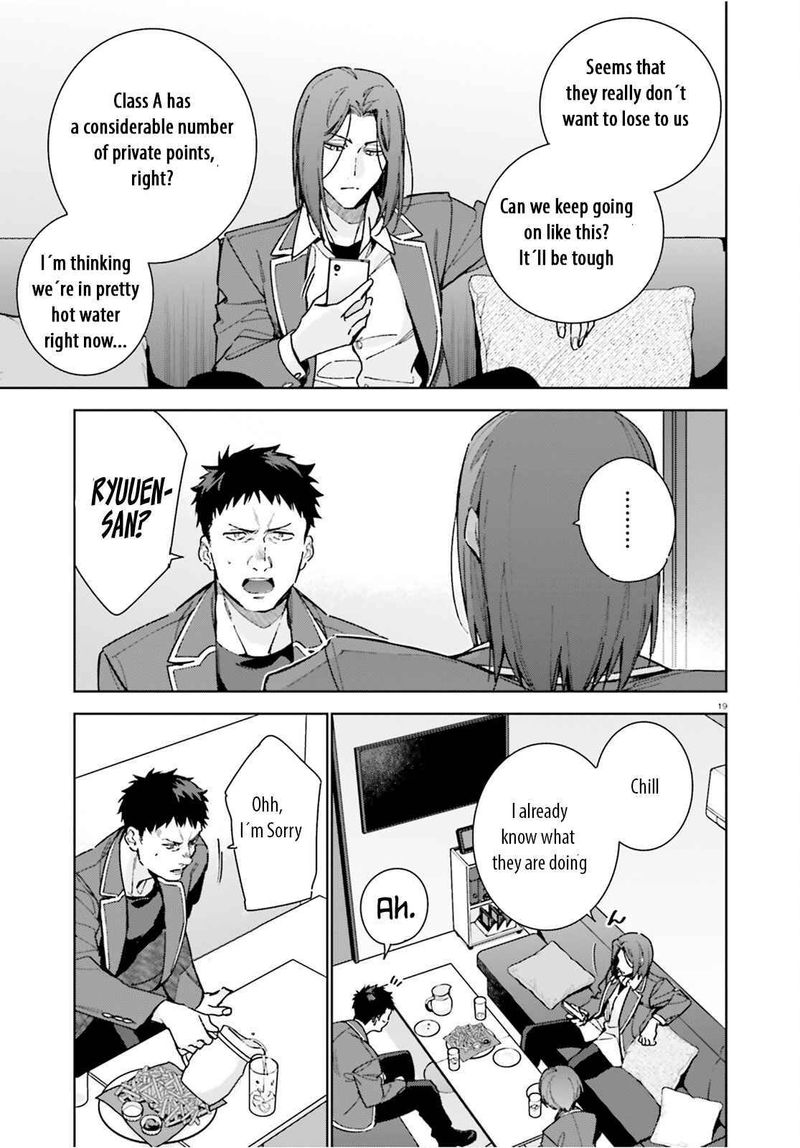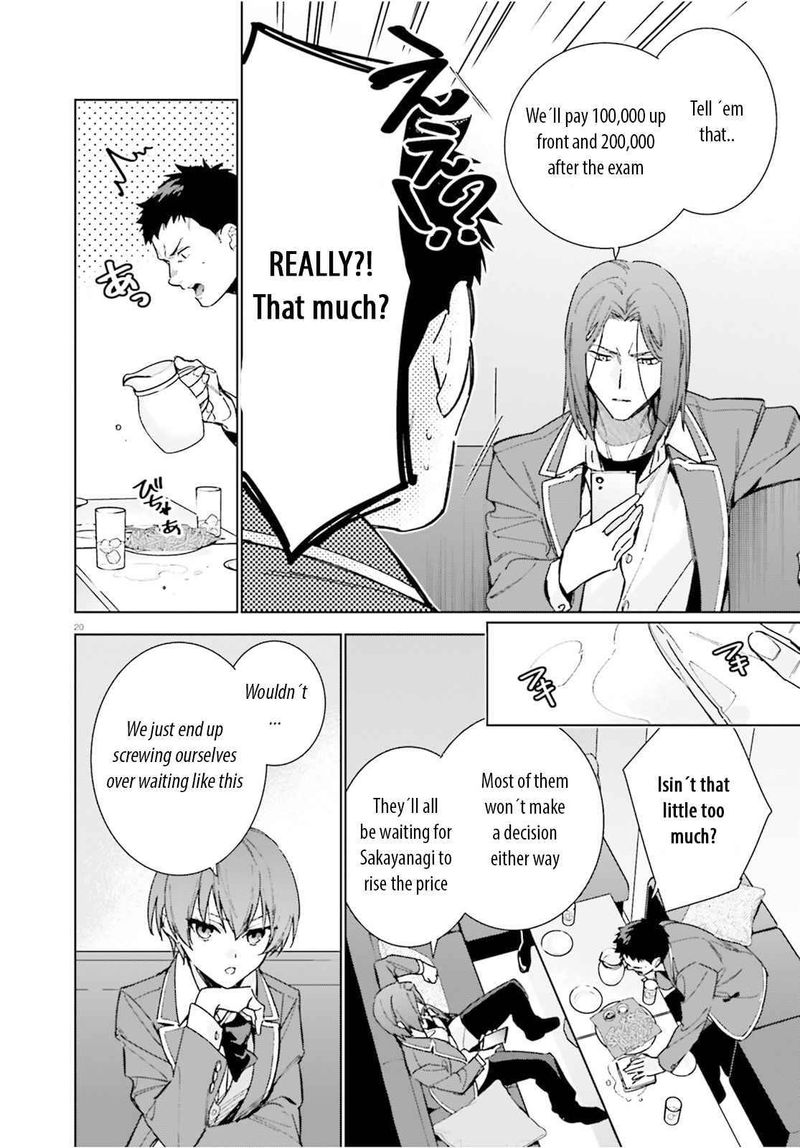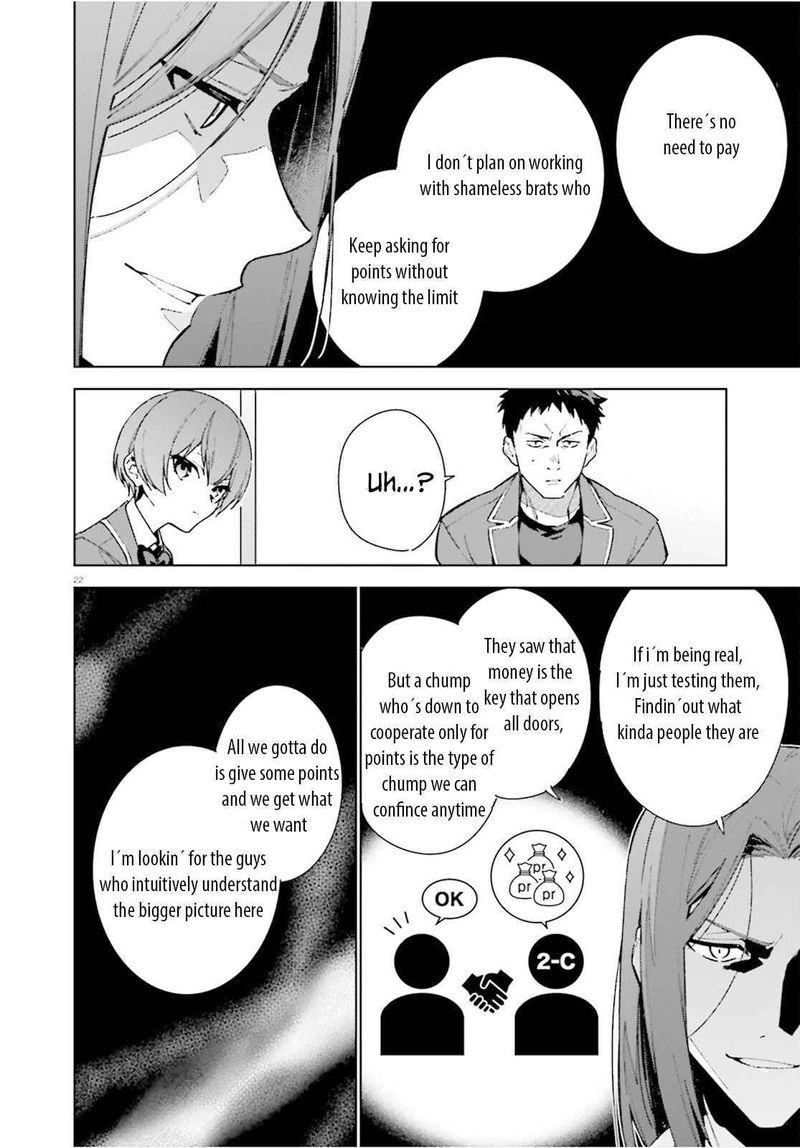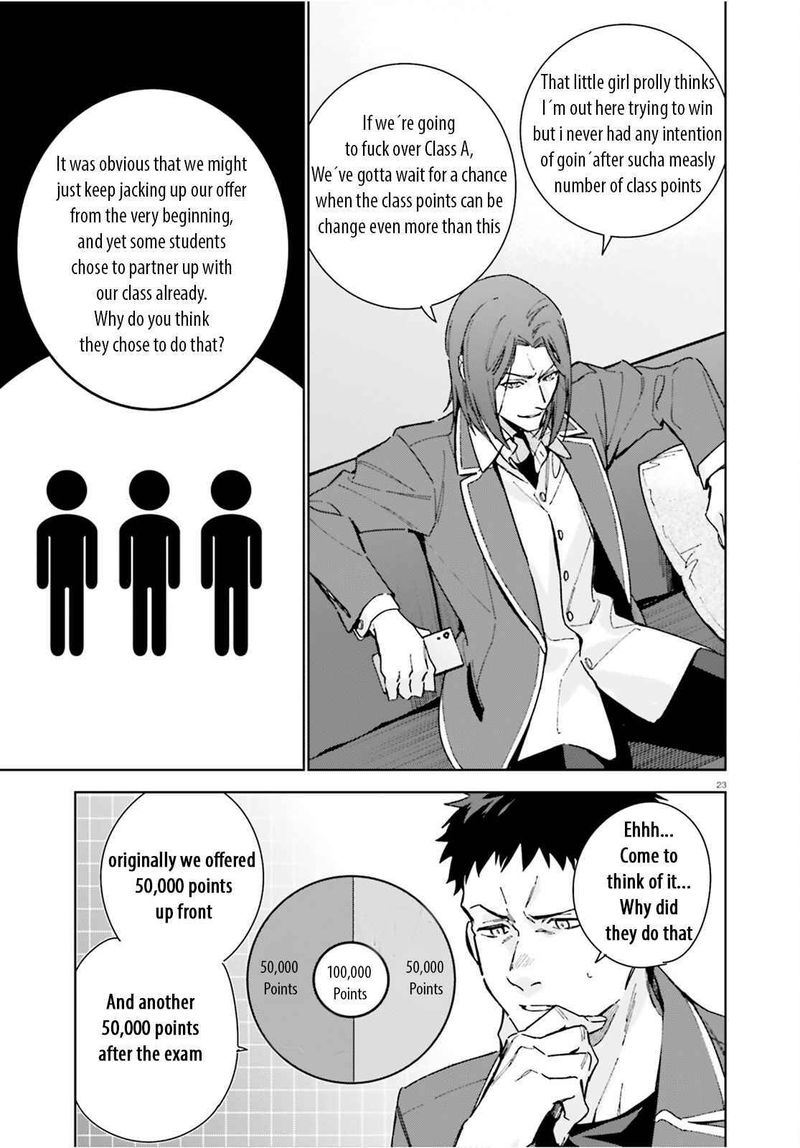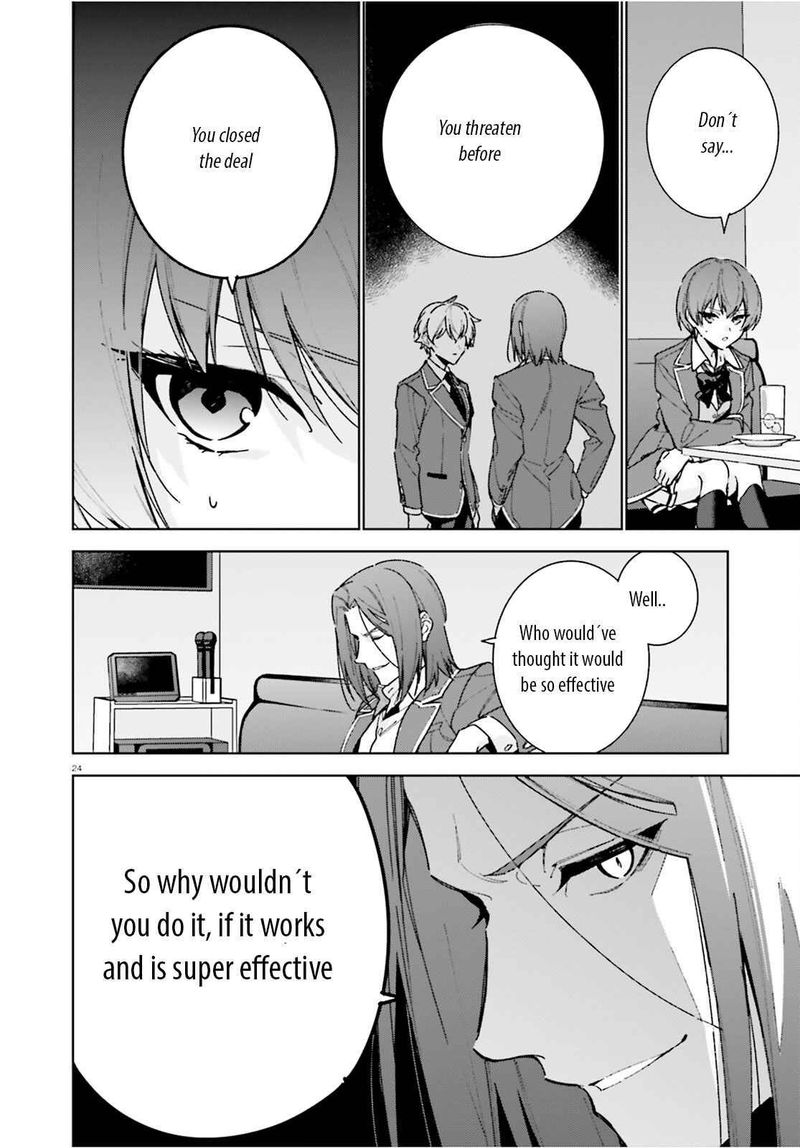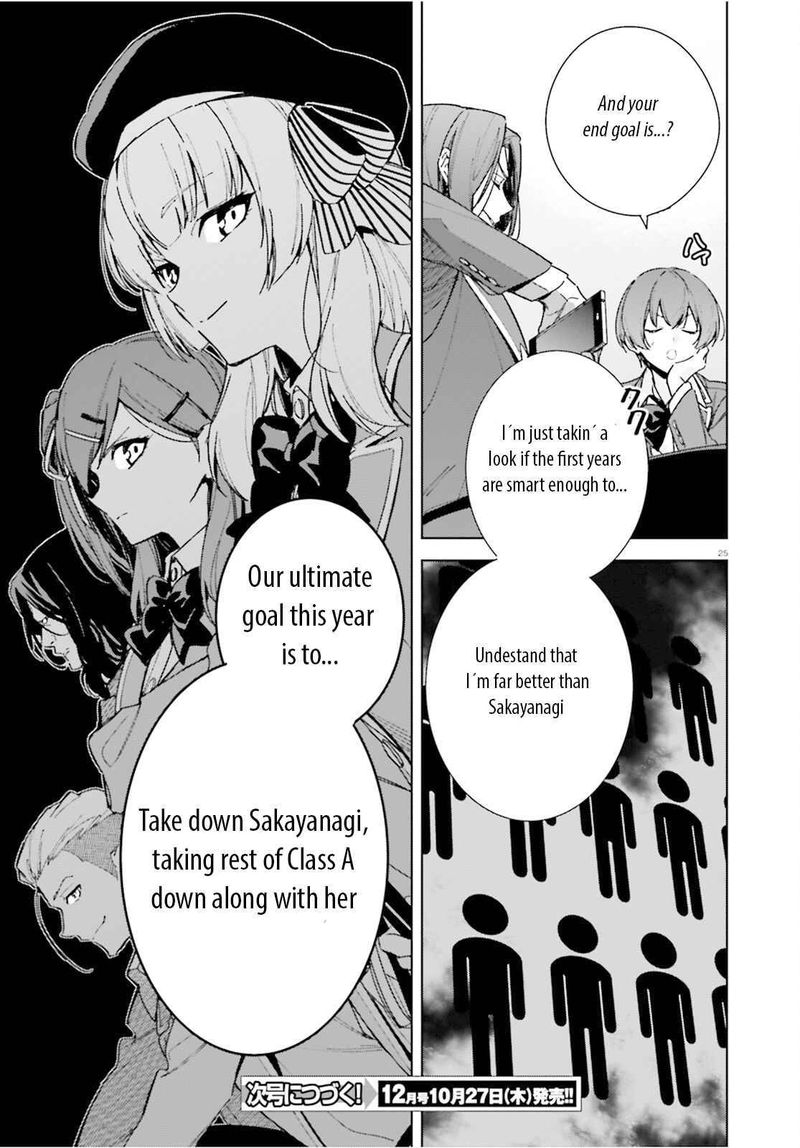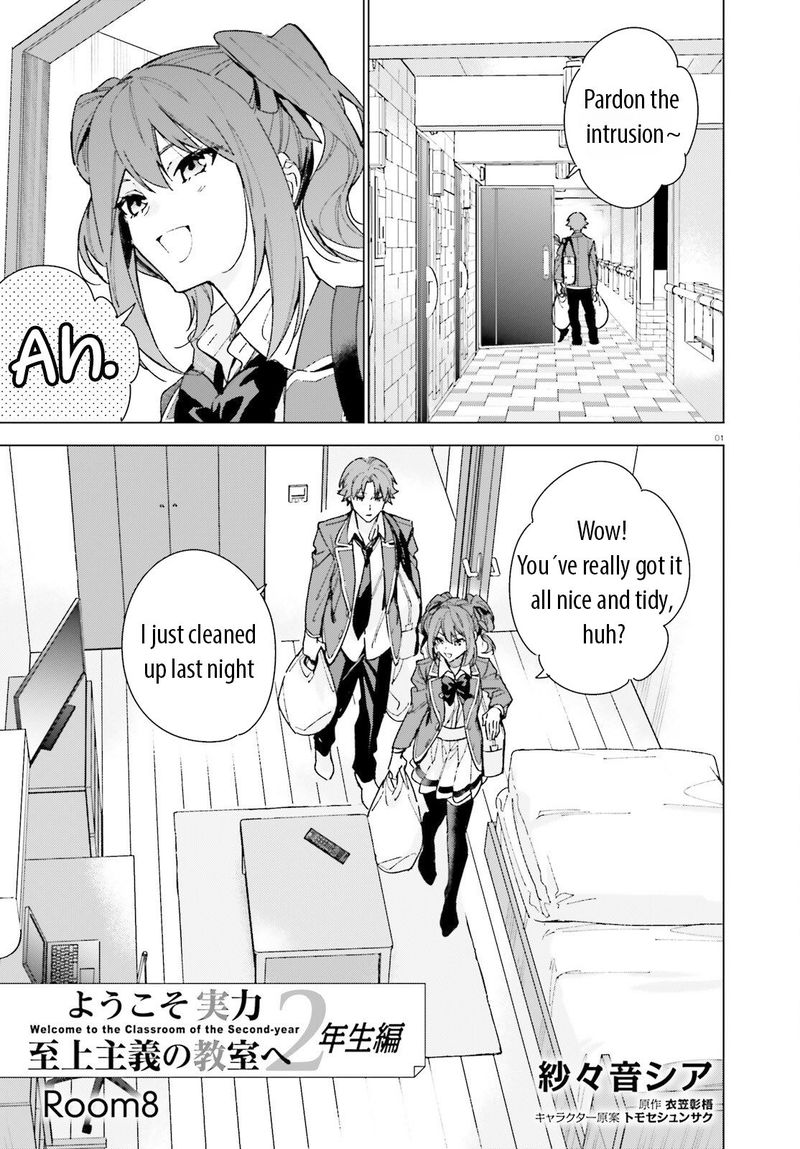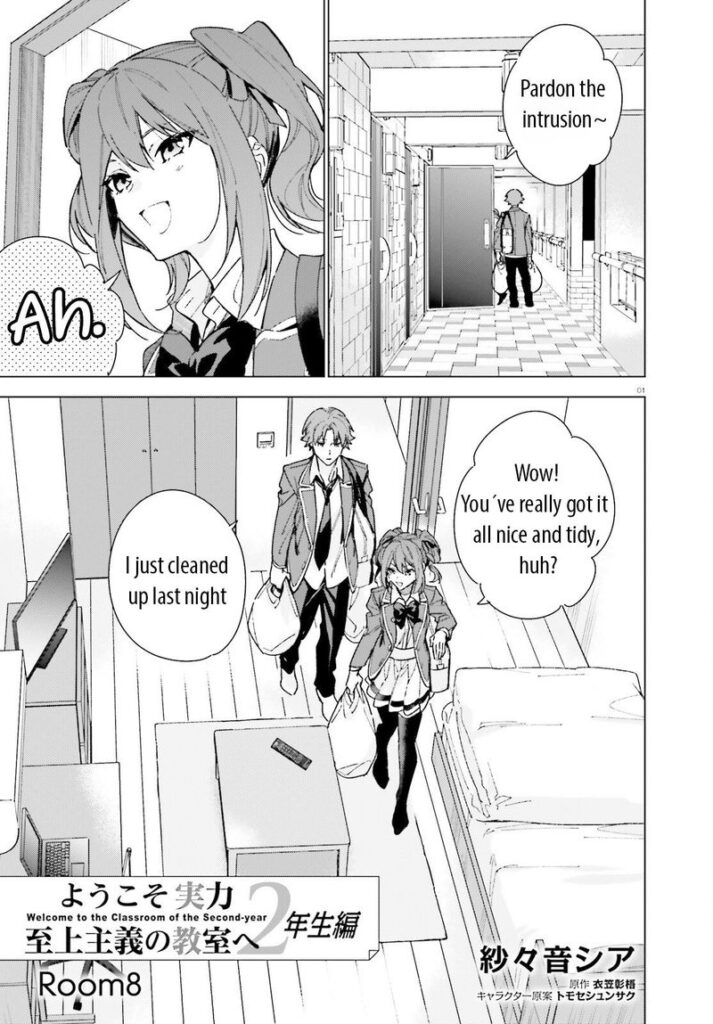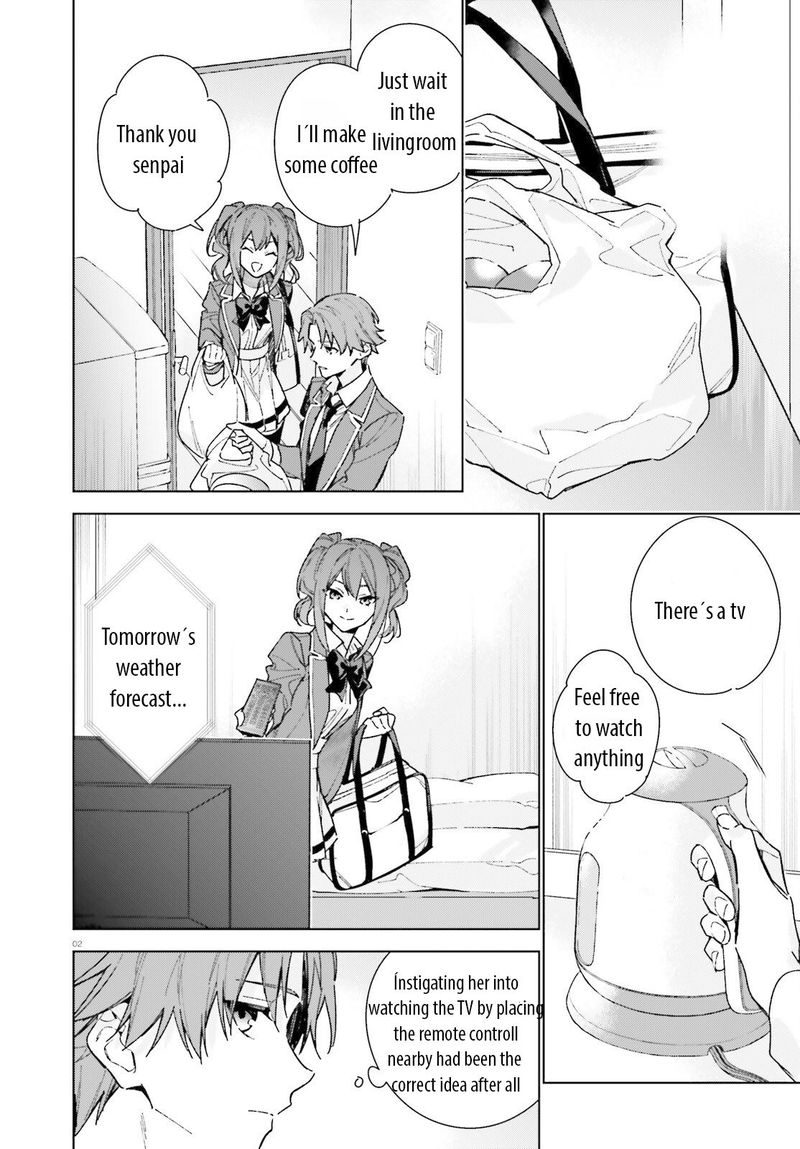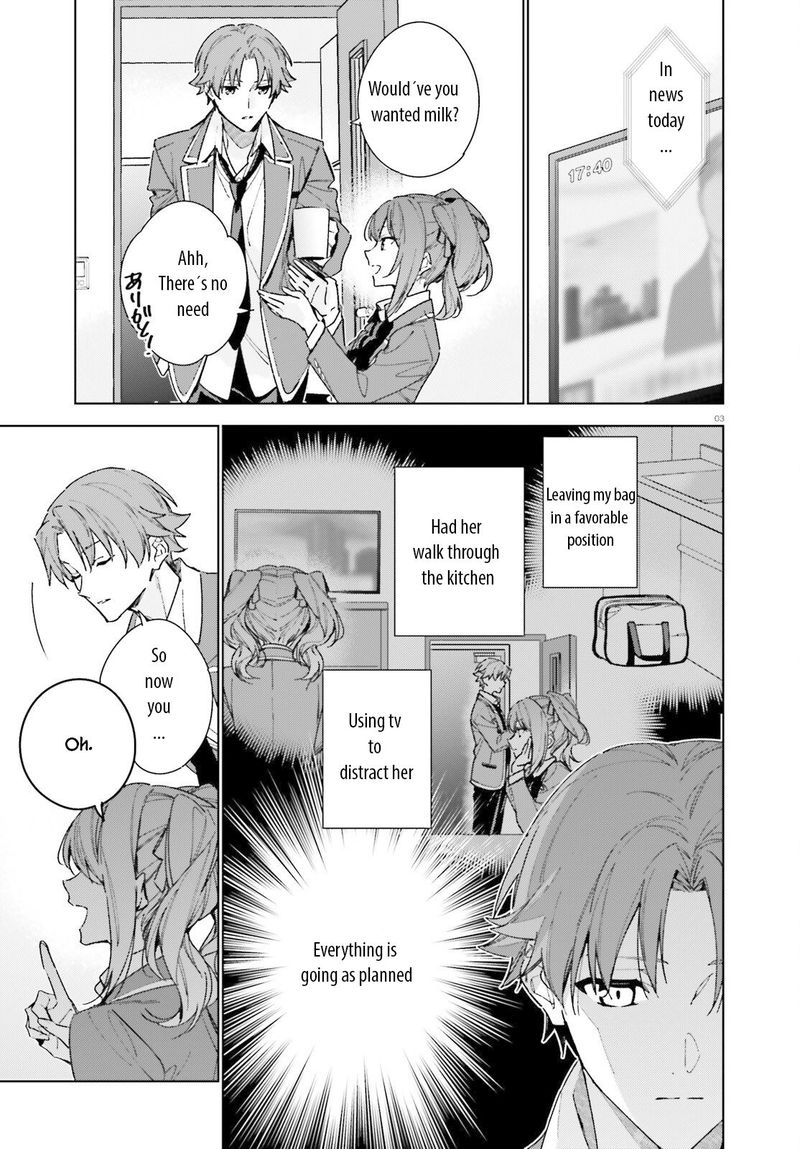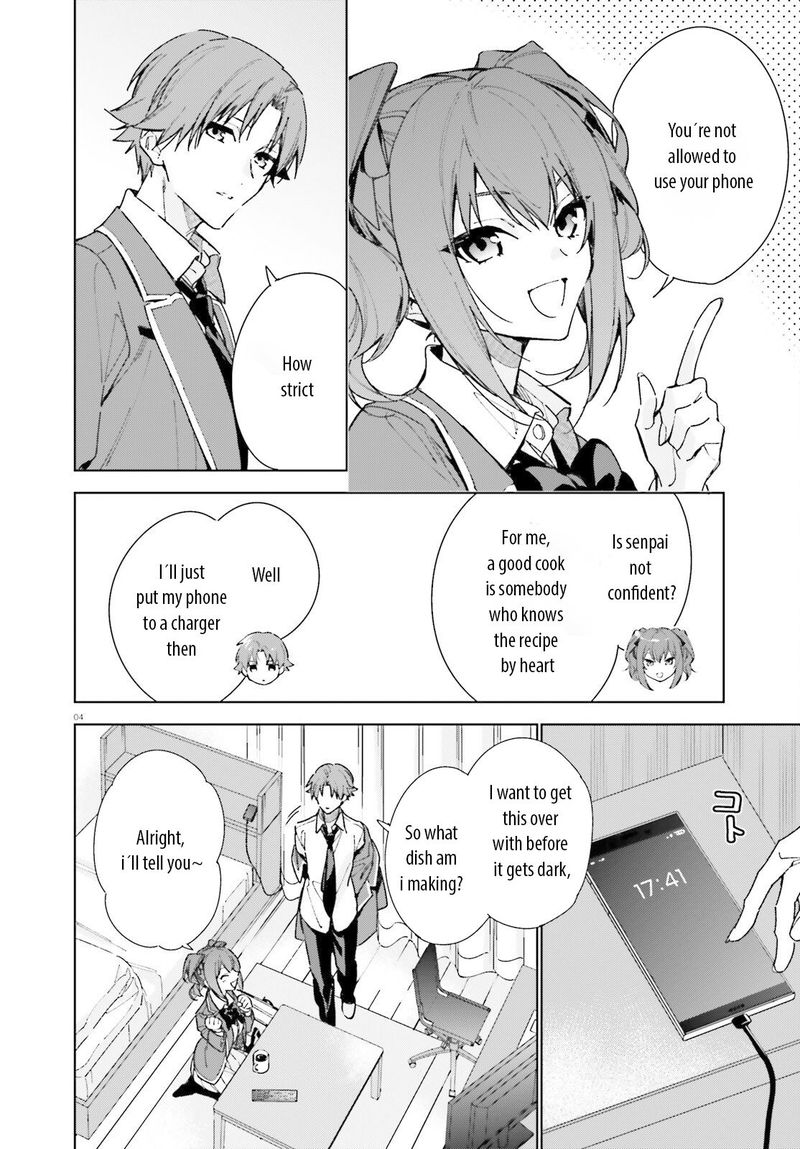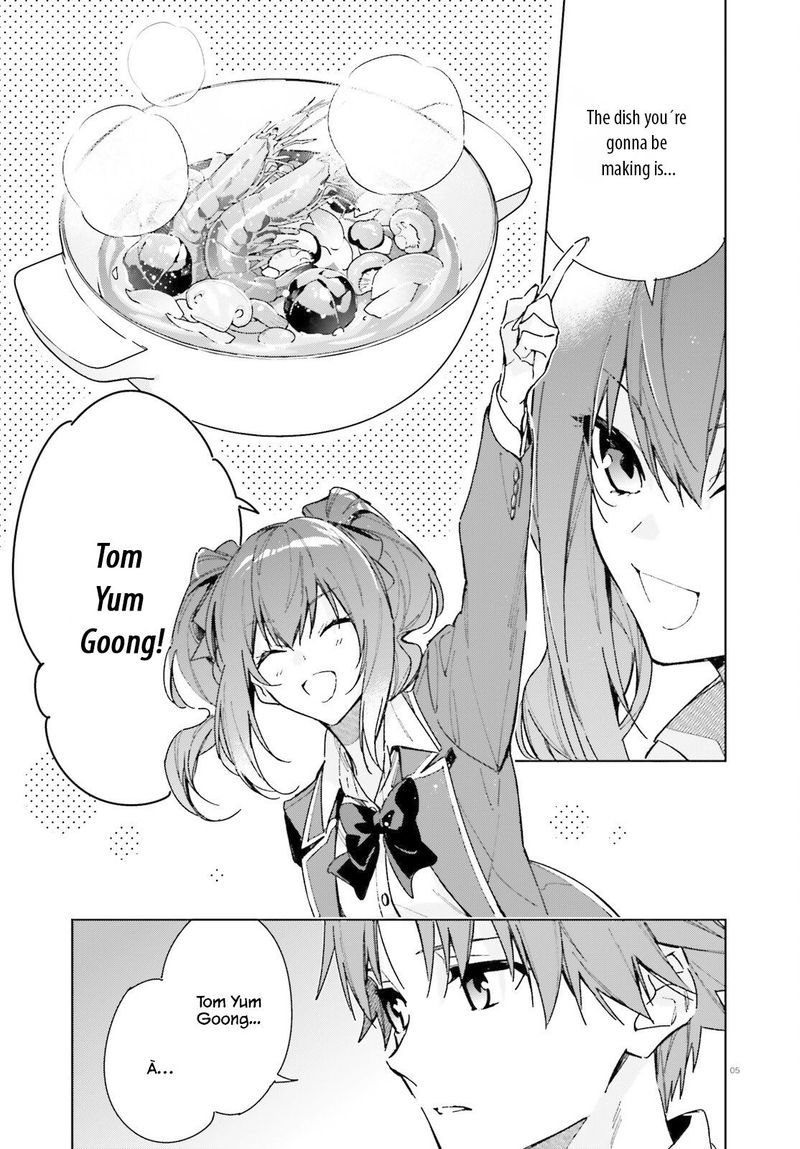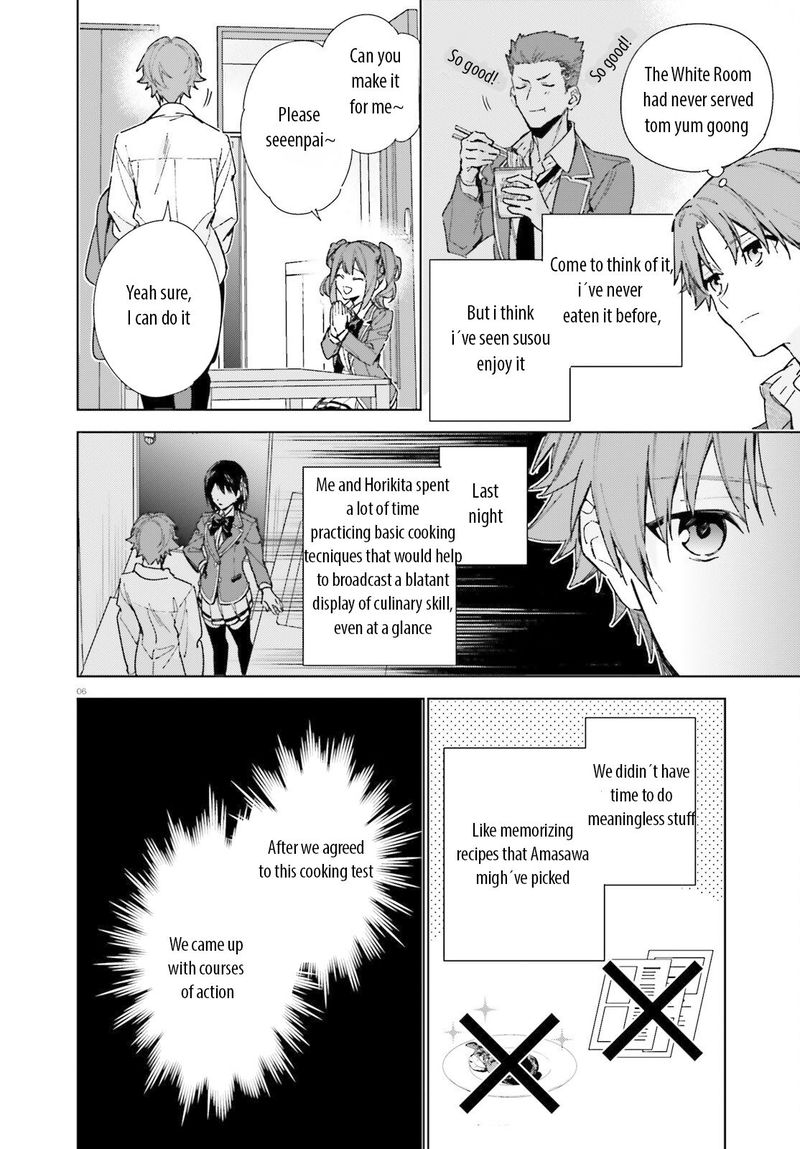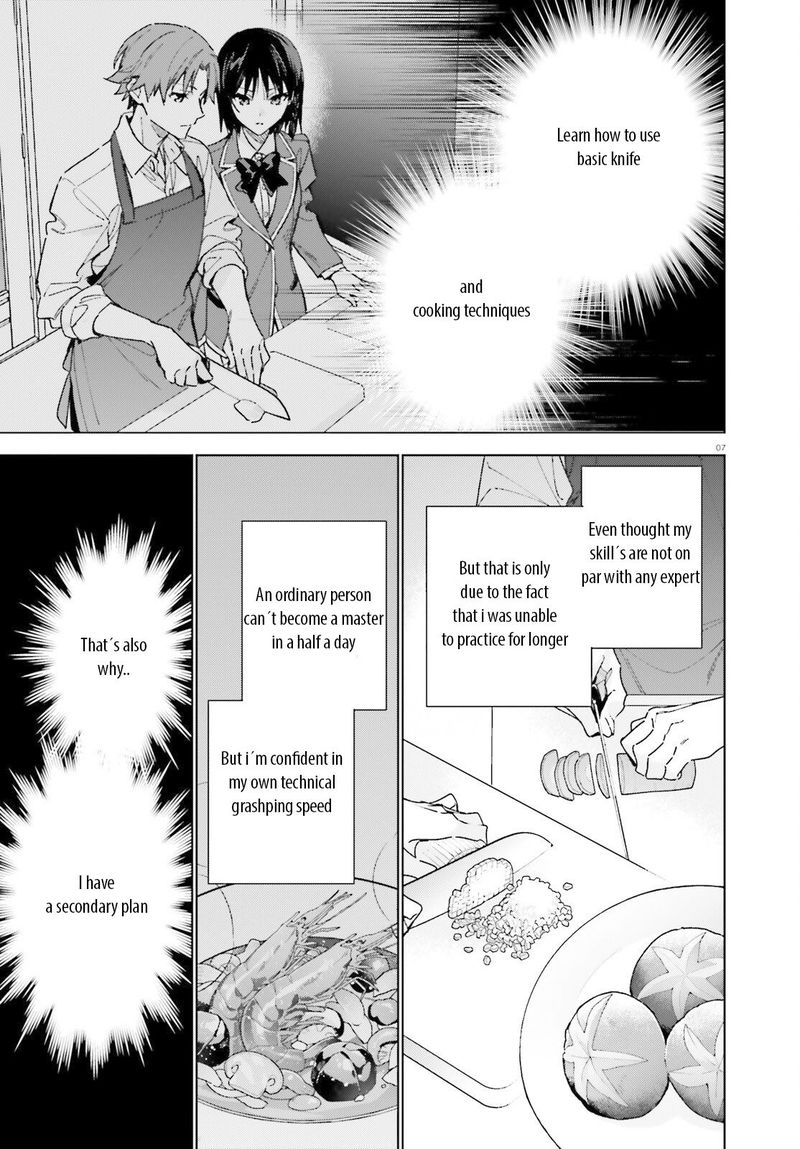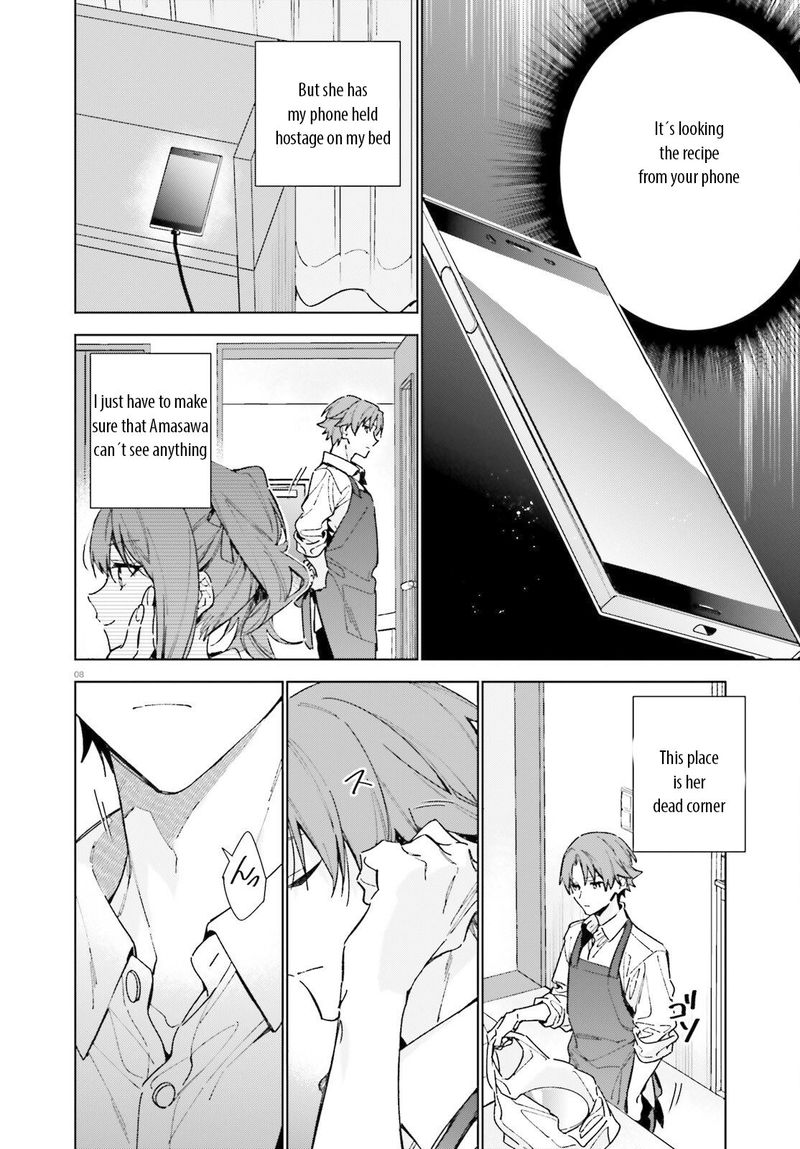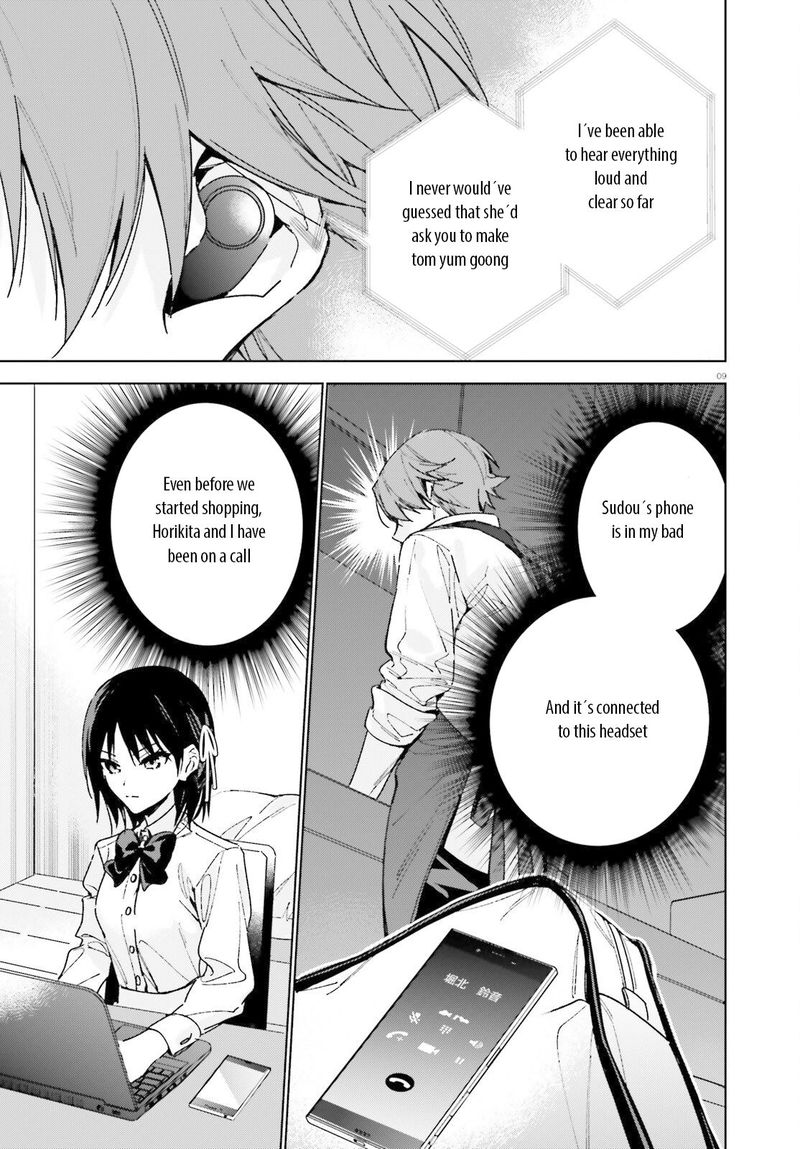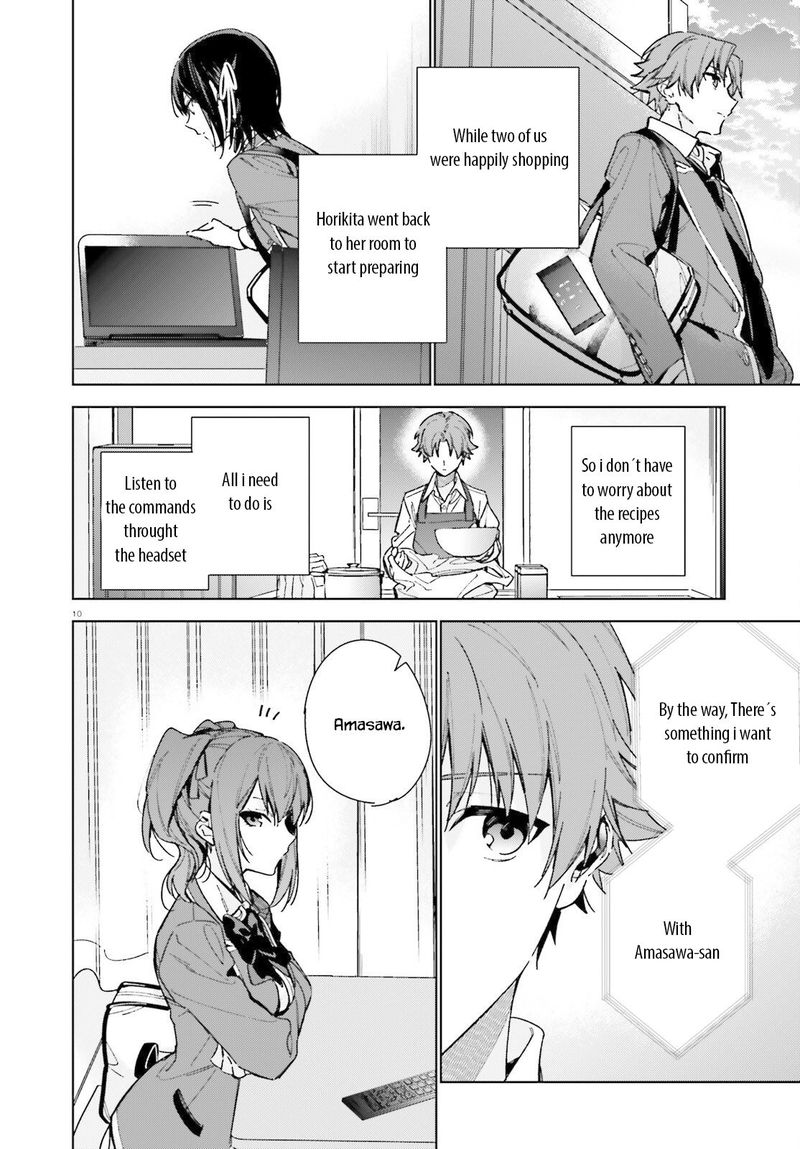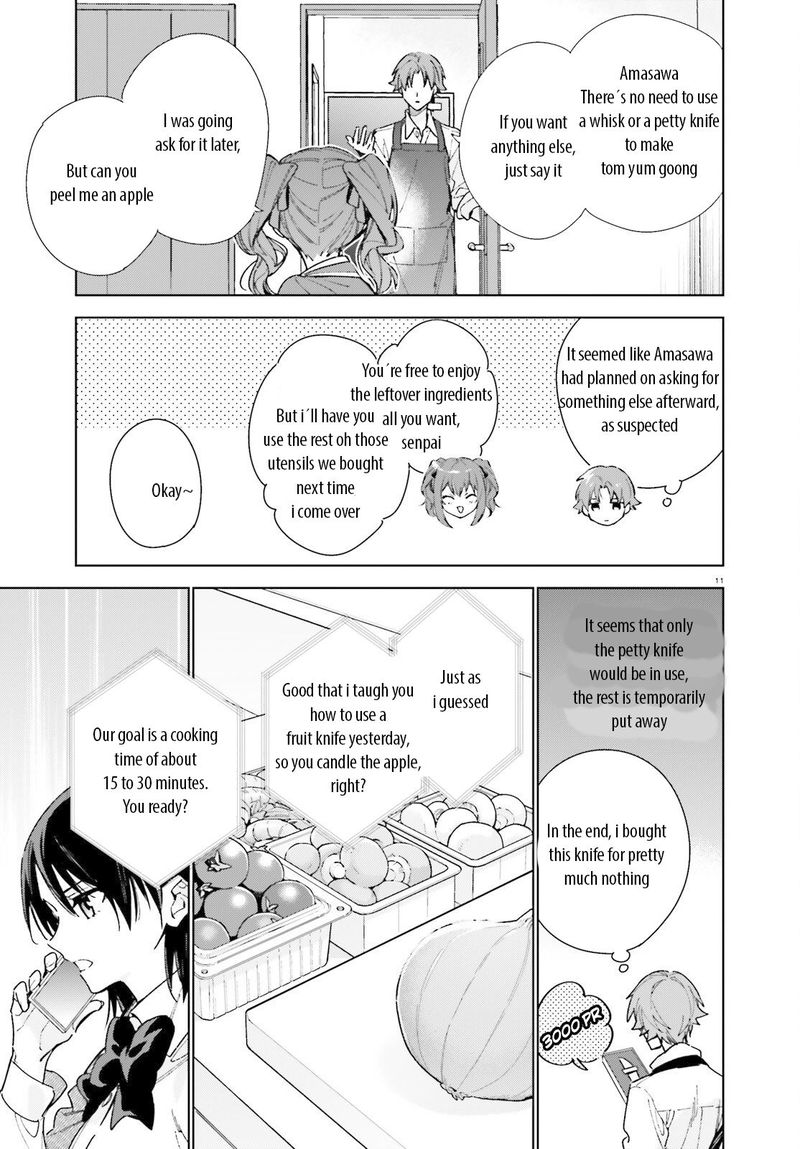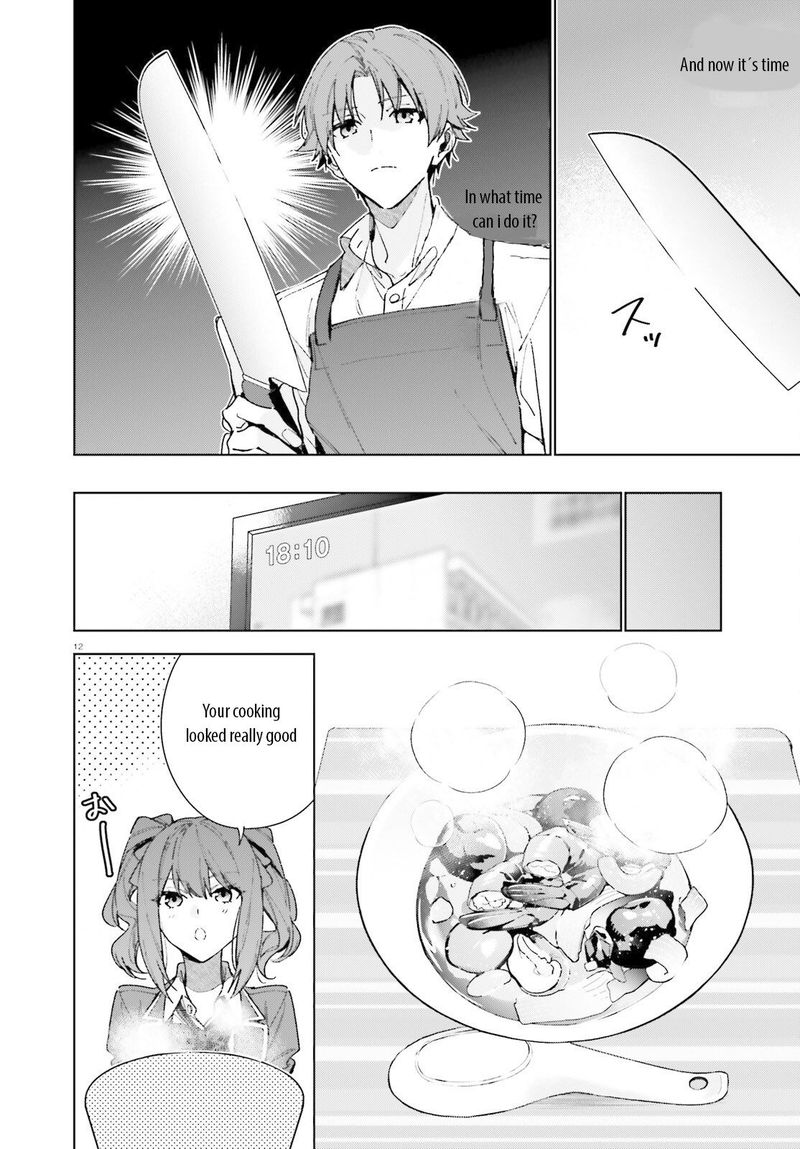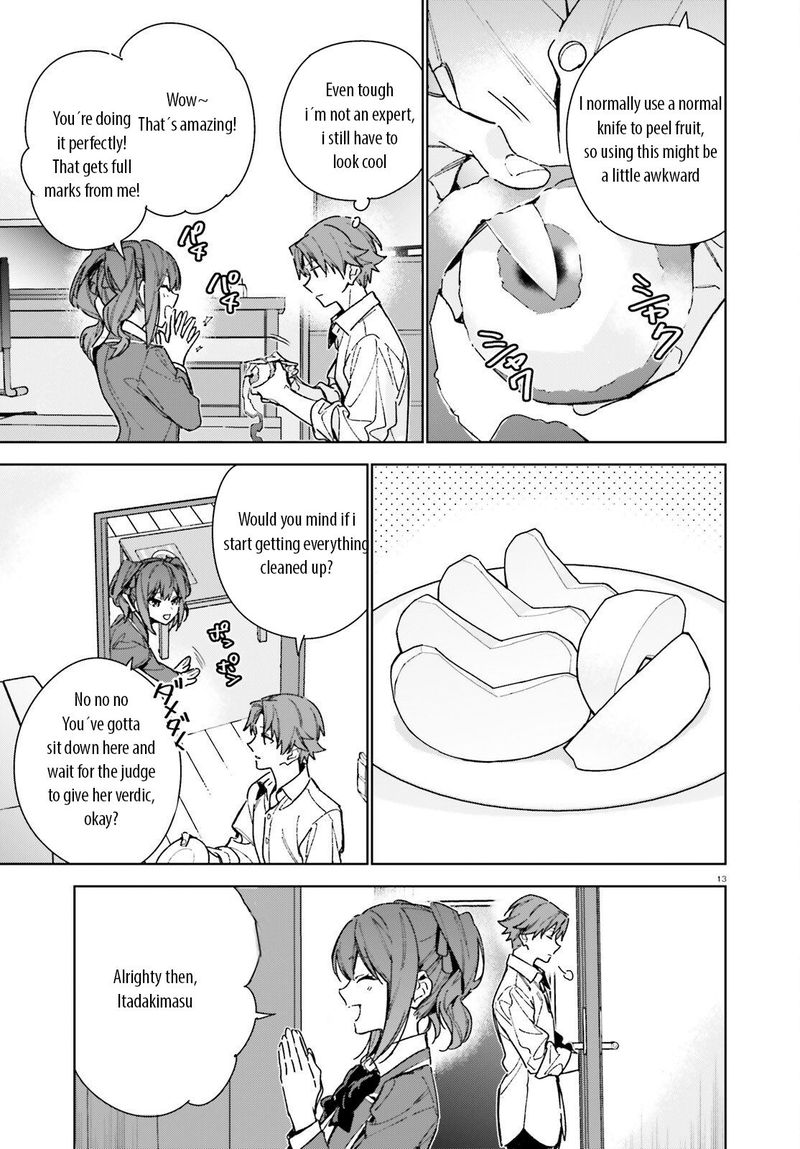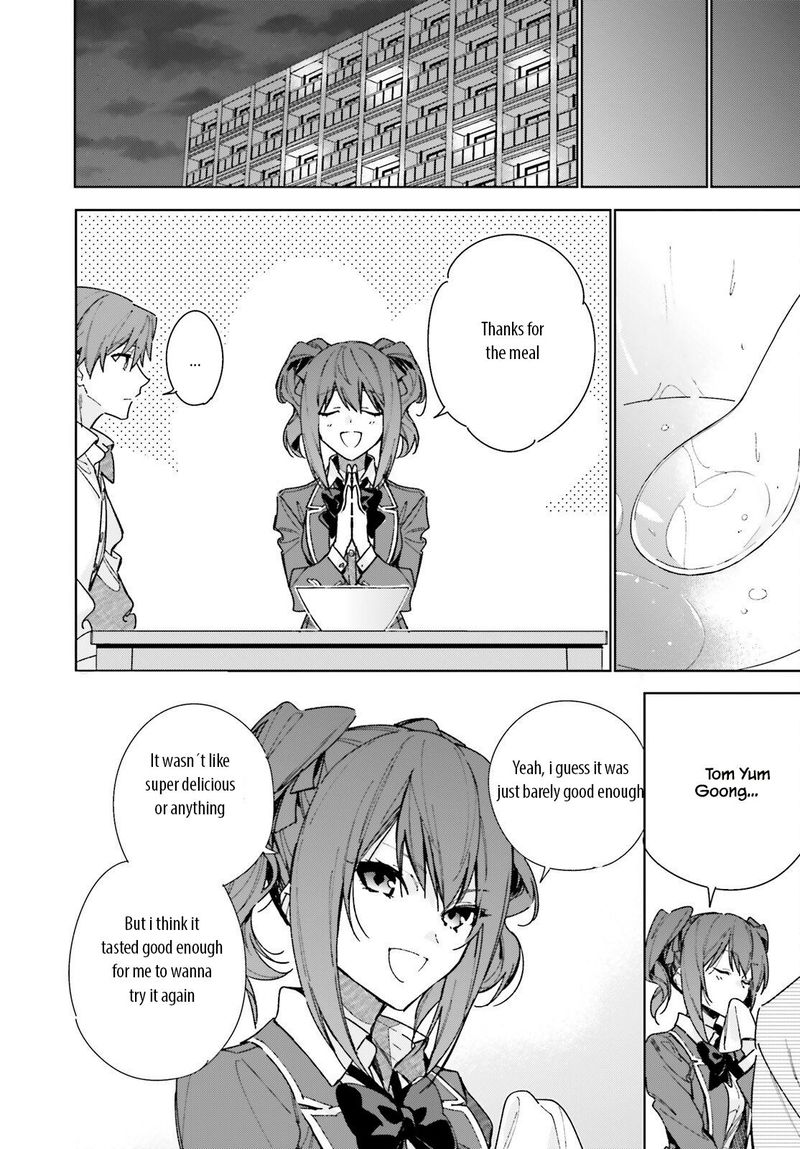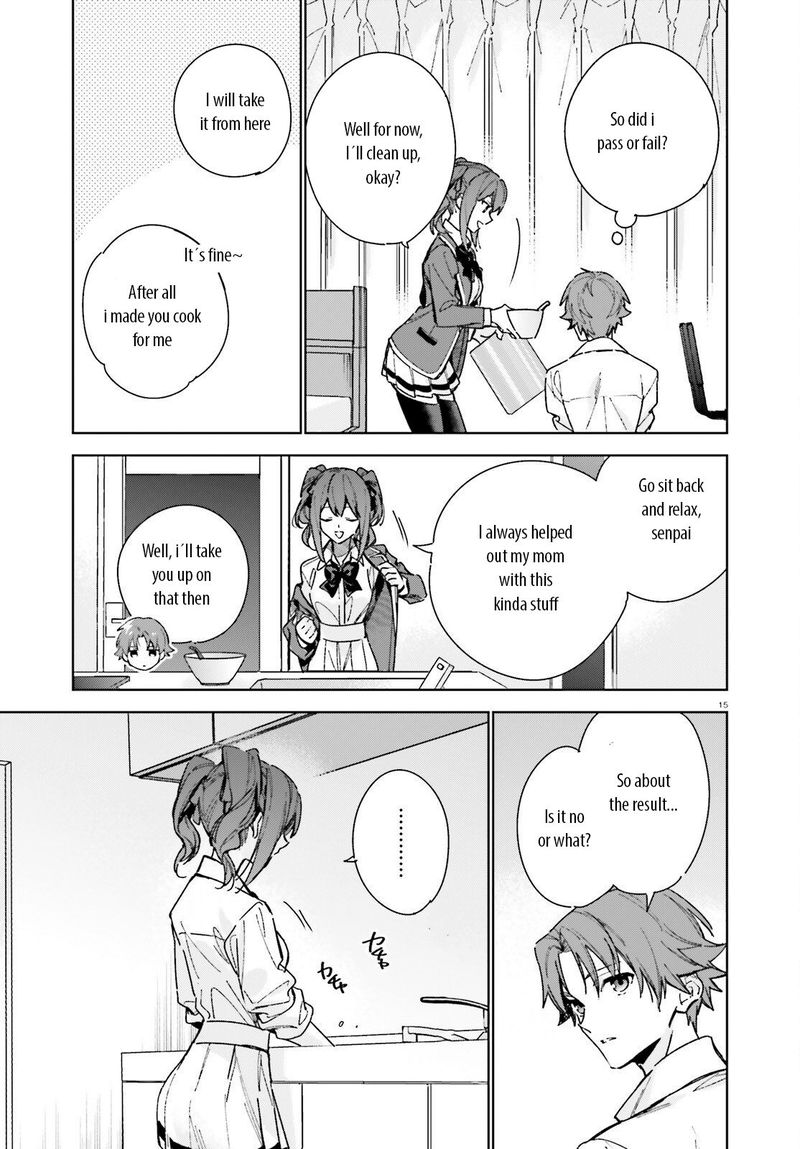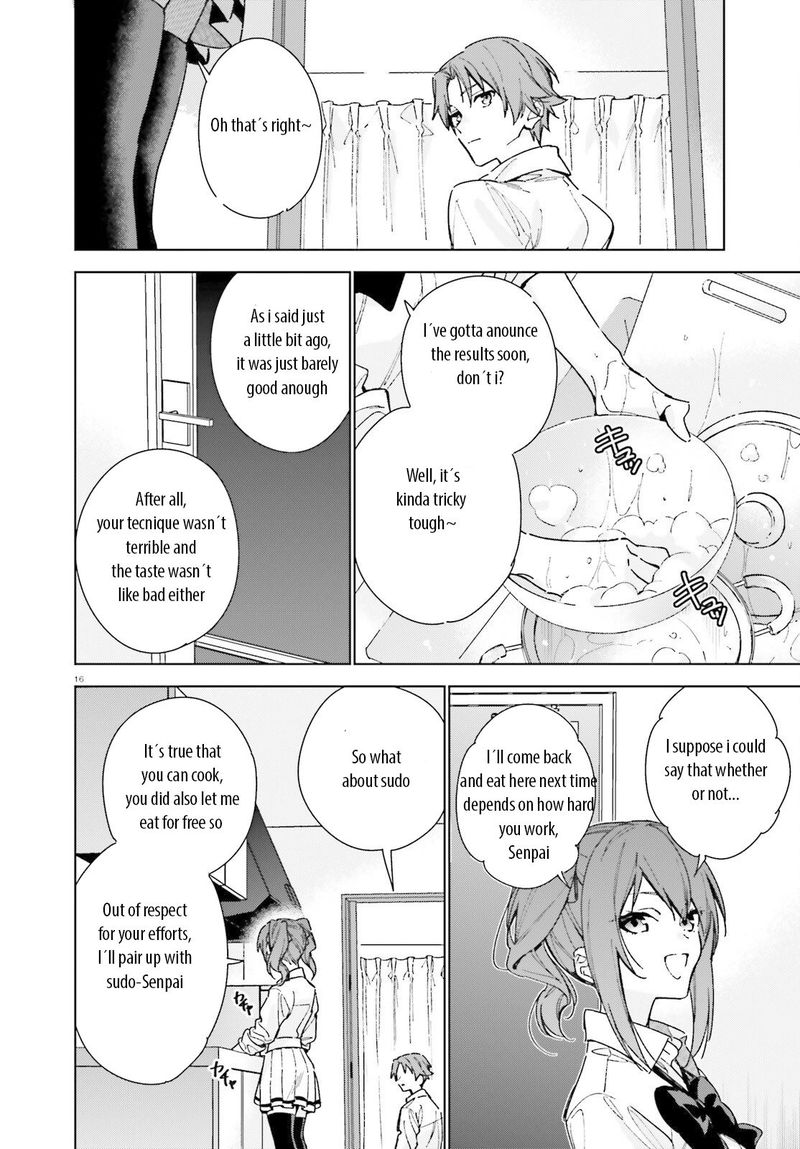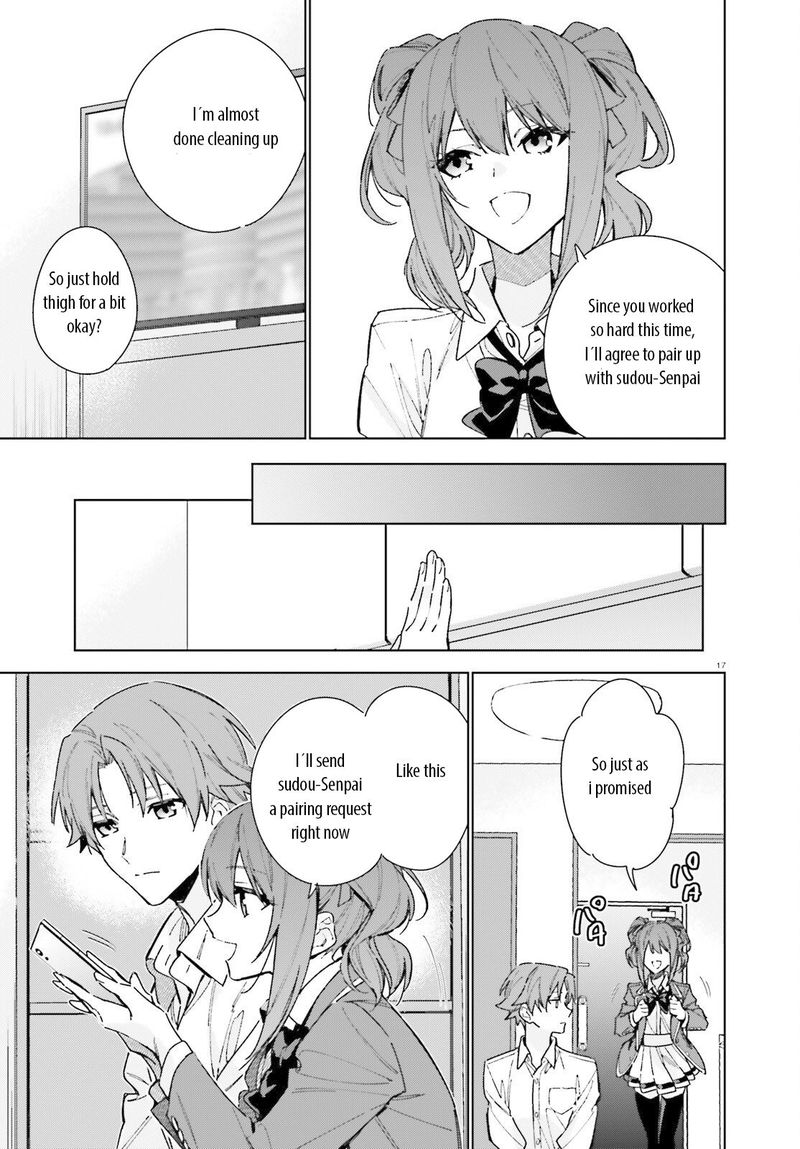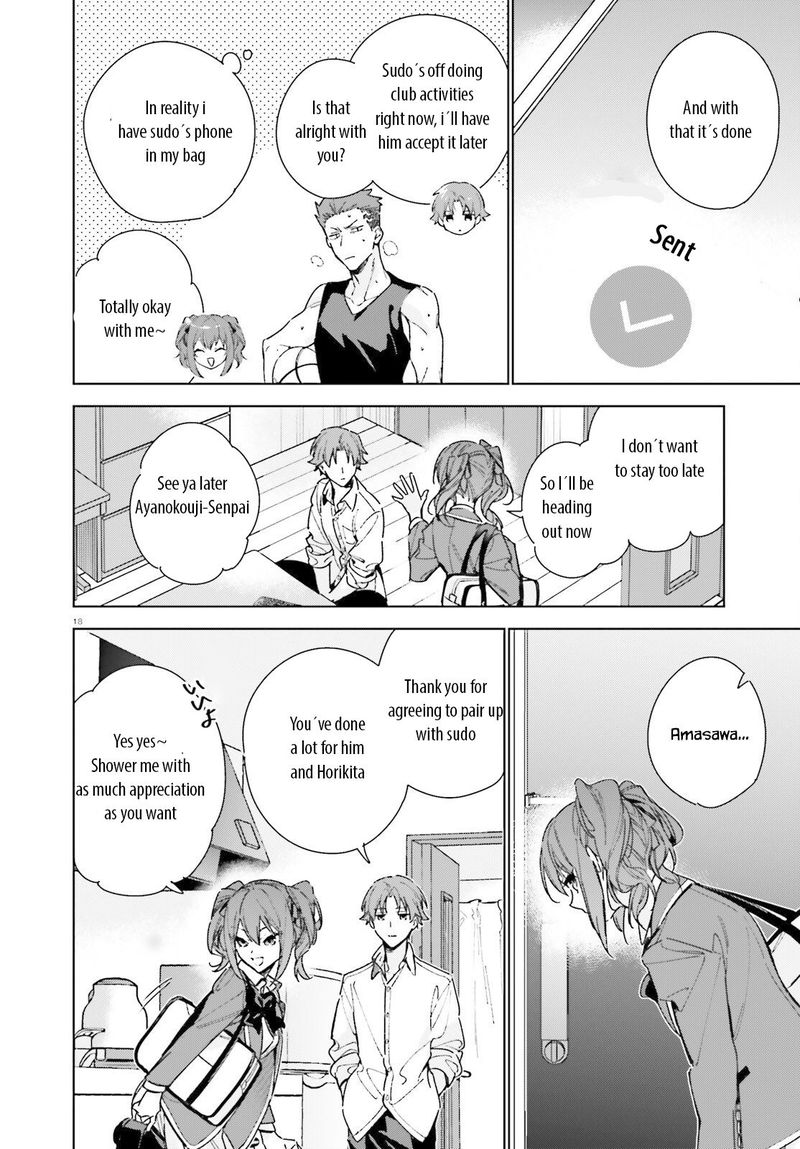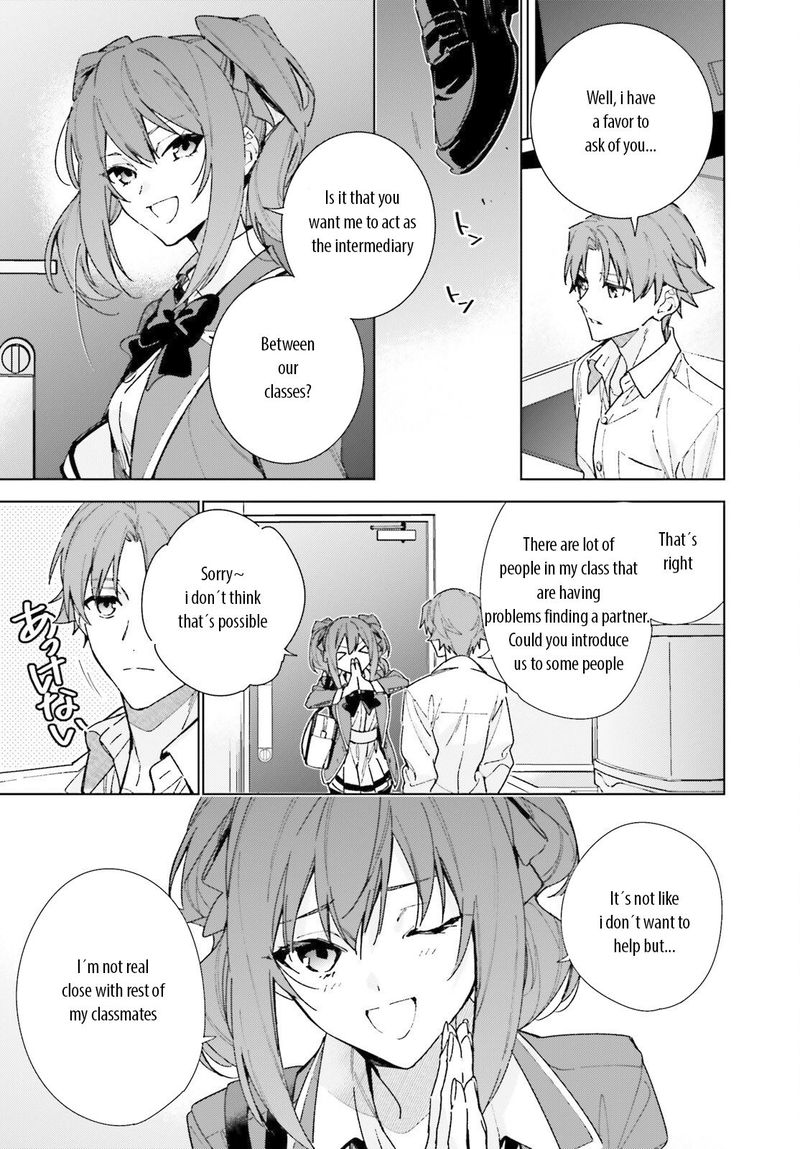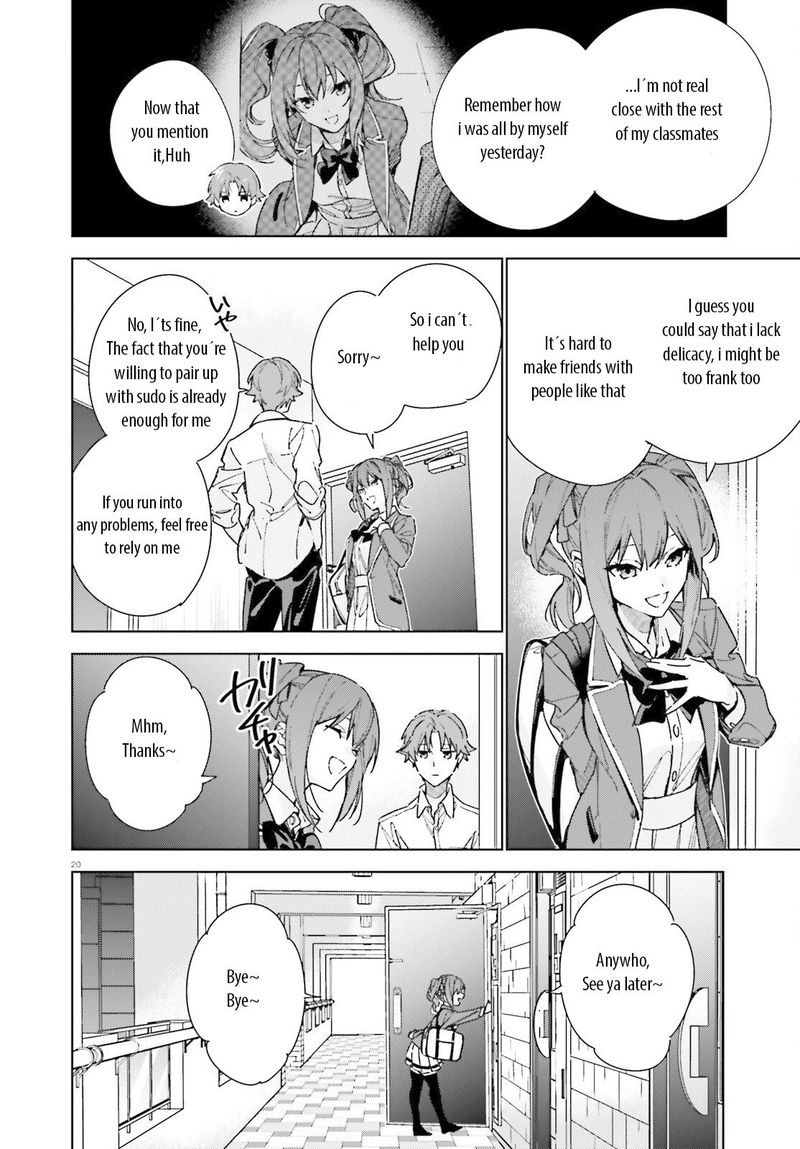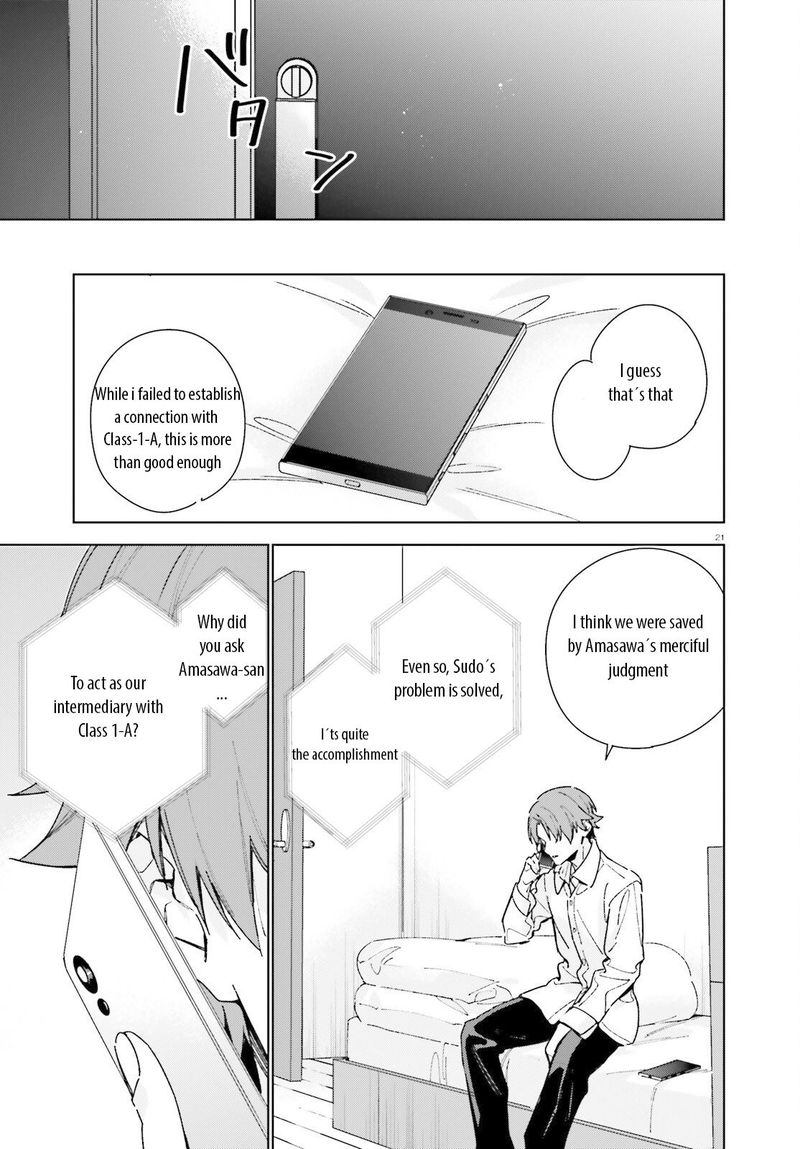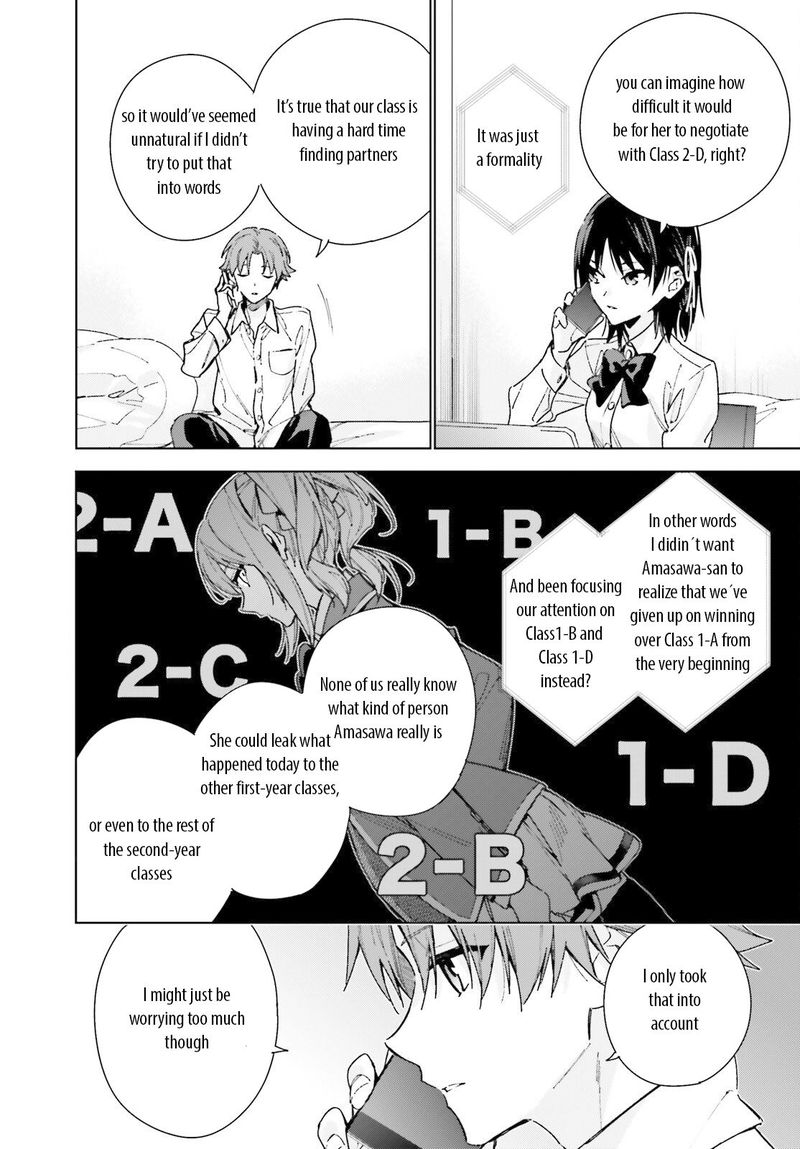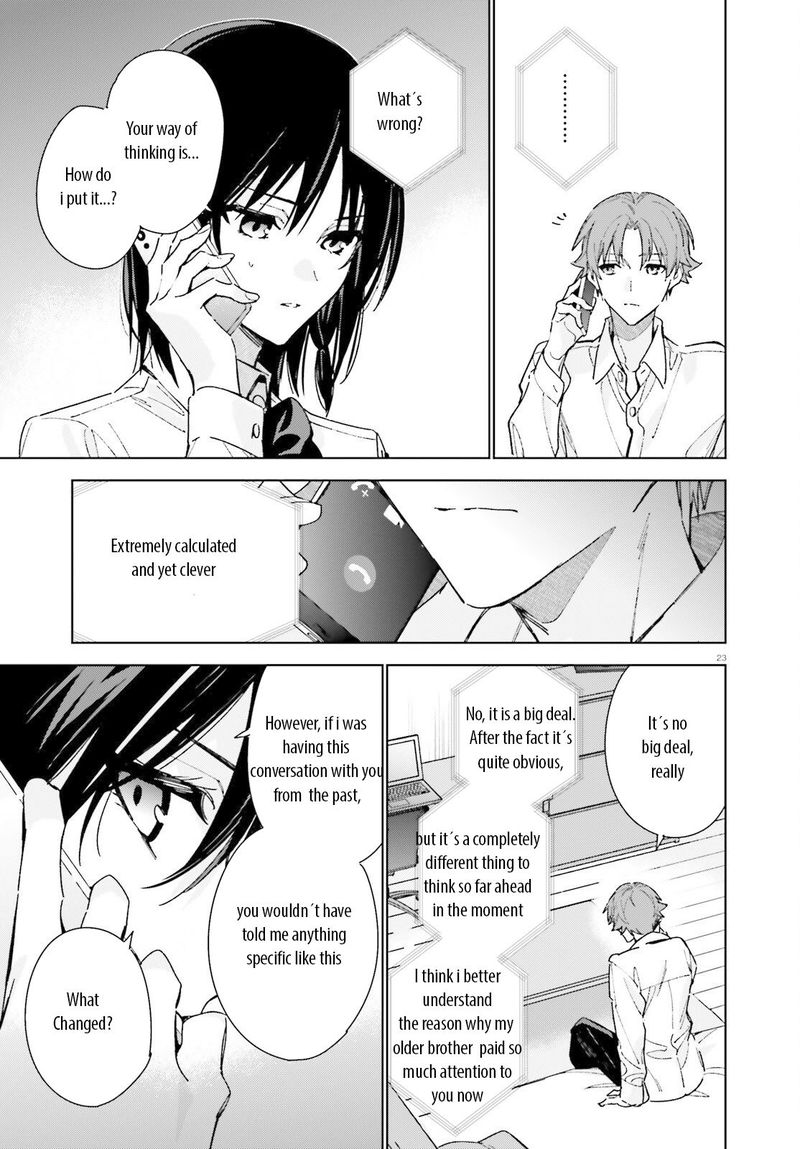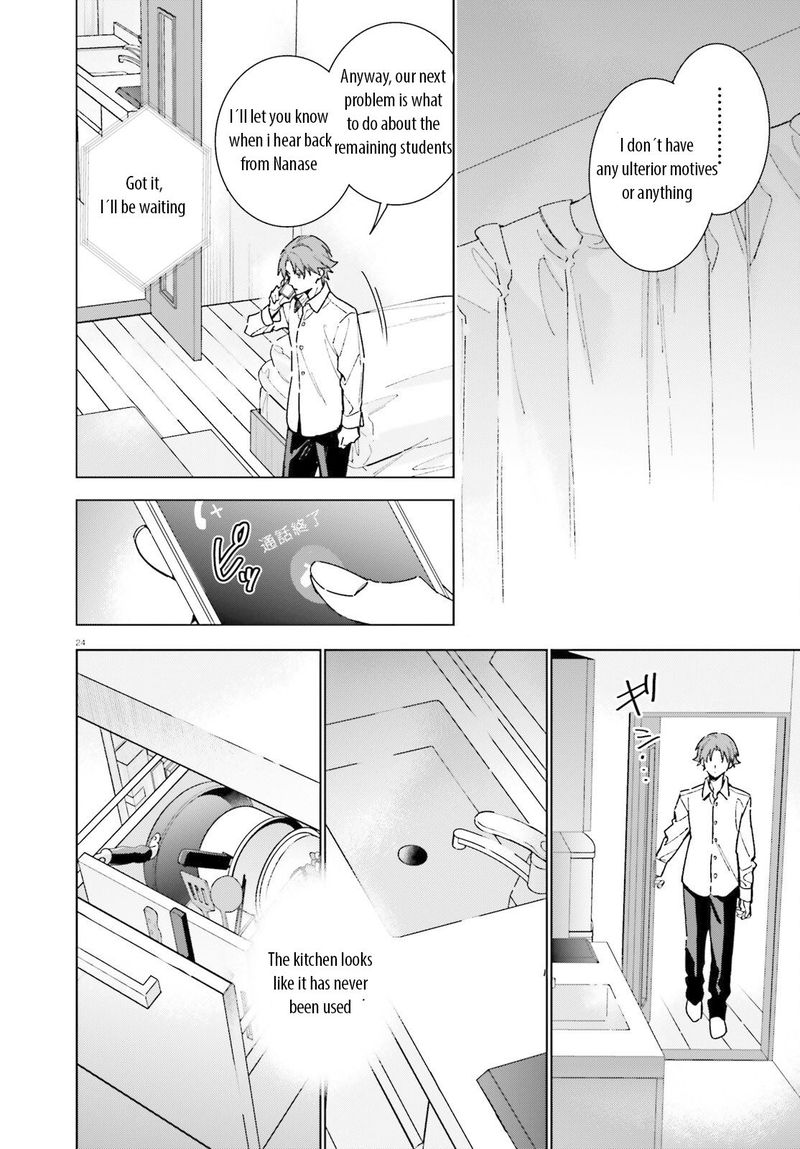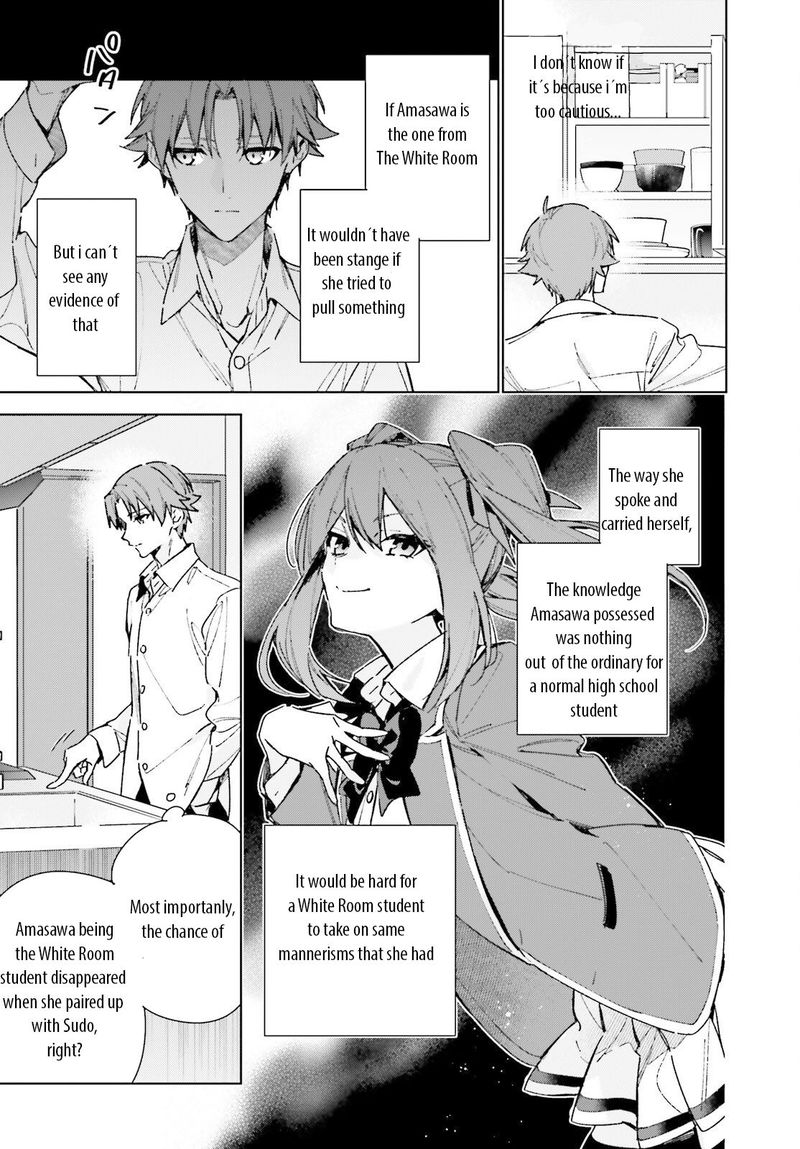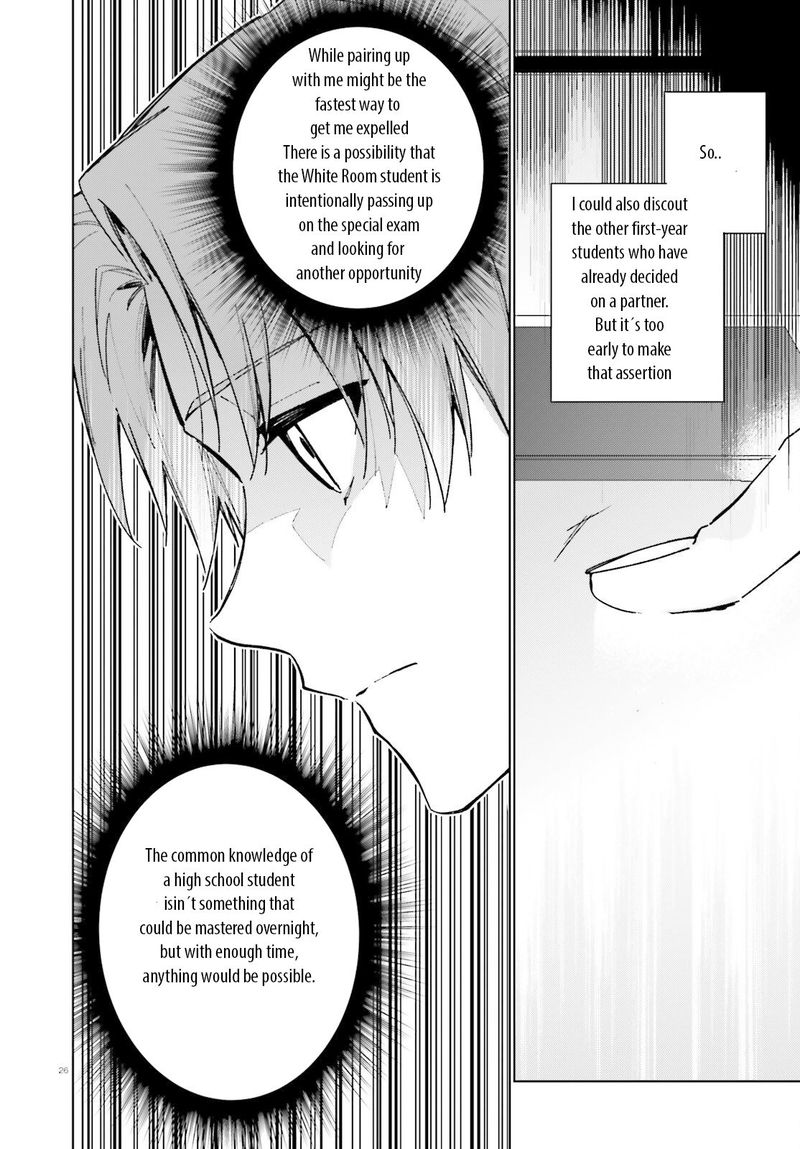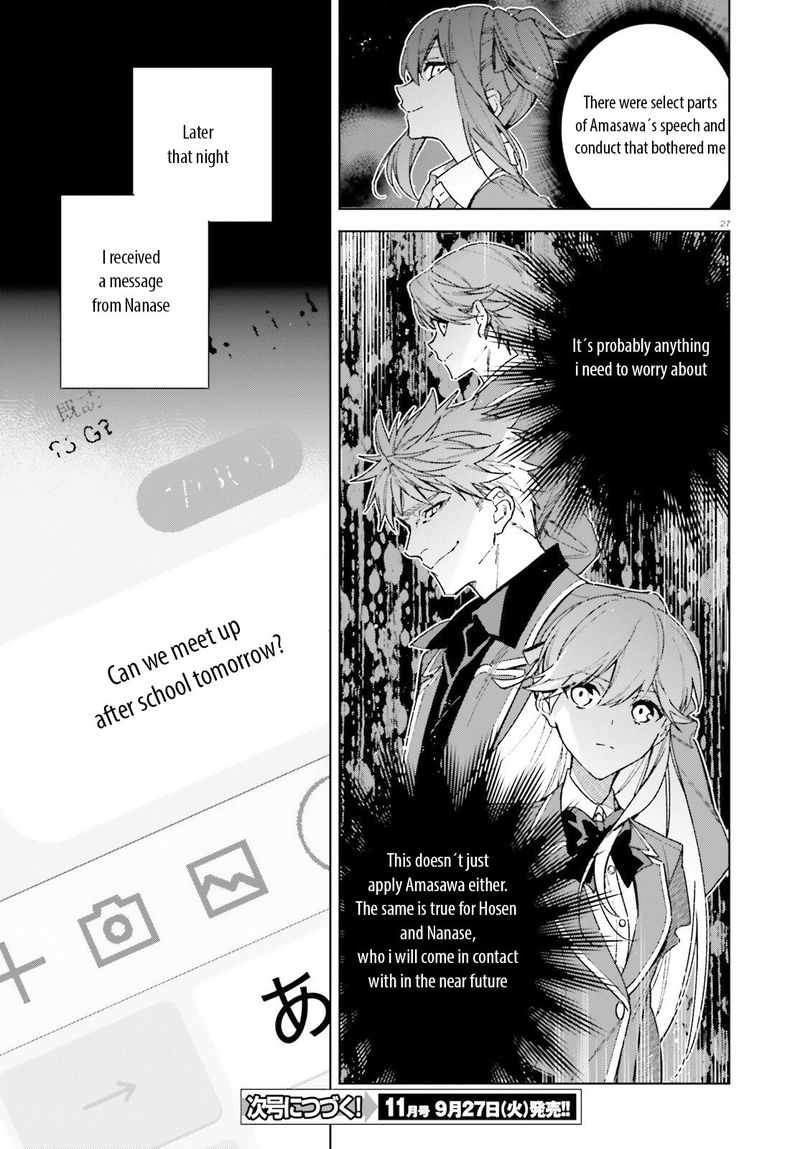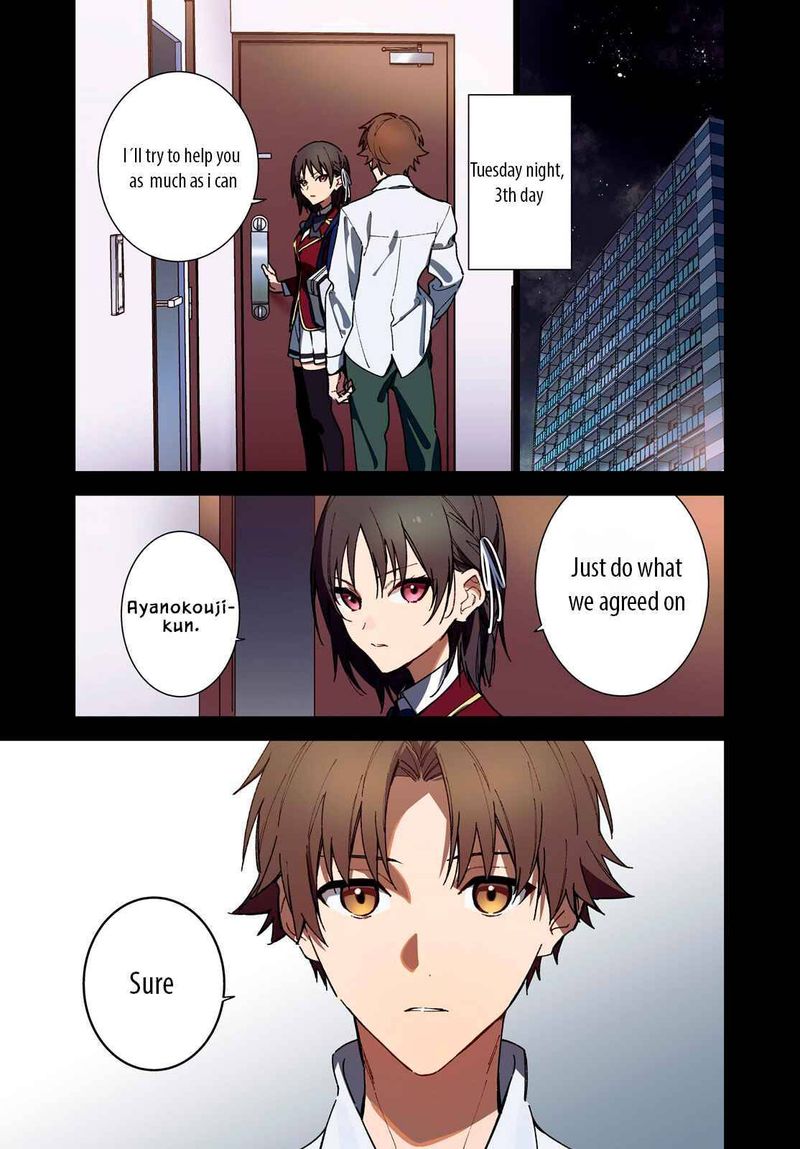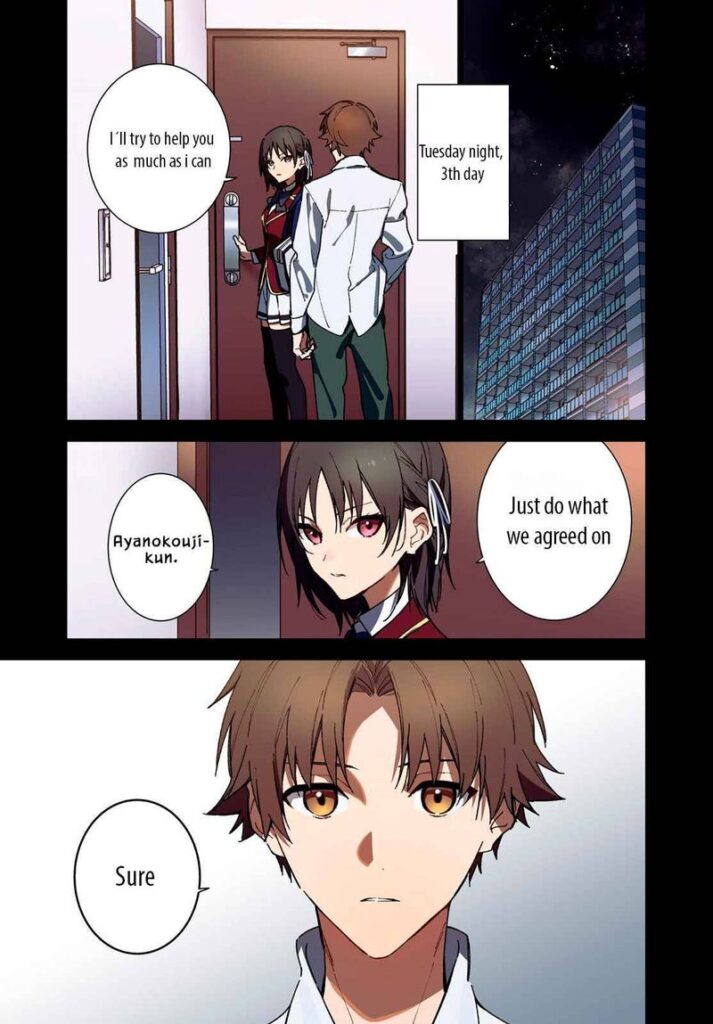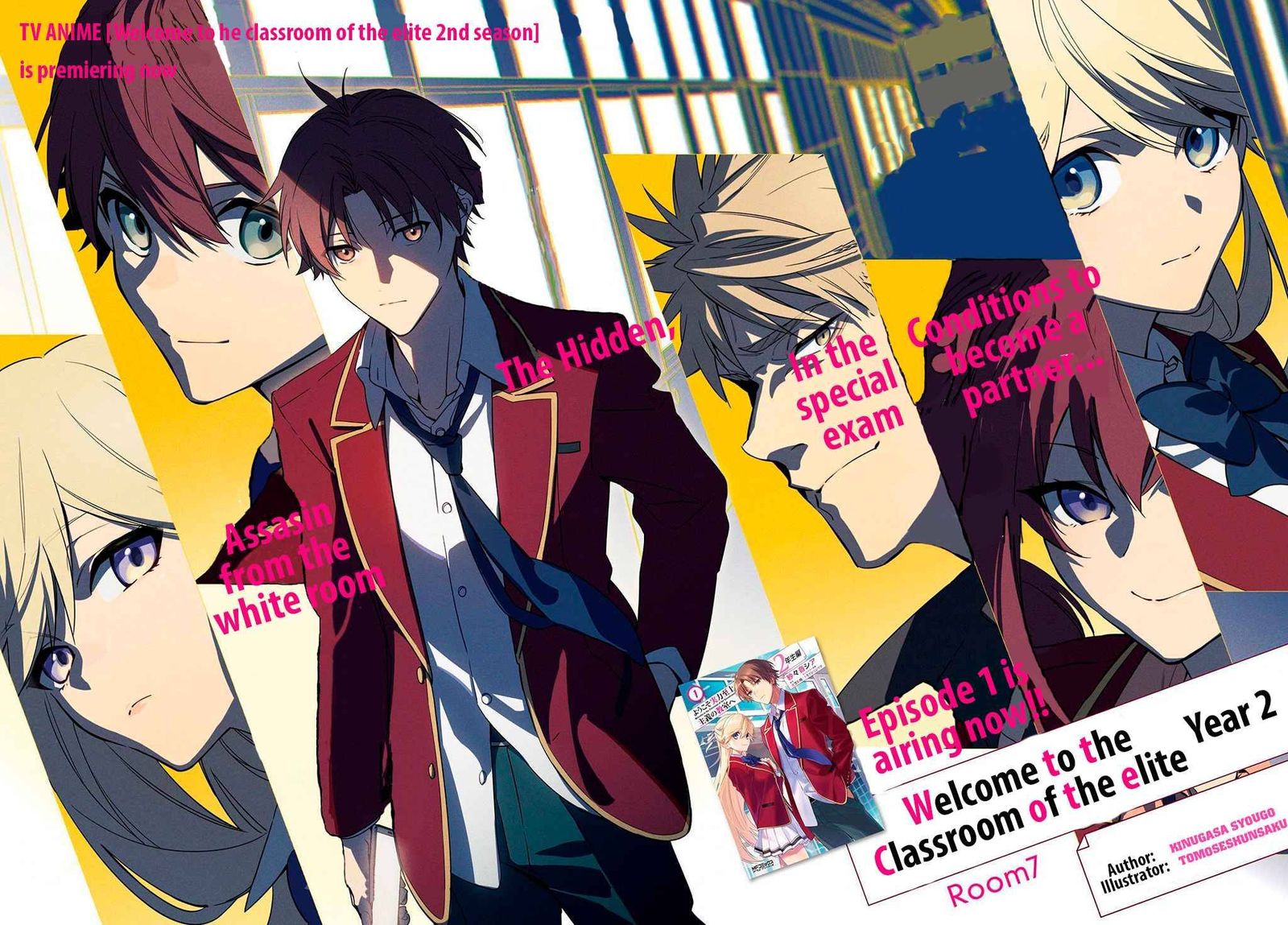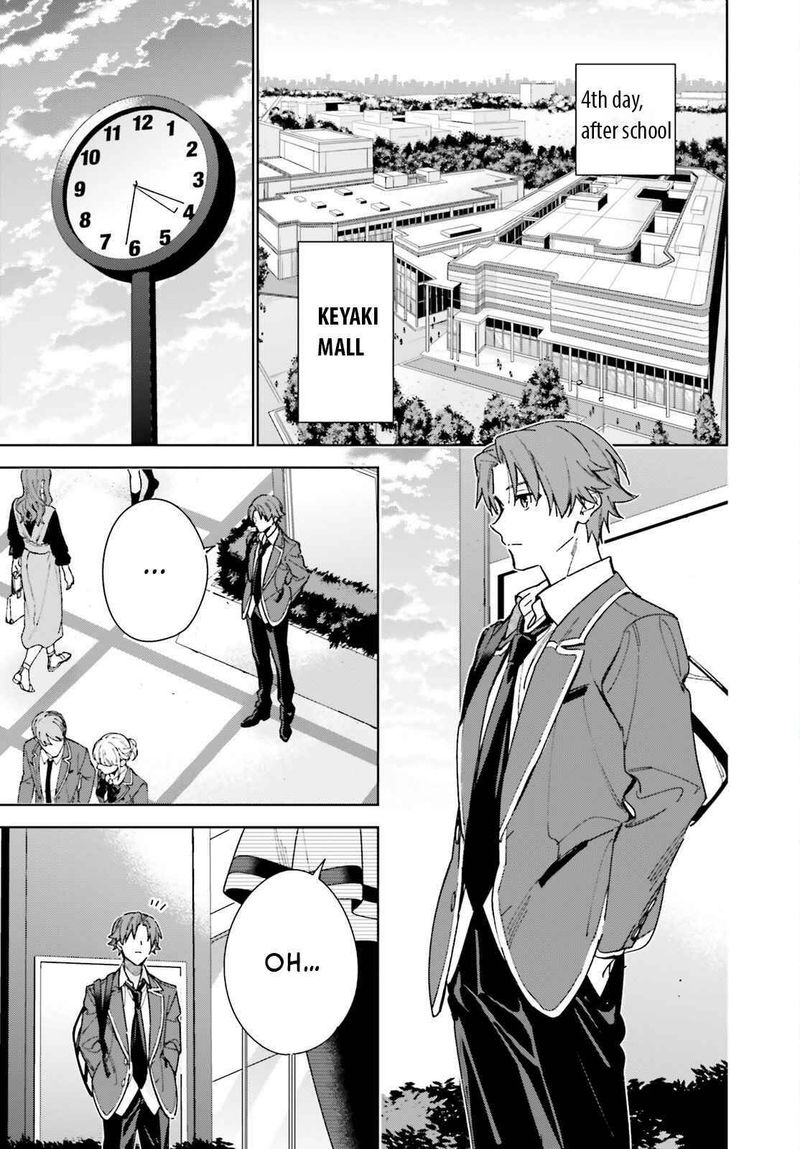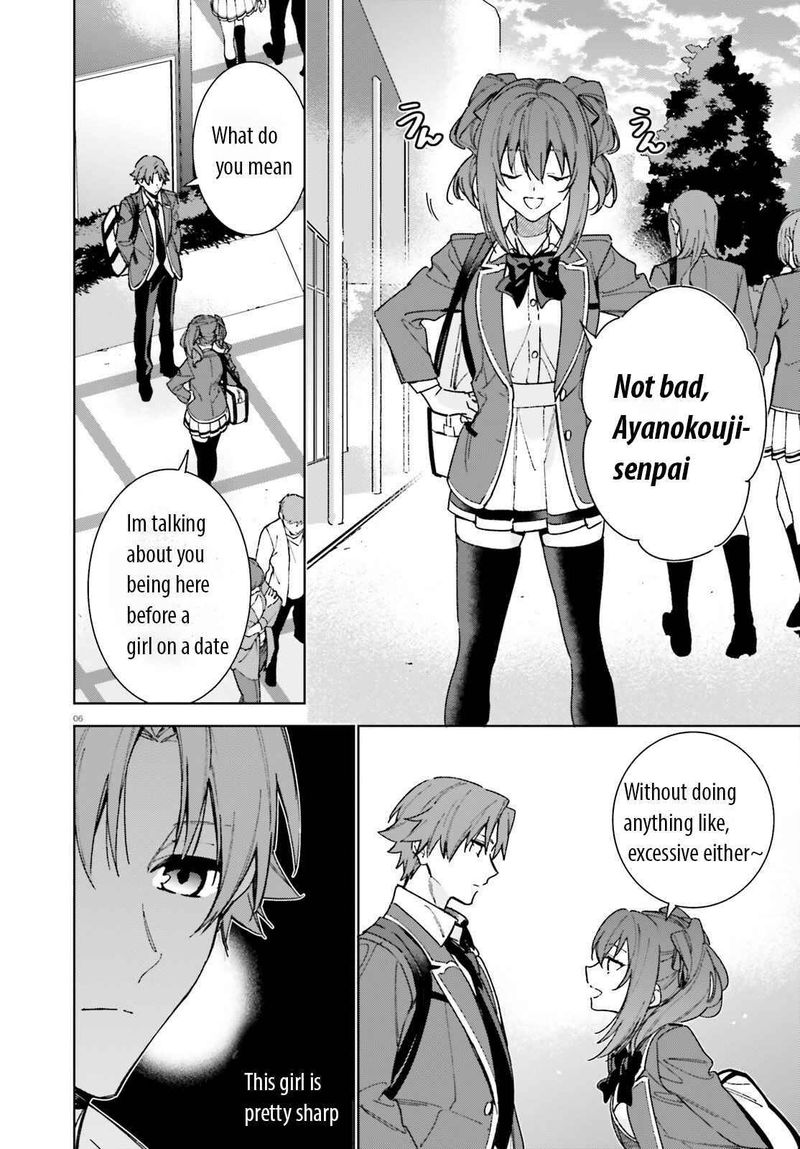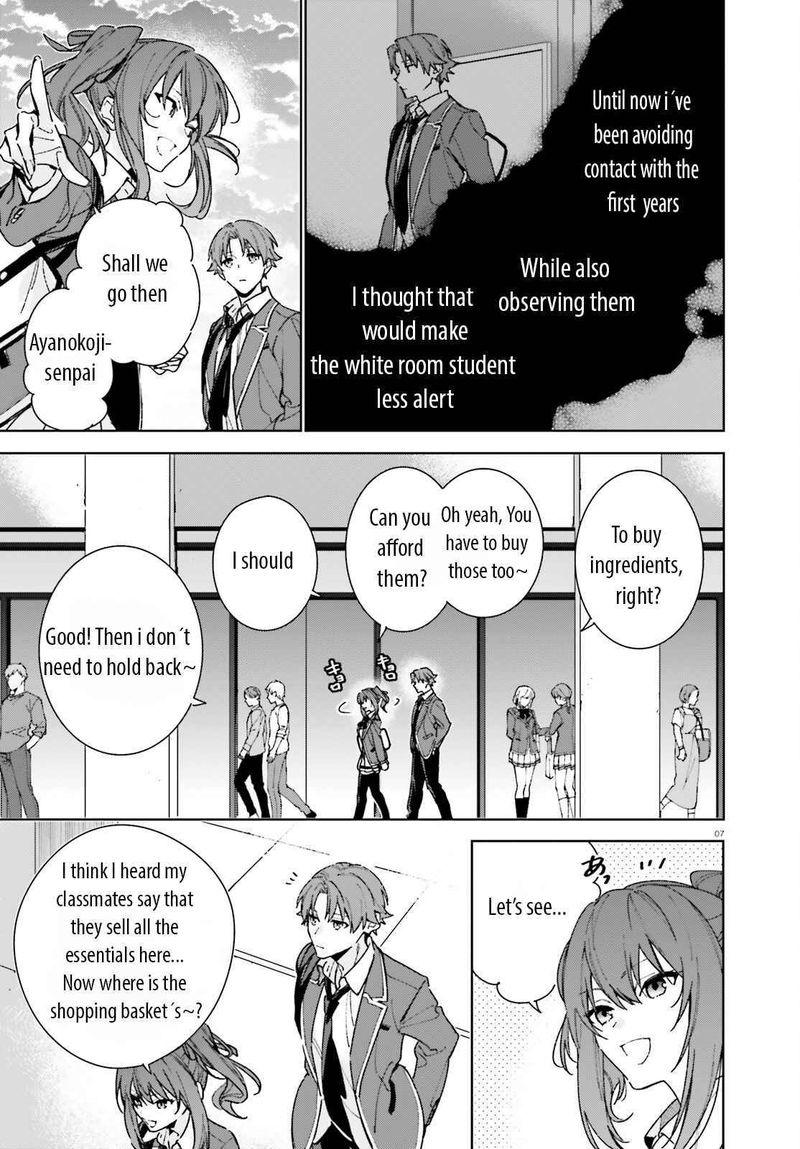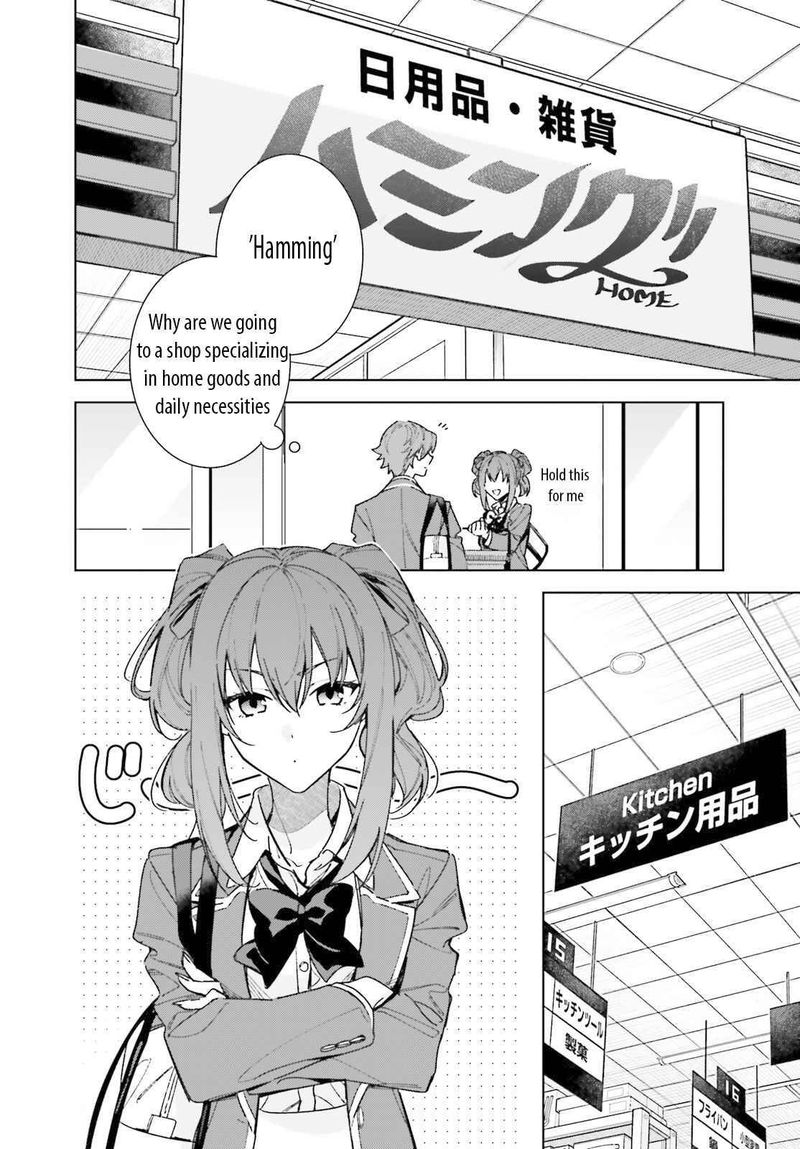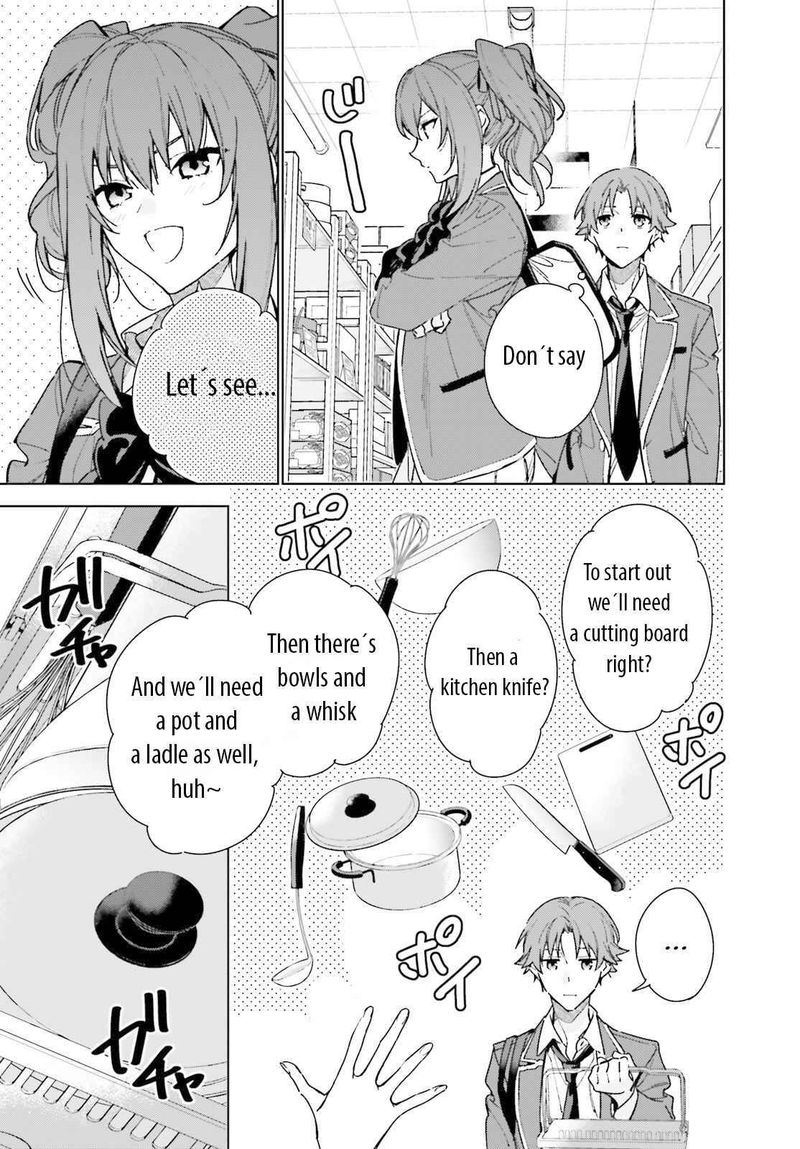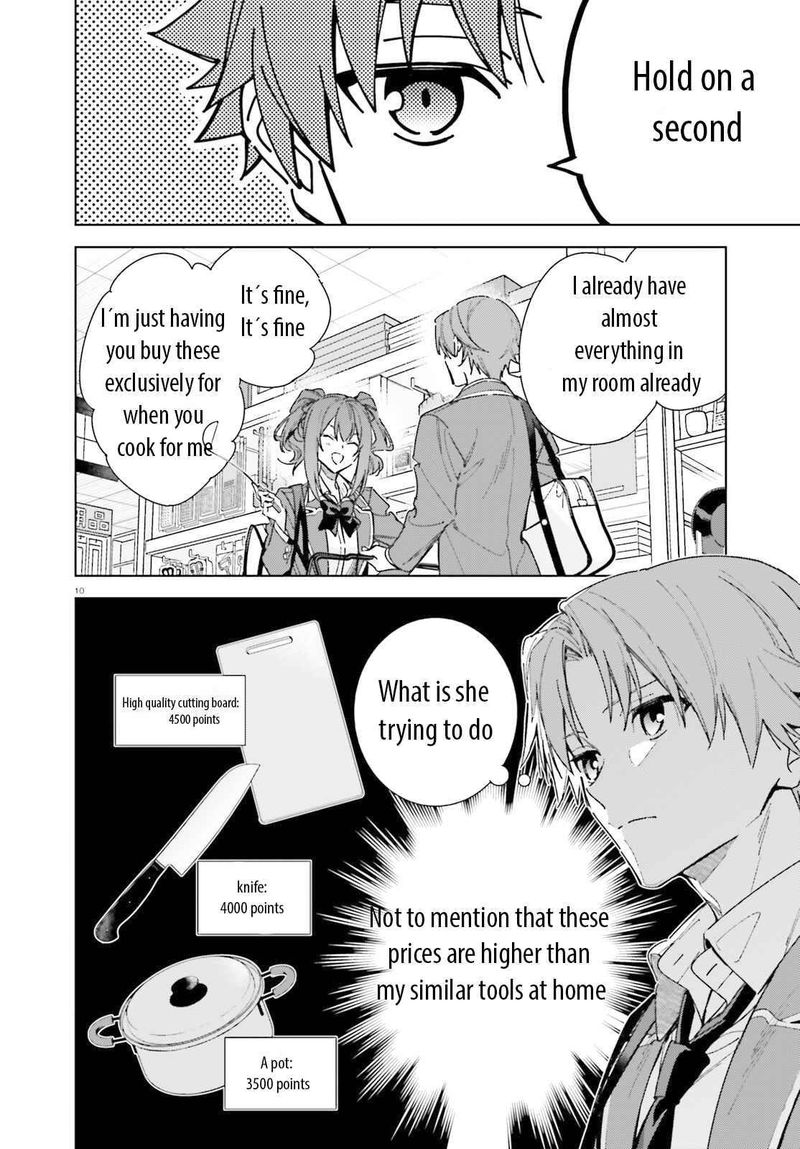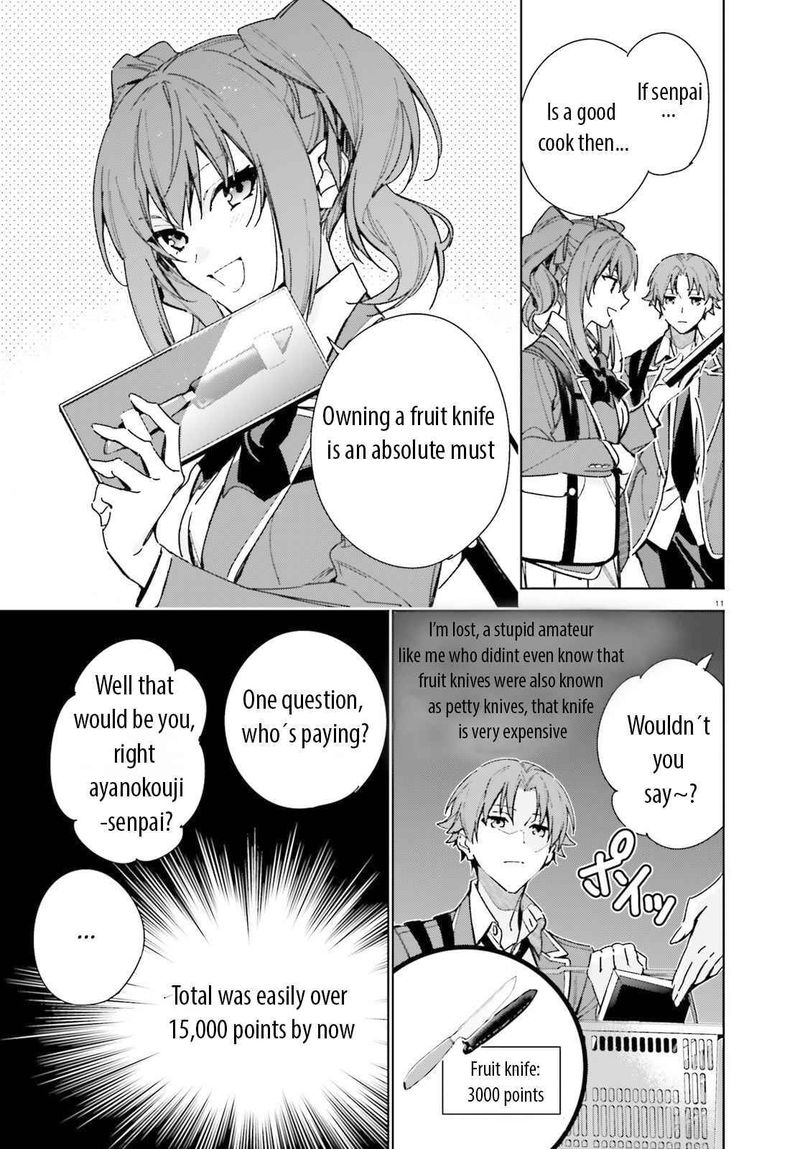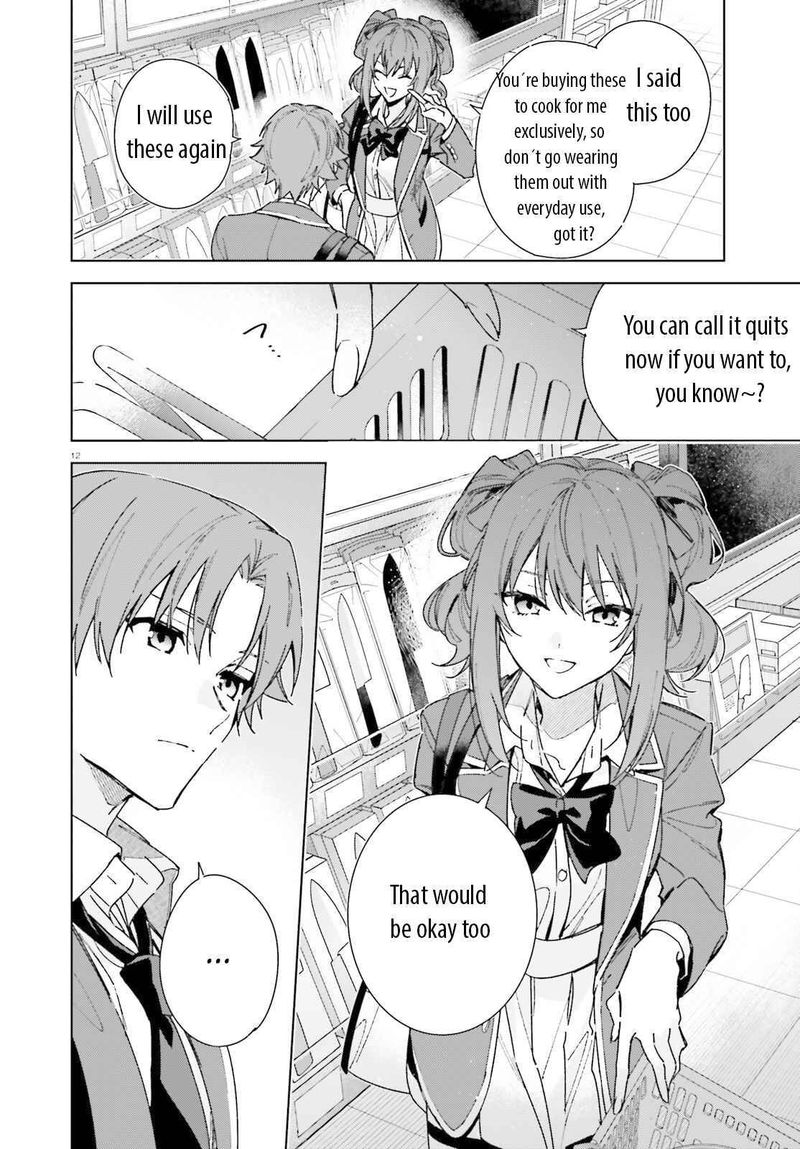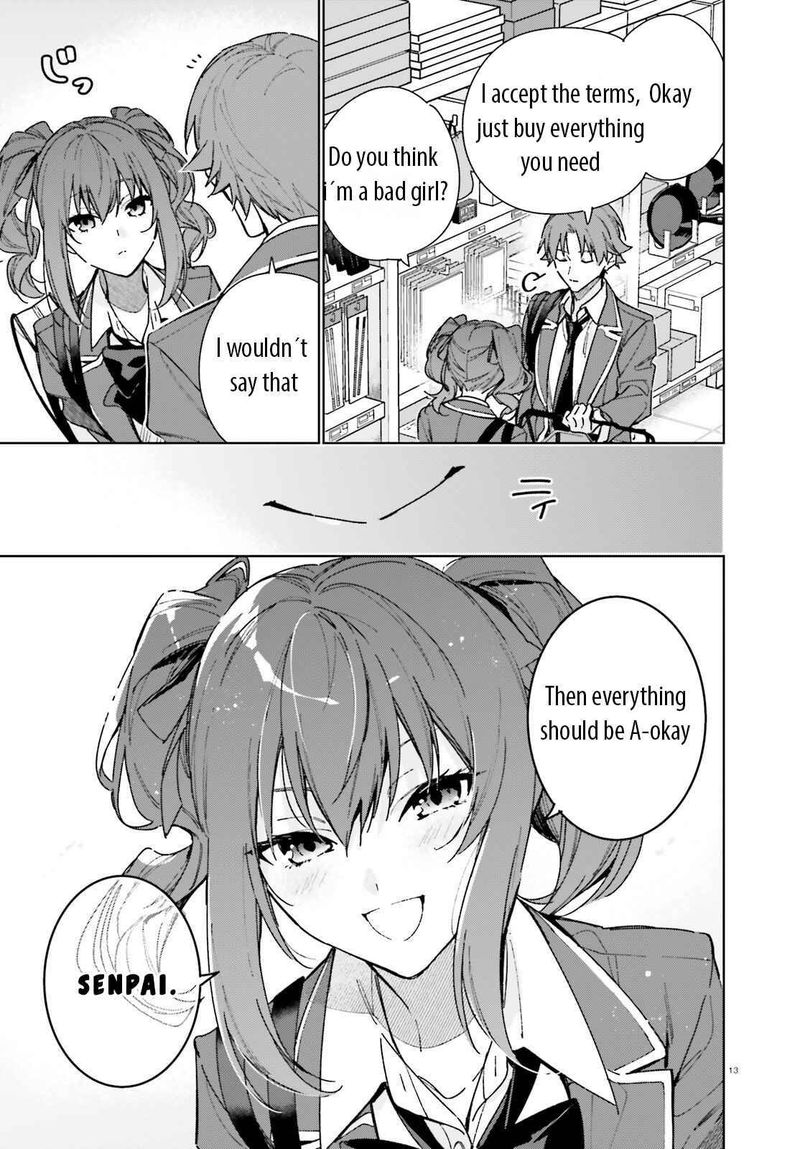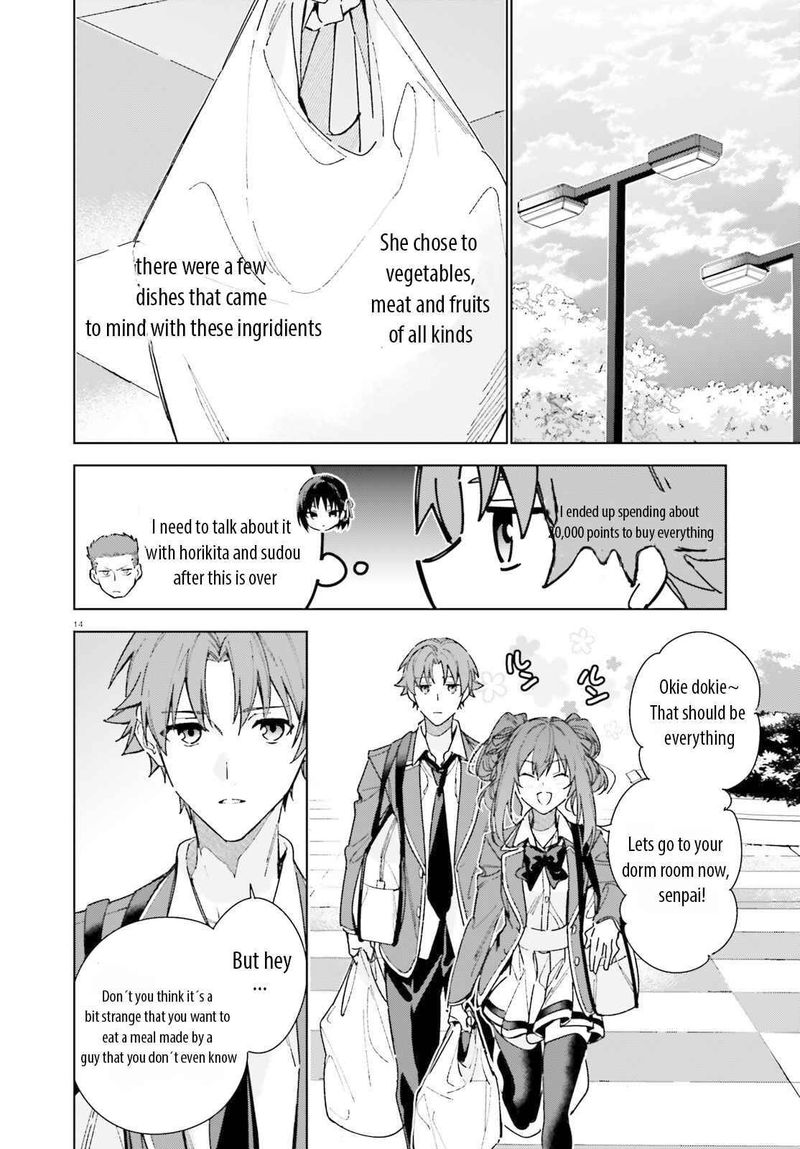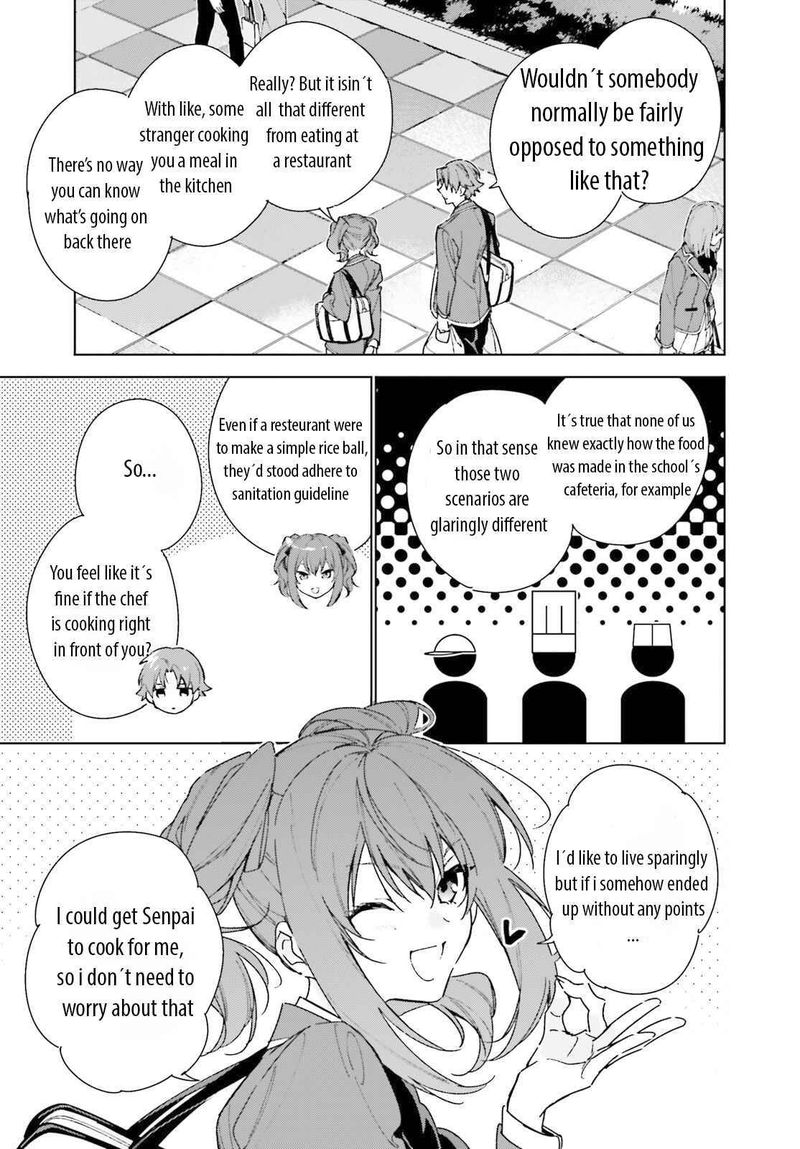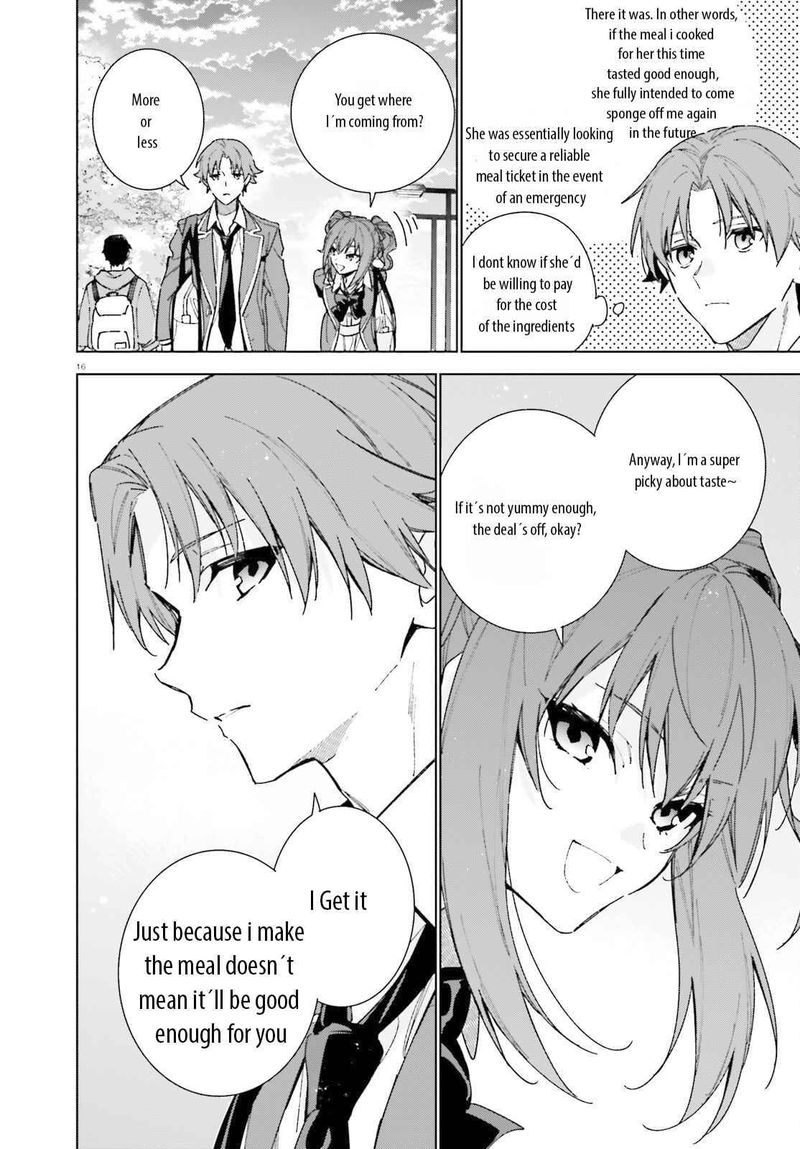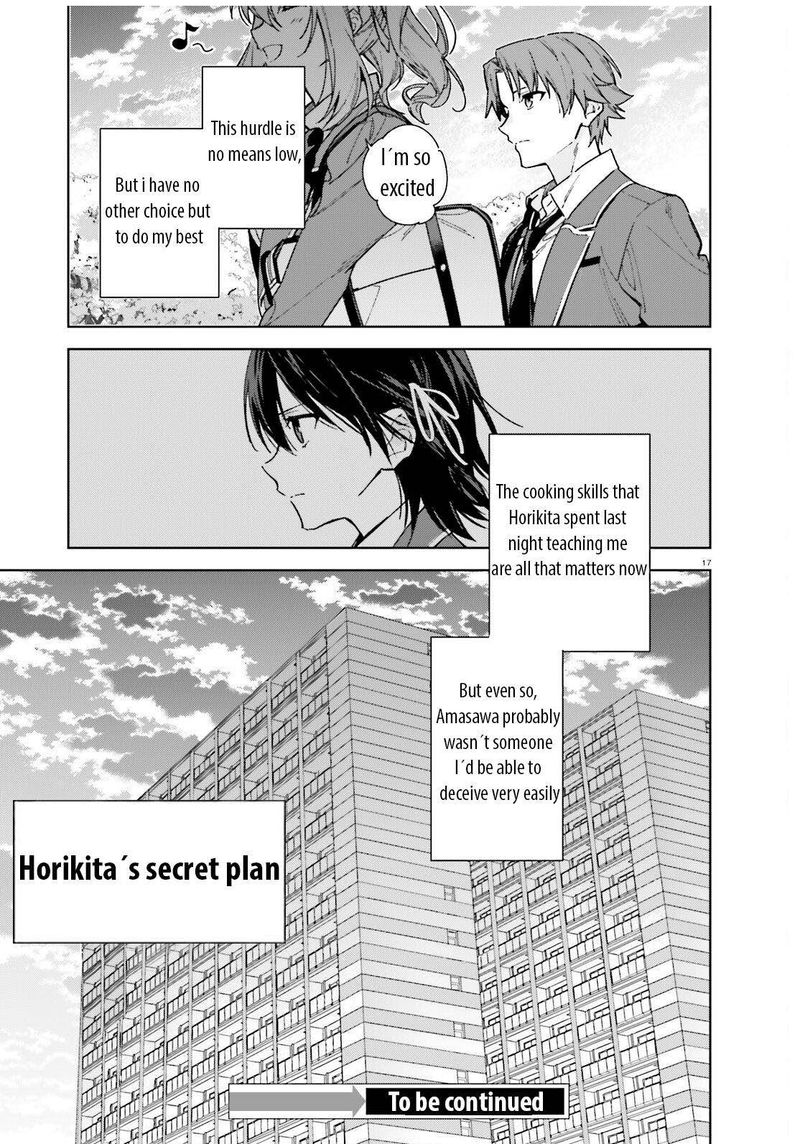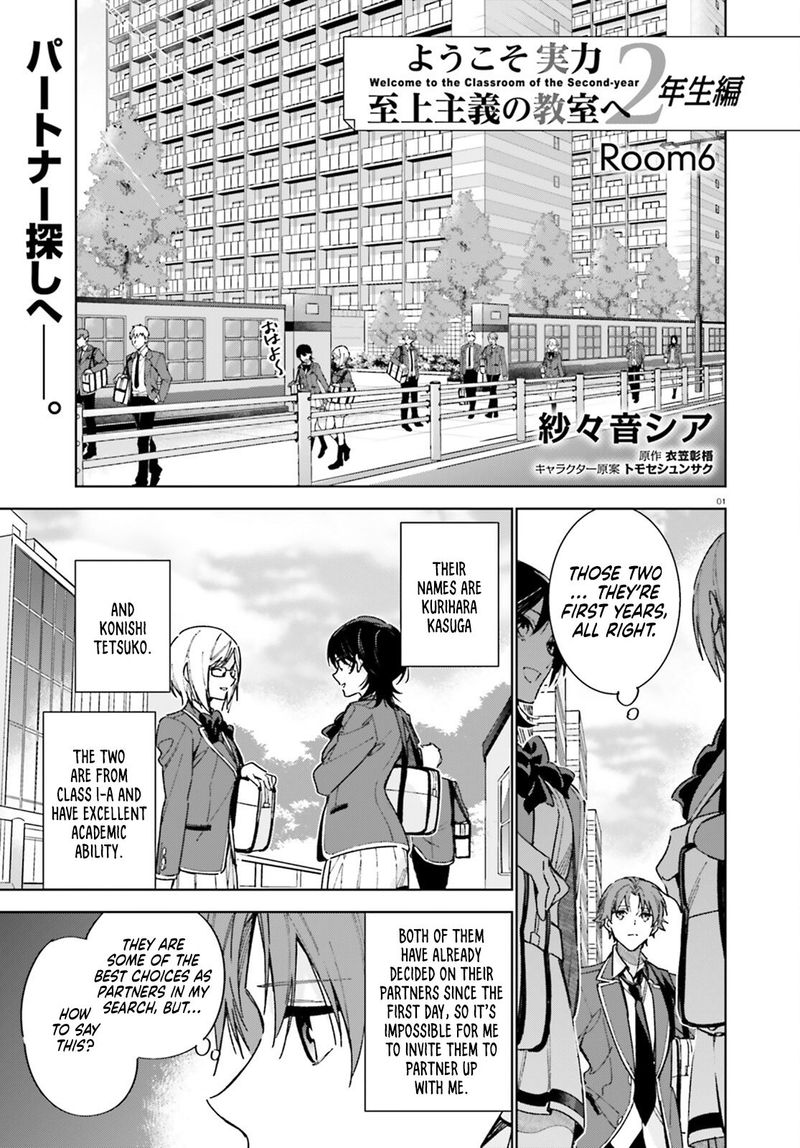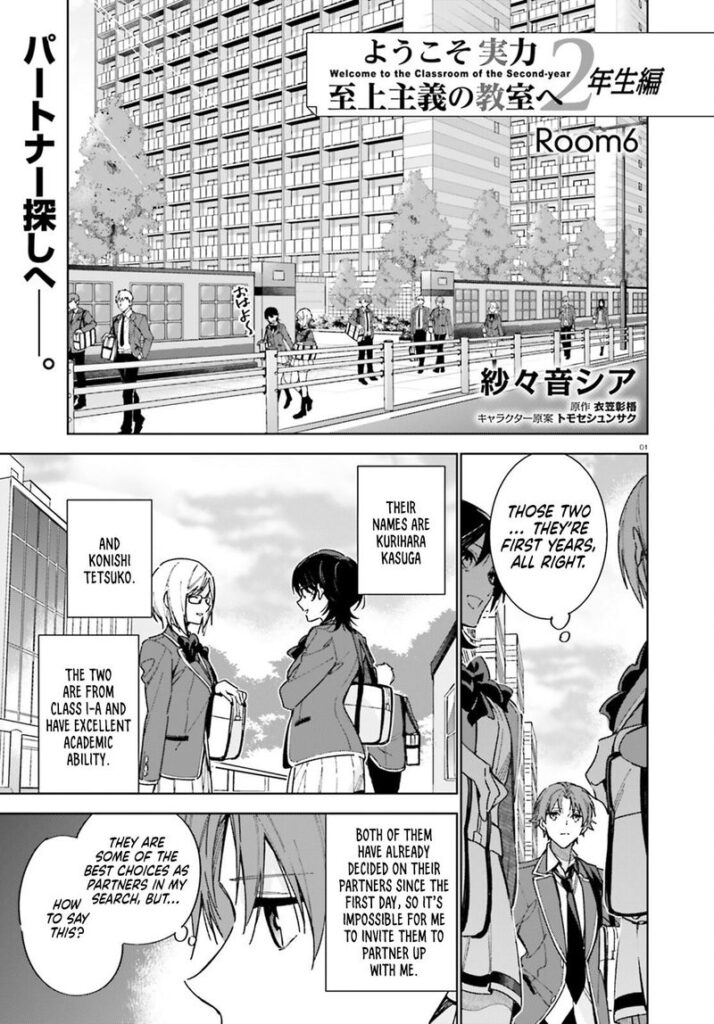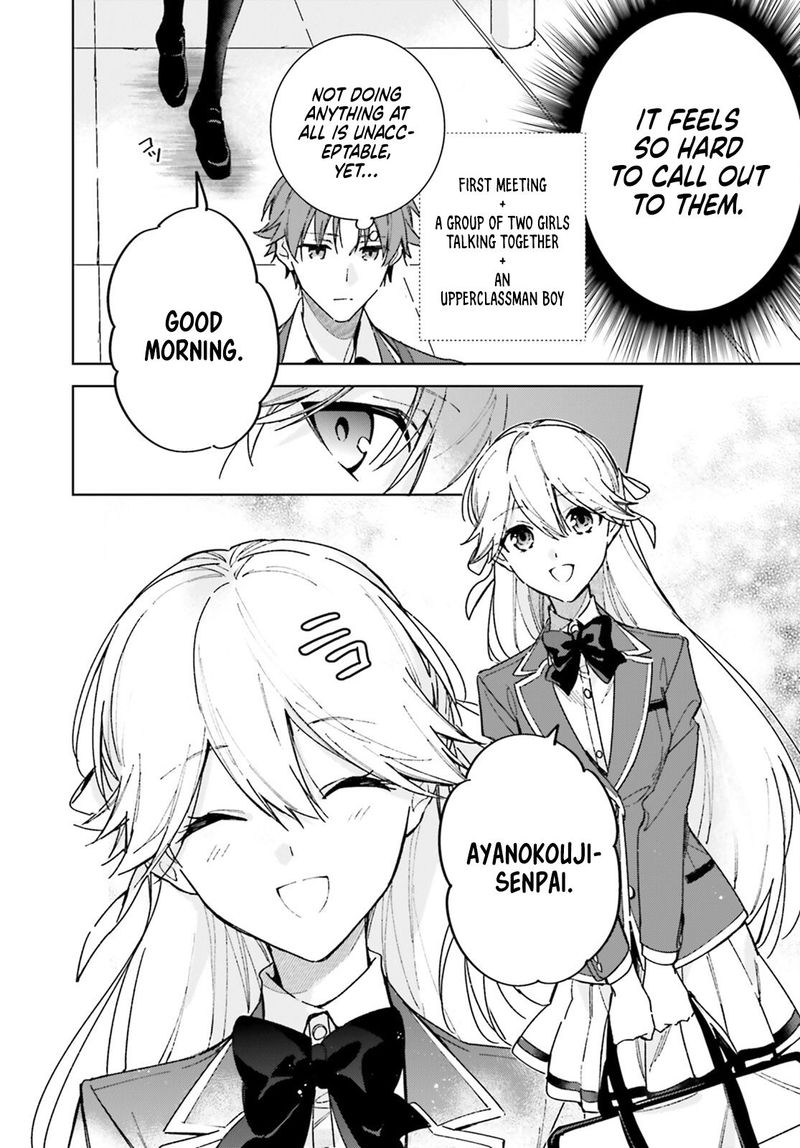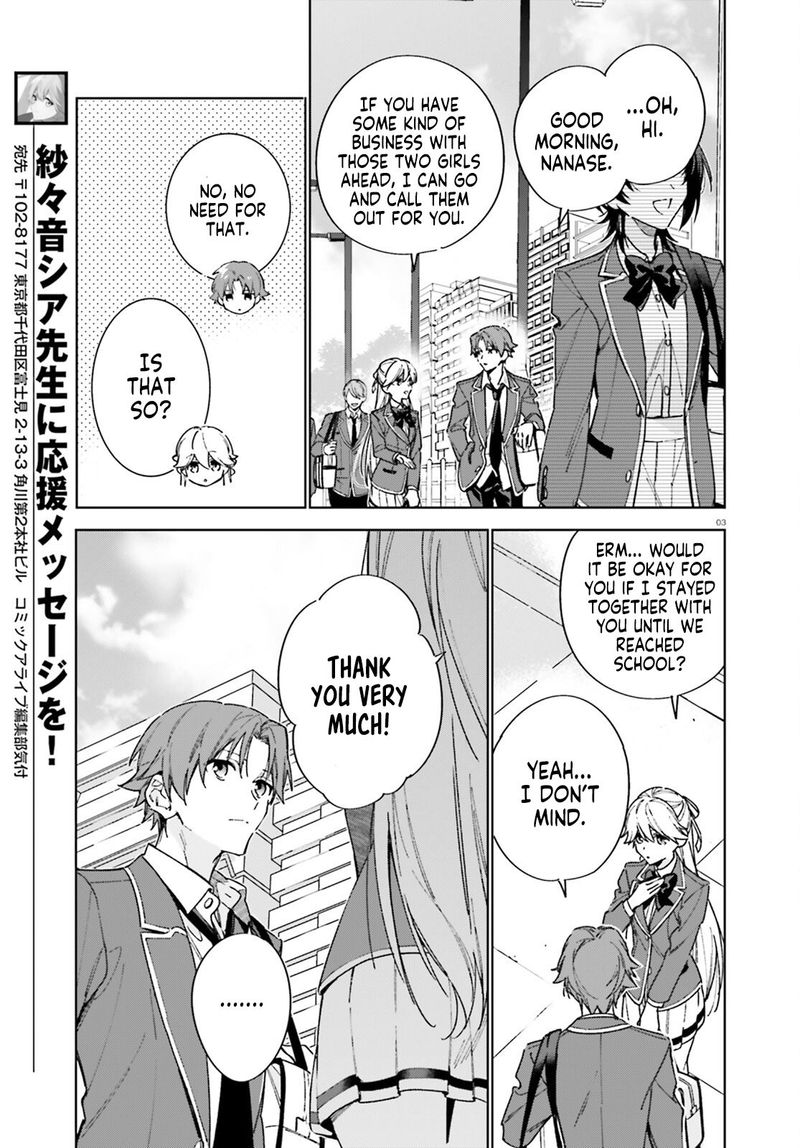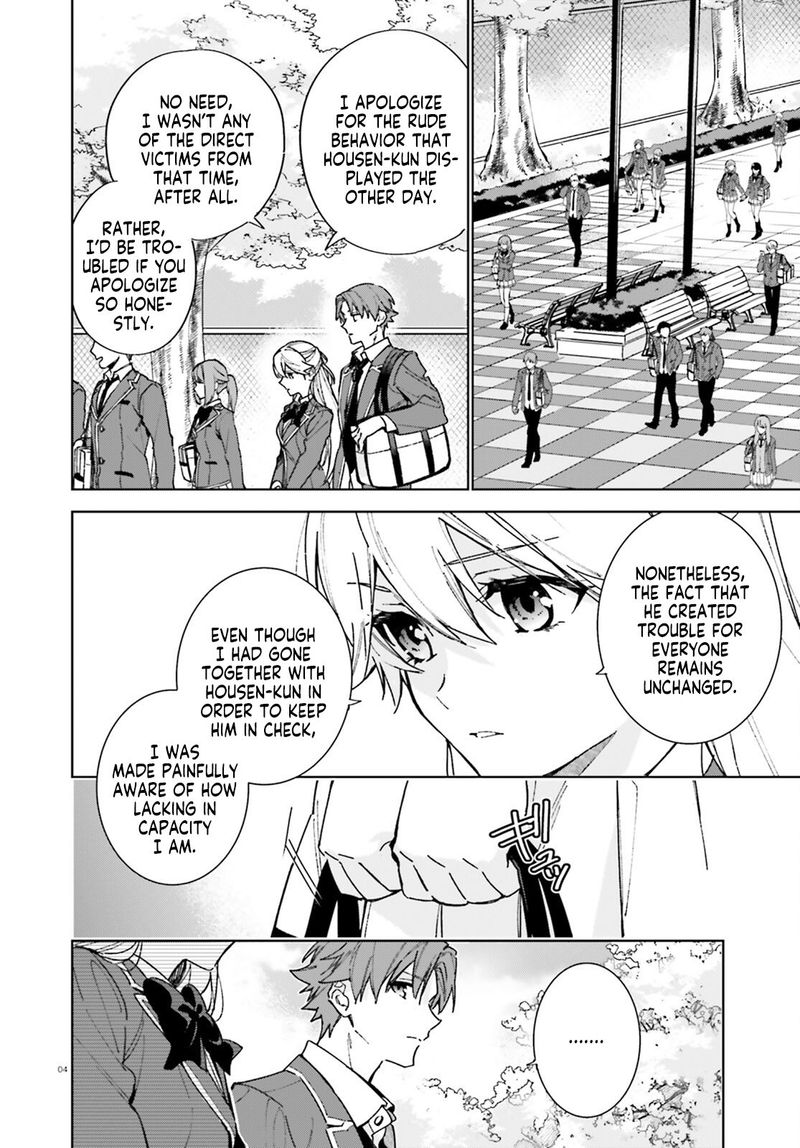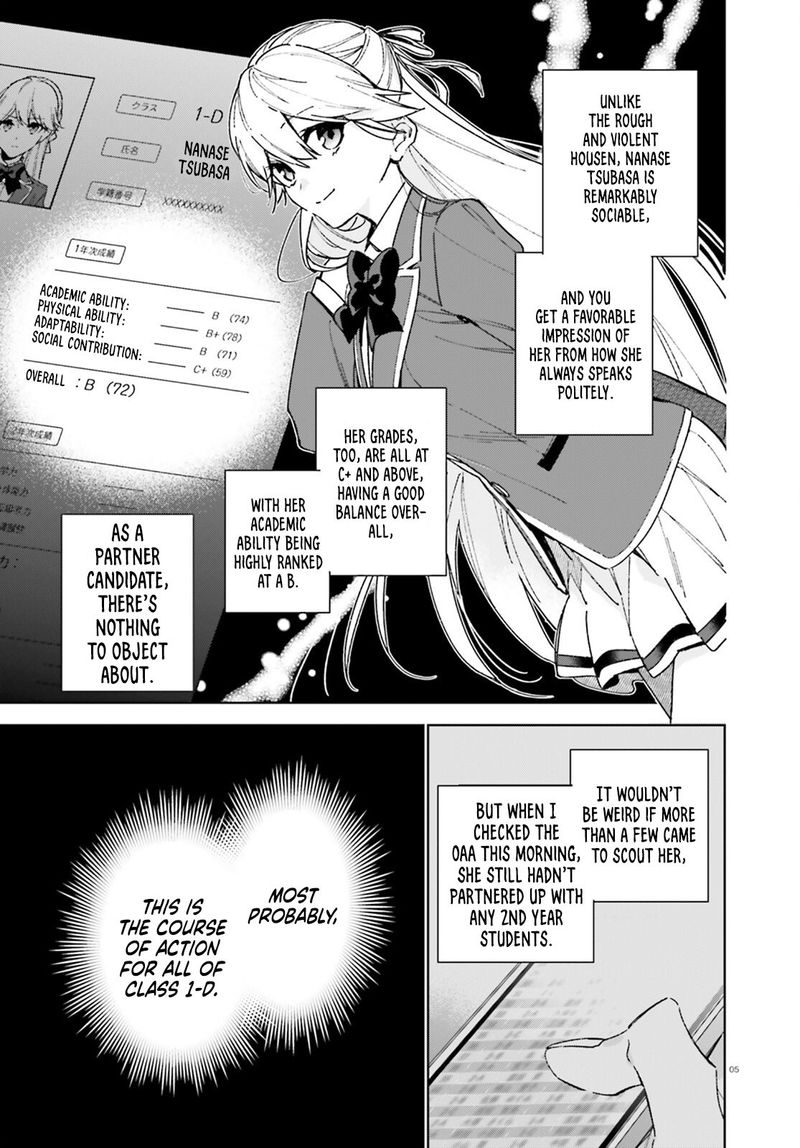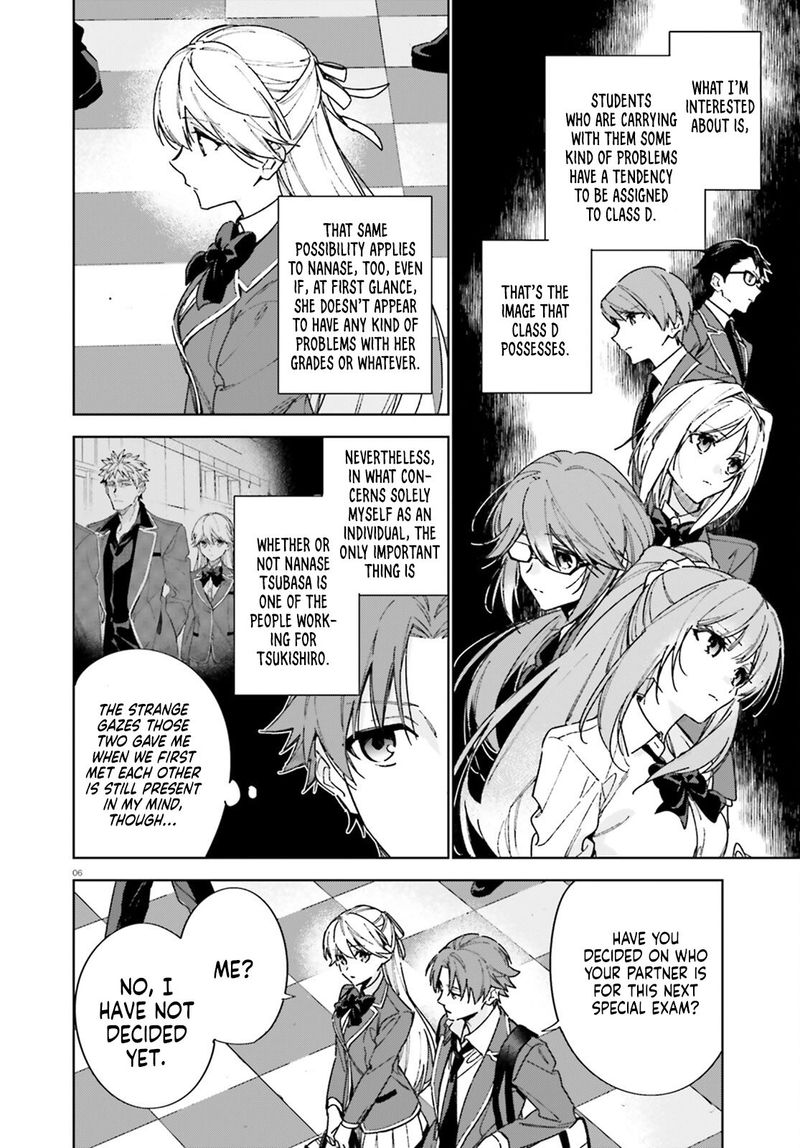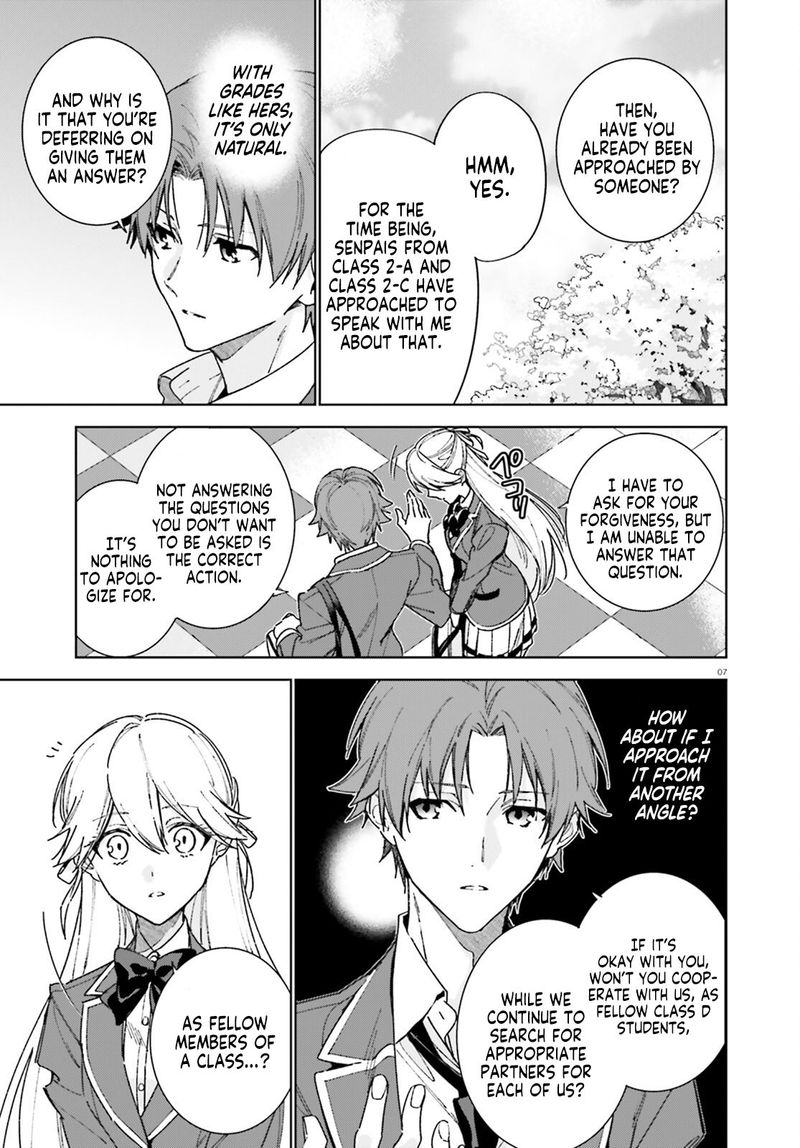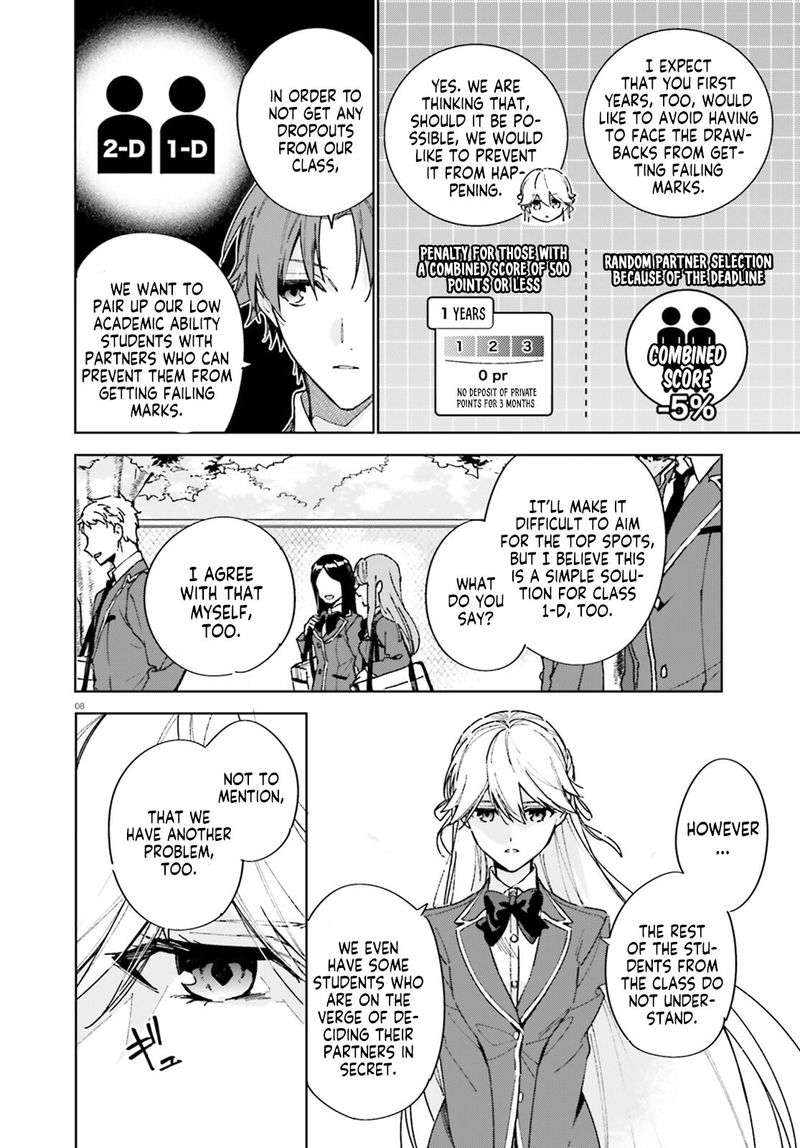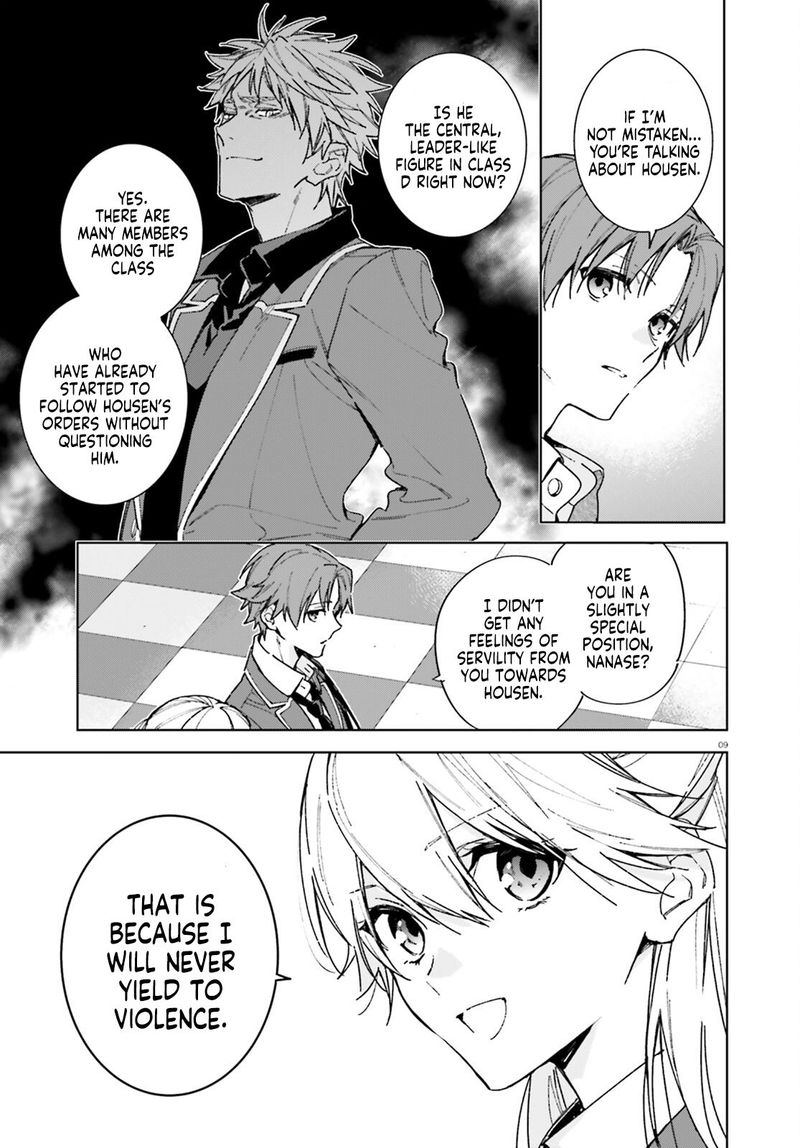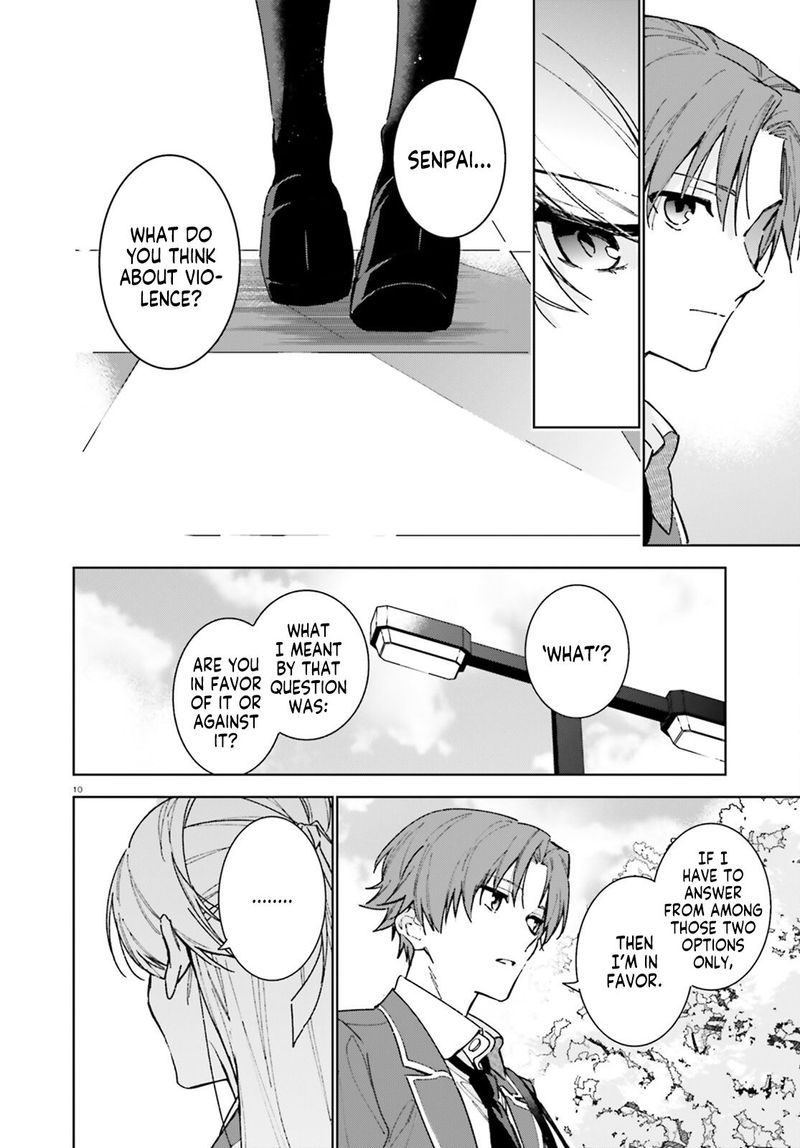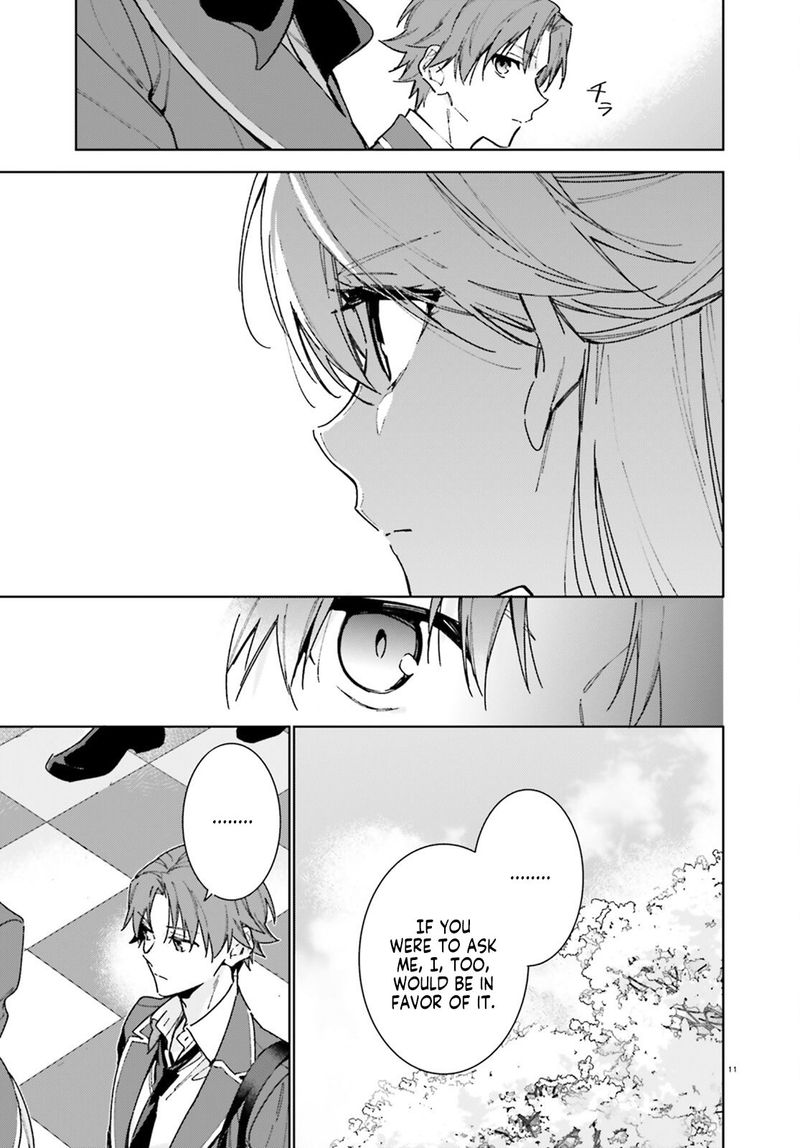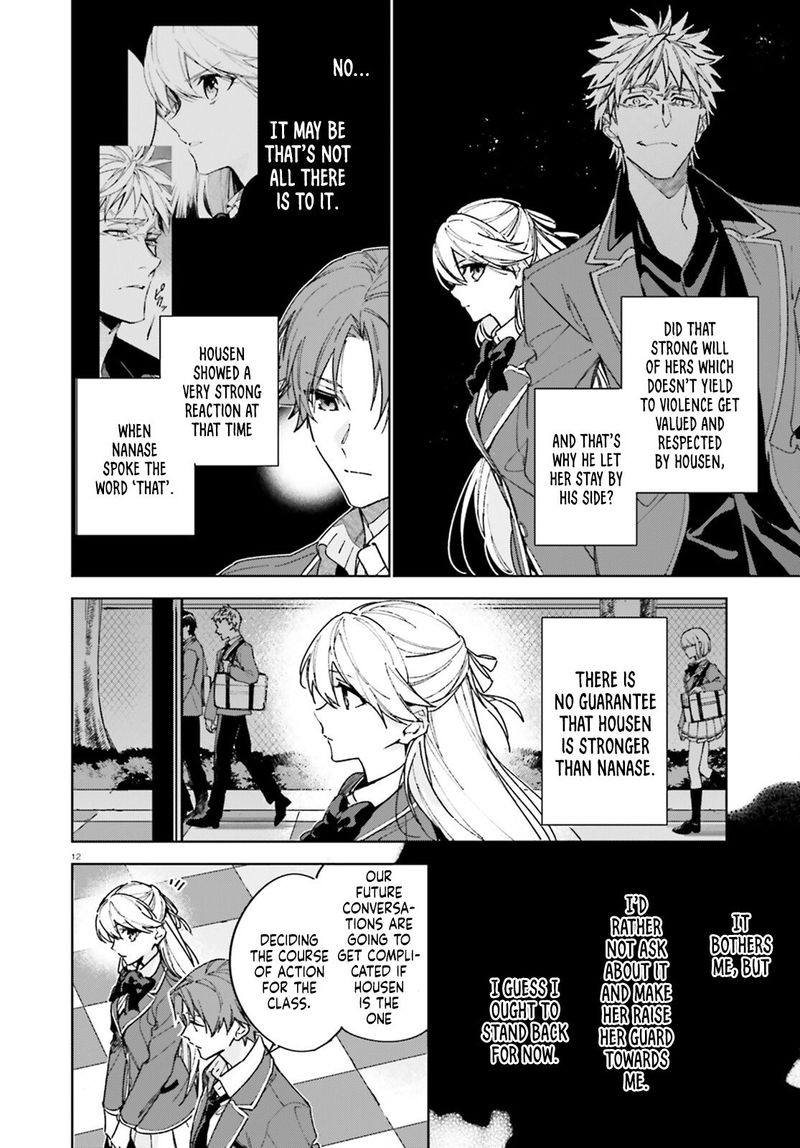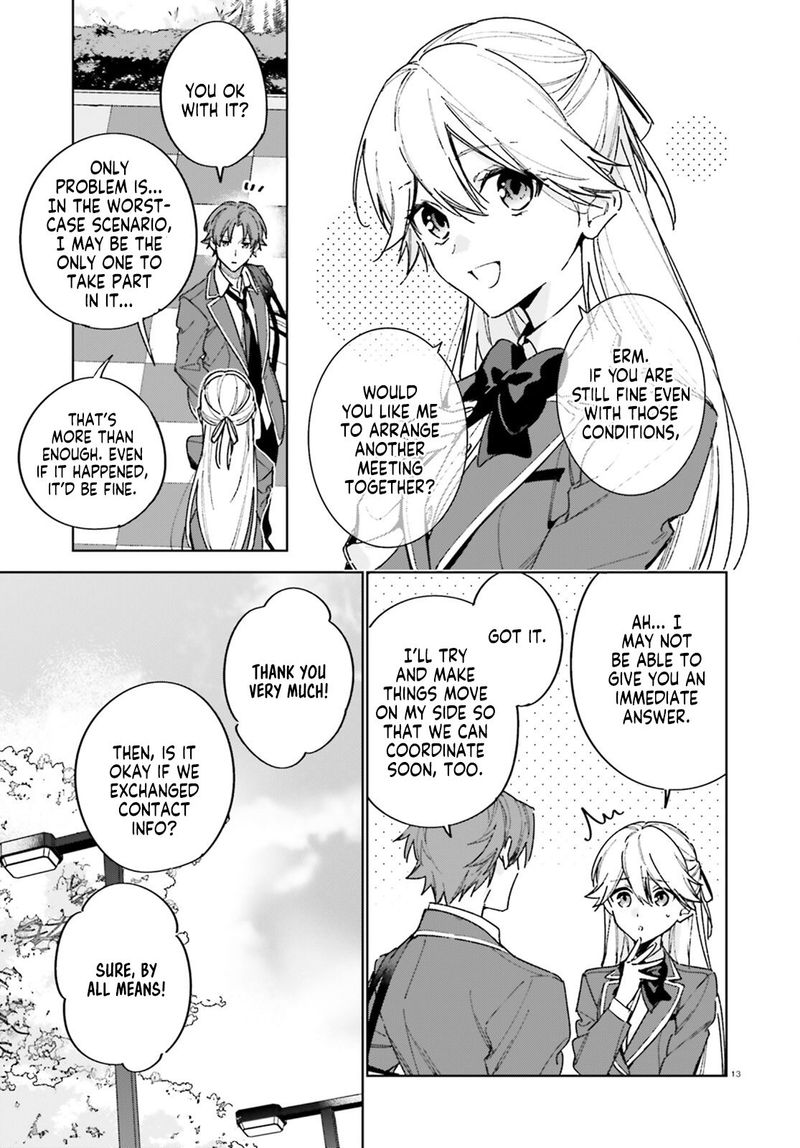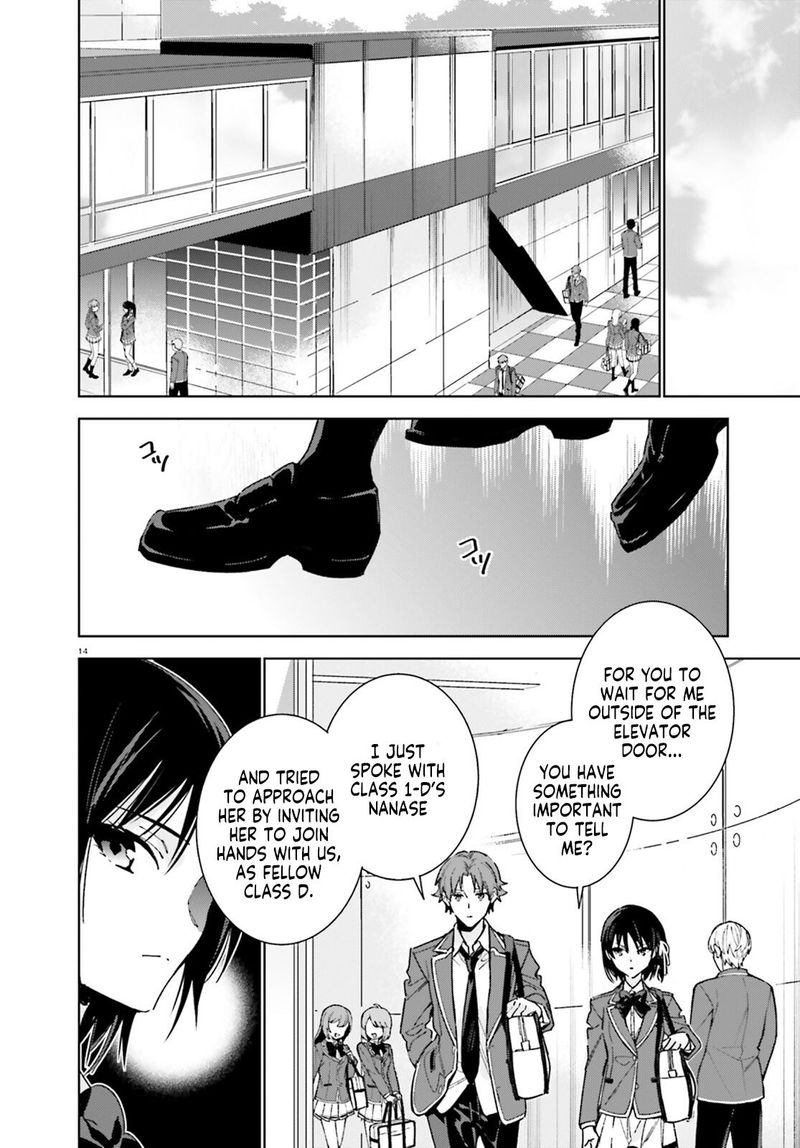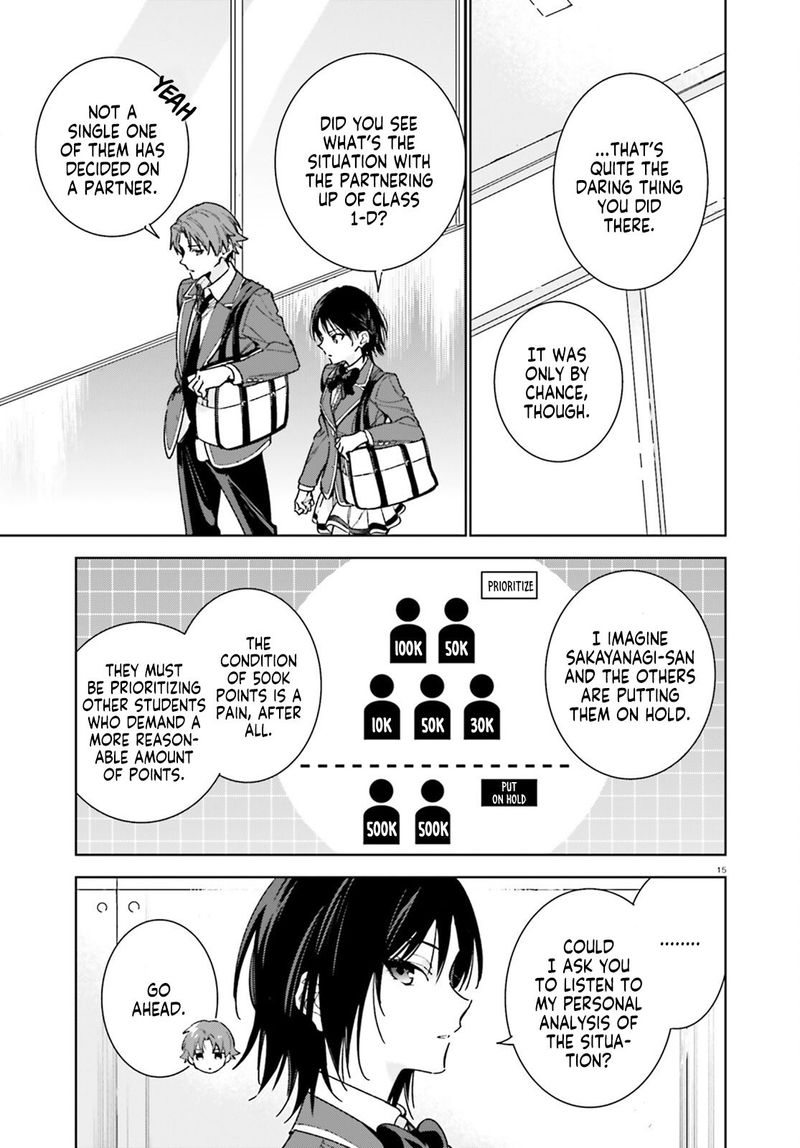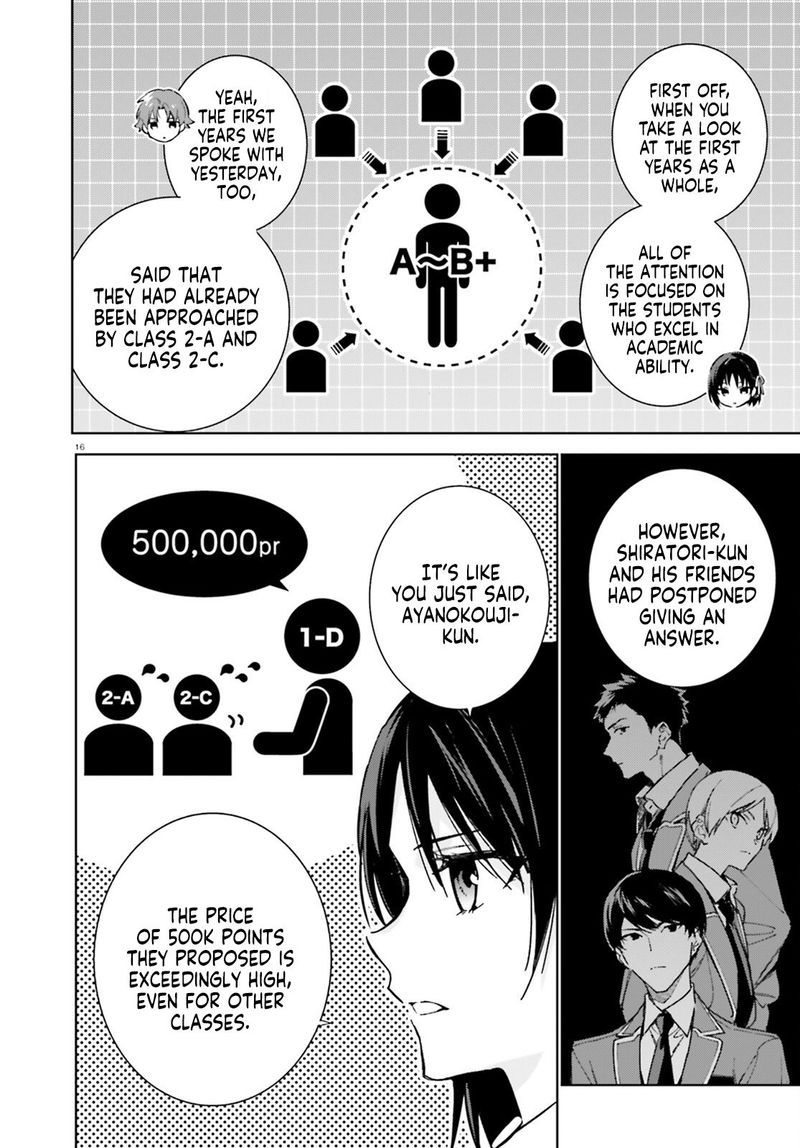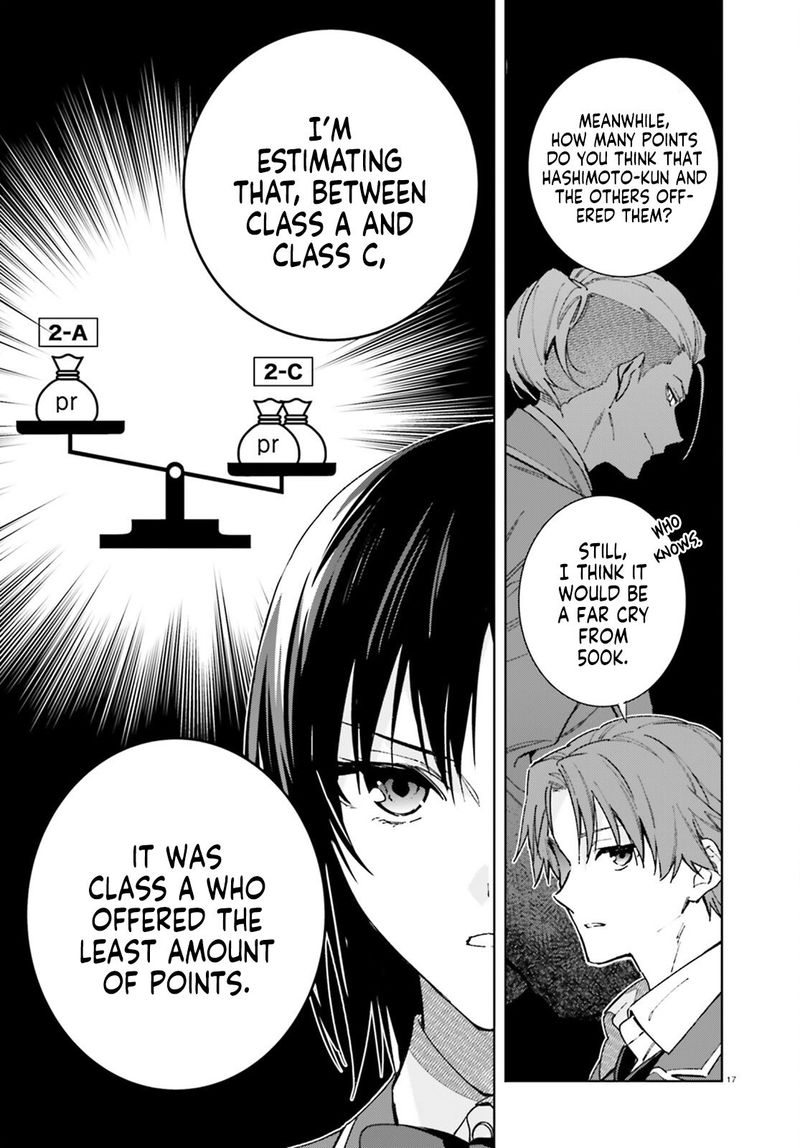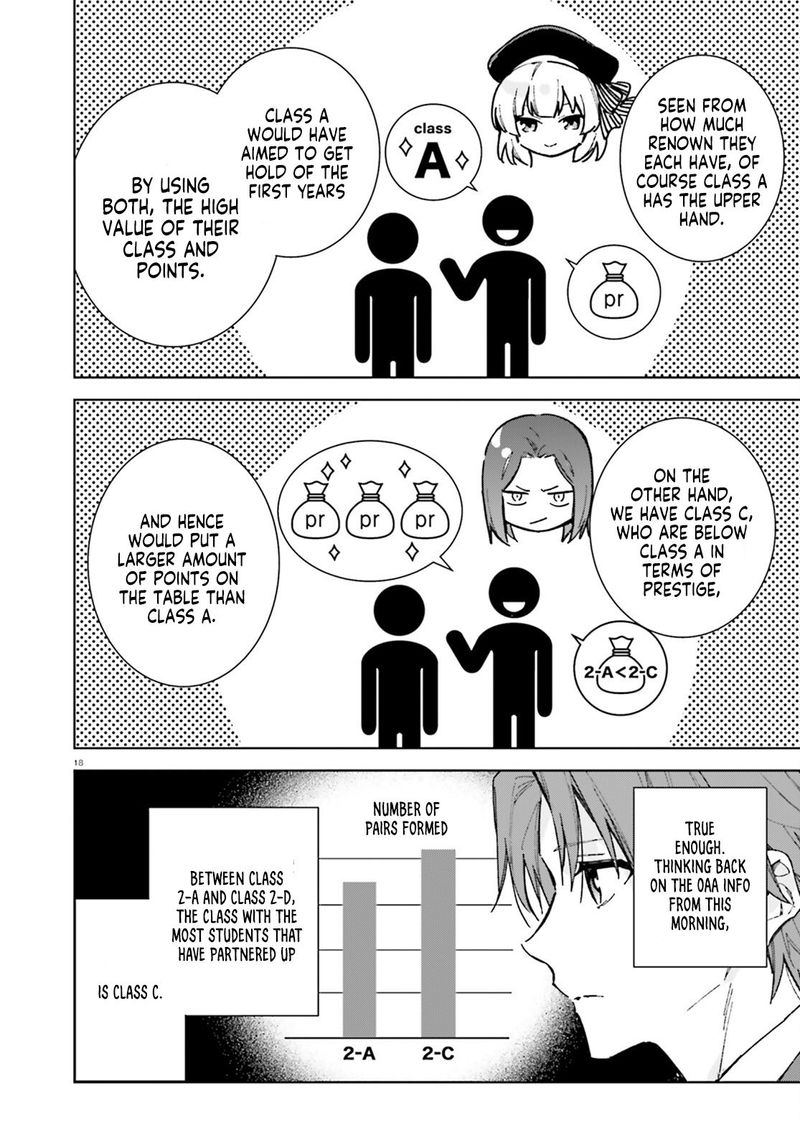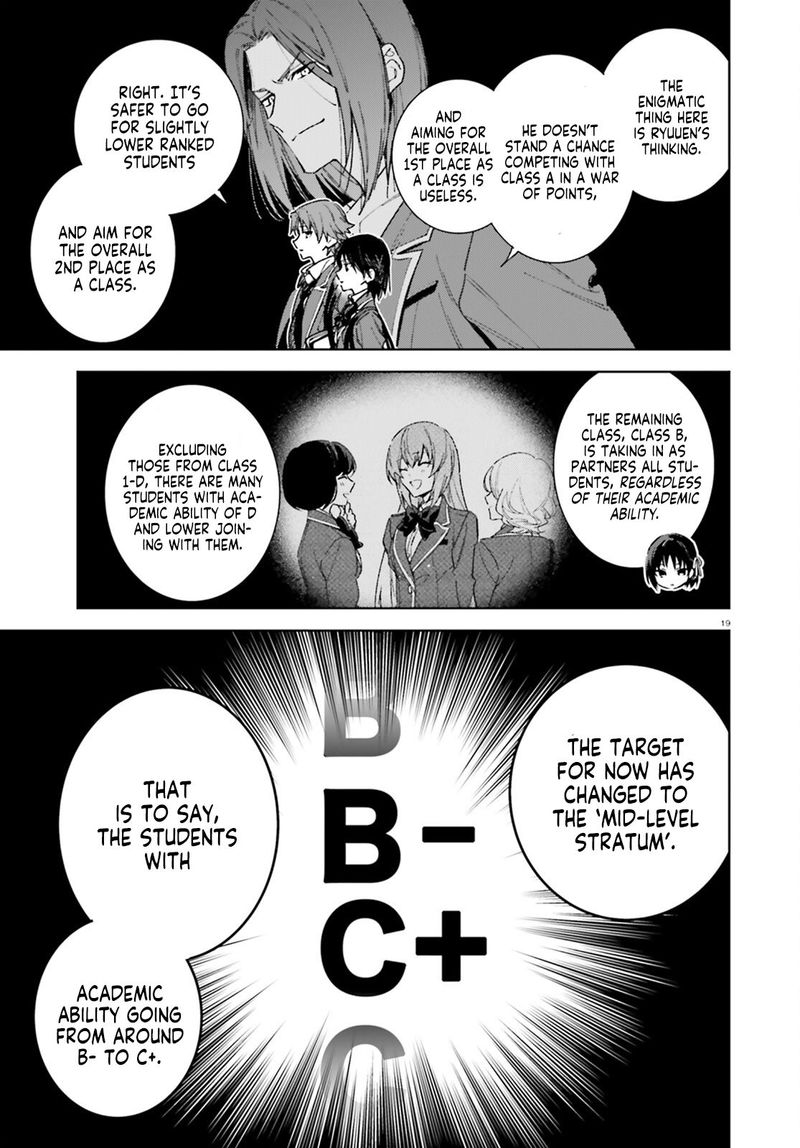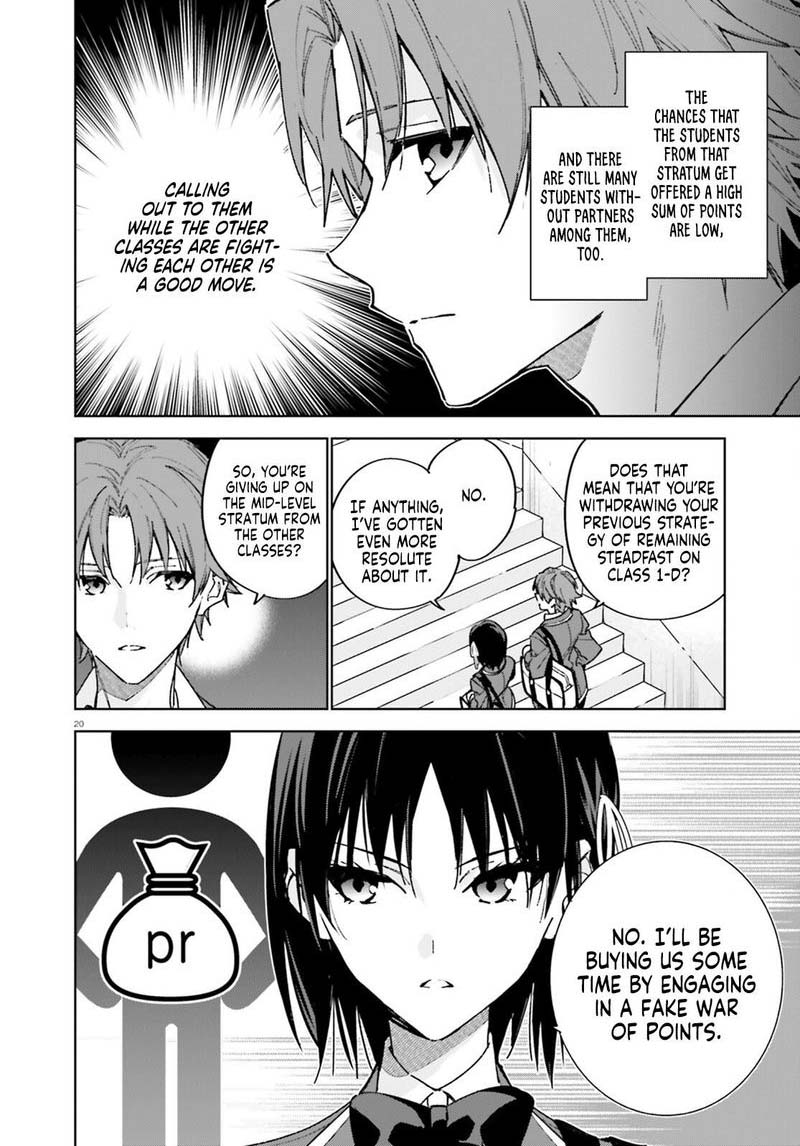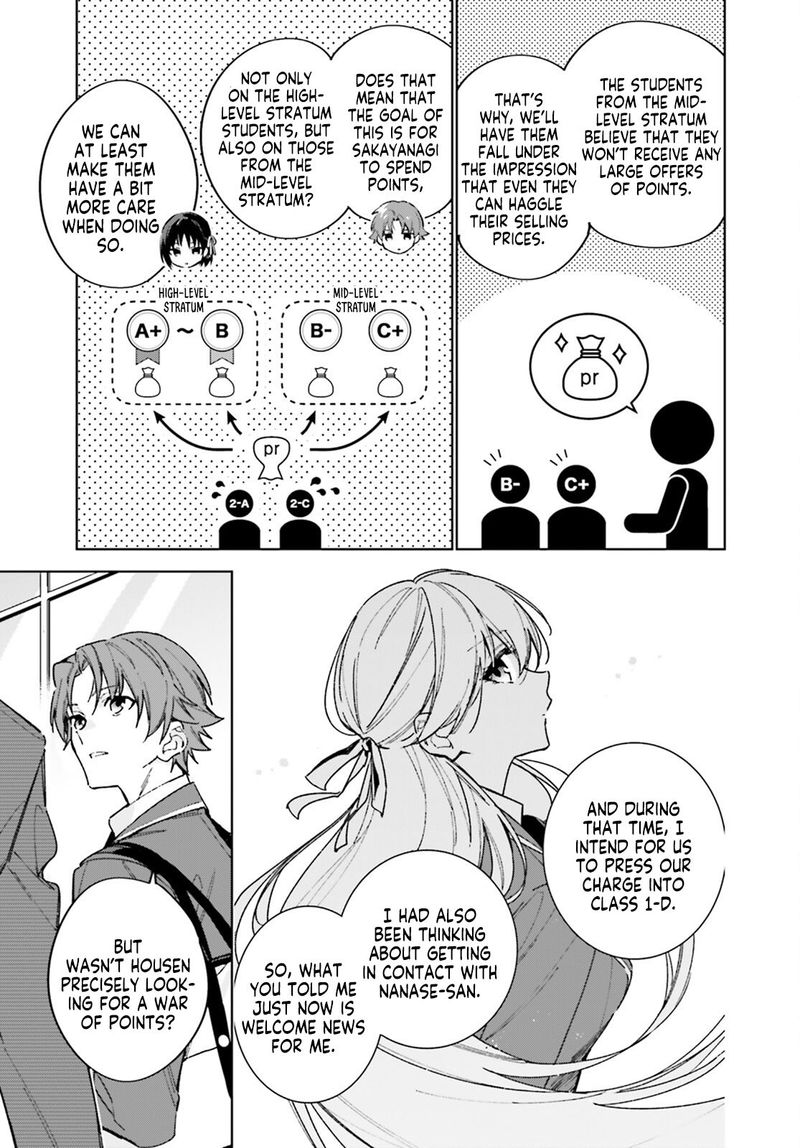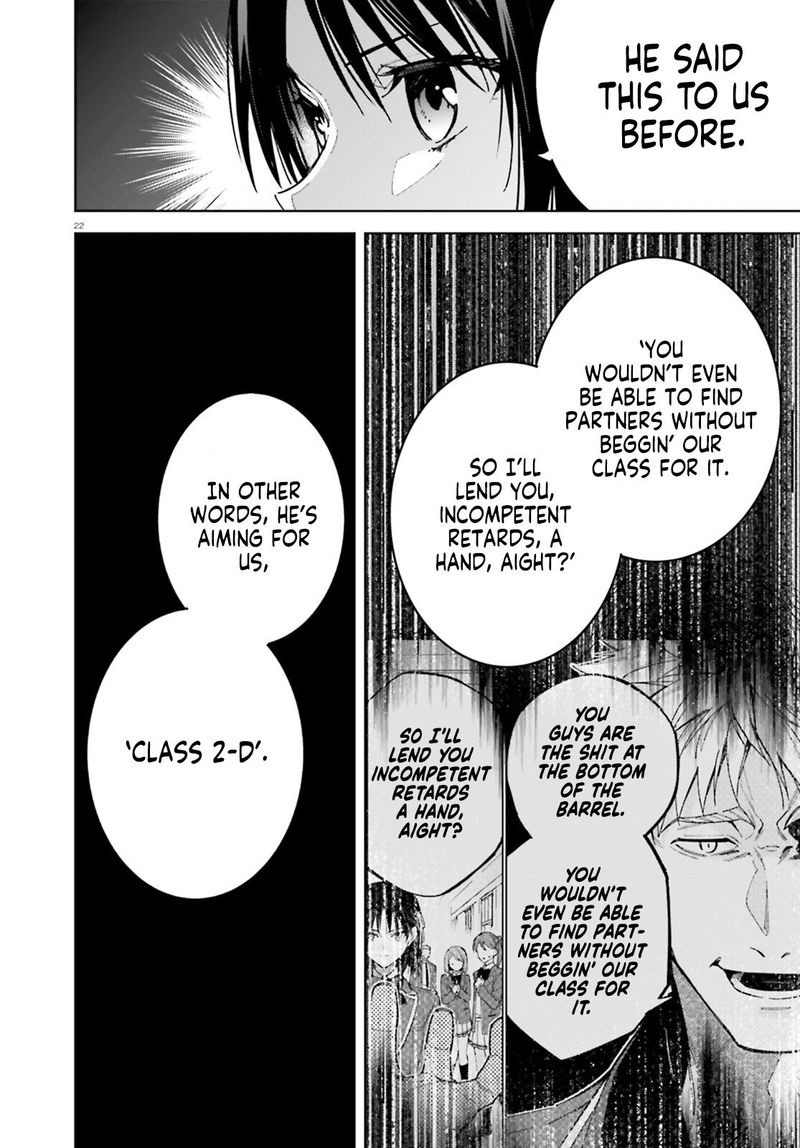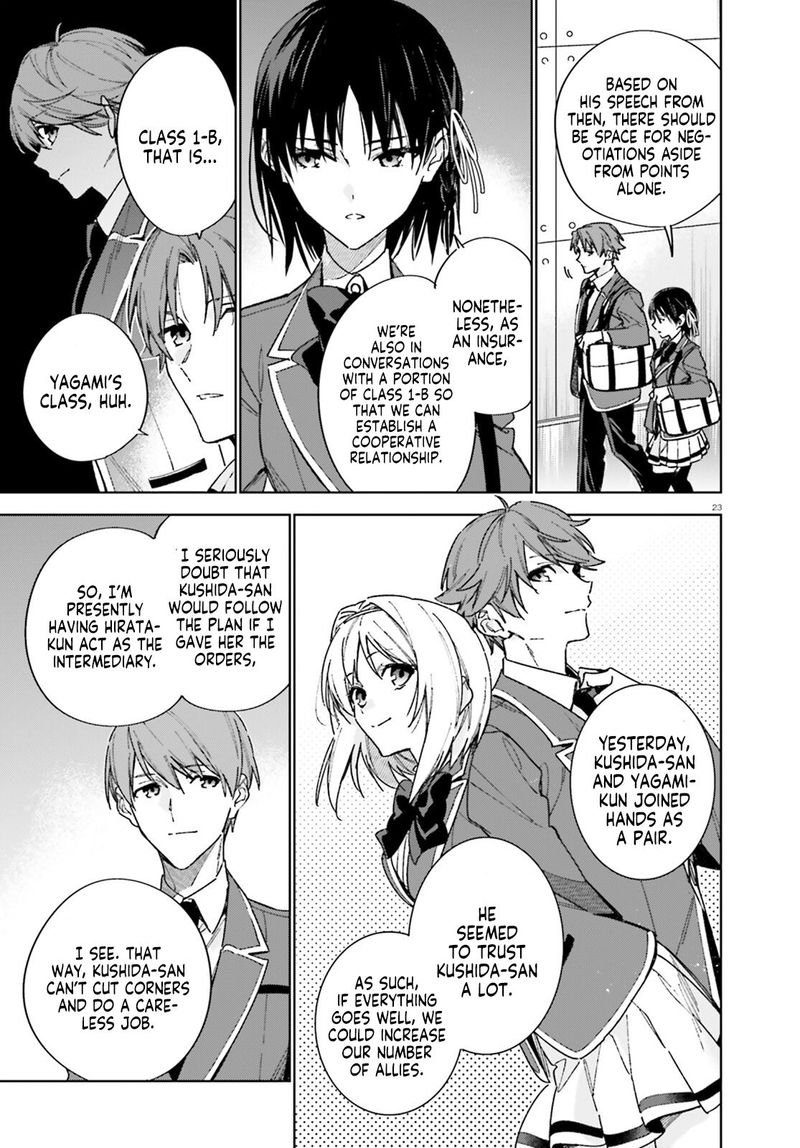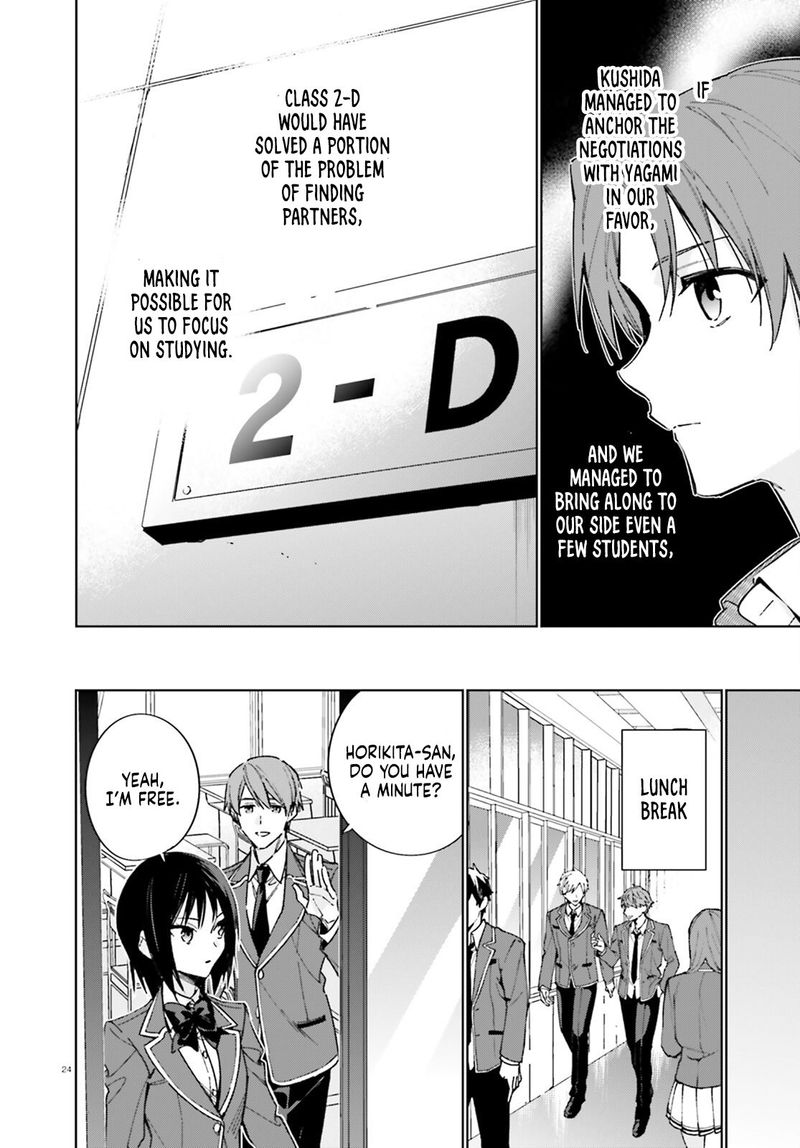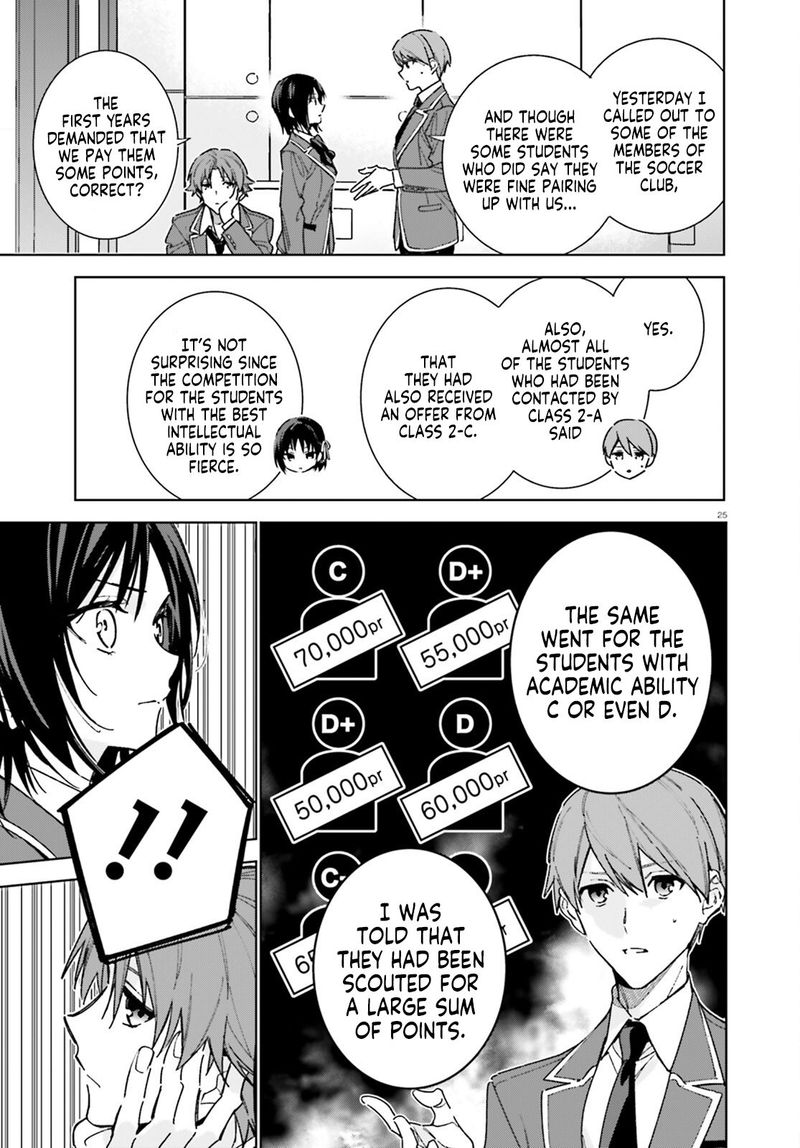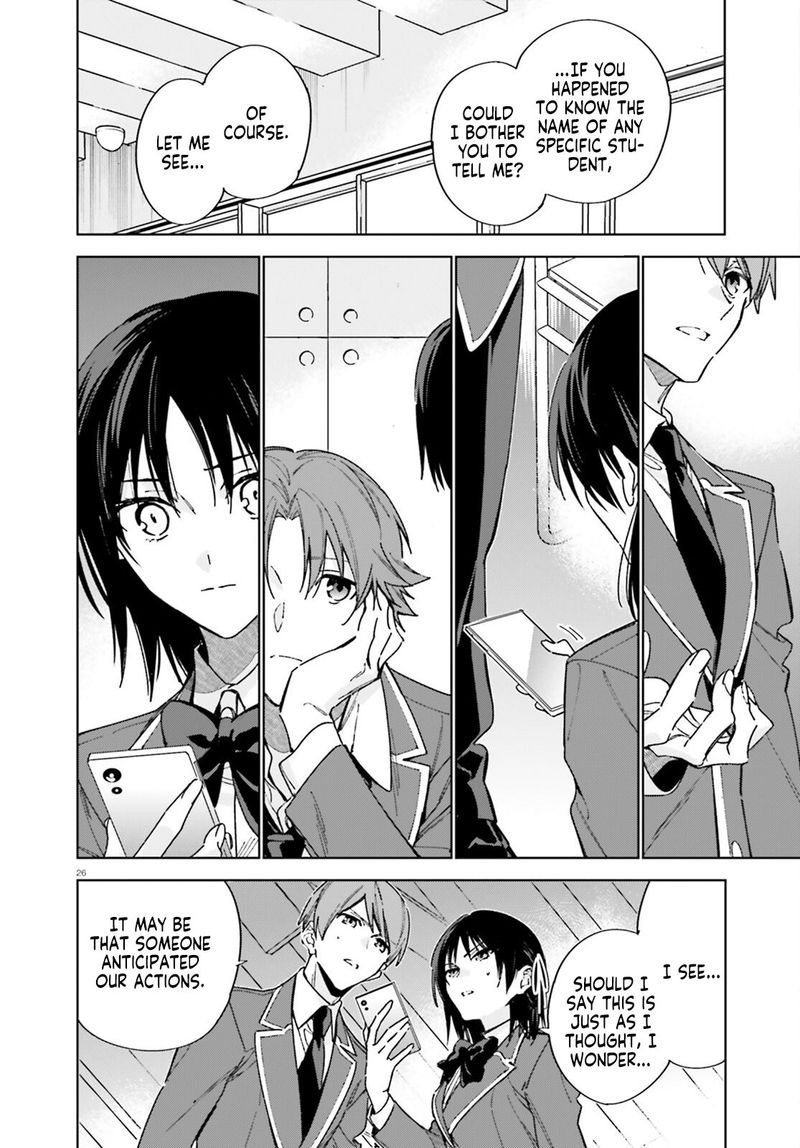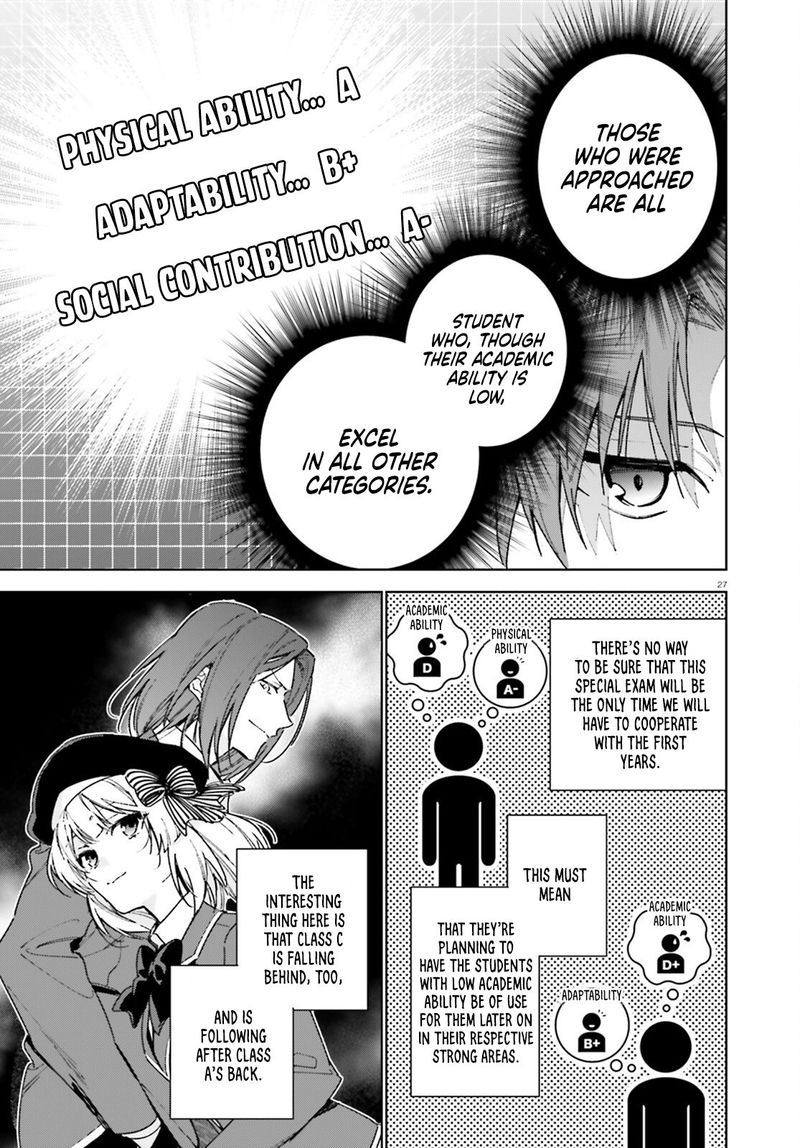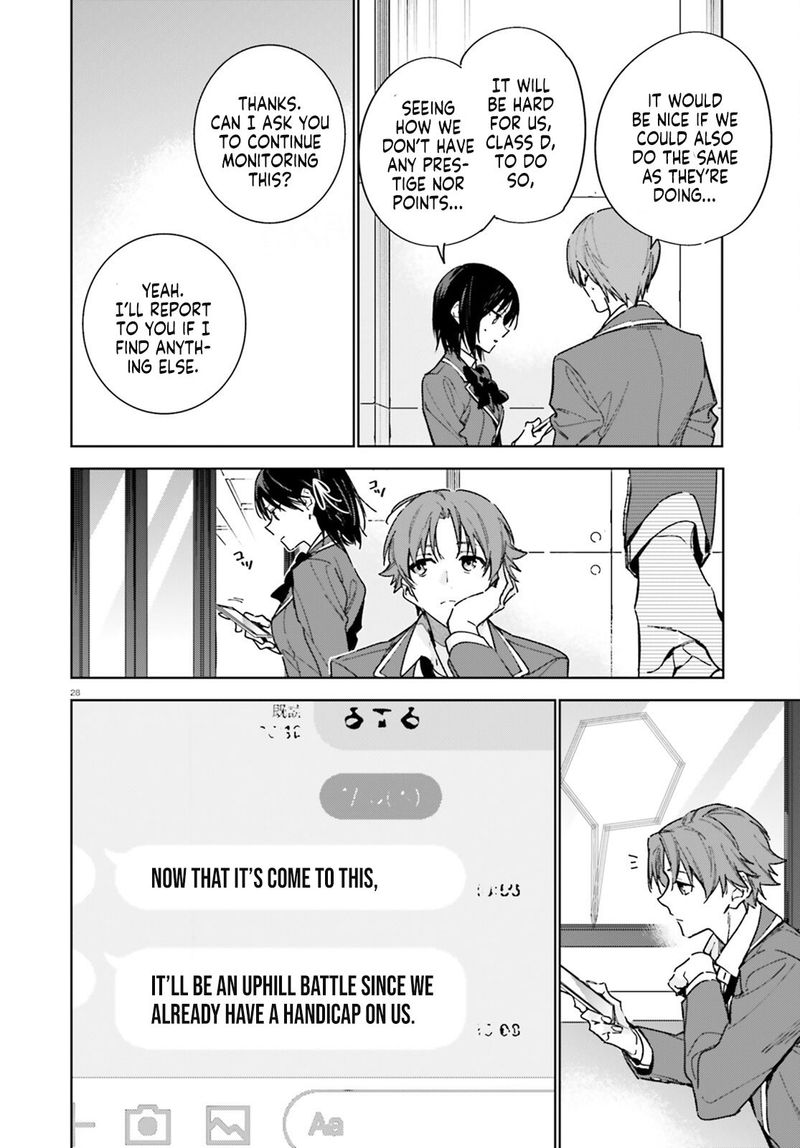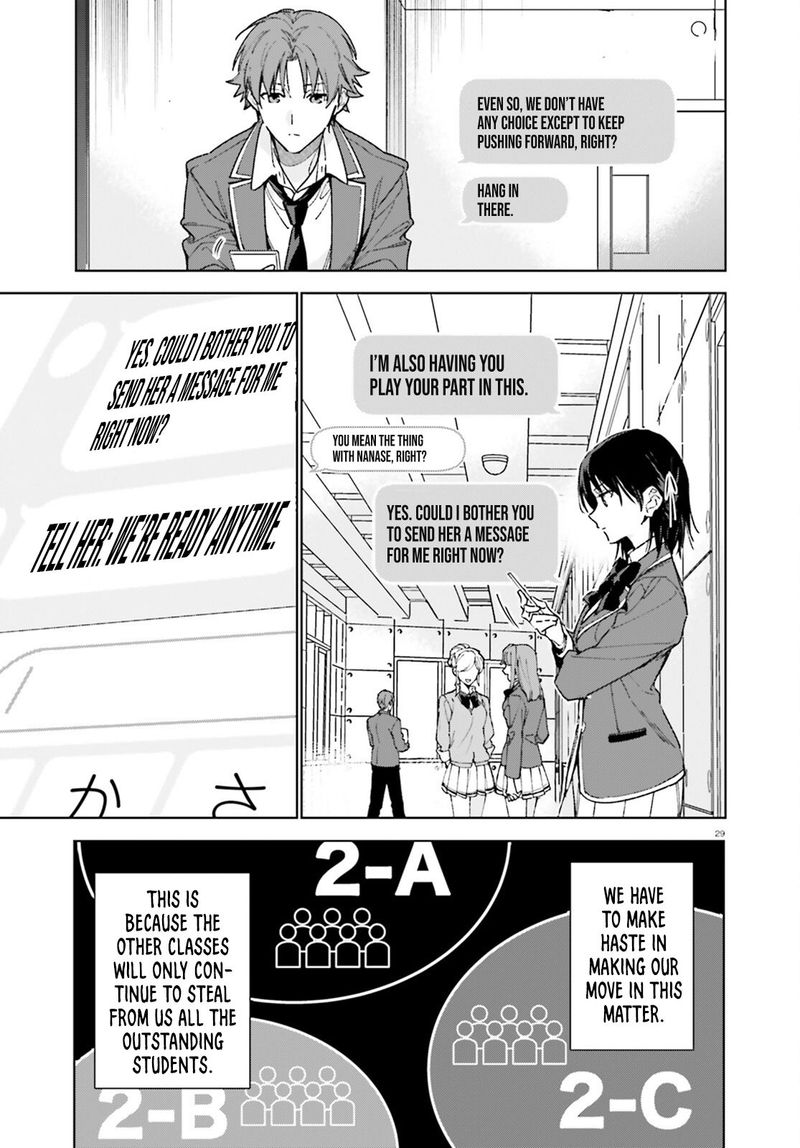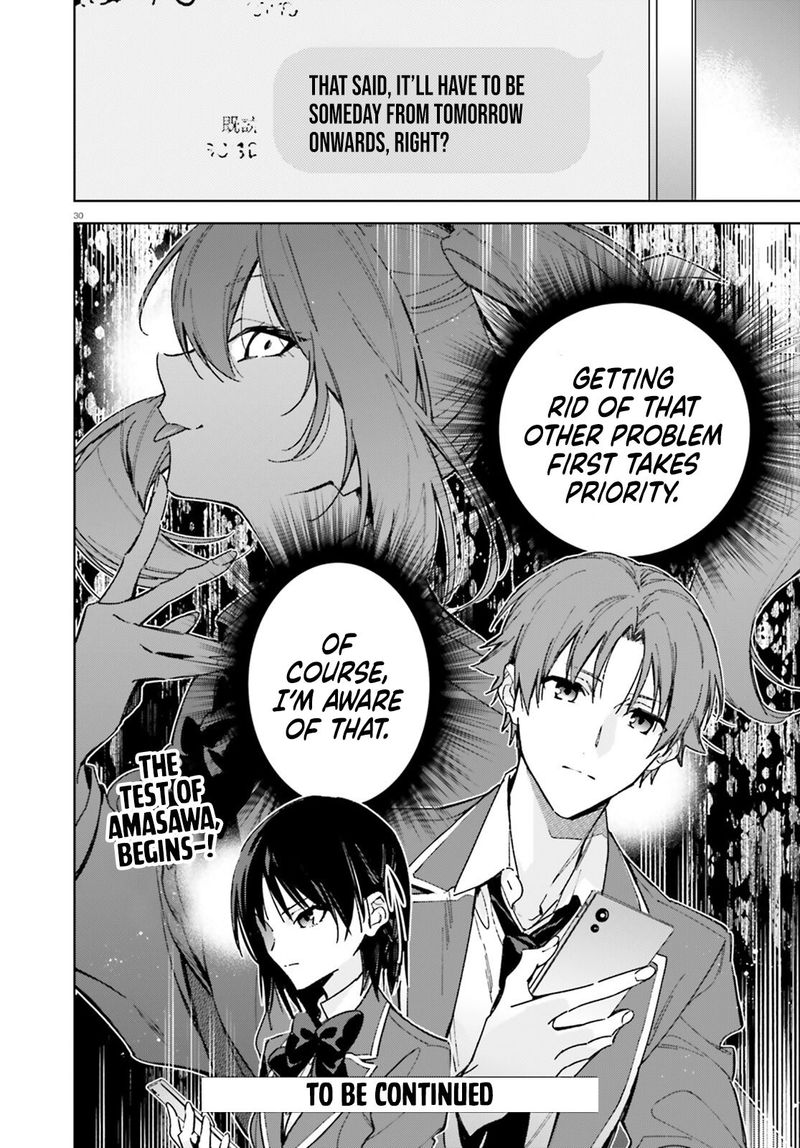




Chapter 13 Summary
The early morning light filtered through the high windows of the school’s main atrium, casting long, thin bars across the polished floor. A faint hum of conversation drifted from the corridors, the low murmur of students already gathering for the day’s first assembly. In the midst of it all, the members of Class D moved with a purpose that belied their usual reputation for indifference. The school festival was only a week away, and the pressure to prove themselves—both to the faculty and to the other classes—had turned the usually relaxed atmosphere into a battlefield of ideas and hidden motives.
Kiyotaka Ayanokoji stood near the far wall, his posture relaxed, eyes half-closed as if he were merely observing the flow of the crowd. To anyone else, he might have seemed detached, but those who knew him understood that his mind was always ticking, cataloguing every detail, every nuance. He watched as Suzune Horikita approached, her steps measured, the faint clack of her shoes echoing against the marble. She carried a folder thick with notes, the edges of the paper slightly frayed from constant handling.
“Morning, Ayanokoji,” Horikita said, her voice low but firm. “We need to finalize the schedule for the festival’s main events. The committee is expecting a proposal by tomorrow.”
Ayanokoji opened his eyes, a faint smile playing at the corner of his mouth. “I thought you’d say that,” he replied, his tone casual. “I’ve already drafted a few options. I’ll hand them over after the assembly.”
Horikita’s eyes narrowed, not in suspicion but in the sharp focus that defined her. “Good. I’ll review them. We can’t afford any missteps. The other classes are already gearing up with elaborate plans. We need something that stands out, something that shows Class D can be more than just… the background.”
He nodded, his gaze drifting to the far side of the room where Kei Karuizawa was laughing with a group of students, her bright smile lighting up the space. She seemed oblivious to the strategic undercurrents swirling around her, her energy a stark contrast to the calculated tension that hung over the rest of the class. Yet Ayanokoji knew that Kei’s enthusiasm could be a powerful tool if wielded correctly.
“Kei,” he called, his voice cutting through the chatter. “Come here for a moment.”
She turned, her eyes sparkling with curiosity. “What’s up, Kiyotaka?”
He handed her a small, neatly folded piece of paper. “I need you to talk to Ryuuji Kanzaki. He’s been quiet lately, but I think he’s got something he wants to say. Get him to the rooftop after school. Tell him I’ll be waiting.”
Kei’s eyebrows rose, but she didn’t question further. “Got it. I’ll let him know.”
She slipped away, her steps light, as Horikita turned back to Ayanokoji, her expression a mixture of anticipation and wariness. “You’re playing a dangerous game, Ayanokoji. You know the committee’s eyes are on us. If we mess up, we’ll be the laughingstock for the rest of the year.”
Ayanokoji’s smile widened just a fraction. “That’s why I’m careful.”
The assembly began, the principal’s voice booming across the atrium, announcing the upcoming festival and the expectations for each class. The crowd’s applause faded into a low murmur as the students dispersed, each returning to their own corners to plot, plan, and prepare.
Later that afternoon, the rooftop of the school’s main building was bathed in the golden hue of the setting sun. The wind tugged at the edges of the flagpole, and the distant sounds of the campus below seemed muted, as if the world had narrowed to this solitary platform. Ryuuji Kanzaki stood near the railing, his posture rigid, eyes fixed on the horizon. He was a quiet presence, his demeanor often misread as aloofness, but beneath that lay a mind constantly analyzing, always calculating.
Kei approached, her steps soft on the metal grating. “Ryuuji, Kiyotaka asked me to bring you up here. He said he wants to talk.”
Kanzaki turned, his expression unreadable. “What does he want?”
Kei hesitated, then spoke with a confidence that surprised even herself. “He wants to know if you’re willing to help Class D win the festival. He says there’s a… test of loyalty. Something about a secret alliance.”
Kanzaki’s eyes narrowed, a flicker of curiosity breaking through his stoic mask. “A test of loyalty? That sounds like a trap.”
“It could be,” Kei admitted. “But if we’re going to stand out, we need to do something bold. Kiyotaka thinks you have the connections to pull some strings with the faculty. He wants you to use them.”
Kanzaki stared at the distant rooftops, his mind racing. He had always kept his distance from the politics of the school, preferring to focus on his studies. Yet the idea of a secret alliance, a chance to shift the balance of power, tugged at a part of him he rarely acknowledged.
“Tell him I’ll consider it,” he finally said, his voice low. “But I need to know what’s at stake.”
Kei smiled, relief evident in her eyes. “He’ll explain everything. He’s waiting for you in the library after school. He said it’s… important.”
Kanzaki nodded, his gaze returning to the horizon. “Fine. I’ll be there.”
The next day, the library was a hushed sanctuary of rows upon rows of books, the scent of paper and ink thick in the air. The large windows let in streams of sunlight that danced across the polished wooden tables. Ayanokoji sat at a table near the back, his notebook open, a pen poised between his fingers. He seemed lost in thought, but his eyes flicked up as Kanzaki entered, his presence commanding the space.
“Kanzaki,” Ayanokoji greeted, his tone neutral. “Thank you for coming.”
Kanzaki took a seat opposite him, his posture still rigid. “You said you have a test of loyalty. What does that mean?”
Ayanokoji leaned back, his gaze steady. “Class D has been underestimated for too long. The other classes have resources, connections, and a reputation that precedes them. We have none of that. But we have something else—determination, and a willingness to act when others hesitate.”
He tapped the notebook lightly. “I propose a secret alliance. Not with the other classes, but with a few faculty members who are dissatisfied with the current festival planning committee. They want to see a fresh perspective, something that breaks the monotony. If we can secure their support, we can gain access to better venues, more funding, and perhaps even influence the judging criteria.”
Kanzaki’s eyebrows rose. “You’re asking me to betray the committee?”
Ayanokoji’s expression remained unchanged. “Not betray—redirect. The committee’s decisions are not set in stone. If we present a compelling case, they may be willing to adjust. It’s a test of loyalty to Class D, not to the institution.”
Kanzaki considered this, his mind weighing the potential repercussions. “And what’s in it for me?”
Ayanokoji’s smile was faint, almost imperceptible. “You gain influence. You become a key player in the festival’s success. You also gain the trust of those faculty members who are looking for change. It’s an opportunity to shape the environment you’re part of.”
Kanzaki stared at the notebook, then at Ayanokoji’s calm demeanor. “What about Horikita? She’s already pushing for a schedule. Does she know about this?”
Ayanokoji shook his head. “She’ll find out soon enough. She’s a strategic mind; she’ll understand the necessity of this move once she sees the results. For now, we need to keep this quiet.”
Kanzaki exhaled slowly. “Alright. I’ll talk to the faculty members you mentioned. But I need a list.”
Ayanokoji slid a thin sheet of paper across the table. “Here. These are the teachers who have expressed concerns about the festival’s direction. Approach them discreetly. Offer them a chance to be part of something new. If they agree, we’ll have the leverage we need.”
Kanzaki took the paper, his fingers brushing the ink. “And if they refuse?”
Ayanokoji’s eyes narrowed just a fraction. “Then we find another way. The test of loyalty isn’t about a single success; it’s about perseverance. We’ll keep trying until we have the support we need.”
The two men sat in silence for a moment, the weight of their conversation hanging in the air. Outside, the school’s bell rang, signaling the end of the period. Students began to filter out of the library, their chatter filling the corridors once more.
Later that evening, the rooftop was once again the meeting place for the secret alliance. Kei, Horikita, and Ayanokoji gathered, the night sky a deep indigo canvas dotted with stars. The wind was cooler now, rustling the edges of their jackets.
Horikita arrived, her expression serious. “You called this meeting for a reason. What’s the plan?”
Ayanokoji glanced at Kei, then at Horikita. “We have a two-pronged approach. First, Kanzaki will secure the support of the faculty members who are dissatisfied with the current festival planning. Second, we’ll present a revised schedule that incorporates elements from the other classes’ proposals, but with a twist that only Class D can execute.”
Horikita raised an eyebrow. “A twist?”
Ayanokoji spread the notebook on the rooftop’s low table, revealing a series of sketches and notes. “We’ll create an interactive experience that blends technology and tradition. A live simulation of the school’s history, using augmented reality. Students will walk through the campus, their phones projecting scenes from the past onto the present. It’s immersive, educational, and, most importantly, it showcases our class’s ingenuity.”
Horikita’s eyes widened slightly. “That’s ambitious. Do we have the resources?”
Kei chimed in, her voice bright. “I’ve already spoken to the tech club. They’re willing to help with the AR development, as long as we give them credit. And I’ve arranged for a small budget from the faculty members Kanzaki is meeting with. They’re excited about the idea of a fresh, tech-driven festival attraction.”
Horikita nodded, her mind already racing through the logistics. “We’ll need to coordinate with the IT department, secure the necessary permissions, and ensure the AR content is historically accurate. We can’t afford any missteps.”
Ayanokoji’s gaze lingered on Horikita, a faint respect evident in his eyes. “You’re good at this, Horikita. Your analytical mind will keep us on track. I’ll handle the negotiations with the faculty. Kanzaki, you’ll be our liaison. Kei, you’ll manage the tech club and keep the morale high. I’ll oversee the overall execution.”
Kanzaki, who had arrived quietly, stepped forward. “I’ll make sure the faculty members understand the benefits. If they see the potential for a successful festival, they’ll back us.”
Kei clapped her hands together, excitement bubbling over. “This is going to be amazing! I can’t wait to see everyone’s faces when they walk through the past.”
The night deepened, and the rooftop became a hub of whispered plans and quiet determination. The secret alliance, though fragile, began to take shape. Each member understood the stakes: a test of loyalty not just to their class, but to themselves, to the ideals they held, and to the future they wanted to carve out of the rigid hierarchy of the school.
The following days were a whirlwind of activity. Kanzaki met with the faculty members Ayanokoji had identified—Mr. Saito, the history teacher with a penchant for storytelling; Ms. Tanaka, the computer science instructor who loved experimental projects; and Mr. Fujimoto, the art teacher who believed in blending tradition with modernity. Each conversation was a delicate dance, a negotiation of promises and expectations.
Kanzaki’s calm demeanor and persuasive arguments won over the teachers. He highlighted how the AR experience would not only attract more visitors but also serve as an educational tool, aligning with the school’s mission to foster well-rounded individuals. The teachers, intrigued by the prospect of leaving a lasting impact, agreed to allocate a modest budget and provide access to the necessary equipment.
Meanwhile, Horikita worked tirelessly on the schedule. She dissected the proposals from Classes A, B, and C, extracting the most compelling elements—cultural performances, food stalls, interactive games—and restructured them into a cohesive timeline. Her analytical mind ensured that each segment flowed seamlessly, leaving no gaps that could be exploited by rival classes.
Kei coordinated with the tech club, her enthusiasm infectious. The club’s leader, a shy but brilliant student named Haru, presented a prototype of the AR interface. With a flick of his wrist, a holographic image of the school’s original building materialized on the screen, overlaying the modern structure. The students gasped, their eyes wide with wonder.
“This is just the beginning,” Haru whispered, his voice trembling with excitement. “We can add scenes from the founding ceremony, the first graduation, even the old sports day. It’ll be like walking through a living museum.”
Kei nodded, her mind already racing ahead. “We’ll need to script each scene carefully. The narrative has to be engaging, but also accurate. Horikita, can you help us with the historical details?”
Horikita smiled, a rare softness in her expression. “I have a list of key events. We’ll cross-reference them with the school archives. It’ll take time, but we can do it.”
Ayanokoji, ever the orchestrator, kept a watchful eye on the progress. He visited the faculty members regularly, reinforcing the importance of their support and ensuring that the budget allocations were processed without delay. He also kept an ear to the ground, listening for any rumors of sabotage from rival classes.
One afternoon, as the sun dipped low, casting a golden glow over the courtyard, a sudden commotion erupted near the entrance of the school. A group of students from Class B, known for their flamboyant displays, were setting up a massive stage for a musical performance. Their leader, a charismatic boy named Takumi, shouted orders, his voice booming across the courtyard.
“Make sure the lights are synced! We need the fireworks to go off right when the chorus hits!” he barked, his eyes scanning the crowd.
Horikita, passing by, felt a pang of irritation. The stage occupied a prime spot that her schedule had earmarked for a cultural exhibition. She approached Ayanokoji, who was observing the scene from a distance.
“Did they get approval for this?” she asked, her tone edged with concern.
Ayanokoji glanced at the bustling activity, his expression unreadable. “They have. The committee granted them the space. It’s part of the festival’s diversity.”
Horikita clenched her fists. “We can’t have the stage there. It blocks the flow of our AR experience. We need that area cleared.”
Ayanokoji’s eyes met hers, a flicker of calculation passing through them. “We could propose a compromise. Perhaps we can integrate a segment of our AR experience onto their stage. It would add a unique element to their performance, and we’d retain the space we need.”
Horikita considered this, her analytical mind weighing the pros and cons. “If we can make it work, it could be a win-win. But we need to act quickly.”
Ayanokoji nodded. “I’ll talk to Takumi. He’s not unreasonable. He’ll see the benefit of adding a tech element to his show.”
Later that evening, Ayanokoji found Takumi near the stage, adjusting the sound system. The boy’s grin was infectious, his confidence radiating.
“Hey, Takumi,” Ayanokoji began, his tone casual. “I heard about your performance. It looks impressive.”
Takumi turned, his eyes bright. “Thanks! We’re going all out this year. Want to see the rehearsal?”
Ayanokoji smiled. “Actually, I have a proposal. Class D is developing an AR experience that showcases the school’s history. It’s interactive, immersive, and could be projected onto your stage during a segment of your performance. It would add a unique twist and draw more attention to your act.”
Takumi raised an eyebrow, intrigued. “AR on the stage? That sounds cool. How would it work?”
Ayanokoji explained the concept, describing how the AR could overlay historical scenes onto the stage backdrop, synchronized with the music. Takumi’s eyes lit up.
“That’s insane! The audience would love it. And it’d give us a fresh angle.” He clapped his hands. “Alright, let’s do it. I’ll talk to the committee and see if we can allocate some time for your segment.”
Ayanokoji’s smile widened ever so slightly. “Excellent. I’ll coordinate with Horikita and the tech club to ensure everything runs smoothly.”
The collaboration was set in motion. The committee, eager to showcase innovative ideas, approved the integration. The stage would host a brief AR interlude during the musical performance, allowing Class D to demonstrate their technology to a larger audience.
As the days passed, the secret alliance grew stronger. The AR experience took shape, each scene meticulously crafted. The tech club worked late into the night, their screens glowing with holographic images of the school’s past. Haru, the club’s leader, became a quiet hero, his shy demeanor replaced by a fierce determination to bring the project to life.
Kei kept the morale high, organizing small gatherings where the team could unwind, share jokes, and remind each other of the larger goal. Her laughter echoed through the empty library after hours, a bright counterpoint to the tension that lingered in the corners.
Kanzaki, meanwhile, maintained his liaison role with the faculty. He met with Mr. Saito in his office, the walls lined with books on Japanese history. The teacher’s eyes sparkled as Kanzaki presented a storyboard of the AR scenes.
“This will bring the past to life for the students,” Kanzian said, his voice low. “It’s more than entertainment; it
